I have a bit of an interesting history with Dragon Ball, one that differs from most fans in the United States. My first exposure to Dragon Ball was via Viz's Dragon Ball Z manga. In fact, to this day I've never actually seen the anime, at least not in full. Aside from watching 20 or so episodes of the original Dragon Ball anime's English dub when I was very young, all of my attempts to watch the anime have been its original Japanese version with English subtitles. Most fans of the series in the States, at least to my knowledge, were first exposed to Dragon Ball Z via Funimation's various English dubs on Toonami. I'm not here to engage the sub-vs.-dub debates, personally because I don't feel that strongly about the topic and because my preferred mode of consuming Dragon Ball is via a medium that doesn't have any voice acting to begin with: The manga.
I vividly remember reading the first couple volumes of Viz's Dragon Ball Z and being blown away by the late Akira Toriyama's expressive, visceral art, character designs, and the story's world-ending stakes. I had never seen or read anything quite like it, and that part of the story can still give me chills to this day.
Sadly, we will not be discussing the manga today. As I write this, my brother and I have got a Dragon Ball manga-related video in the works, which may or may not already be out by the time you read this article. When that day comes, consider this article a nice bit of supplemental material.
Dragon Ball and Dragon Ball Z adhere very closely to Toriyama's original manga, often recreating individual panels. Aside from filler, differences between the manga and anime are so notable because of how rare they are. The Dragon Ball films, by contrast, serve as the clearest expression of Dragon Ball-original content not directly stemming from the pen of Toriyama. They make for an interesting point of analysis — In analyzing and critiquing them, we'll see how Toriyama's story and characters were interpreted by others, and how these works would in turn influence the original manga.
Of course, all of that is concerning the original run of movies. Nowadays, modern Dragon Ball films are the primary means by which the series advances the continuity of Dragon Ball Super, the most prolific sequel (technically a midquel) to Toriyama's Dragon Ball.
Having mentioned my unorthodox relationship with the series, it hopefully shouldn't come as too much of a shock that my opinions regarding these films may vary wildly from fan consensus. I think my biases for specific concepts, moods, and parts of the story will become more obvious as we work our way through the list.
In this article, I'll be discussing the original Dragon Ball trilogy of films, the 13 Dragon Ball Z films released from 1989 to 1995, the tenth anniversary film released during Dragon Ball GT's run, and the modern stretch of films starting with Battle of Gods. Notable exceptions are the Bardock and Trunks TV specials, the 2008 original video animation Son Goku and Friends Return, and the live-action film Dragonball Evolution. As I hope to have illustrated, the first three examples aren't technically films... And the last one hardly counts as a film in my eyes.
I am going to be looking at the original Japanese versions of these films, but in the interest of clearness and accessibility (and because the Japanese titles are horrible) I'll be using the official English dub titles for the films. I will list English translations of the Japanese titles (when they differ enough from the localized title) beneath the English titles for those that are curious.
Use the buttons below to toggle spoilers for films you haven't seen! Please be advised that if you are reading along via RSS, spoilers will be enabled and you will not be able to toggle them.
Oh, and before I forget, this article contains spoilers for the entirety of the original manga. Don't say I didn't warn you!
21. Dragon Ball Z: Resurrection F (2015)
Is this a hot take? I can never tell with Dragon Ball fans.
In my opinion, concerning the original Dragon Ball, the latter half of the Freeza story arc, that being when Gohan, Kuririn, Vegeta, Piccolo, and later Goku fight Freeza, is Dragon Ball at its most formulaic. I find it interesting that Freeza's return represents another Dragon Ball lowlight: Dragon Ball at its most cynical. As the movie goes on it just becomes increasingly obvious that any semblance of story is merely a vehicle to bring back a marketable villain, show off a flashy new marketable transformation, and have them go at it in a big, dumb, boring, marketable fight.
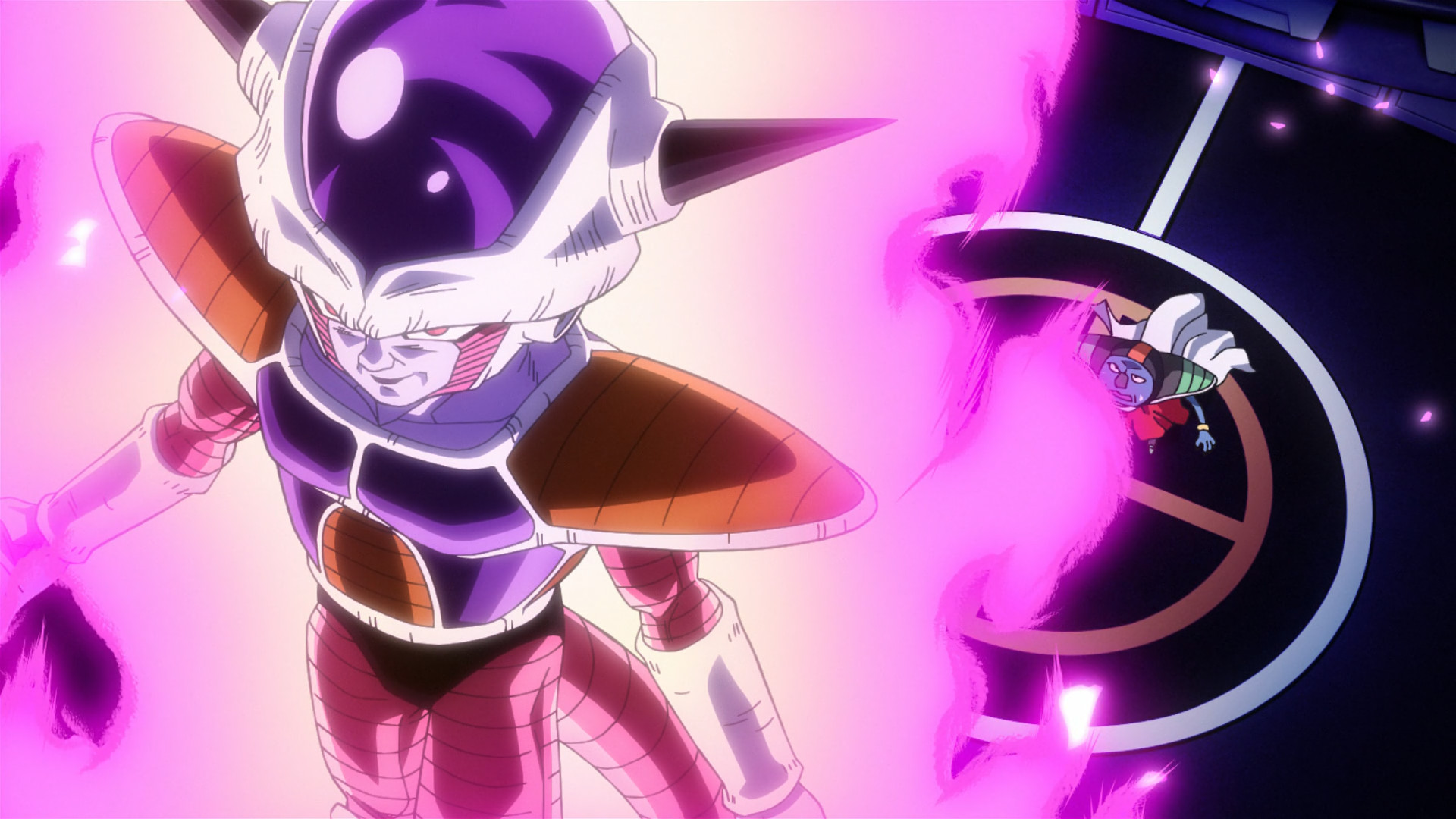
For the record, I have nothing against Freeza as a character. If anything, he's probably the best part of this film. The Japanese voice actor clearly expresses a passion for the role, unlike virtually every other aspect of this film's production, which feels so devoid of creativity that it almost hurts to watch.
As far as genuine positives for this movie go, I find myself scraping the bottom of the barrel. I like the personalized Hell Freeza finds himself stuck in at the beginning of the movie, seeing him be tortured with cute fluffy animals is a funny image and the seething hatred that it induces in him throughout the film is hilarious. I also always enjoy getting to see the Pilaf gang, whom Freeza's forces use to find the Dragon Balls. I do not intend to go into this level of granular detail for every film, but it's necessary in order for me to find any remotely positive things to say.
I find myself disliking this movie for reasons I'm not typically predisposed to caring about. Case in point: the fact that Freeza, who previously got absolutely rag-dolled by Goku's measly Super Saiyan 1 transformation, can close the gap between him and ultra-powerful warriors that can regularly slay gods and bench press planets in just a few months of training is absurd. And believe me, it will become increasingly clear as you read this article that I am not the kind of person that generally cares about power levels or believes that feats inconsistent with power scaling are an affront to God. I'm just bothered by his reasoning — Freeza argues that he never had the need to train because he was just so naturally talented, and that once he did start training, his natural talents allowed him to excel faster than normal. In trying to work around the franchise's issue of power creep, it ends up inadvertently making it even worse. Characters such as Tenshinhan and Kuririn, who at their current level probably could have gone toe-to-toe with Freeza, have been completely outclassed.
Concerning that new shiny marketable transformation, however, the movie gives up any pretense of story. Goku just enters the form with next to no explanation. When Freeza asks him what it is, Goku says that it's "hard to explain." They didn't seem to realize that what made transformations exciting for a lot of people were the circumstances in which they were revealed, such as Goku's rage in response to Kuririn's death, leading to his Super Saiyan transformation. But I think the best example of the way this movie fundamentally misses what makes Dragon Ball exciting (at least for me) is in its terrible, asinine ending.
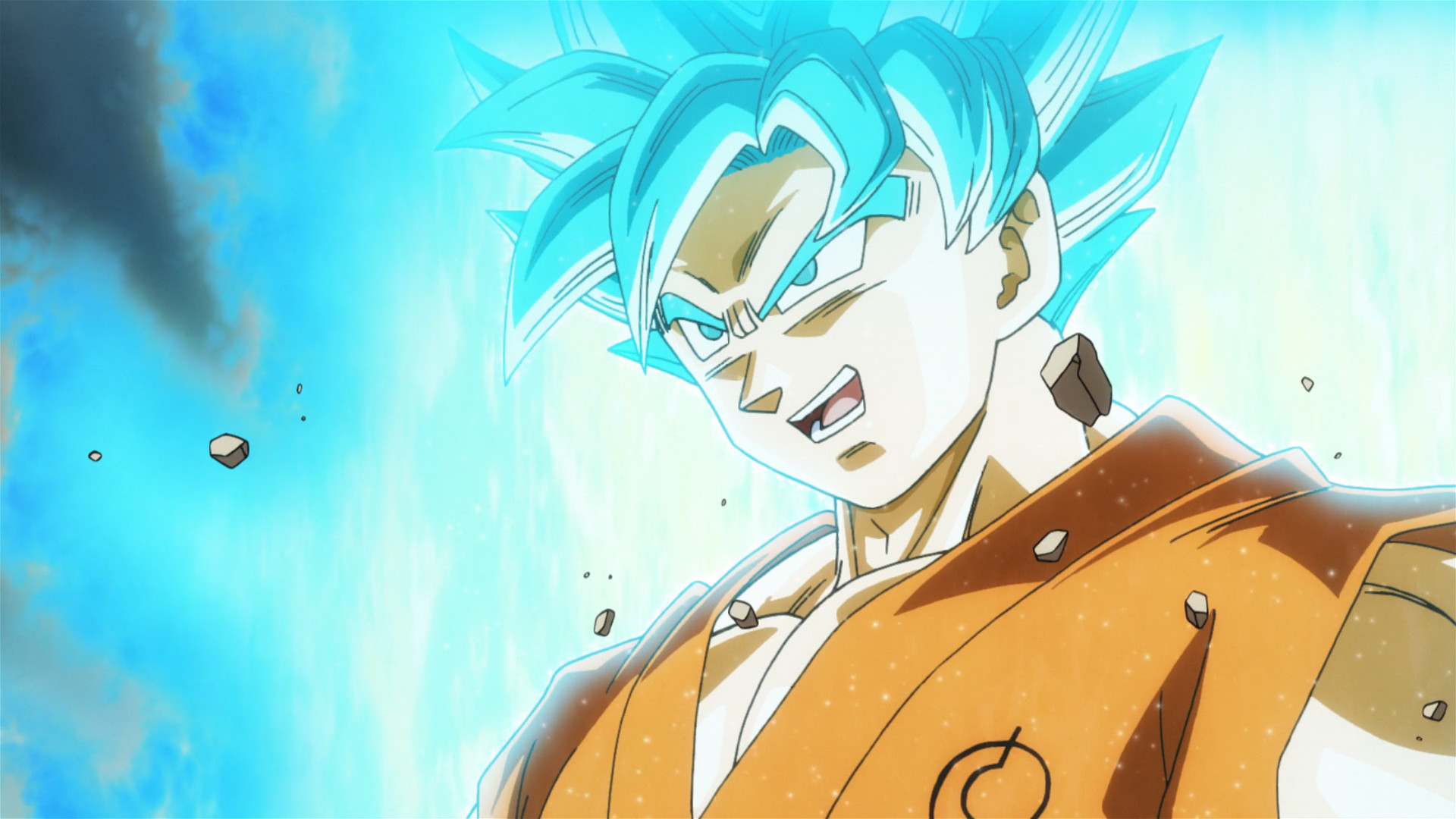
With his back to a wall, Freeza destroys the Earth before Goku or Vegeta have a chance to stop him. Quite frankly I think this is a concept with some real dramatic potential — Freeza's tendency to "play with his food" so to speak was ultimately what led to Goku's Super Saiyan transformation, so to see Goku and Vegeta's overconfidence be their undoing is a really clever subversion. The movie doesn't bother exploring this idea at all, however, because Whis allows Goku to perform a "do-over" and rewinds time to before Freeza blew up the Earth. As if wish-granting Dragon Balls or ultra-powerful transformations didn't sap enough tension out of the story, having the ability to hit CTRL+Z on any potentially cataclysmic event has such a profoundly negative impact not just on the story they're trying to tell here, but on future stories in the franchise.
What ultimately lands this movie in the bottom spot isn't just its awful story, but the fact that it is ugly. Characters continue to have the bland colors, weightless outlines, and gaudy plastic sheen that they had in Battle of Gods. Resurrection F takes it a step further and is littered with ugly, poorly integrated CG. Even the very worst Dragon Ball Z films at least give me something nice to look at on occasion. But this movie takes place in the same generic, barren landscapes that had become all too common during the latter half of Dragon Ball.
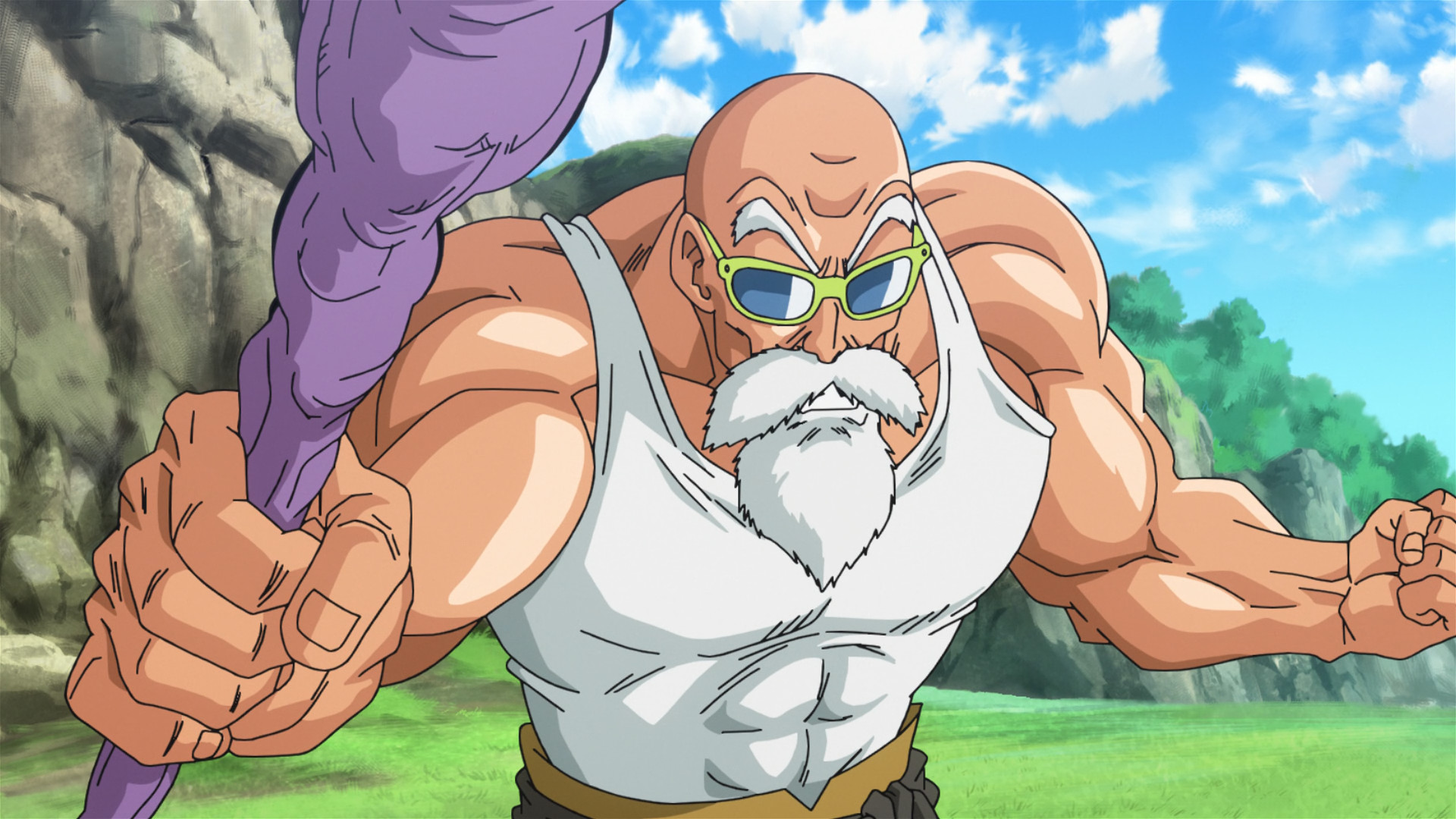
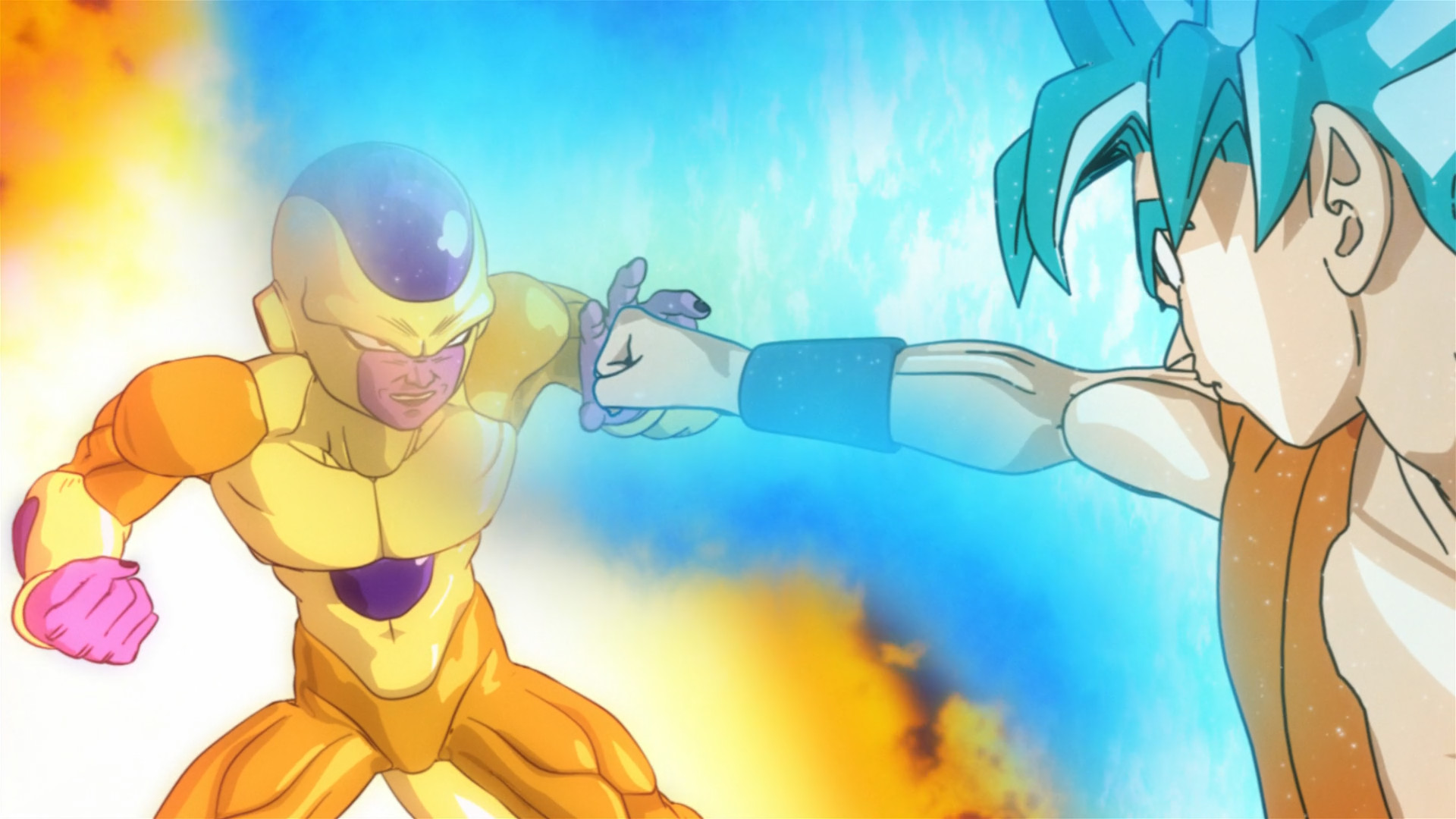
This movie really has nothing interesting going for it, and the less I have to talk or think about it, the better.
20. Dragon Ball Z: Super Android 13! (1992)
Dragon Ball Z: Extreme Battle!! The Three Great Super Saiyans
Resurrection F being so bad is the only thing saving this movie from the bottom spot. This movie performs so poorly because of just how much it unwaveringly adheres to the tried and true Dragon Ball Z Movie Formula™:
- The Opening Leisure Activity of the Film™ is interrupted by the Movie Villain Henchmen's Attack™.
- The Movie Villain Henchmen™ engage Goku and friends in lots of boring fighting, culminating in the appearance of the main antagonist.
- Piccolo arrives on cue to bail our heroes out of a sticky situation before his presence is suddenly rendered obsolete by the main villain's overwhelming power.
- Vegeta also arrives on cue to bail Goku out, but has to tell Goku (i.e. the audience) that “he's only there so that he can personally kill Kakarrot later himself” before also being rendered pointless.
- Just as our heroes appear to be on the verge of success, the main villain pulls out his ultimate power-up trump card, which everyone is powerless to fight against.
- Goku ends the fight with the Genki Dama, something that he could have (and should have) done at any time.
- ???????
- Profit.
These are tropes that many of the early Dragon Ball Z films follow, but many of them will employ some sort of subversion to keep things interesting. That isn't really the case with this movie. The most I can say is that, rather than showing up to get his ass kicked and muse about how he sucks at fighting, Kuririn instead shows up to give useless commentary on the battle, padding out a fight that was already sufficiently long (and boring).
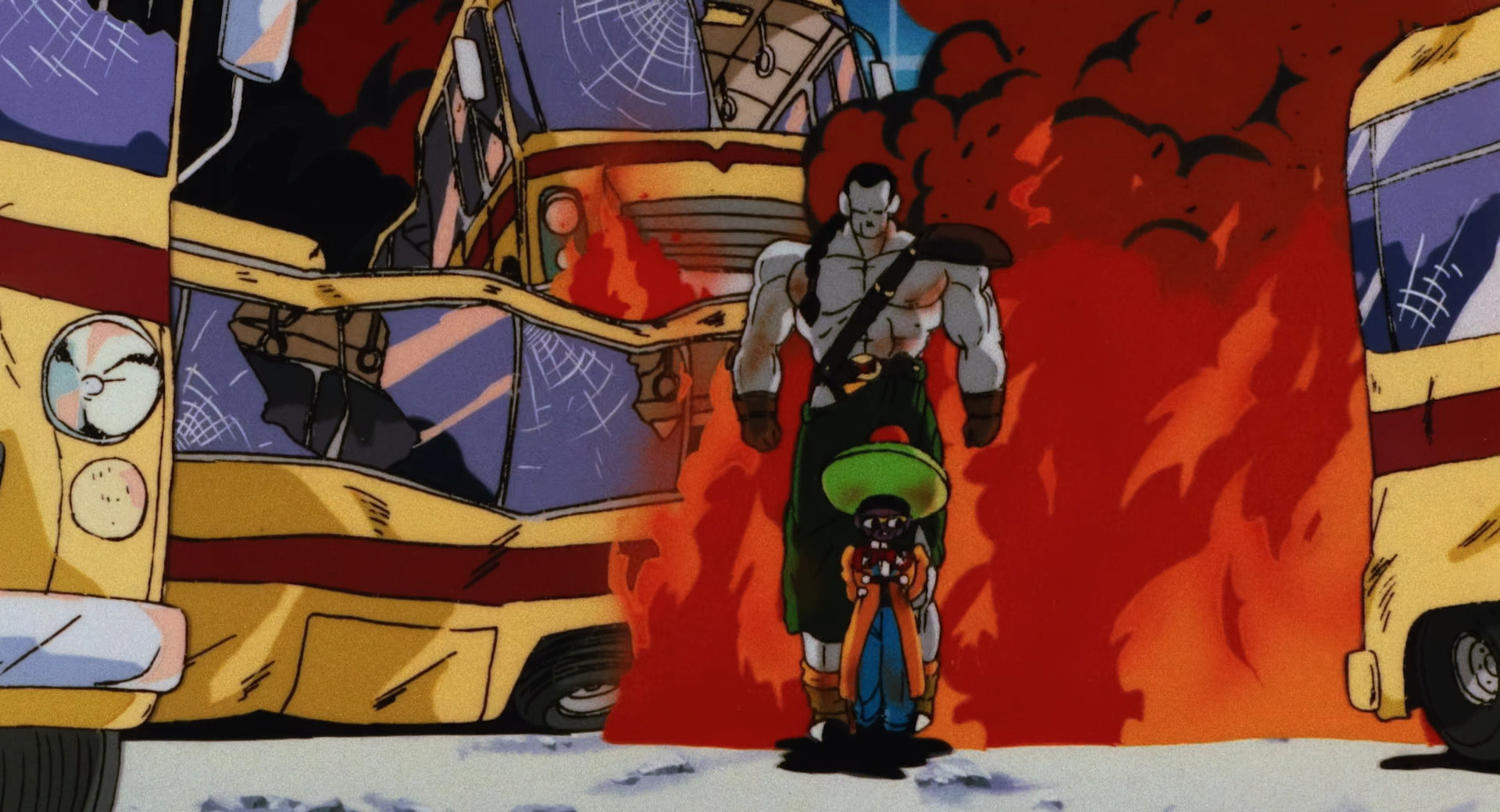
Furthermore, it doesn't really seem like all that much care was put into how the franchise's movie tropes were employed. The Opening Leisure Activity™ doesn't have any sort of thematic or narrative relevance to the rest of the film; it's simply a box on the list of movie tropes that needed to be checked off. The most I can give it is that the Androids' ruthless pursuit of Goku through the city, casually walking through people as if they weren't even there, is very reminiscent of The Terminator, a film that was very influential on Dragon Ball. That film was especially influential on the Androids/Cell story arc, which was ongoing at the time. I see it as a charming homage that doesn't make itself obvious or overstay its welcome.
Another way in which this film falls short of the early Dragon Ball Z films, which aren't even all that spectacular to begin with, is that it isn't visually interesting at all. On one hand, it doesn't look nearly as bad as the horrid plastic aesthetic of Battle of Gods or Resurrection F. On the other hand, even those movies knew to spruce things up once and a while with an interesting backdrop for the battle.
The fight with Androids 14 and 15 starts in a city before being quickly relocated to a deserted area as to minimize casualties (i.e. ease the artists' workload) at Trunks's request. The "glacial belt", as he calls it, isn't the most generic environment we've seen in Dragon Ball, but it really isn't all that impressive, and it absolutely pales in comparison to the memorable locales of films such as Dead Zone or Cooler's Revenge.
Even the animation suffers in this film, with some particularly jank looking art. This extremely chiseled drawing of Goku always comes to mind:
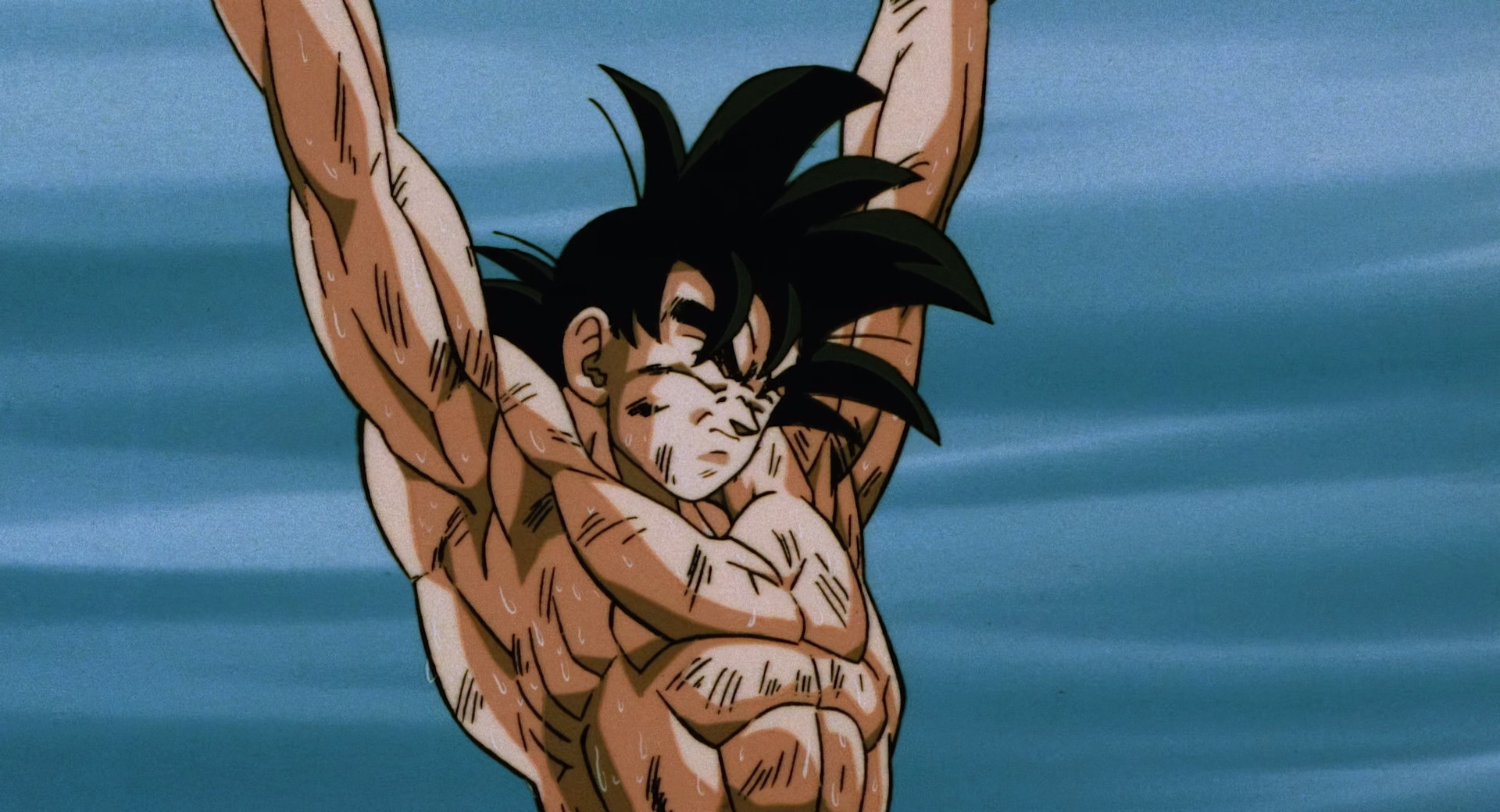
And not even the villain can redeem this film. Android 13 is about as boring as they come. He has no sort of interesting personality to speak of, and his design looks ridiculous.

The most memorable thing Android 13 does is punch Goku in the balls. Seriously. It's actually hilarious. When our main character getting punched in the balls is the highlight of the film, that's really not a good sign.
19. Dragon Ball Z: The Return of Cooler (1992)
Dragon Ball Z: Clash!! 10 Billion Power Warriors
Thankfully, I consider Super Android 13! to be the only truly awful Dragon Ball Z film. The rest range from mediocre to surprisingly not half bad. The Return of Cooler lands pretty solidly in the mediocre tier.
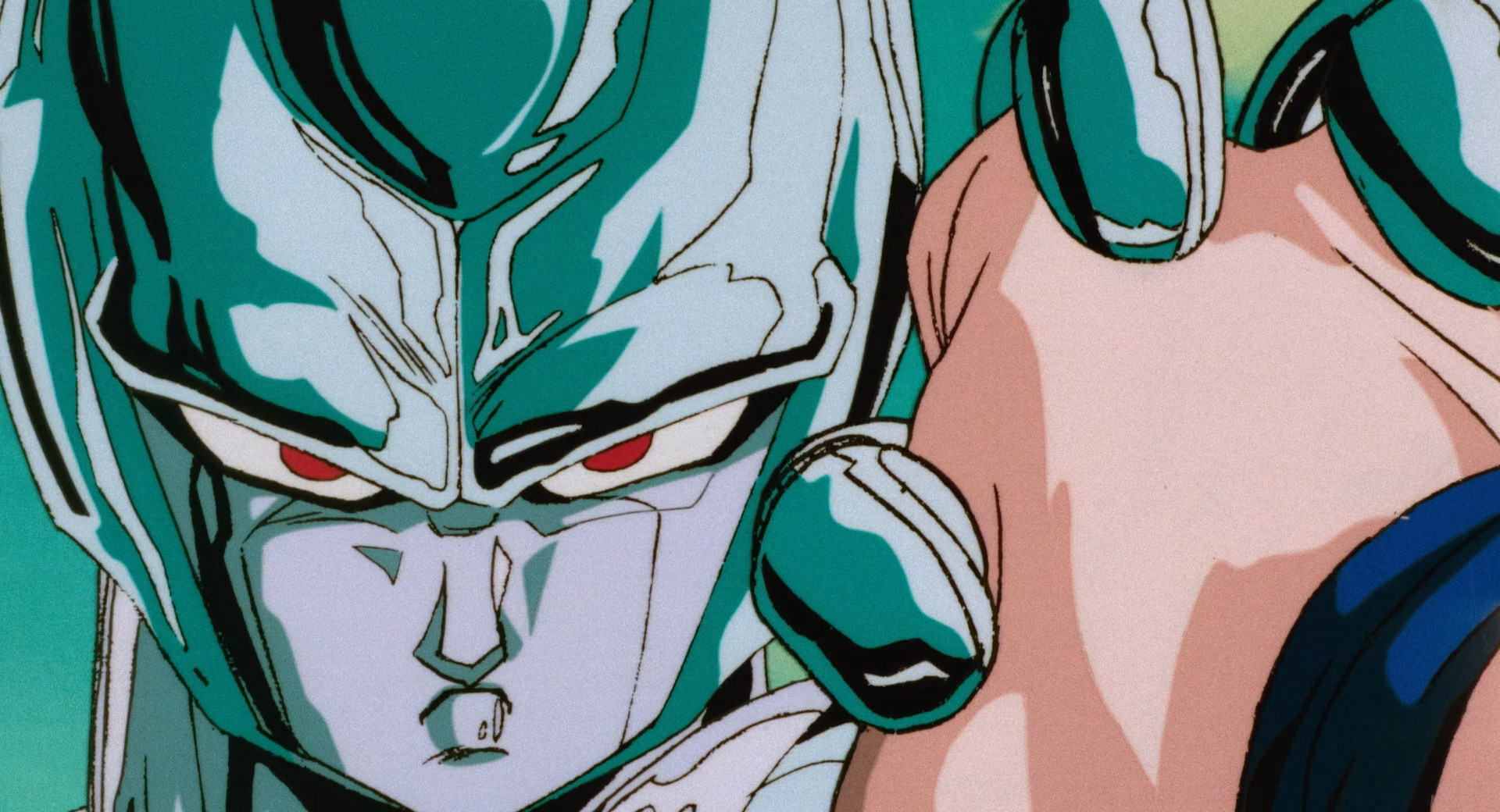
This is the first Dragon Ball Z film to recycle its main villain. Goku and company travel to New Namek only to run into Coola who, after having been blasted into the sun by Goku in the last film, has inexplicably returned donning a shiny new metal body. This body comes with certain perks, like the ability to regenerate itself and being strong enough to overpower Goku in his Super Saiyan form.
Coola's new powers stem from the Big Gete Star, a giant machine planet slowly absorbing New Namek. It's a really awesome concept that leads to some great, memorable moments later in the film, such as Coola's giant machine body lumbering towards Goku, after he and Vegeta overload Coola's circuits. That's a beautifully haunting image that has always stuck with me. Sadly, it ultimately ends up feeling undeveloped due to, and get used to hearing this, too much of the movie's runtime being devoted to boring fighting.
This movie manages to take it a step further — not only is the fighting boring, but it's also ugly too. There are some super jank looking poses the movie holds on for an uncomfortably long period of time. New Namek is also as boring an environment as old Namek, with nothing but featureless wastelands and dull skies to look at. This movie ends up feeling way more tedious than other Dragon Ball Z films, even though its fights aren't longer by any substantial degree. Keep in mind that in the photo examples below, I'm not picking on awkward-looking in-betweens, these shots are very noticeable without pausing:

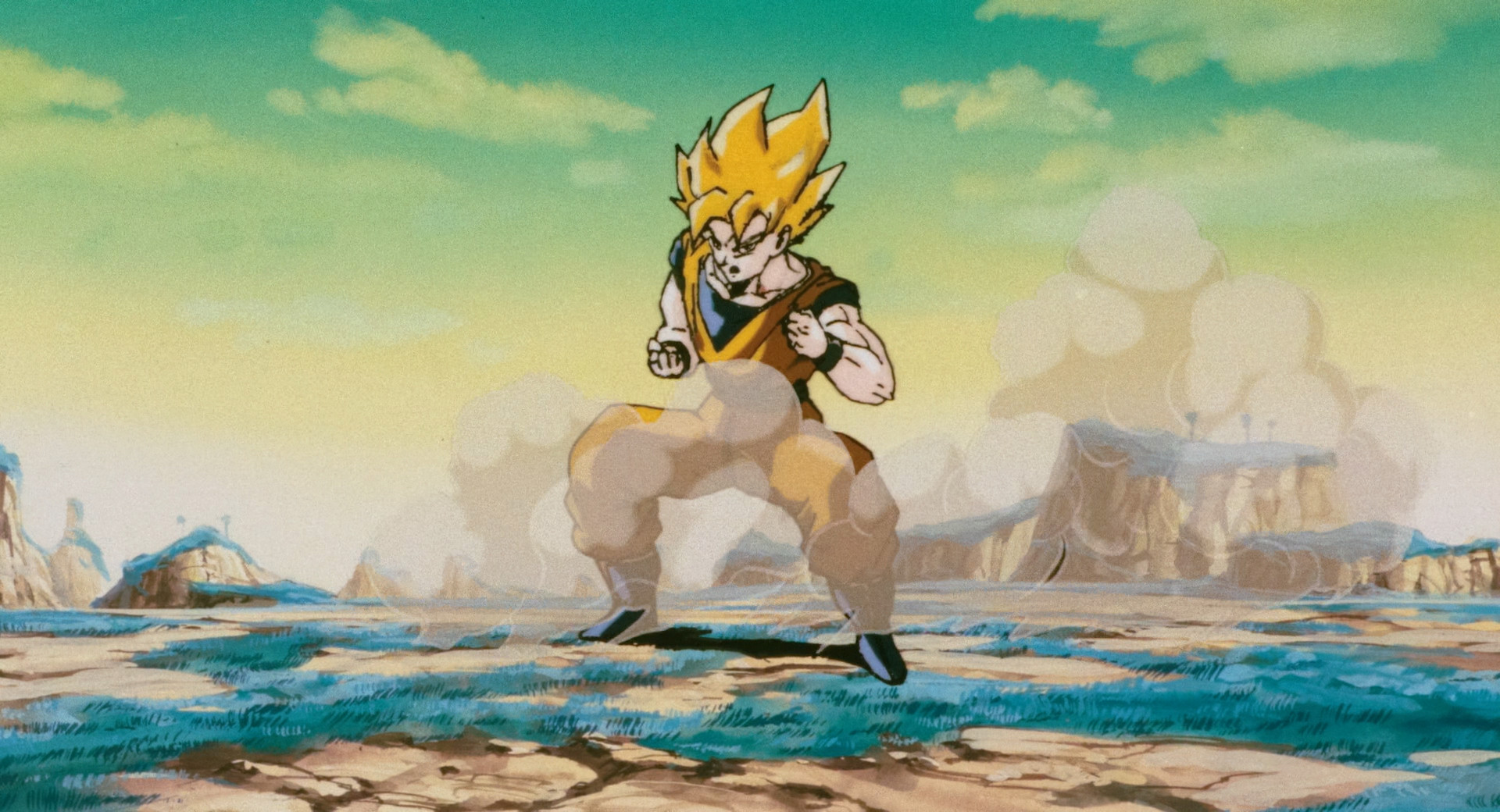

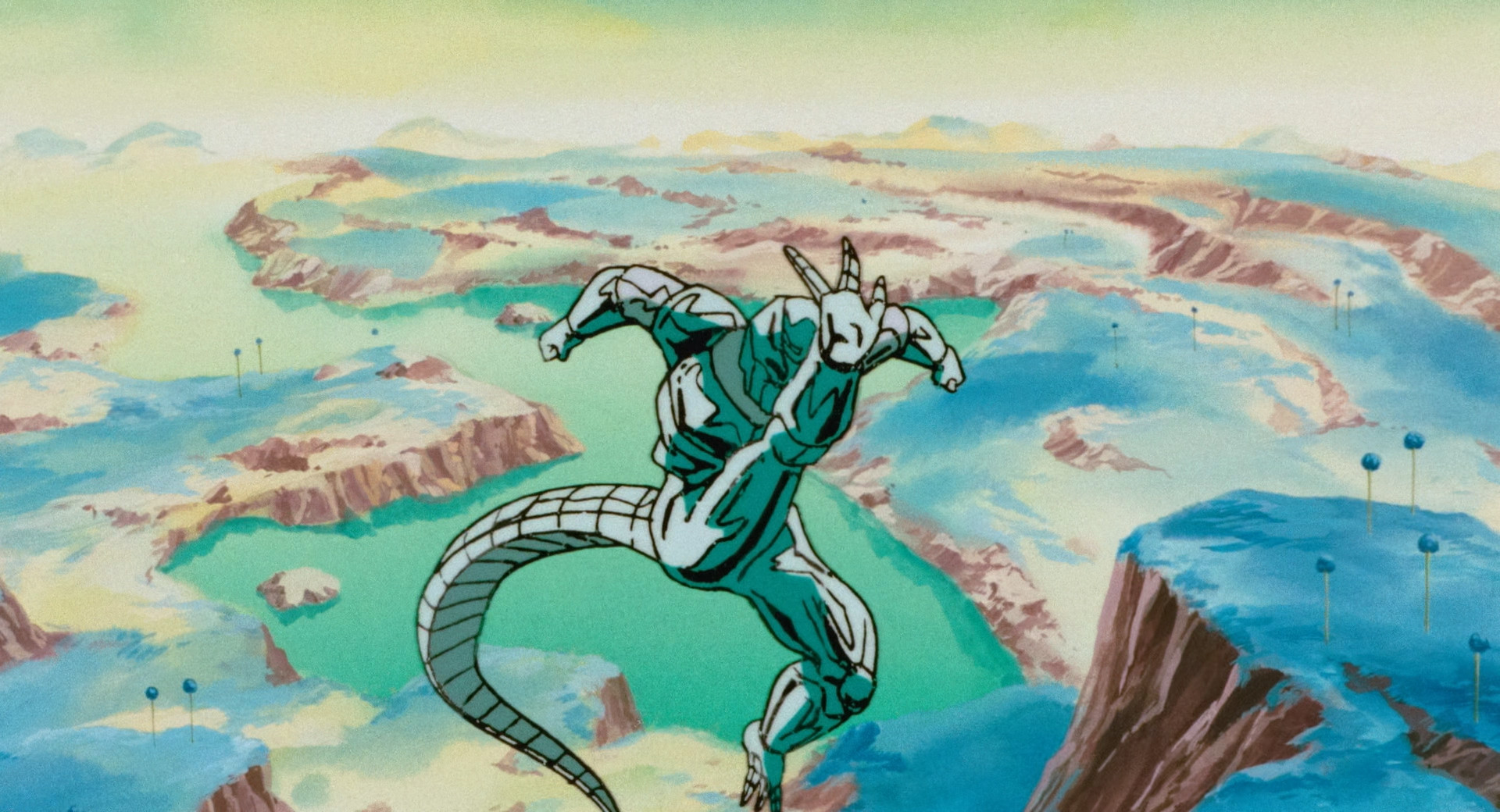
This is especially painful since the Dragon Ball Z films often served as a reprieve from the sort of generic landscapes and clunky animation that was all too common in the anime. None of the Dragon Ball Z films are particularly complex, but most of them are at least nice to look at.
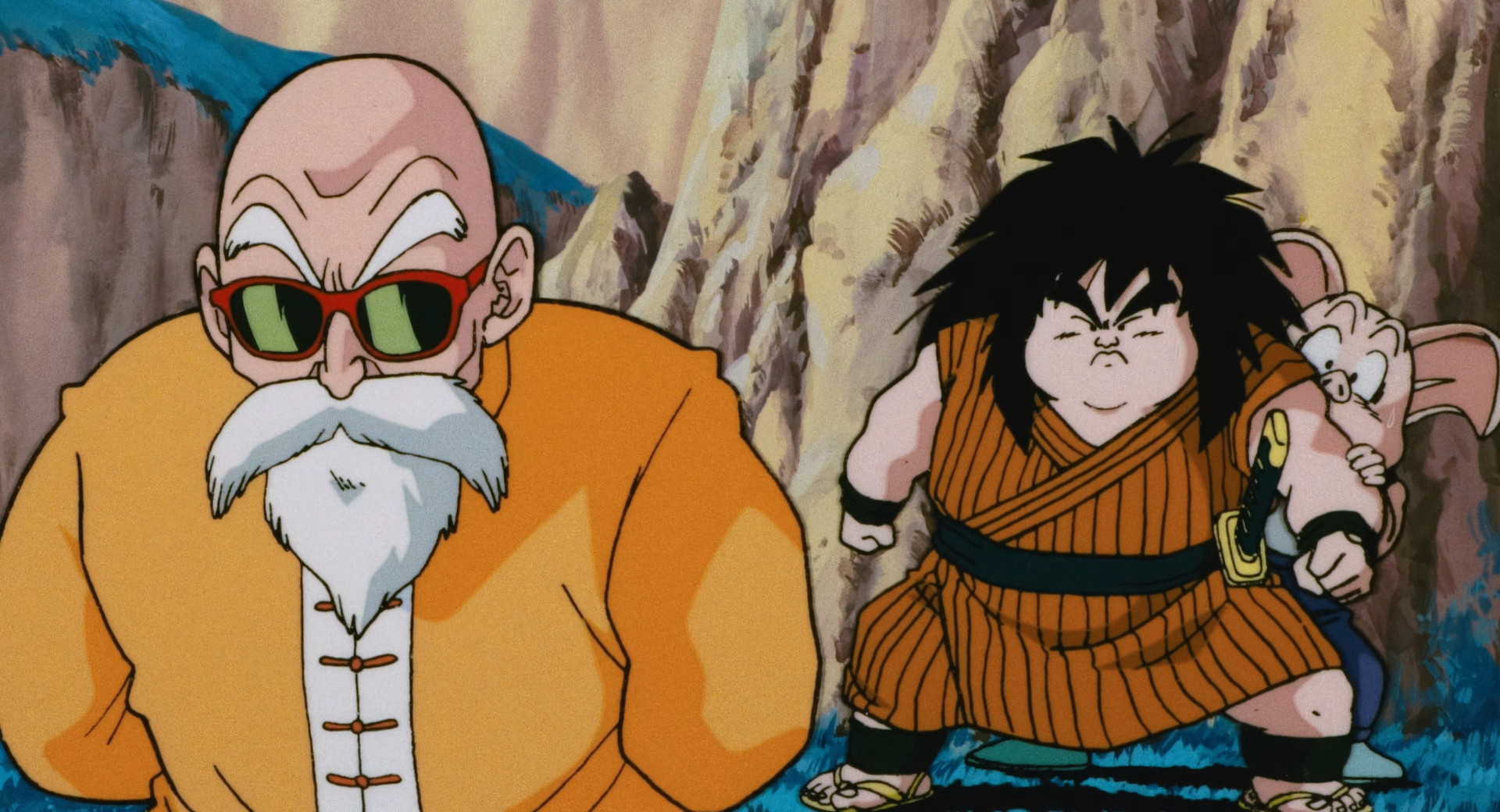
The secondary characters are given so little to do they're hardly worth mentioning. Piccolo, Gohan, and Kuririn fight off an army of mindless robots in the most unsatisfying way possible; the robots appear to be indestructible, but as it turns out, you just have to hit them really hard. The fact that what I just said resembles a line from Dragon Ball Z Abridged is pure serendipity, there's really no better way to explain it — it's actually just that dumb. They all end up getting captured anyway, rendering their whole portion of the story pointless.
Some less prevalent characters like Yajirobe, Oolong, and the Turtle Hermit also appear, but they aren't really given anything to do. I always enjoy seeing those characters, but a part of me prefers that they not be in the film. Why include them if they're not going to do anything?
This film also marks Vegeta's film debut. It's interesting that it took them so long to incorporate him into a movie, considering how popular a character he was. It's pretty clear that the concept of "good guy Vegeta" was far removed from the filmmakers' heads until this film. This movie establishes his recurrent role in the movies of showing up at the last second to save Goku, only to whine about how he's only doing this so he can kill Kakarrot himself. Sure you are, buddy.
There is one great scene I do have to mention near the end of the film — After having been left utterly exhausted by defeating Metal Coola, Goku and Vegeta are horrified to see an army of Metal Coolas forming on the horizon. The music during this scene really sells the sense of dread, and I really like that we don't get to see the ensuing fight, since it's not important. As we'll see, it's exceedingly rare for Dragon Ball to pass up opportunities to show boring fighting, so this decision is greatly appreciated. It's just a shame the rest of the movie can't live up to this moment.
While this movie isn't the worst use of your time as far as Dragon Ball goes, I doubt this movie will leave a big impression. Aside from a memorable scene late into the film, this one really doesn't have anything going for it. It being so unpleasant to look at just adds insult to injury.
Oh, there was one little thing I forgot to mention. It isn't super important and doesn't really affect my rating of the movie, but now is the only time I'll really get to discuss it: This movie opens with Dende being Earth's god. Most of you are probably wondering why that's worth mentioning. "Doesn't Dende become Earth's god during the Cell story arc?" Yes, he does. However, this movie predates that plot point in the manga by almost 7 months. Toei made Dende Earth's god before the idea even crossed Toriyama's mind. Whether it was just a huge coincidence or Toriyama taking inspiration from Toei is something I can't say for certain. Knowing Toriyama, I could see either being the case. We'll see examples of Toriyama influenced by the movies, most notably Fusion Reborn.
18. Dragon Ball Z: Bojack Unbound (1993)
Dragon Ball Z: The Galaxy at the Brink!! The Super Incredible Guy
Compared to The Return of Cooler's boring landscapes and clunky animation, this movie makes for a very nice change of pace. The opening set piece of the film is memorable, and really unique for Dragon Ball: Mr. Satan is hosting a high-stakes tournament, with lots of weird rules and concepts that play into his grandiose personality. Like in the Tenkaichi Budokai, fighters lose if they fall out of the ring, are rendered unconscious, or say they give up.
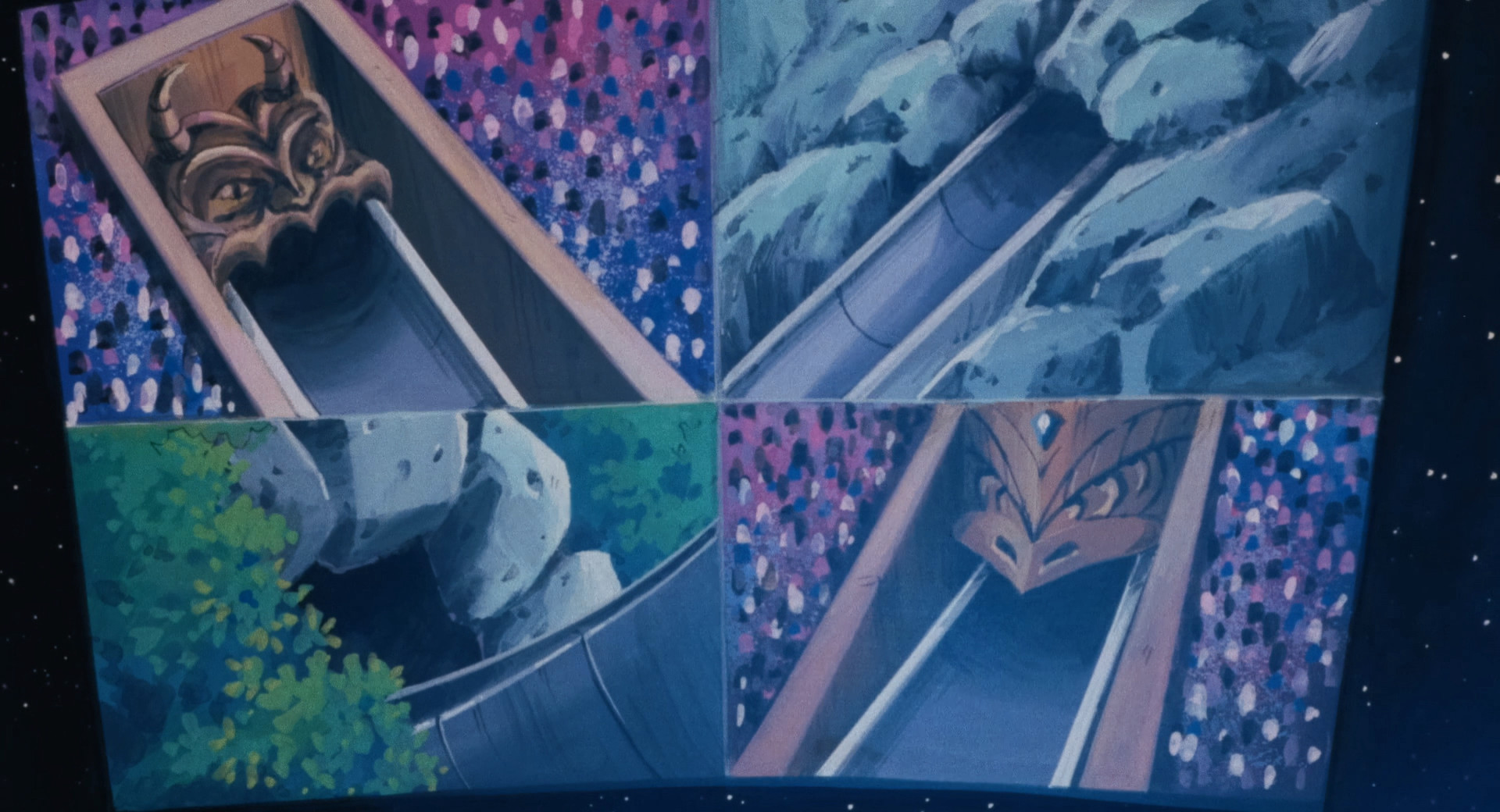
This movie adds some extra spice to the formula: preliminaries are hosted in a battle royale style format, resulting in eight semi-finalists. These eight contenders then need to engage in 1-on-1 battles to determine the four finalists. The remaining contestants are flown to a massive arena, where each will need to go to a designated "battle zone", defeat an alien warrior (which are all actually just some random geezers in costumes), and then return to challenge Mr. Satan himself. The first contender to do so is the winner.
The setup is weird, super elaborate, hard to explain, hardly makes any sense, and is an absolute delight to watch. It's such a shame, then, that this whole setup ends up being a red herring. Upon entering the battle zones, our heroes instead encounter members of Bojack's gang, and it's all downhill from there. These guys are bland even by the standards of Dragon Ball Z Movie Villain Henchmen™, but even they are more interesting than the titular Bojack, who might just be the most sauceless villain in the entire franchise. It's honestly impressive.
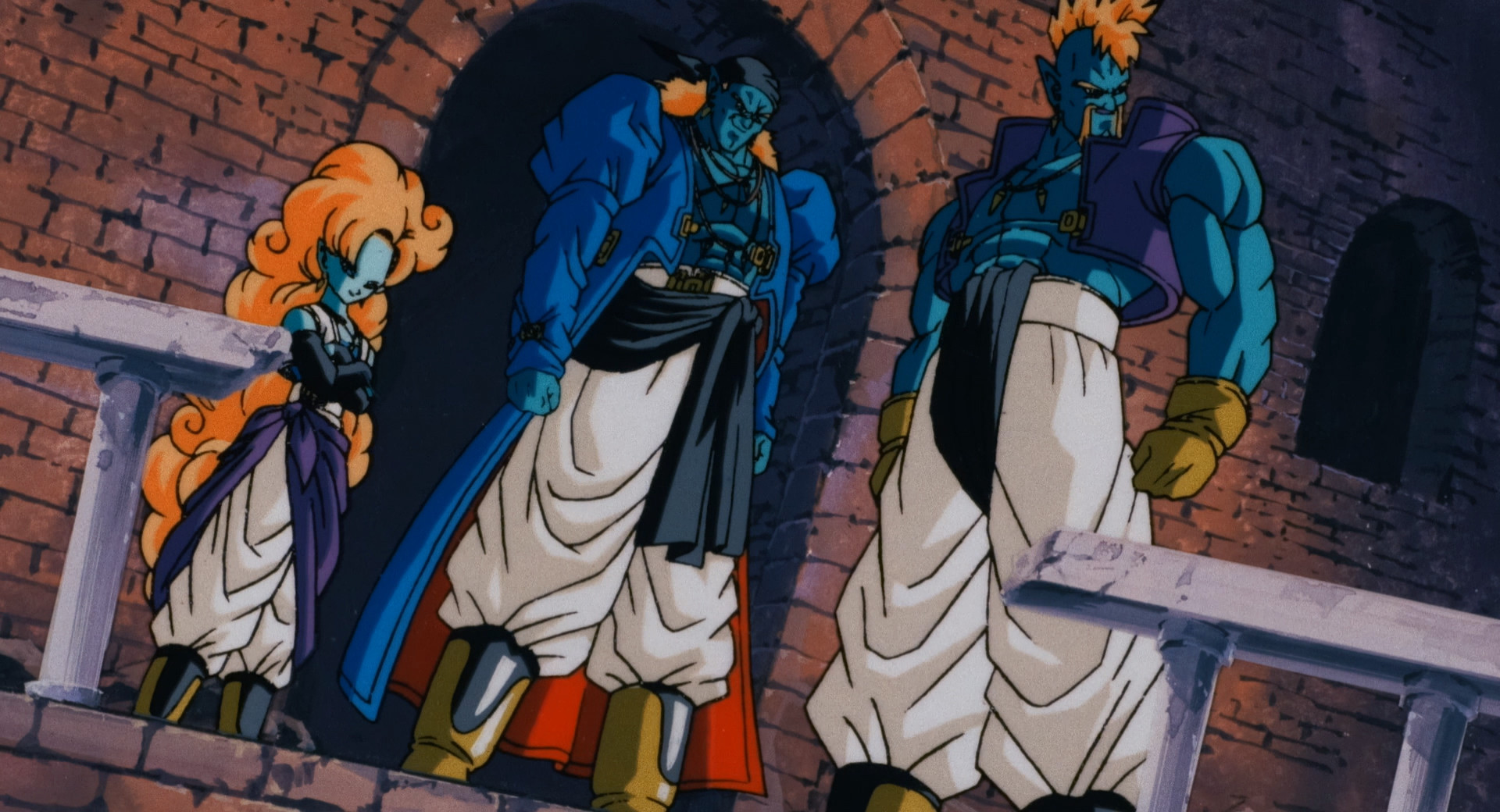
He has no style. He has no grace. He doesn't even have a funny face. He is just one boring slab of meat for our heroes (meaning Gohan) to struggle against before ultimately defeating him in a long, tedious fight. He has a boring transformation, but all it does is make him lose his shirt and become green for whatever reason.

I'm not exaggerating when I say that the most memorable thing about Bojack is that his name rhymes with Wojak. I'm deadly serious.
This film, having been released after the end of the Cell story arc, sees Gohan assume the protagonist role. As we would later see, Toriyama considered Gohan to be unfit for the role of main character. While I personally haven't given the matter much thought, this movie, as well as the following film, Broly — Second Coming, seem to suggest that Toei subtly felt the same way. While Goku doesn't play a major role in the film, we often cut back to his reactions to the events of the film, as he watches on with Kaiou. Most of these scenes are utterly pointless, and only exist to hold on to die-hard Goku fans.
Goku does end up playing a more active role near the very end, in one of the most puzzling scenes in the entire franchise. Goku teleports in, punches Bojack in the face, gives Gohan a pep talk, and then disappears. It's honestly kind of funny, if that's what they were going for. It doesn't make any sense at all given the rules of how death works in Dragon Ball, poorly defined as they may have been. It definitely demonstrates to me a lack of confidence in Gohan as a protagonist.
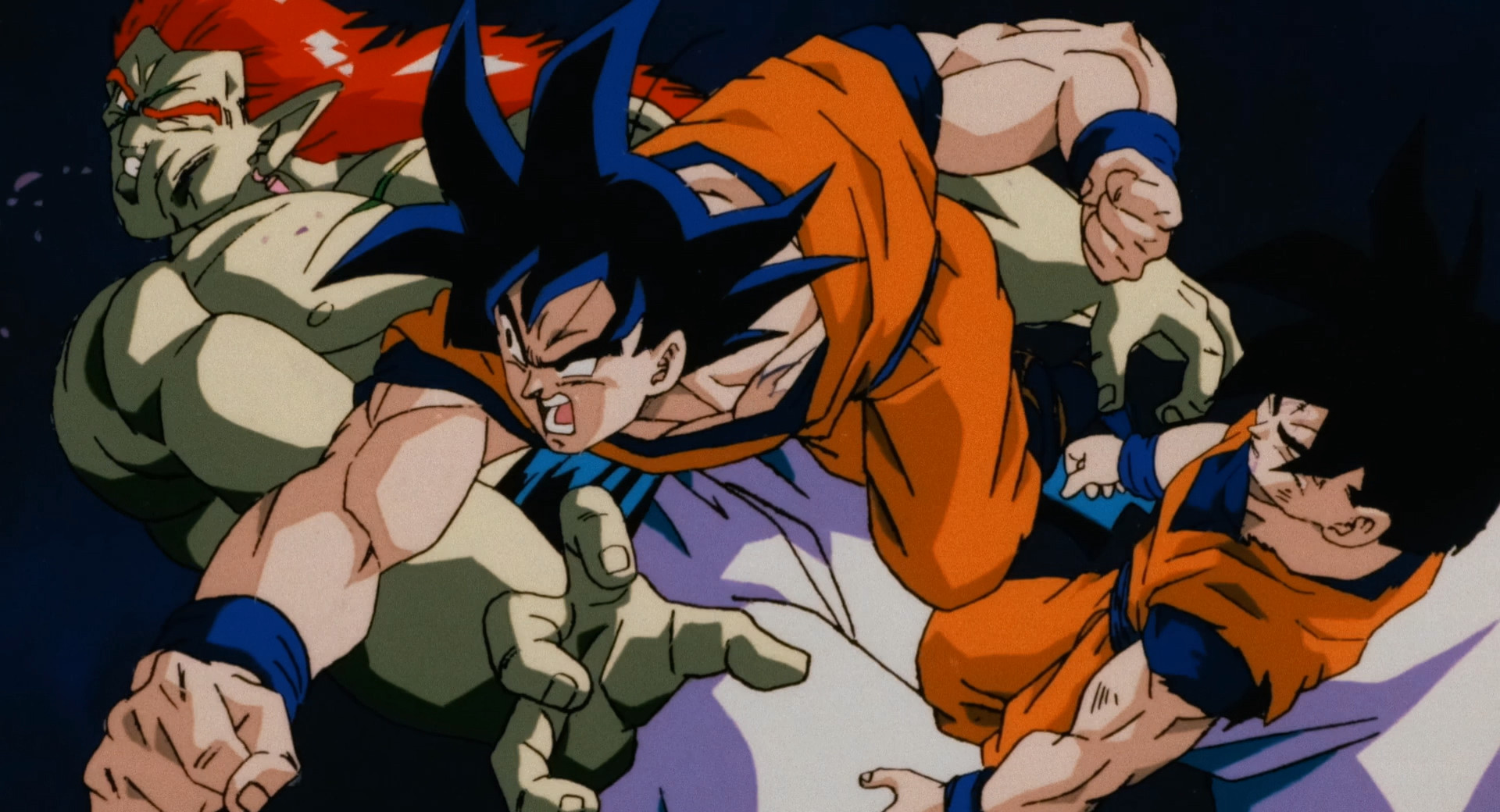
The role of comic relief is now primarily served by Mr. Satan, and this is one thing I can compliment the movie on. Mr. Satan is a great character and I love the antics we see him get up to in this movie, even if it does boil down to a repeat of his appearance in the fight against Cell. I find his presence interesting since it wasn't yet clear what Toriyama's plans for the character were. Even bearing in mind his relation to Videl, I would have seen no reason at the time to believe that Mr. Satan was at all more important than characters like Tenshinhan or Yamcha, who have both been reduced to brief cameo appearances. Mr. Satan will end up becoming a major character later in the series, and it seems that Toei intuitively understood what made the character so charming.
I'll always get a kick out of Mr. Satan's antics. Once he realizes that those insane guys that defeated Cell have arrived to his dinky little tournament, he fakes a stomach ache. He tries to run away but has to hide from hordes of his screaming fans. Eventually, he reluctantly agrees to go aid the heroes in the fight against Bojack, but in the clumsiest way imaginable, complaining that his seatbelt isn't fastened. This eventually gets a payoff near the end, where Mr. Satan comes barreling into one of Bojack's henchmen, temporarily releasing their hold on Gohan, allowing him to continue the fight. Personally, I would have loved to just see the tournament play out normally and watch Mr. Satan's reaction.
If not for Bojack, this movie would probably have ended up much higher on the list. Bojack is such a thoroughly uninteresting character that he demotes this movie by a good 10 or so positions. How he ever made it to the screen is something I don't think I'll ever understand. Would you believe me if I told you that Bojack actually has fans? I don't believe it either!
17. Dragon Ball Z: Broly — The Legendary Super Saiyan (1993)
Dragon Ball Z: Burn Up!! Hot Fight! Fierce Fight! Super Violent Fight!
Now for the last of the horribly boring films. At least with this one, I don't find myself getting bored just talking about it. In fact, this movie might be one of my favorites to talk about; the film is loaded with exciting concepts and characters that, sadly, don't quite live up to the hype. Honestly, this movie makes me think about Star Wars: The Last Jedi, in so far as I find it interesting to talk about, but actually watching it isn't nearly as glamorous. Luke's characterization and Rey's anticlimactic backstory are fun, subversive concepts, but do you really wanna watch Finn and Rose bum around on a boring casino planet with hideous CGI creatures? You don't have to answer that question.
In fact, we're jumping a bit ahead here, but there is a scene in this movie that I find remarkably similar to The Last Jedi, that being when Paragus visits Broly in his sleep during a flashback, and Broly wakes up just in time to realize what's happening. Even the color palette is pretty similar. Maybe this is where The Last Jedi got the idea to be insufferably boring.
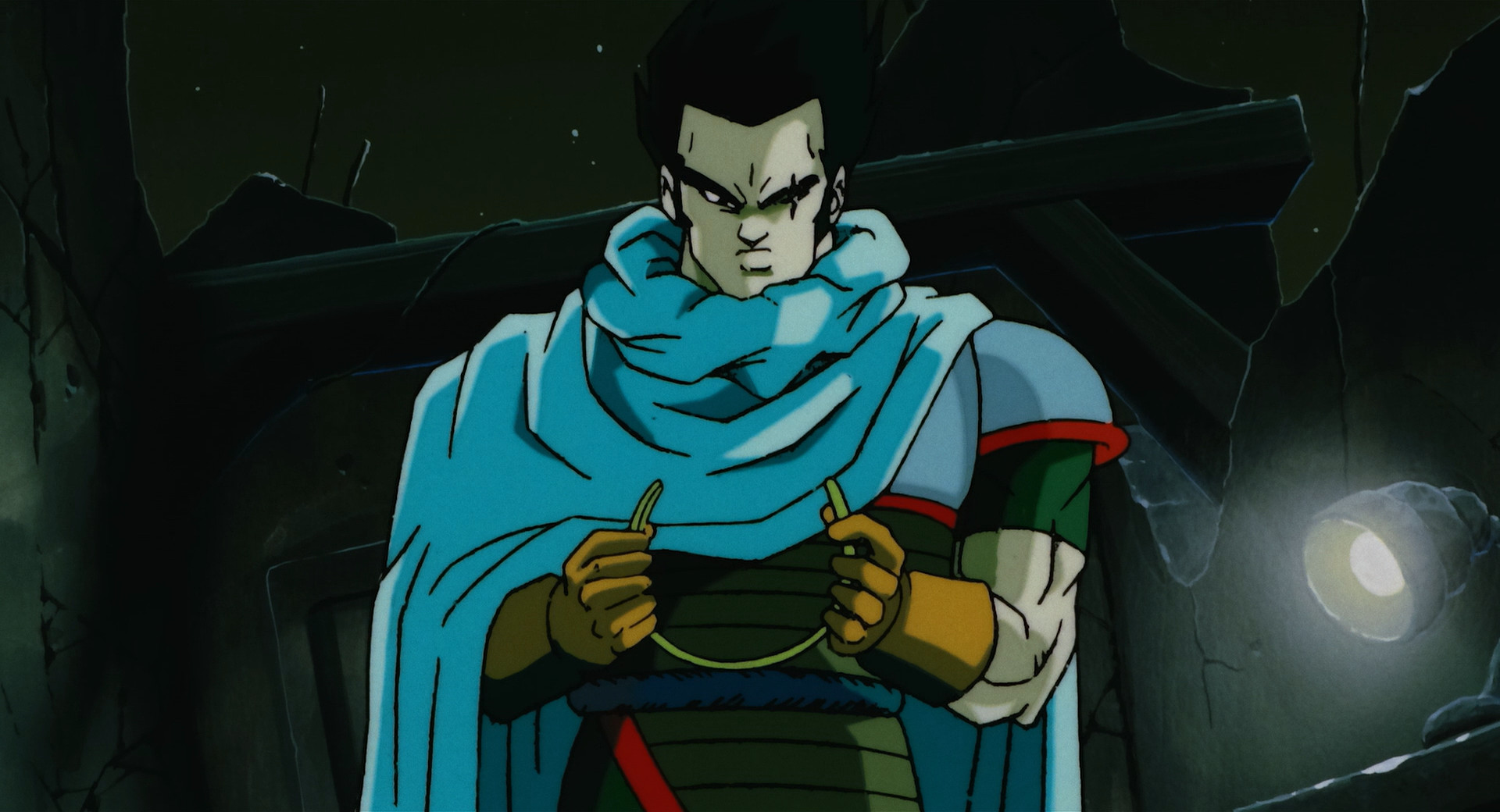

Paragus, a Saiyan that was spared during the destruction of Planet Vegeta, invites our favorite, hot-headed Saiyan prince to the inauguration of a new Planet Vegeta. Vegeta is tasked with hunting down the Legendary Super Saiyan, who has been wreaking havoc across the galaxy. To the surprise of no one, the Super Saiyan is revealed to be Broly, Paragus's seemingly timid son. Thanks for giving that one away, English title! (Not that the movie was ever particularly subtle about it, though.)
I find Paragus and Broly to be really compelling characters. There are some really nice subtle hints about their character, such as their regal, ornate clothing. Seeing these two vagabonds on a desolate planet dressed like Saiyan royalty does a good job of visually communicating Paragus's resentment and his attitude towards Broly much better than his bizarre, Buzz Lightyear-colored robe in Dragon Ball Super: Broly did. Paragus never let go of his envy and bitterness towards the Saiyan hierarchy, so his old fashioned armor serves as a nice contrast from Vegeta's sporty utilitarian armor or Goku's personalized Turtle School outfit. The fact that he put his hulking brute of a son in such elegant clothing tells us that their relationship is one more of master and trophy than of father and son.
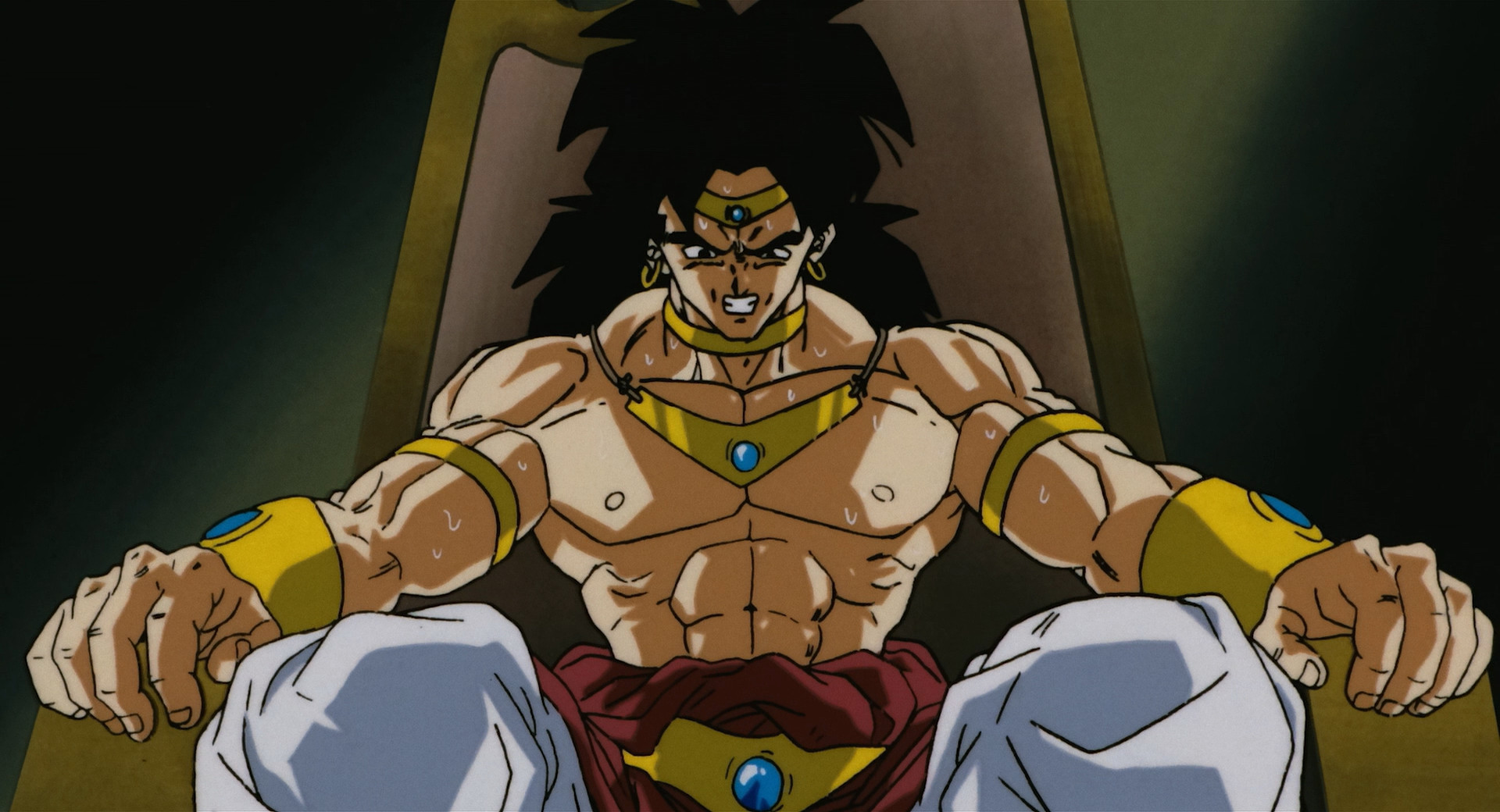
The movie builds on this relationship in an interesting way as the film goes on. We learn that Broly's crown is actually a mind control device Paragus uses to pacify Broly. Broly's power is so overwhelming that he poses a great risk to Paragus and to himself. The idea that Paragus is as much of a slave to Broly as Broly is to him serves as a cruel bit of poetic justice. And for as generic as Broly eventually becomes, I'll always love seeing Paragus get his comeuppance. Seeing Broly's reflection in the window of his pod is a powerful, intimidating image that's always stuck with me.
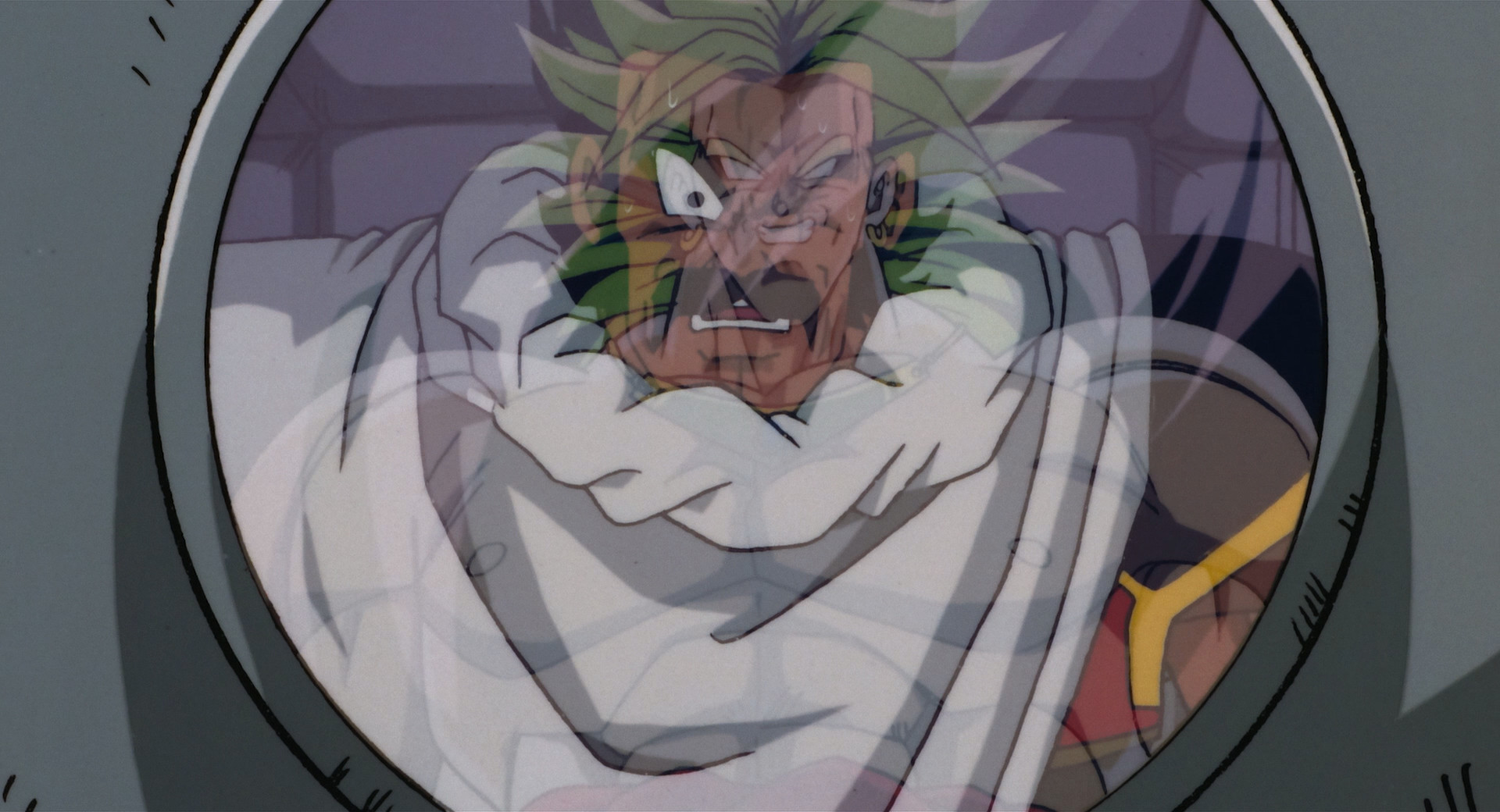
There are loads of interesting concepts to dig into in this movie, but the movie sadly isn't all that interested in exploring them. This movie drops the ball in two major ways:
First is that Paragus and Broly's backstory is clumsily dumped on the audience in the most transparently expository dialogue imaginable. At around the halfway point of the film, Paragus monologues his entire life's story to himself (the audience) for no reason whatsoever. All of that interesting intrigue and build-up is quickly shoved aside so we can get to what the fans really want to see, and the second major flaw with the movie: a big, dumb, boring fight that goes on way too long.
And when I say long, I do mean long. This movie is actually the longest of the Dragon Ball Z films (until Battle of Gods and Resurrection F), clocking in at a whopping 72 minutes... Which is hardly all that long, in fact it doesn't even qualify as feature length, but it's long compared to the other Dragon Ball Z films, which typically come in at around 50 minutes each.
And I think this fact really encapsulates so much of what's wrong with this film, and why I find it so frustrating. Not being acutely aware of the inner workings of this film's production, I do get the sense that the filmmakers had higher aspirations for Broly — The Legendary Super Saiyan. This movie wants to take its time, establish an atmosphere and a mood, and give our characters time to slowly steep themselves in this crazy revenge plot which plays on interesting ideas that stem from concepts introduced in the Saiyan and Freeza story arcs. Sadly, whether it be due to a lack of confidence in their ideas or pressure to give the fans something familiar, the movie quickly drifts back into safe, boring fighting. The added runtime just means that the fight gets dragged out for even longer than normal.
I can see all of the building blocks for an exciting, unique Dragon Ball story here, but Broly unfortunately fails to stick the landing. We'll see in due time if this potential is ever capitalized on.
16. Dragon Ball Z: Lord Slug (1991)
Dragon Ball Z: Super Saiyan Son Goku
We've now progressed past the horribly boring tier, into what I call the "extremely effing mid" tier. Lord Slug surprised me with some really interesting concepts, but I was ultimately left disappointed by how closely it adhered to the Dragon Ball Z Movie Formula™.
A quiet day is interrupted by a giant planet hurtling towards Earth. At the last second, the planet swerves out of the way and explodes, leaving behind an alien ship. The ship is piloted by Slug and his gang of mazoku (meaning demon clan). They terraform planets to suit their unique physiology: The mazoku prefer the cold, and can't stand sunlight for more than an hour. They are also capable of using planets as ships, and have chosen Earth to be their new main cruiser.
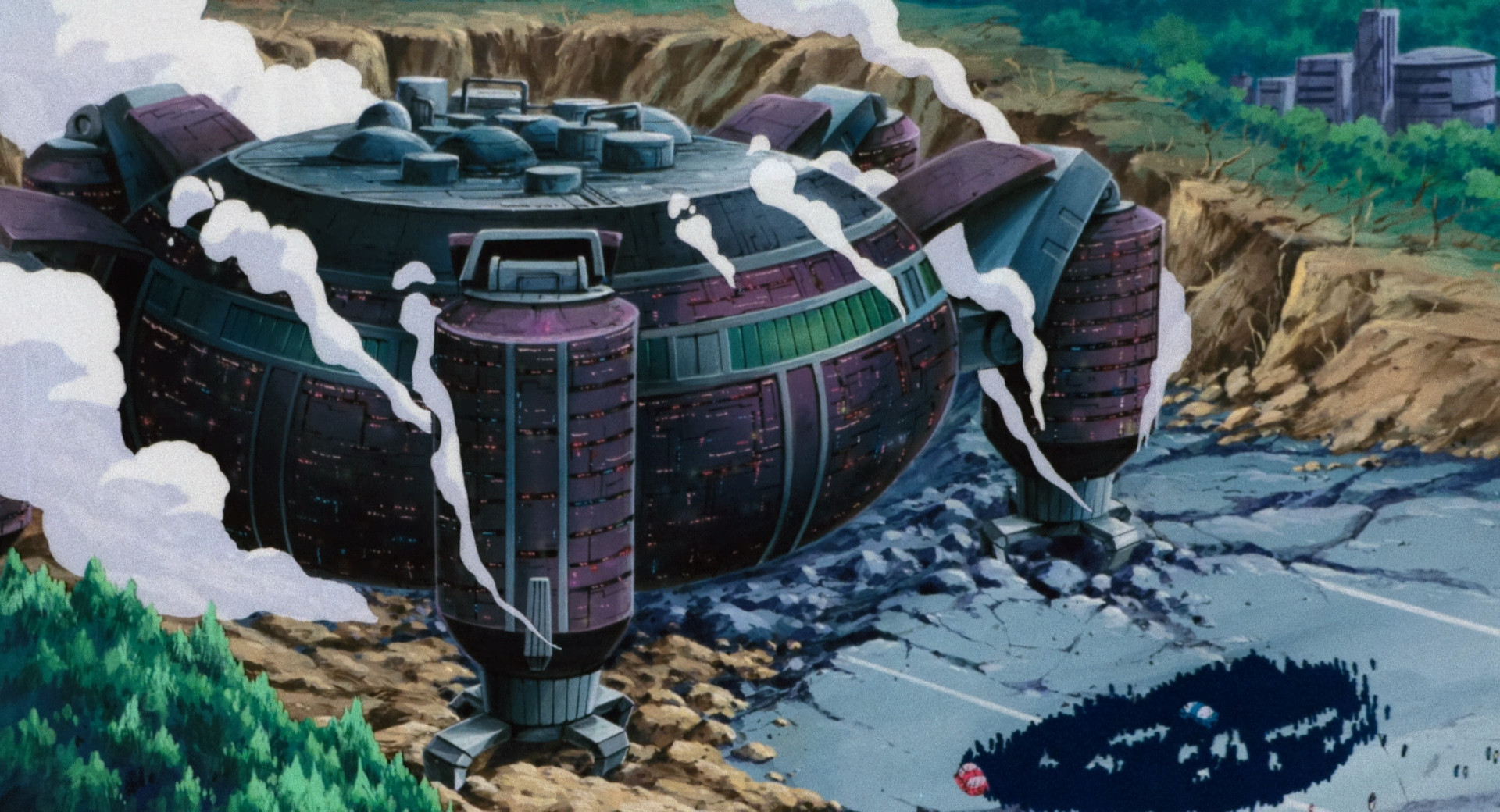
These are some really cool ideas, and I think the movie does manage to get a lot of mileage out of them. The scene of Bulma and company checking out Slug's spaceship, pushing their way through a crowd of people, feels like it was taken straight out of the 1950s War of the Worlds film, and I say that in a good way. It's always cool to see Dragon Ball openly embrace its science fiction and space fantasy influences. Having the villains be mazoku seeking the Dragon Balls hearkens back to the Chinese martial arts fantasy of early Dragon Ball, and that juxtaposition has always made Dragon Ball's world a fascinating one to explore.
Sadly, for as fun as the setup is, it ultimately doesn't really stick the landing. The mazoku's weakness to sunlight, for instance, is revealed through some incredibly awkward expository dialogue that's so jarring it almost distracts you from the fact that it makes no sense whatsoever. Astute readers of Dragon Ball may recognize that Piccolo is a mazoku, who is never shown to have a weakness to sunlight. Maybe, in this movie's continuity, Piccolo would have a weakness to sunlight too? No, because he's shown calmly meditating on a bright, sunny day in the opening scene of the film. Maybe Piccolo isn't a mazoku in this continuity? No, because during a fight, one of Slug's minions refers to Piccolo as a fellow mazoku. It's hard to comprehend the villains' plot when the movie blatantly doesn't care about how logically inconsistent it is.
But even that isn't the most puzzling thing about this movie. The strangest thing about Lord Slug is its original title: Super Saiyan Son Goku. "What's so strange about that?" you might be asking "doesn't Goku transform into a Super Saiyan?" Well, this movie actually came out just 10 days before the reveal of Goku's Super Saiyan transformation in the manga. It's important to note that Super Saiyan's status as a transformation wasn't apparent until its surprise reveal. For most of the Freeza story arc, it's pretty clear that what the characters are describing when they talk about the "Legendary Super Saiyan" is not a transformation. For this film's production, the staff would have been under the same impression.
So it's honestly really remarkable just how close they were. Their Super Saiyan transformation being a transformation is significant enough on its own, so the fact that it looks so similar to Toriyama's is pretty impressive.

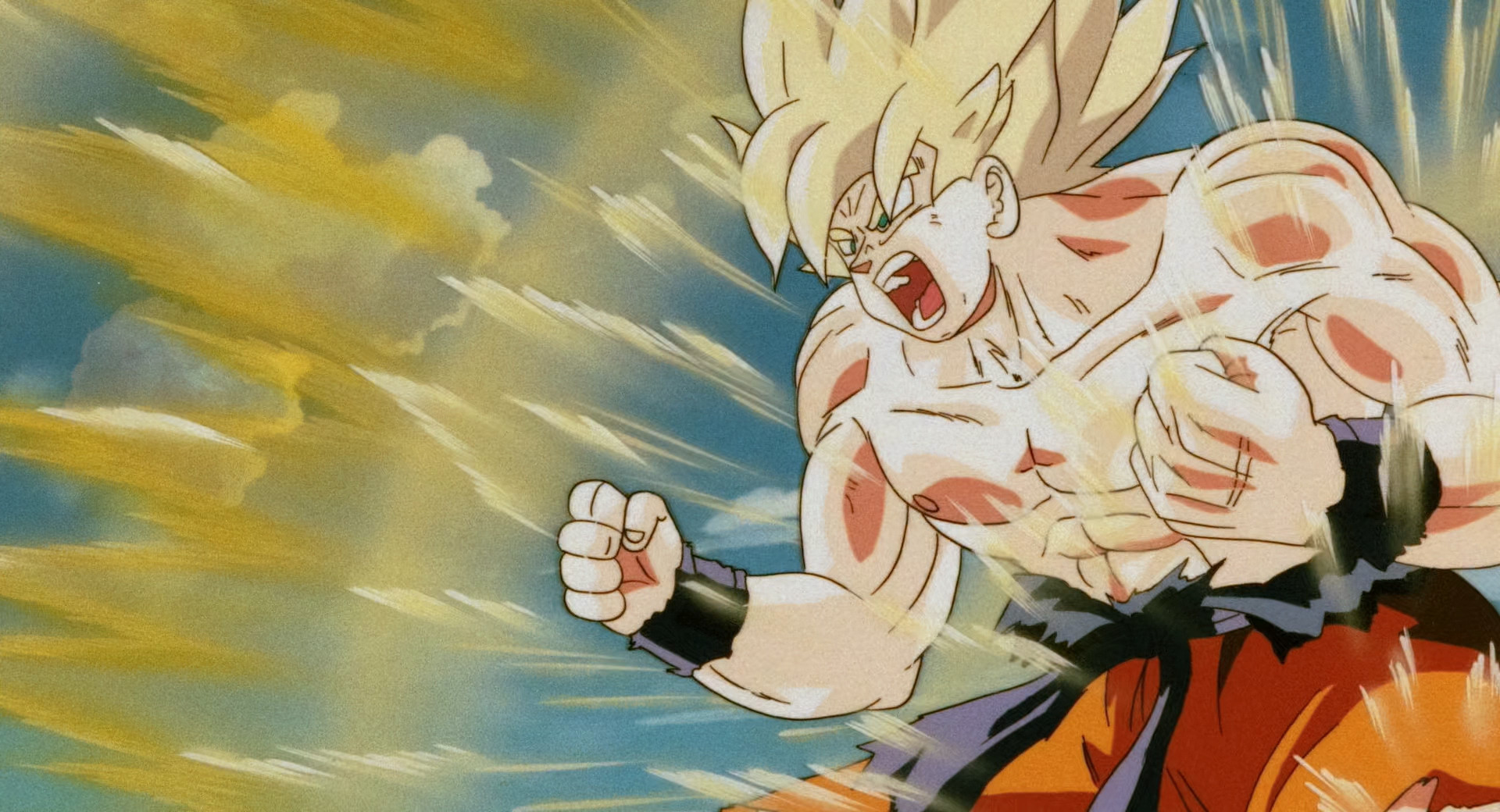
I really admire this movie's creativity. For as little sense as they make, I find Slug's gang to be the most memorable group of Dragon Ball Z Movie Villain Henchmen™ by far. One has the ability to make little clones of himself that latch on to you and drain your energy; another one has the ability to burrow under the ground and grab your feet so you can't move. They're not memorable enough that I can actually remember their names off the top of my head, but they're wonderful compared to whatever Bojack Unbound was doing.
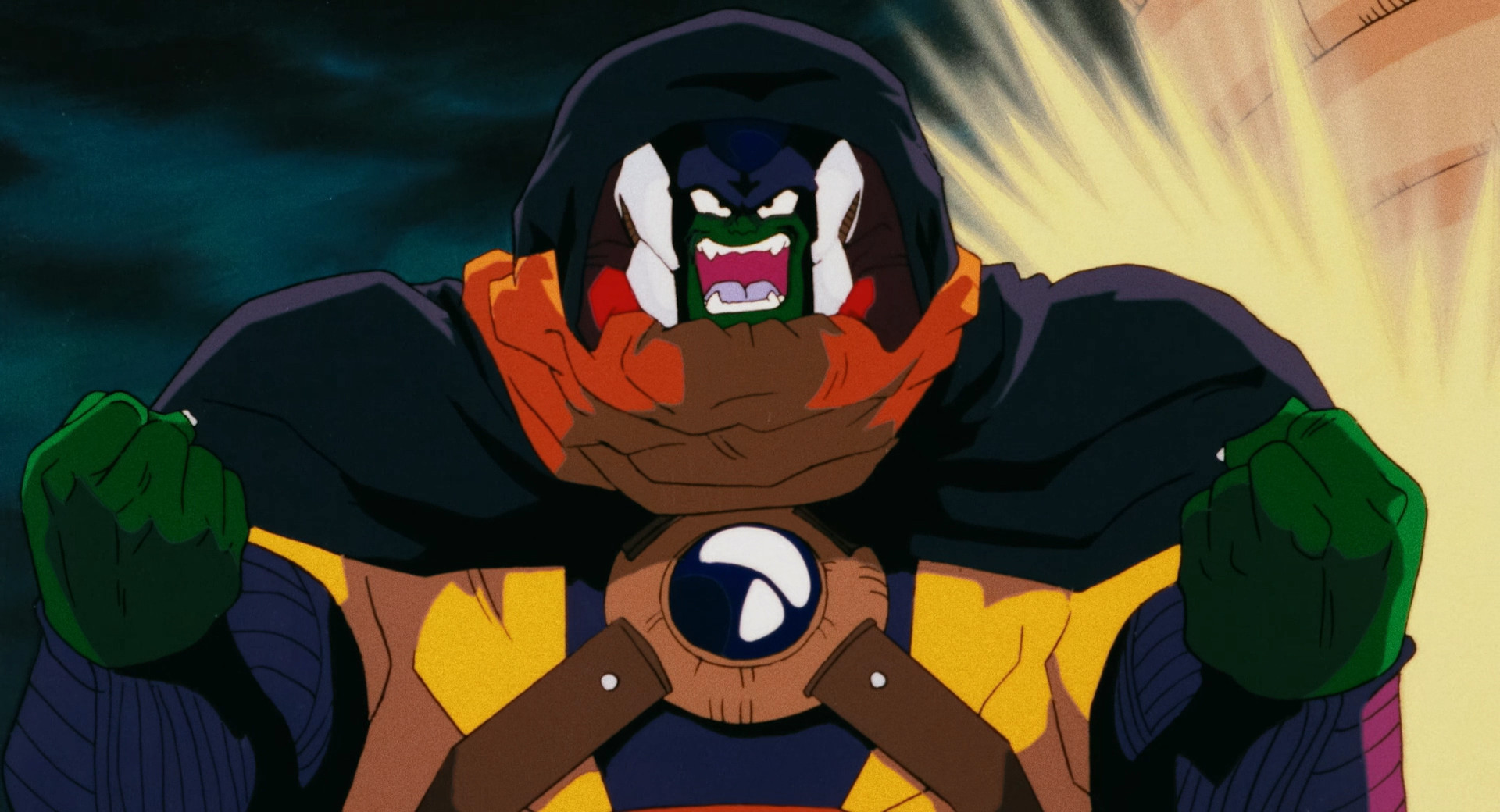
So it's a real shame just how horribly derivative this movie is otherwise. This movie recycles so many concepts from the main series that it's kind of baffling. Slug desires the Dragon Balls to restore his youth, exactly like Demon King Piccolo. In fact, we later learn that Slug is a Namekian, just like Piccolo (as if the mazoku weakness to sunlight wasn't already nonsensical enough). The mazoku brutalize Gohan and Piccolo, but are then quickly dispatched by Goku who just so happened to show up at the last minute, just like he did in the Piccolo story arc... And the Saiyan story arc... And Freeza... And even Cell now that I think about it. But at least in all of those examples, they actually had reasons for employing that trope that felt (relatively) organic to the story. This movie doesn't even really try to justify Goku's absence up until that moment.
And of course, there are the old Dragon Ball Z movie bread-and-butters: Piccolo shows up just in time to save Gohan, Kuririn exists just to get his butt kicked, everything is a vehicle for the boring fight, Goku ends the fight with a Genki Dama, etc. It's such a waste of potential.
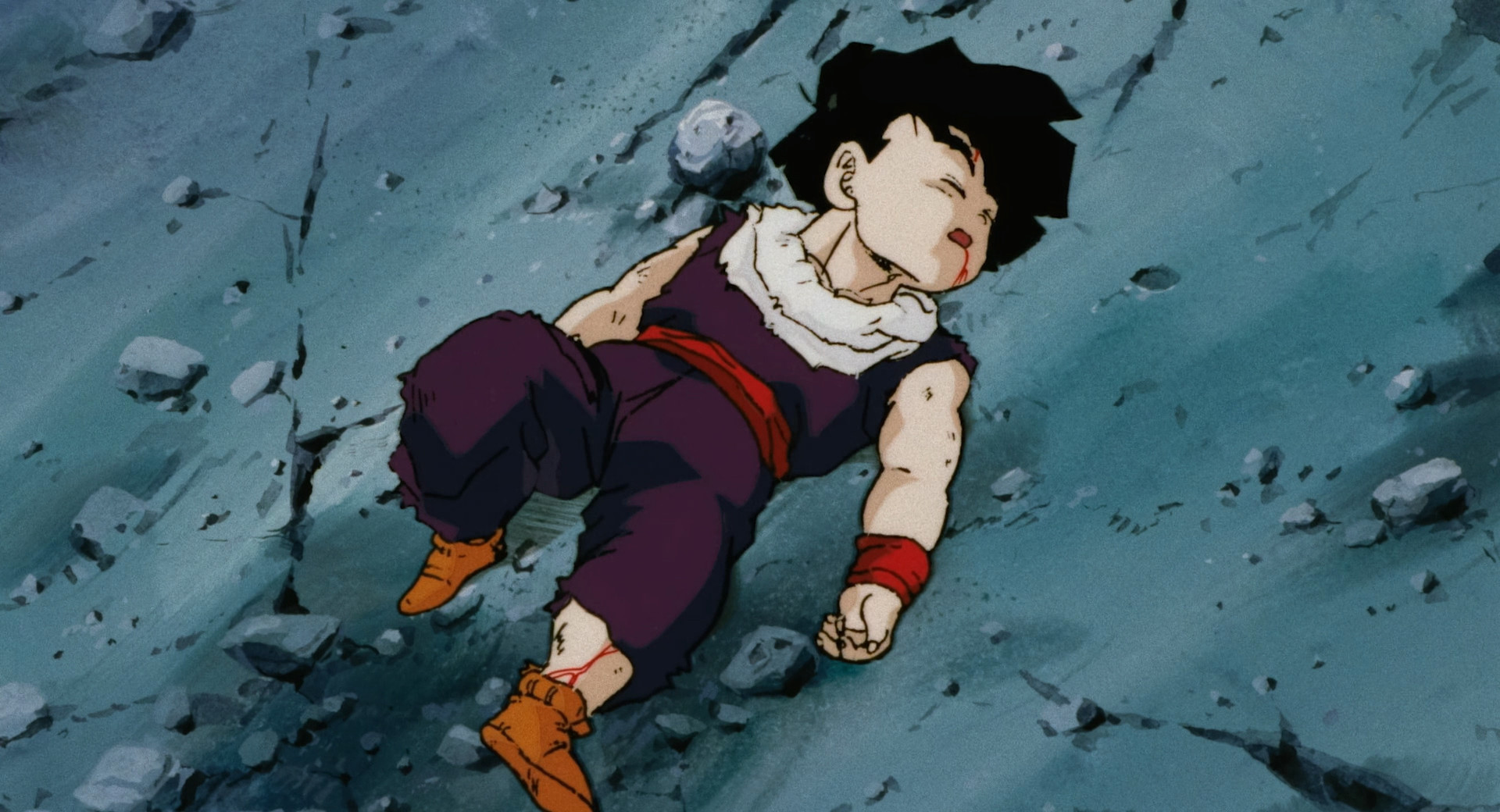
As far as Dragon Ball Z films go, you can certainly do worse, but this one fails to leave much of an impression.
15. Dragon Ball Z: Fusion Reborn
Dragon Ball Z: The Rebirth of Fusion!! Goku and Vegeta
This one is a bit complicated. This is a movie that I have very few issues with, but I find myself putting it quite low on the list, beneath movies I have plenty of clear-cut issues with, such as Dead Zone or The Tree of Might. No matter how hard I try, I can't bring myself to put this movie any higher on the list.
To me, Fusion Reborn is the bare minimum executed gracefully. While I have very few issues with this movie, it just doesn't grab me the way other movies do. I think it comes down to Janemba, who I just don't find to be a terribly compelling villain. His design is fantastic, and I find his powers to be really memorable, but at the end of the day he's a pretty shallow copy of Majin Boo.
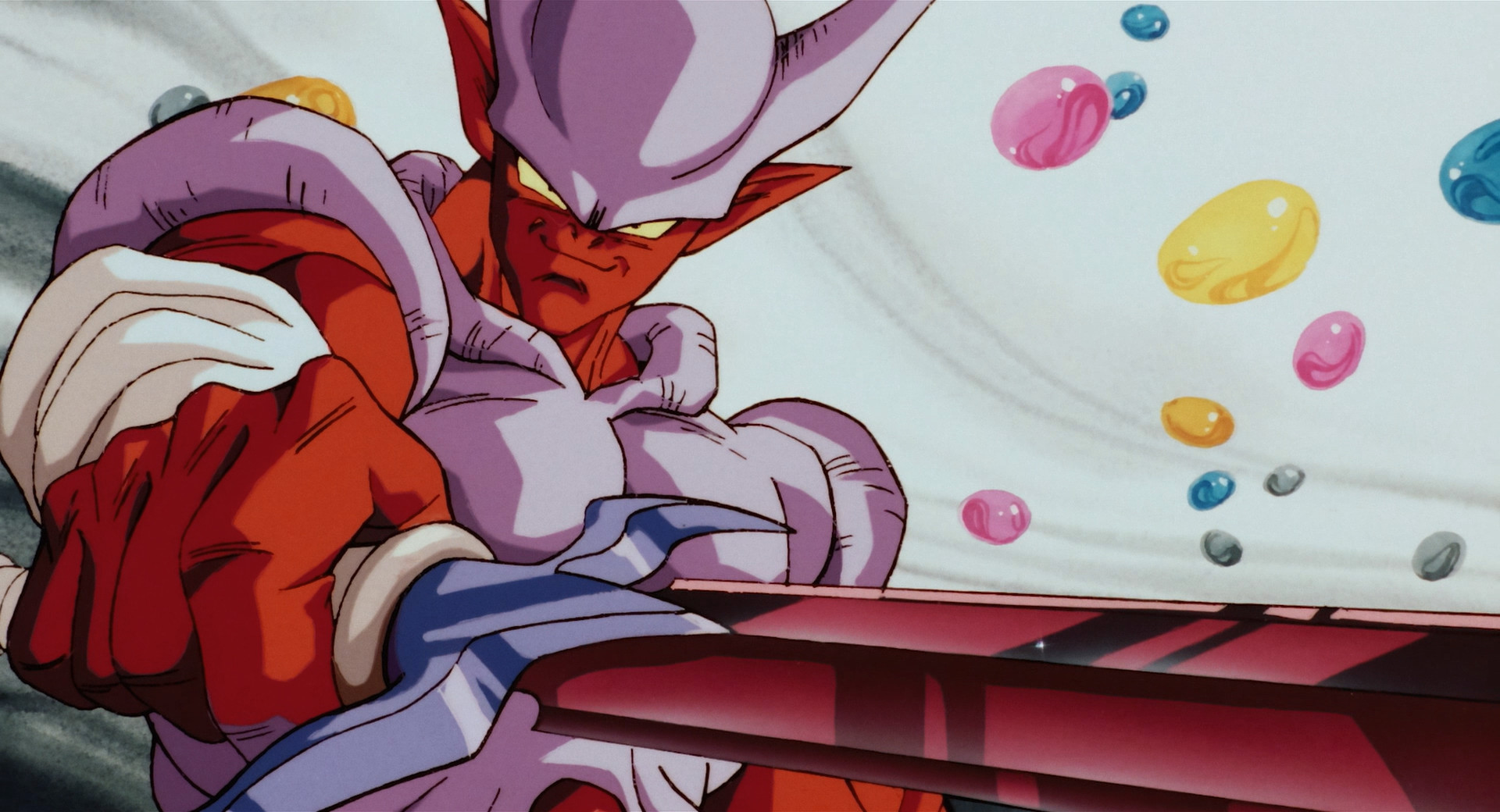
The setting of this movie, while leagues ahead of the boring landscapes seen in the series or in movies like Super Android 13! or The Return of Cooler, is a little too abstract for my tastes. The movie does use the alien landscape in some interesting ways, but I think I would have preferred something a little more grounded, or seeing them get to take the fight to different locations, à la Bojack Unbound.
And, staying true to the Dragon Ball Z Movie Formula™, much of this movie is devoted to boring fighting that doesn't progress the plot. Fusion Reborn at least brings some really stellar animation to the table. Janemba's strange, blocky teleportation is such a unique visual.
As a consequence of Janemba's actions in Hell, the dead end up coming back to life, giving our supporting characters some fun fodder to beat up on in the B plot. This leads to a very bizarre series of events where Goten and Trunks fight a Hitler caricature, which is... Odd, to say the least. It certainly wasn't on the Dragon Ball Z bingo card.

I realize that I'm making this movie sound much worse than it actually is. There is definitely a lot to admire about this film. I really enjoy the opening scenes taking place in the afterlife. Toriyama's afterlife was such a cool setting that was really underutilized in the manga. It makes a great first impression in the Saiyan story arc, but then it hardly ever comes up again. This movie allows us to see more of the afterlife's technology and culture. There are also some slice-of-life scenes between Videl and the Son family, which I always enjoy seeing. Dragon Ball typically didn't devote lots of time to letting readers just sit down and relax with its characters, usually because the story's world-ending stakes didn't allow for it. The standalone nature of the Dragon Ball Z films allows us to see these characters in a new light, which is always a treat.
Something else I admire about this movie is Gogeta, the long-anticipated fusion of Goku and Vegeta. What I really like is just how short his appearance is. The meat of the Gogeta conflict is getting Vegeta to overcome his reluctance to fuse with Goku. Actually getting to see Gogeta isn't all that important. For the movie seemingly all about Gogeta, Fusion Reborn contains hardly any Gogeta (unless you count the fat Gogeta caused by the failed fusion).

...Of course, I'm not sure that Gogeta's appearance really needed to be that brief. I really can't emphasize enough just how little Gogeta appears in this movie. Once the fusion is complete, Gogeta immediately kills Janemba. I love that the movie doesn't overindulge the Gogeta fight, but it's not like the rest of its runtime was utilized all that well. Would it have been so bad if we got to see a little less Hitler in favor of a little more Gogeta? Not sure. All I can say for certain is that it could have been a whole lot worse... I vastly prefer this approach to Gogeta than the absolute snooze fest we have to endure at the end of Dragon Ball Super: Broly.
I would say that this is probably the worst Dragon Ball Z film that's still worth watching. I urge you to keep this in mind as we progress through the list, because while I'll have bad things to say about all of them (even the very best), I would say these films are worth your time. Well, depending on who you are. Fans of Dragon Ball will enjoy this film, even if for no other reason than its impact on the manga.
I almost forgot to mention! Gogeta is unique in that he is the first appearance of a fusion of Goku and Vegeta. Not wanting to step on Toei's toes, Toriyama was inspired to create an alternate fusion method via the Potara earrings, and give his fusion a different, considerably less coherent name: Vegetto.
14. Dragon Ball Z: Dead Zone (1989)
Dragon Ball Z
So how about that Japanese title? When I complain about the Japanese titles being needlessly complex, this isn't what I had in mind. This film is often known by the tag line Return My Gohan!, and this title was used as the basis for various translations, such as the official Spanish name: ¡Devuélvanme a mi Gohan!
Quite frankly, this movie is much higher on the list than it has any business being, and I think this exposes my biases. I might go so far as to say that Lord Slug or especially Fusion Reborn are just superior films, but I would much rather watch this one.

It all comes down to the vibes. I strongly prefer the mystical Chinese martial arts fantasy aesthetic of early Dragon Ball to the sort of science fiction/space fantasy that the series would become known for. This movie feels like one last hurrah for the classic style of Dragon Ball. Honestly, for as much as I clown on the movie's Japanese title, I actually find it rather fitting.
For those of you that don't know, Dragon Ball is just one manga. From Goku meeting Bulma to him leaving with Oob, the series was always known in Japan as Dragon Ball. At one point during the series, the anime staff wanted to rebrand — I'll keep it simple and say that it was ultimately for marketing reasons. Toei approached Toriyama and asked him to come up with a name, so he responded with Dragon Ball Z, the rationale being that Z is the last letter of the English alphabet and Dragon Ball Z was meant to represent the final chapter of Dragon Ball, since he had intended to end the series soon. In a rather cruel twist of fate, the "Z" portion of the story ended up being considerably longer (almost twice as long!) than what preceded it. The name was merely an idea given to Toei by Toriyama, who would continue to call his series Dragon Ball until the very end. As it stands now, "Z" just sort of exists as this odd appendix that tends to confuse fans.
This movie, on the other hand, does feel like the end of classic Dragon Ball. The very next film, The World's Strongest, leans heavily into the franchise's science fiction influences. No film after this one will ever truly return to this aesthetic. Even though, as we'll discuss, this movie heavily recycles concepts from the Saiyan story arc, specifically the fight against Raditz, I (almost) don't mind, for the same reason I don't mind seeing the first arc of Dragon Ball adapted in The Path to Power; there's more than enough here to satisfy someone who was just morbidly curious to see how this differs from the canon events.
I like to speculate about an alternate reality of Dragon Ball where Chinese martial arts fantasy continued to be the series' primary aesthetic, and this movie scratches that itch very nicely. I love seeing Goku fly around on Kinto'un and use the Nyoi-bou, since we virtually never get to see an adult version of Goku using them. I also love the appearance of God (a.k.a. Kami) in this film. Even if it ultimately doesn't amount to much, it's refreshing to see these characters and concepts after the series had begun to neglect them.
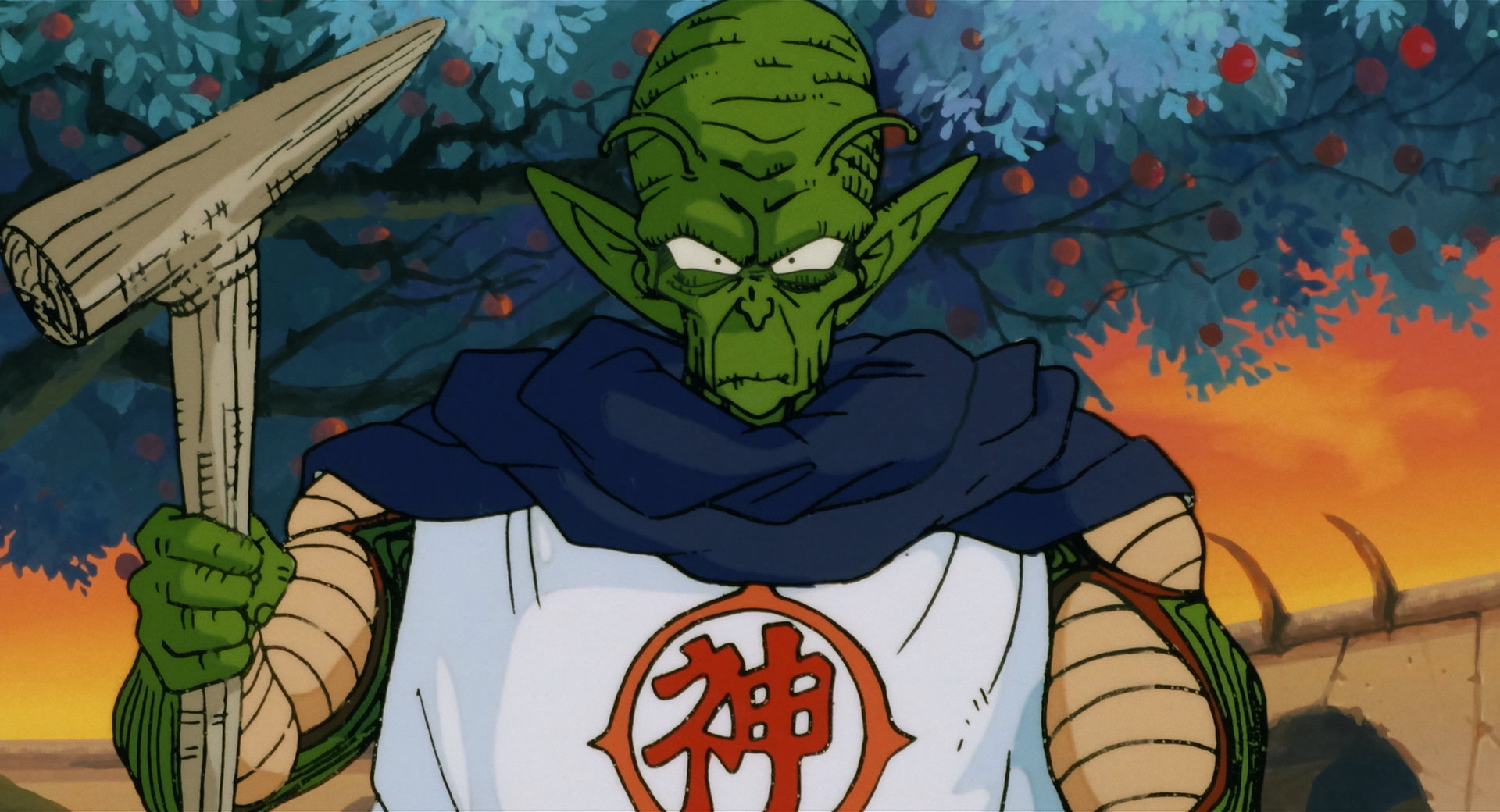
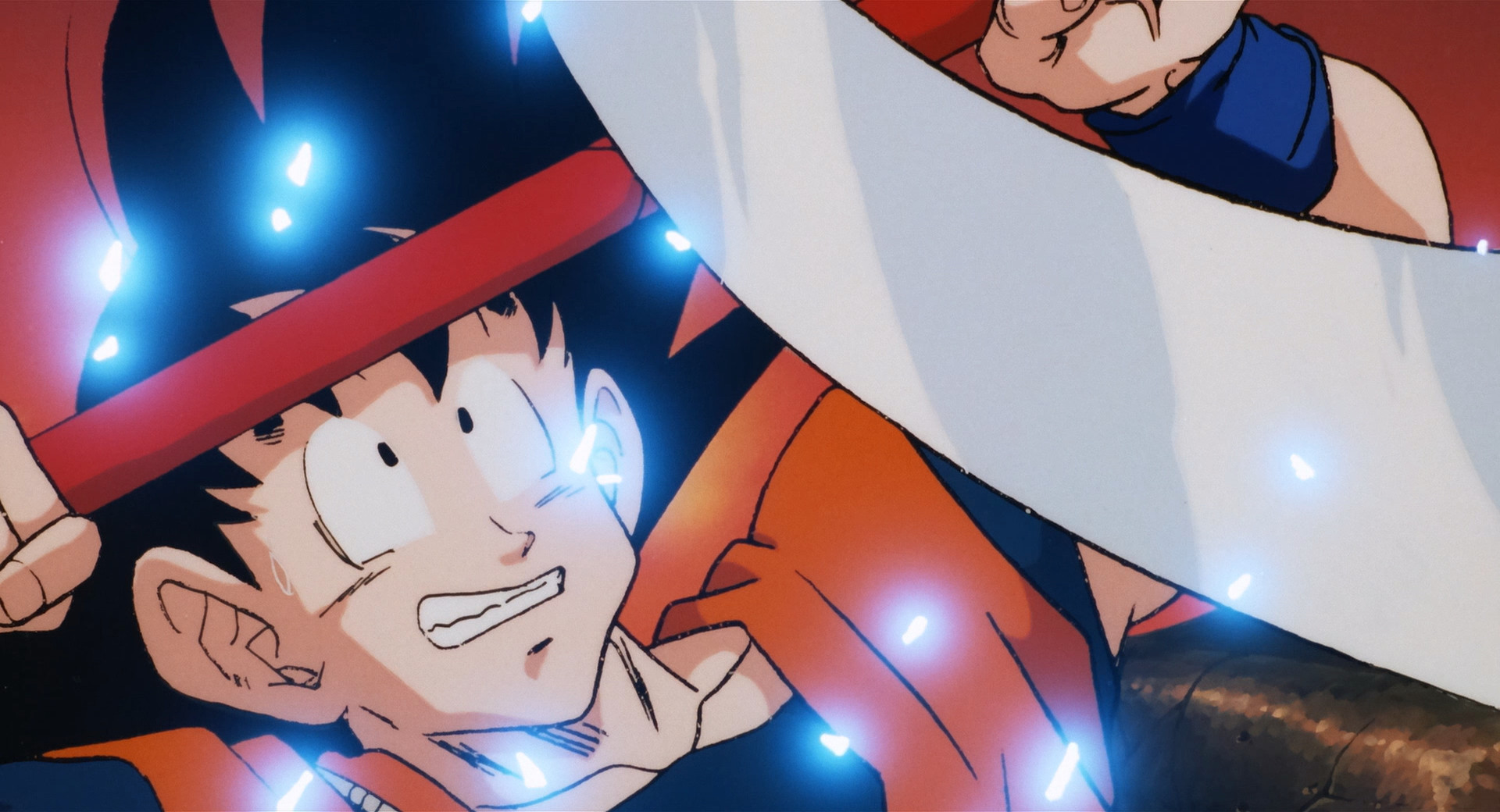
And speaking of aesthetics, this is an absolutely gorgeous film. Garlic Junior's castle might be my favorite setting in any Dragon Ball film. The deep red skies have such a nice contrast with the comparatively muted color palette of the courtyards Gohan runs through in the beginning of the film.

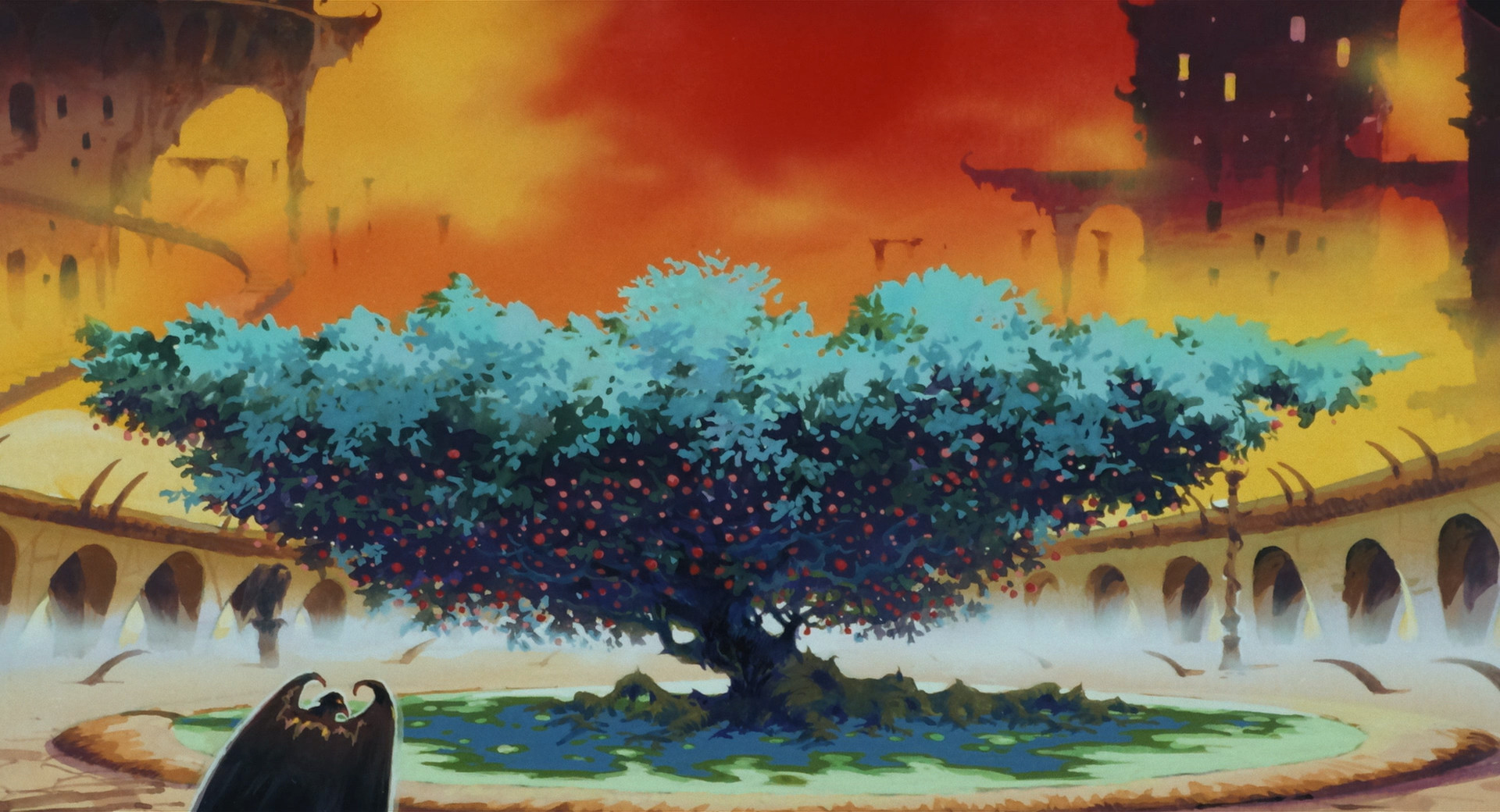
The animation as a whole is really fantastic, and I love the effect used in Garlic's backstory. It reminds me of the beginning of Sleeping Princess in Devil's Castle.
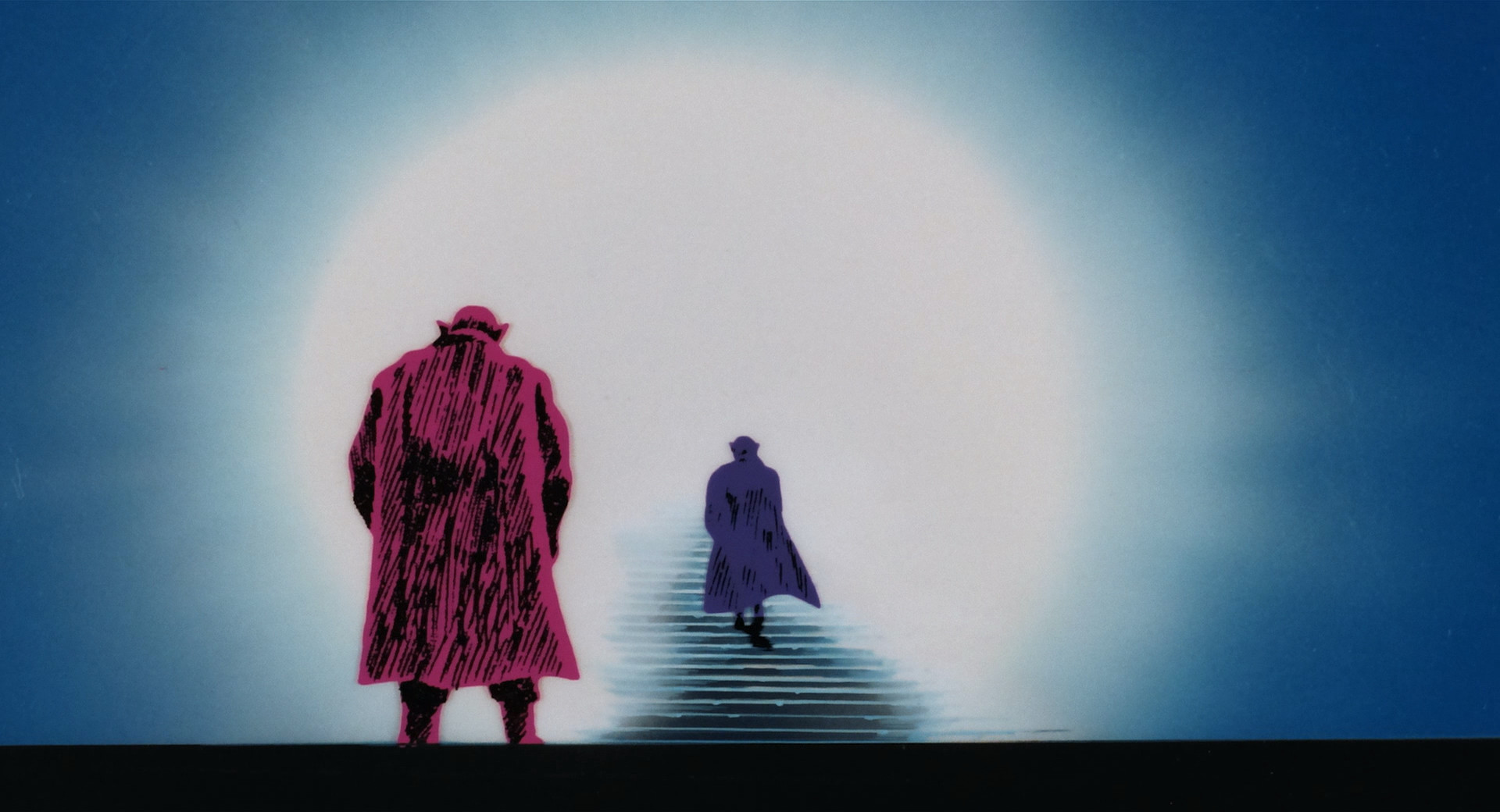
I also think this movie has the best music out of any of the Dragon Ball films. The motif used for Garlic Jr. is a really powerful and foreboding melody, and it's always used to great effect. The track that plays when Garlic Jr. fights against Goku and Piccolo in his powered-up form is a really iconic track that gets used a lot in the anime, during some of its most pivotal scenes. There's also a really creative piece of music that combines Piccolo's motif from the series and Makafushigi Adventure, Dragon Ball's first opening song that was often used as a motif for Goku. It adds so much energy to what is otherwise a pretty unremarkable scene, when Goku and Piccolo team up against Garlic Jr.
So why isn't this movie higher on the list? Well, it mainly comes down to Garlic Jr., who is one of the lamest Dragon Ball villains. I enjoy his design... And that's about it. His design gets considerably worse after he transforms so... So much for that. Not even the Japanese voice actor, Akira Kamiya, can redeem him. Anyone with a passing interest in anime is likely to recognize Kamiya as the voice of Kenshirou from Fist of the North Star (I know him and love him as Mendou in Urusei Yatsura). He's a legend and it's a real shame that his only appearance in Dragon Ball was wasted on such a bland character. His connection to God is an interesting angle, but it only serves as a thin justification for the boring fighting.

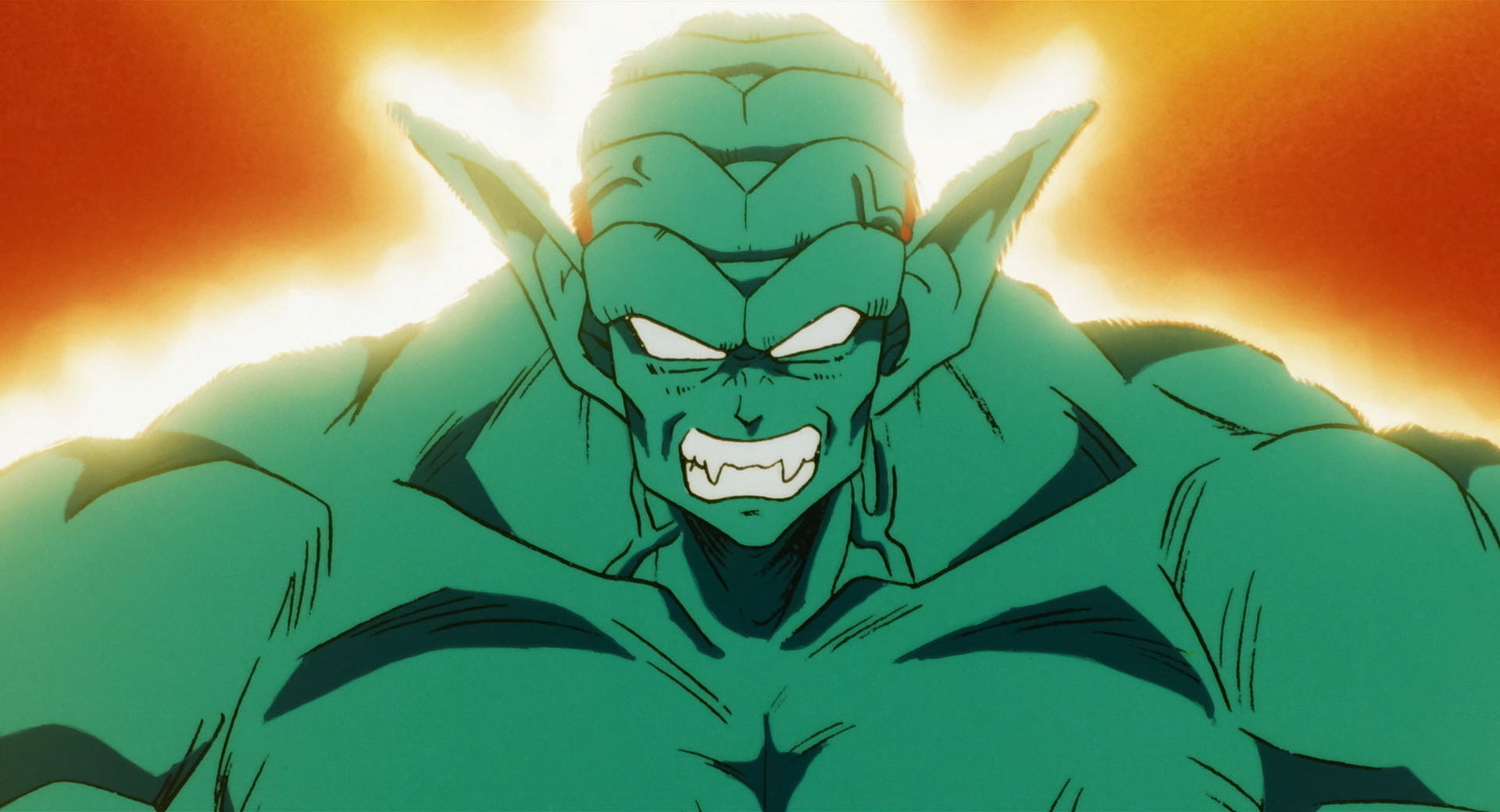
And the fighting in this movie is literally pointless. Garlic Jr. gathers all seven Dragon Balls and wishes for immortality. This happens before the fighting begins. We know that Garlic Jr. cannot be beaten by conventional means, and so do the characters, who still insist on fighting him despite that. Garlic Jr. tells them multiple times, Goku sees the Dragon Balls scatter from the castle, but the characters never stop to come up with a strategy. When I criticize fighting for being "pointless", most of the time I'm referring to the fact that it doesn't advance the plot or highlight any interesting themes. I don't mean to say that the fighting serves no functional purpose to the characters. They already know they can't win by conventional means, but just spend time bashing their heads against the Garlic-shaped wall anyway.
There are some other moments of bizarre logic, such as the villains' plan to kill Piccolo before gathering the Dragon Balls. I always remember thinking that the Movie Villain Henchmen™ just weren't aware of Piccolo's connection to the Dragon Balls, but later on they see God and immediately make the connection between him and Piccolo. This is never elaborated on. It's pretty clear that them seemingly having killed Piccolo was just to drum up some cheap drama in the beginning of the film.
Lastly, there's also the issue I alluded to earlier, that being just how unapologetically this movie borrows concepts from the Saiyan story arc, such as Goku and Piccolo needing to team up against Garlic Jr. or Gohan's hidden power being the key to victory. I don't think it's fair to compare a 50 minute long self-contained film to months of manga serialization, but the movie brings it upon itself. All of the Dragon Ball Z films are derivative of what was relevant in the manga at the time, but I don't think any of them copy character interactions and even bits of fight choreography as blatantly as Dead Zone.
While my love for this movie's style won't allow me to put it any lower, its clunky story and tedious fighting won't let me put it any higher.
13. Dragon Ball Super: Broly (2018)
So I hope you were paying attention earlier when I said that my opinions don't always conform to the fan consensus. Truth be told, I'm pretty oblivious when it comes to fan perception of things, as I try to avoid social media at all costs, but I'd have to imagine that this movie is really popular with fans. It's got the biggest fights, transformations, power levels, and all the stuff that fans of Dragon Ball Z swoon over. So I feel the need to remind you all that I do not hate this film. I had mostly positive things to say about Dead Zone, and I consider this movie to be superior.
I remember having a conversation with my good friend Edward Liam,
whom some of you reading may remember from our video about Pixar's films. In
our discussion of Incredibles 2, Liam mentioned that he liked half of
the movie; not meaning that there were clearly defined "good" and "bad" halves
of the film, but that he enjoyed roughly 50% of the film. That's how I feel
about Dragon Ball Super: Broly. To be clear, I think Broly has
more going for it than Incredibles 2.
Hope all that made sense because I'm going to make an even more perplexing statement: I think Broly is the best Dragon Ball film. I also think Broly is the worst Dragon Ball film. In other words, this movie has some beautifully high peaks, but also some horrendously low valleys. Part of the reason I find myself becoming so frustrated with Broly is that it has so much potential, not unlike Broly's first film, Broly — The Legendary Super Saiyan, but just like that film, Dragon Ball Super: Broly makes some pretty spectacular blunders.

Broly is unique in that it takes characters from Dragon Ball Z's original material (i.e. movies and TV specials) and repurposes them to fit into Dragon Ball Super's canon. I often criticize modern Dragon Ball for feeling very derivative of the past, but this idea excited me at the time. Fans of my YouTube channel have probably heard me mention this before, but I really enjoy Crash Team Racing Nitro-Fueled despite the game's many issues. That game is a remake of CTR: Crash Team Racing, one of my all-time favorite games on the PS1. I don't enjoy it solely for that reason (if anything, I find most of Nitro-Fueled's changes to be downgrades), but I love the way it adapts Crash Nitro Kart. Crash Nitro Kart was CTR's spiritual successor on the PS2, Xbox, and GameCube, which had some awesome concepts that were marred by clunky, unsatisfying controls and long load times. Nitro-Fueled brings over all the tracks and characters from Crash Nitro Kart, putting all that wasted potential to good use. Seeing as how I complained so much about Broly — The Legendary Super Saiyan, hopefully you'll begin to understand why I bring this up.
And sure enough, Dragon Ball Super: Broly does manage to capitalize on some of that wasted potential in really satisfying ways. I always loved the idea of Broly being a slave to his enormous power level, that he's not only dangerous to others but to himself. Paragus's flashback in Broly — The Legendary Super Saiyan establishes this concept, but it's ultimately shoved to the side after Broly's transformation, which reduces the character to a boring, maniacal super villain. The "chained animal" side of Broly is on far greater display here. Despite him being the antagonist, we often root for Broly, since we see how he's taken advantage of, that he "can't help it" so to speak. The idea that Paragus is also a slave to Broly's power was something I already liked about the original film, and it's utilized even better here.
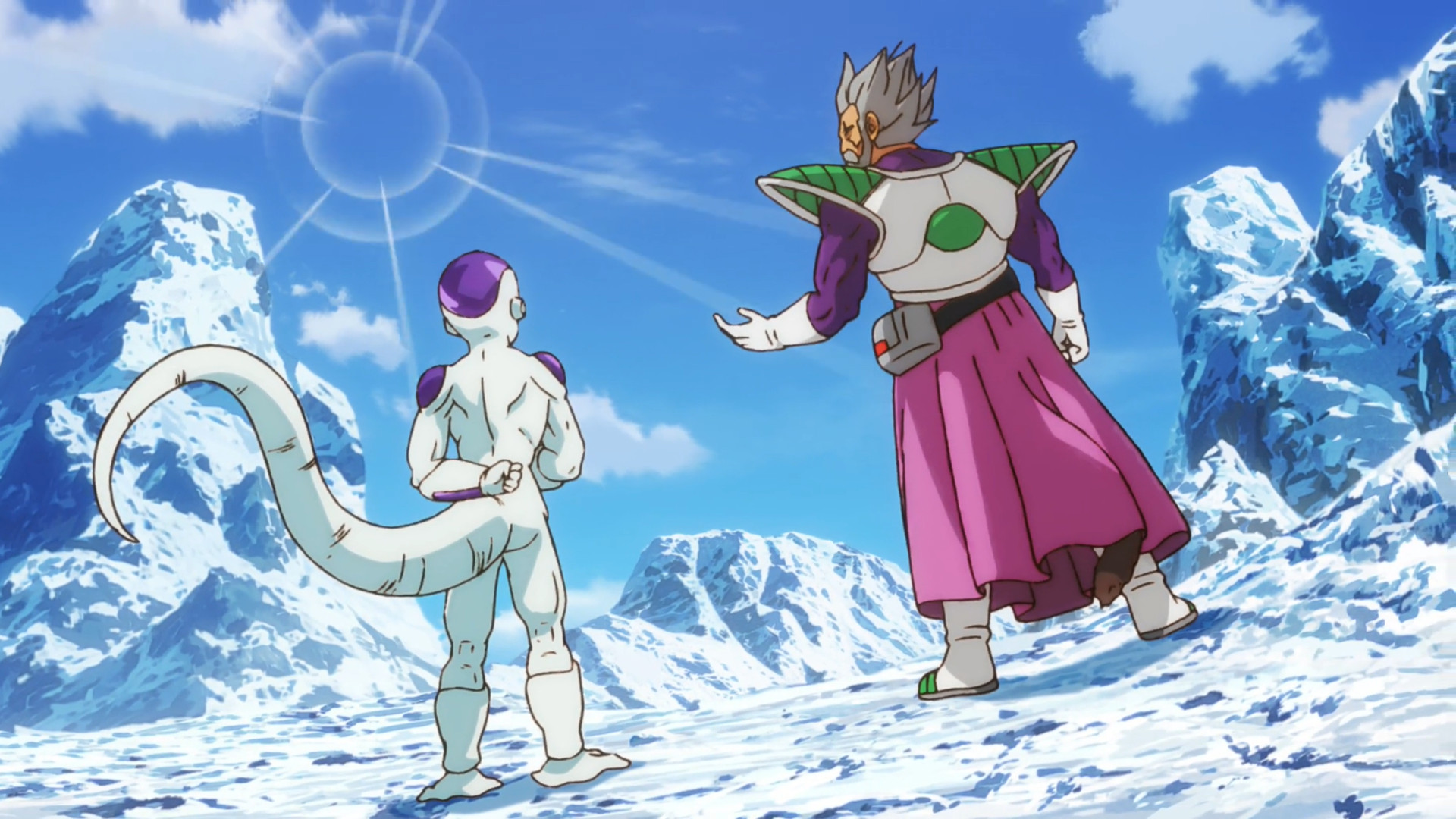
At the beginning of the film, King Vegeta banishes Broly to an inhospitable desert planet. Paragus rushes to his aid, but ends up becoming stranded. He and Broly are eventually discovered by Freeza's forces years later, and Freeza recruits them in his revenge against Goku and Vegeta. When Broly's fight against them begins, Paragus and Freeza give commentary on the fight, which I really enjoy despite not being a huge fan of the trope. Paragus anxiously watching on as Freeza grades Broly's performance iterates on that dynamic between Paragus and Broly that I loved so much. This culminates in one of the most darkly comedic moments in the entire franchise, wherein Freeza kills Paragus just to get a reaction out of Broly. I already thought that Paragus's death scene in the original film was great, but I think that this is the perfect way to give the character his comeuppance.
Sending Paragus and Broly to that desert planet also has another really cool effect on the story: It makes a very meta reference to years of power creep and transformations that have occurred since the original Saiyan story arc. This movie managed to hit me at a perfect time, as I was becoming reacquainted with the series after having largely forgotten about it. This movie was my proper reintroduction to Dragon Ball (to this day I've still never seen Dragon Ball Super), so Paragus served as somewhat of an audience surrogate for me. His reaction to Vegeta's Super Saiyan transformation is a great moment, which is hilariously juxtaposed with Freeza's response of “Oh? Is Broly not able to turn into a Super Saiyan?”
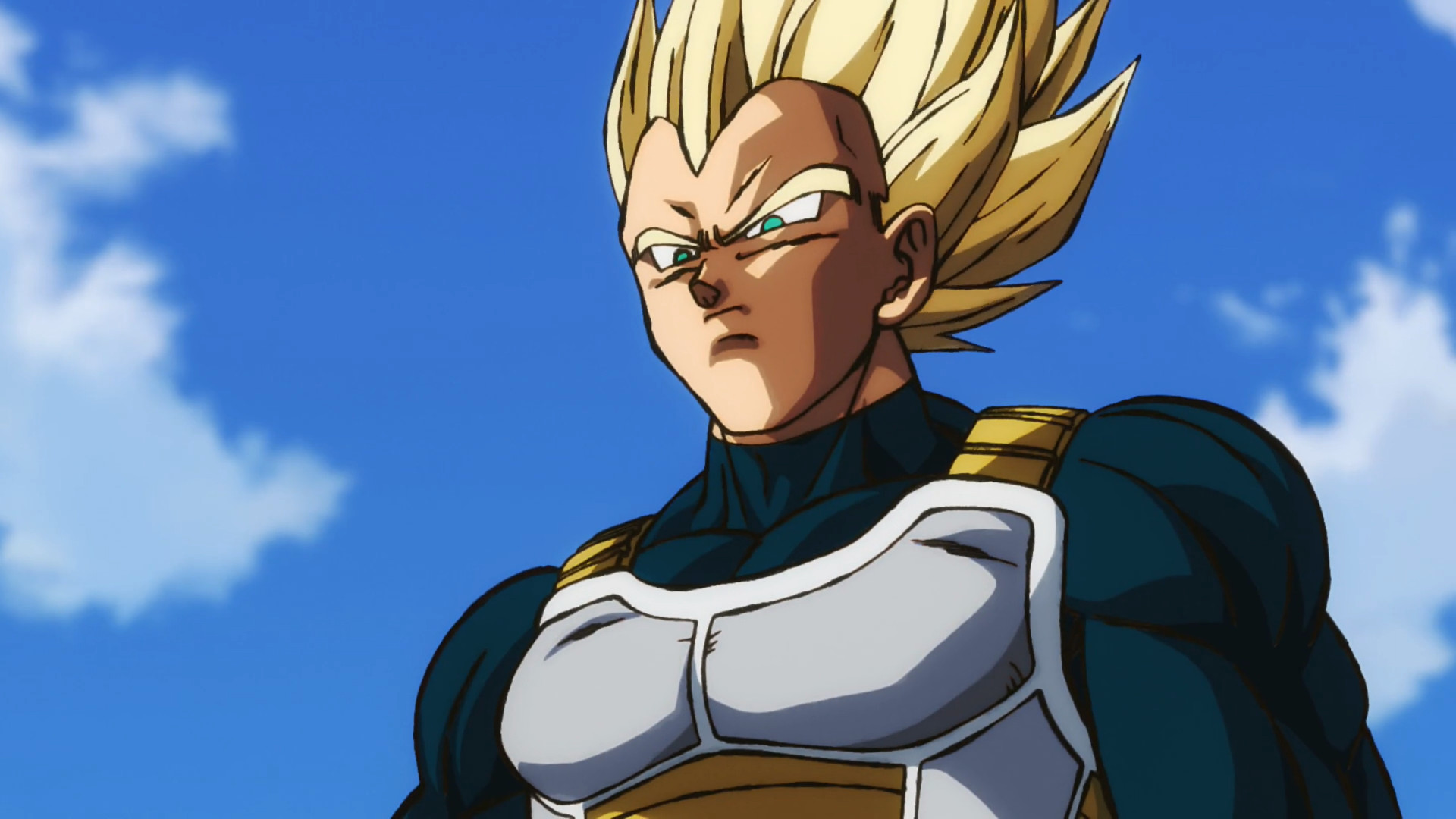
Sadly, not everything is an upgrade. There are some minor nitpicks, such as Paragus's strange design, which I find far less compelling than his original outfit. Broly's design is also an interesting one. While there are features I like, such as the pelt he wears around his waist (which is given some context later in the film), I think I preferred his original outfit. Seeing such a hulking brute shoved into such elegant clothes made for a cruelly entertaining contrast, it sort of reminds me of Goku wearing a suit in the beginning of that film. New Broly's cold, electrically-charged metallic collar is an inspired, visceral choice in its own right, but I think I still prefer the ornamental headband he originally wore. Now if that were all I had to complain about it, this film would be much higher on the list. But there's another change that I am far less tolerant of, and that is what this film does to Bardock (and what it does to Goku as a consequence).

Bardock was the father of Goku, who was killed by Freeza alongside the rest of the Saiyans during the destruction of Planet Vegeta. The Bardock special is interesting for how little it does to make Bardock unique, and I say that in a good way. He's no different than his bloodthirsty war-mongering Saiyan peers. When Bardock sees his son for the first time, he goes to read his power level, balks at how low it is, and casually determines that his son is completely useless. I love this because it doesn't cheapen a crucial theme of the Saiyan arc, that being the concept of nature vs. nurture. That arc culminates in a battle between the franchise's two most popular characters: Goku and Vegeta. Vegeta was naturally gifted with an extraordinarily high power level and has always enjoyed a life of luxury. Goku, by contrast, was sent away to a quiet backwater after the Saiyans decided he was worthless. Even though he was sent to Earth to destroy it, Goku paradoxically ended up becoming Earth's protector. It was through hard work and the friends he made along the way that he was able to defy the odds and beat Vegeta. It's possibly the most powerful context given to any fight in the whole series, and is one reason why the Saiyan story arc is so popular with fans.
Toriyama actually liked the Bardock special so much that he opted to include a small reference to it in the manga. Years later, Toriyama would write his own take on Bardock and Goku's backstory called Dragon Ball Minus, which is a rather appropriate name because it's Bardock minus everything that made him interesting. In this new, far less interesting story, Bardock suspects that Freeza is going to kill the Saiyans, so he sends Goku to Earth to keep him safe. It's implied that Bardock cares deeply about his son, which is a rare trait for Saiyans. In this new context, Goku's role as Earth's protector was fore-ordained, and his good-hearted nature was something he inherited from his father, rather than it being a consequence of the Saiyans' dismissal of him. Goku was spared from Planet Vegeta's destruction because he just so happened to be one of the only Saiyans that had a loving family, rather than him being unceremoniously discarded like bottom tier trash.
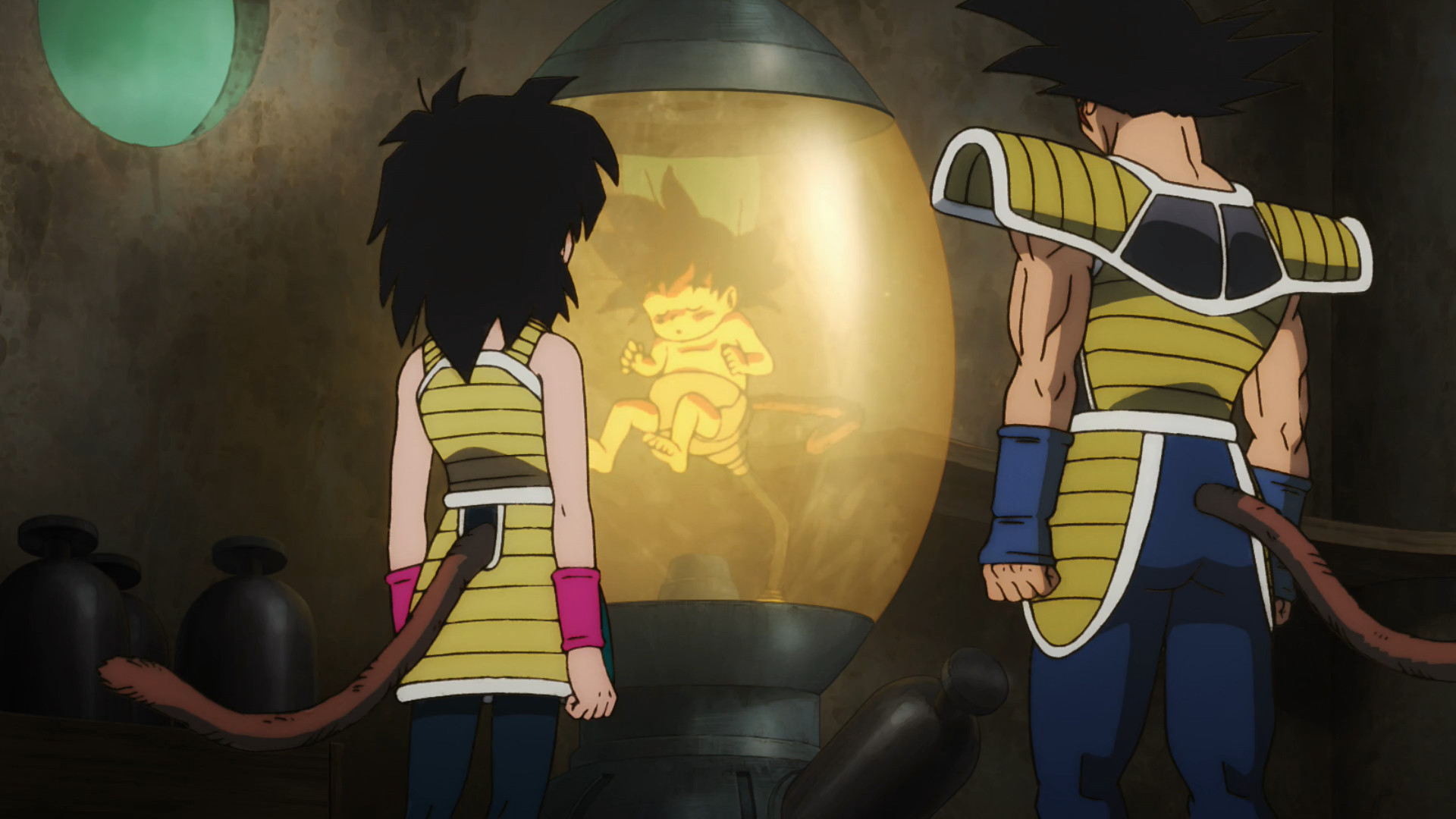
Dragon Ball Minus's one saving grace was that it was a relatively obscure 15-page short story shoved at the very end of a different manga. It was something that we could look back on years down the line as an amusing war story like Dragonball Evolution. That was until Dragon Ball Super: Broly drunkenly stumbled into the room, dedicating a large part of its prologue to retelling the events of Dragon Ball Minus, introducing it to a much wider audience and solidifying its horrible, stupid story into the modern canon. Ultimately it doesn't even really serve much of a role in the film. After Planet Vegeta's destruction, Bardock and the rest of the Saiyans are removed from the story and never mentioned or alluded to again. I really struggle to understand why they were included at all if the movie wasn't going to do anything with them. I'd be a little more willing to forgive Dragon Ball Minus's inclusion if it was in service to a greater story, but it isn't.
The most I could say regarding Bardock's inclusion is that it's meant to contrast Goku's upbringing with Broly's. Maybe Broly could have grown into a hero if he had a Bardock in his life; he could have gone on his own panty-stealing adventures with his own Turtle School buddies, but instead he was manipulated and abused by his psychopathic father. That's a cool idea that ends up going nowhere because of this movie's second major flaw:
Once the fighting begins, all progression of the plot comes to a grinding, screeching halt. All of the interesting plot threads that the first half of the movie spent developing are immediately dropped, and most don't reemerge after the fighting ends. And the fighting in this movie lasts an eternity. I actually went and timed it, Broly lands the first punch at 54:53, and the fight effectively ends at 1:29:17. 34 minutes is an absolutely ridiculous amount of time to dedicate to a fight. With the whole movie clocking in at 1:40:01 (including credits!) it literally takes up a third of the film. For the record, I can enjoy a good fight scene, but even my all-time favorites usually don't last more than a few minutes. What makes fights interesting is context. Fighting is only interesting when we're given reasons to care about it, and Broly seriously fails to deliver on this front.
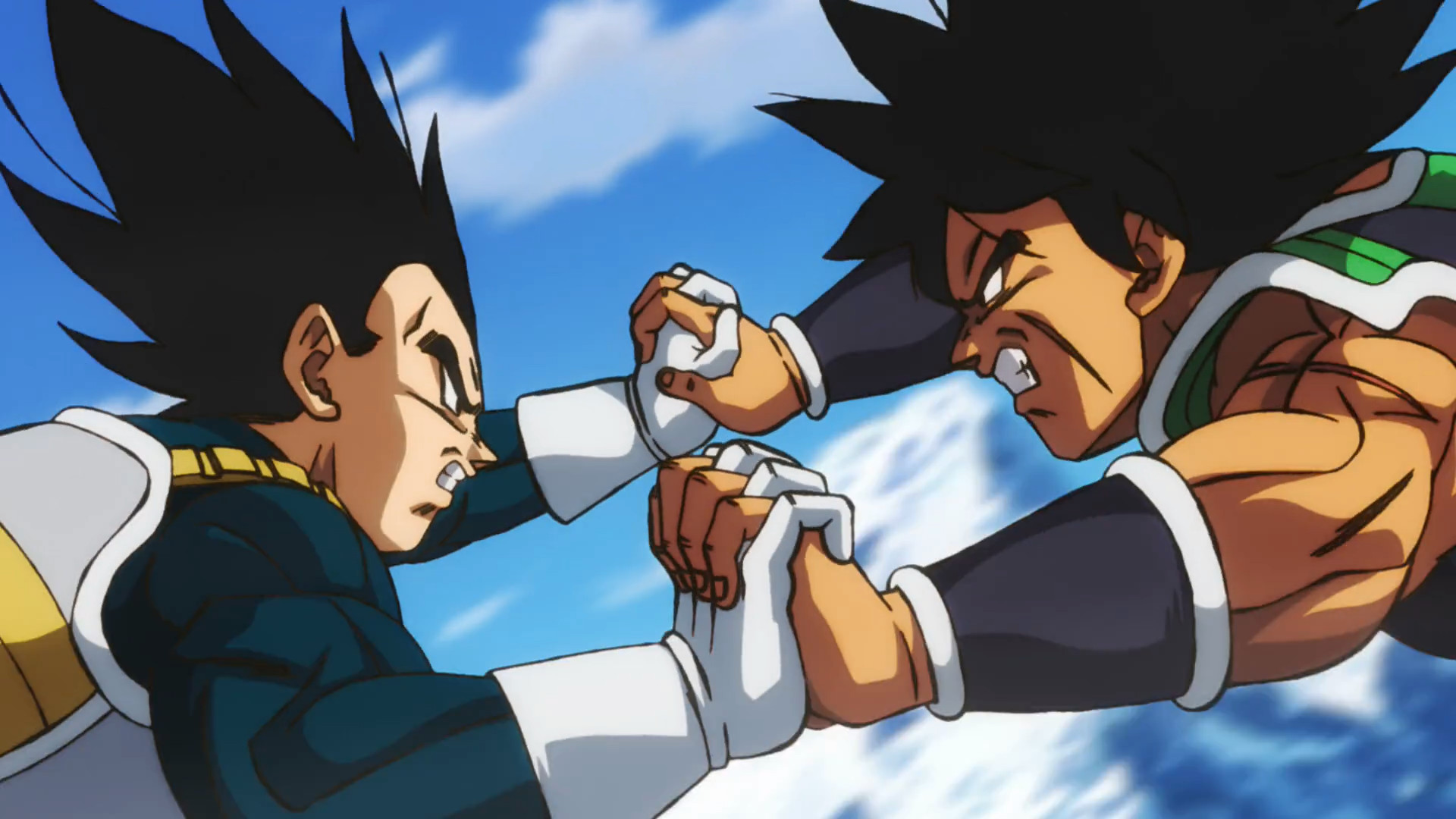
And it's maddening because Dragon Ball Super: Broly shows some great potential here. Broly's fight with Vegeta is an exciting way to kick off that act of the film, and might just be one of my favorite fights in the franchise. The match begins with Broly barely able to hit Vegeta in his base form, and ends with him overpowering his Super Saiyan God form. Watching Broly struggle, adapt, and overcome Vegeta's transformations makes the character feel powerful, which is a big deal for modern Dragon Ball, where feats of strength are almost never impressive; There's only so many ways you can tell me that someone can blow up a planet before it stops being interesting. Broly being able to close the gap between him and Vegeta so quickly doesn't make too much sense, but I think Broly's unwitting defiance of the power-scaling rules is what makes him so intimidating. There's lots of memorable fight choreography that keeps things engaging.
Broly's ensuing fight with Goku is considerably less impactful, because I don't think Goku really serves much of a role in this story. Broly has no vendetta against Goku in this continuity, and Paragus only has qualms with Vegeta. In fact, Freeza tells Paragus that, while he may do as he likes with Vegeta, he must not kill Goku, because Freeza wants to kill him personally. When Broly starts tossing Goku around like a rag doll, Freeza should object. Ultimately, I still do think Goku's fight against Broly is enjoyable, simply because it's elevated by some really exciting fight choreography and a really fun piece of music, with chanting of the characters' names that's actually a fun real-world reference. When Dragon Ball Super's finale aired, many viral videos came from Latin America, where entire stadiums of fans would chant characters' names as they appeared on screen. Dragon Ball has been hugely popular in Latin America, so it's really heartwarming to see the franchise repay the favor.
There's a really cool moment later in the fight where Goku tries to talk to Broly and calm him down, while restraining him in an energy field of some sort. The maneuver ultimately fails, and not in an interesting way. I would have preferred to see Freeza step in and try to rile up Broly, or maybe Paragus could have yelled something at Broly, causing him to become enraged and break free. As it stands now, it's an interesting little moment that doesn't go anywhere because the boring fighting needed to continue.

And at this point, the well of interesting ideas has been totally dried up, but the fight continues to go on for what feels like an eternity. The animation even begins to suffer at this point, with some unflattering looking CG. There's also one moment that looks so jarring and out of place it's kind of crazy that it managed to end up in the movie. Broly creates a giant energy ball and we're suddenly transported to an entirely different looking film for a few seconds. But I don't think the best animation in the world could have managed to keep the fight engaging, since at this point the movie devolves into power tennis. Goku and Vegeta are weaker than Broly, so they lose. That's it. It's only with the help of a wacky new transformation that they manage to become stronger than Broly. Goku and Vegeta are stronger than Broly, so they win. That's it. There's no sort of interesting strategy employed, they just power up and become stronger than him.
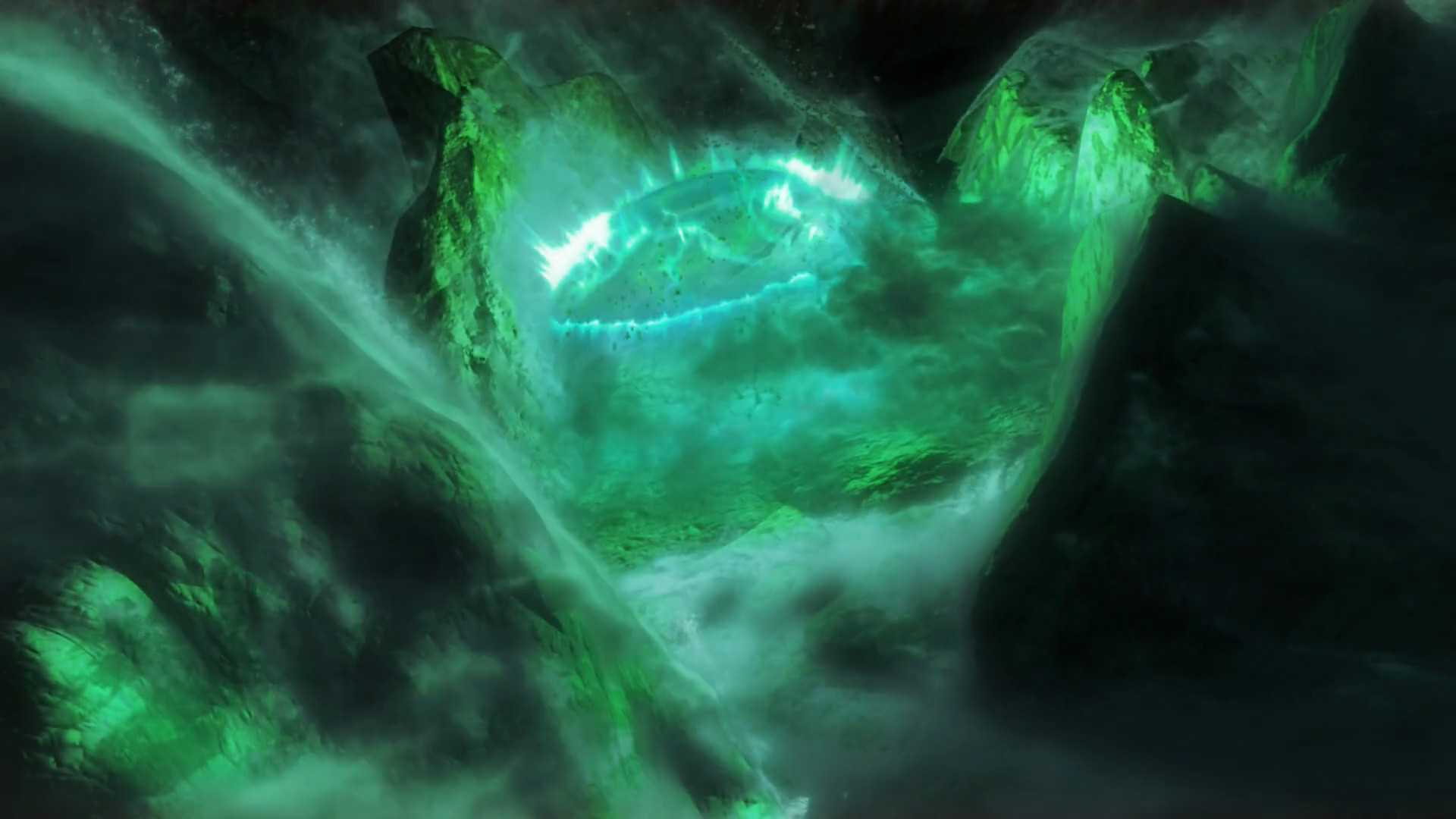
And that wacky new transformation is actually an old one. The two merge and become Gogeta, which wasn't ever foreshadowed or alluded to at any point earlier in the film. It's just gratuitous fan service that makes for an incredibly uninteresting ending to a fight that stopped being interesting 20 minutes ago. Gogeta's portion of the fight against Broly is absolutely insufferable. His portion of the movie isn't even all that long, only around 7 minutes or so, but it's 7 minutes where absolutely nothing interesting happens on top of a fight that didn't need to be more than 5 minutes. I distinctly remember watching this film for the first time, seeing Gogeta gear up to do the big Kamehame-Ha, and thinking "oh, is it finally ending?" In Goku's fight with Vegeta during the Saiyan story arc, there are clear signs of damage that develop as the fight goes on, giving readers a tangible sense of progression to the fight. You could point to any panel from the fight and instantly tell how long it's been going on for. No such signs exist in Gogeta's fight with Broly; The last minute of the fight isn't visually distinct from the first in any way. And to add insult to injury, there's plenty of ugly looking CG and jank animation on display.
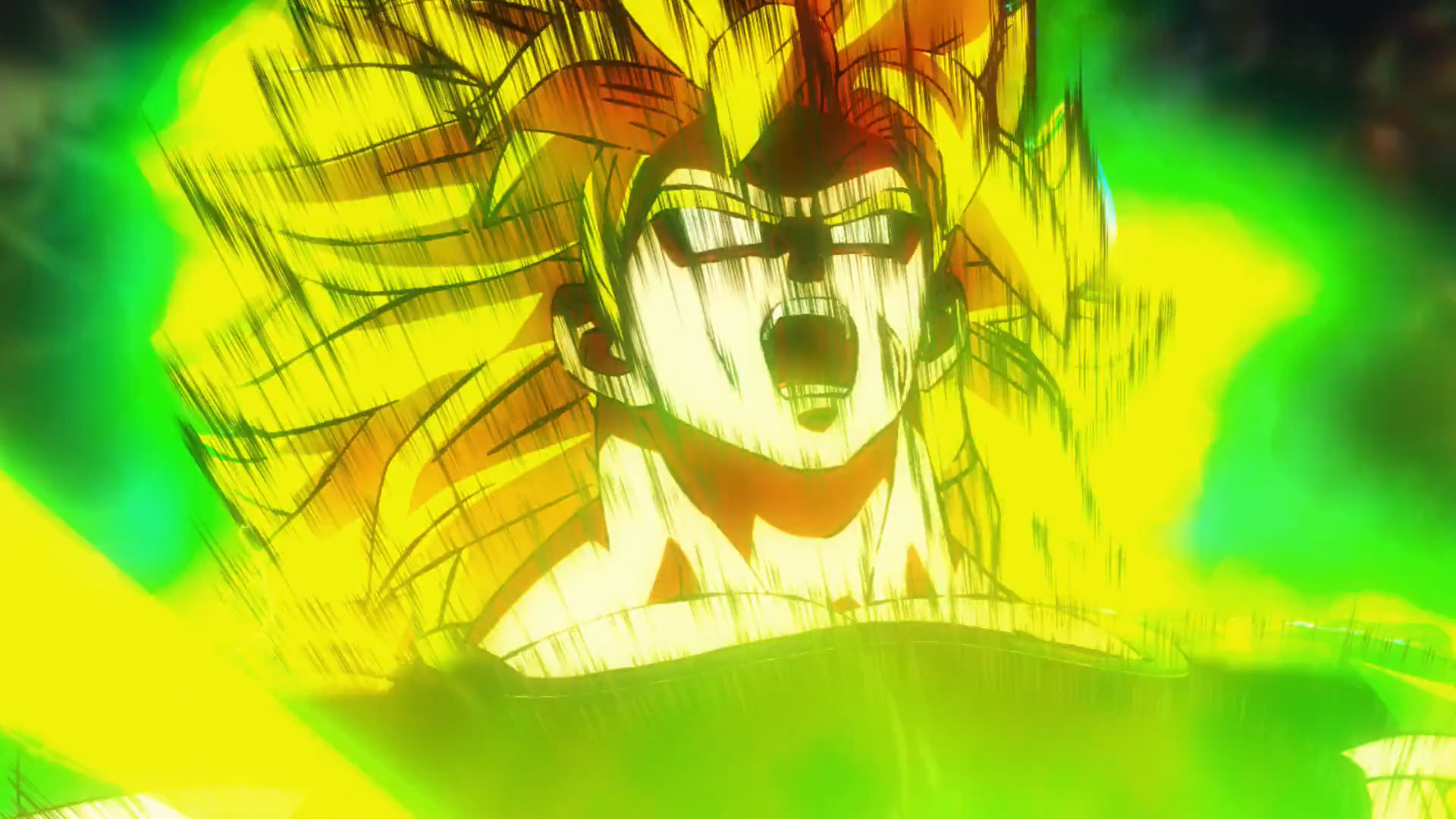
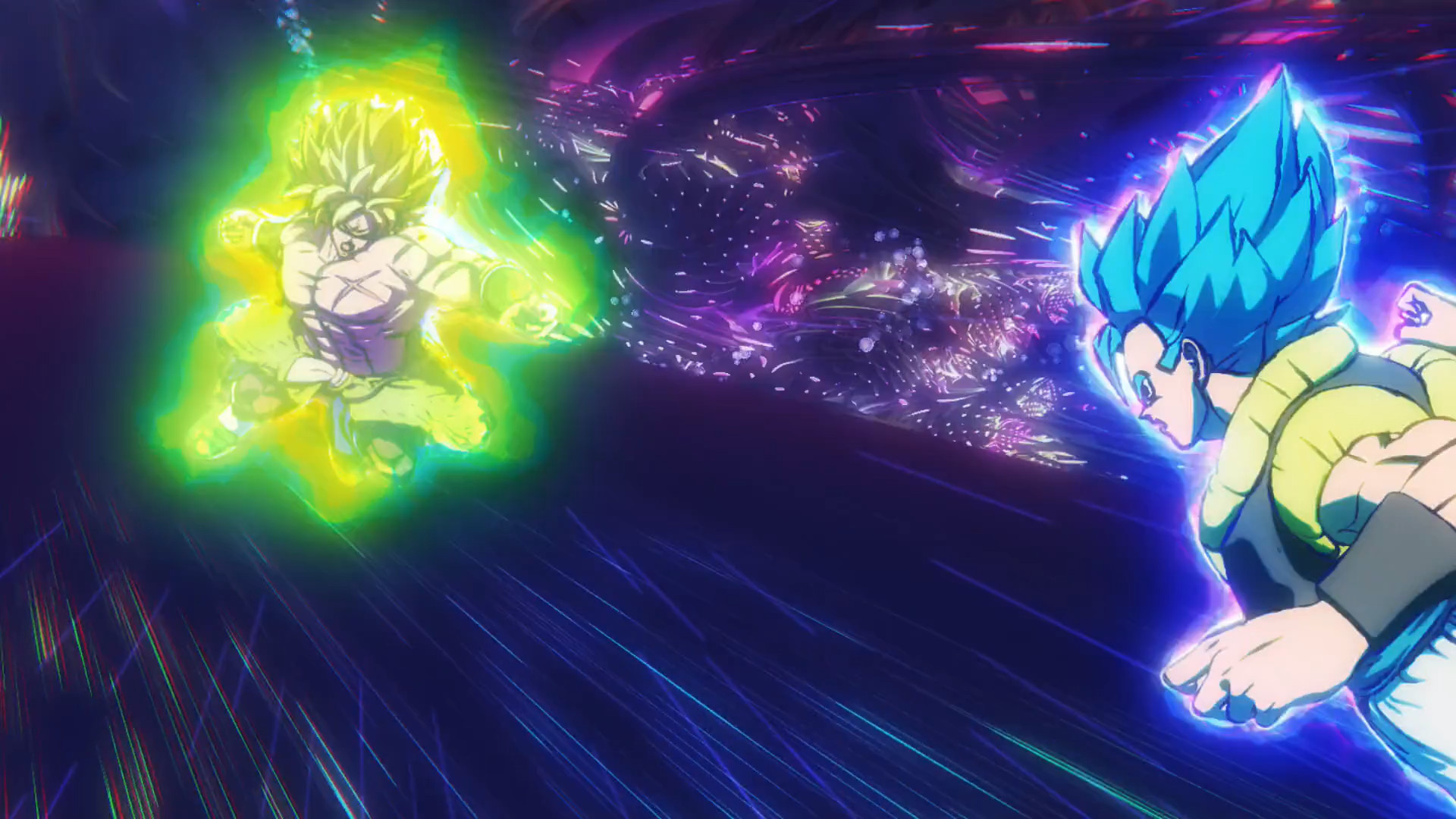
It's such a shame because, as I hope I've demonstrated, there is a lot to love about this film. I really like Cheelai and Lemo, for example, two characters that were introduced here and will make small appearances in the next film, Super Hero. I haven't really discussed them, because the movie wasn't all that interested in exploring them.
I imagine some of you may have picked up on my sense of frustration as you were reading this very long review. I only become so frustrated with this movie because I see it had the potential to be great. Ironically, this is how I felt about Broly's first film. Dragon Ball Super: Broly was a chance to elevate that material to new heights, but this film introduces too many problems of its own to warrant a higher spot on the list. There are days where I feel this movie deserves the top spot, and others where I feel it deserves the bottom, so the rough middle section of the list is a good place for it to sit.
12. Dragon Ball Z: The Tree of Might (1990)
Dragon Ball Z: Super Showdown for the Whole Earth
So here's a movie that I thought would be much higher on the list.
For most of these films, my viewing for this article was the first time I had ever seen them. This movie, on the other hand, is one that I had already seen a few times before the idea for this article ever came to mind, and it was always one of my favorites. It comes down to some of the movie's core themes, and how the film subverts the Dragon Ball Z Movie Formula™.
The Opening Leisure Activity of the Film™, while ultimately not being essential to the progression of the plot, is at least tangentially related to the main conflict and does play into the movie's themes of nature. The villains crash a probe into the Earth, which starts a fire that Gohan and Kuririn use their ki to put out. I like that the opening action set piece doesn't immediately kick off the big fight (unlike Super Android 13! for instance).
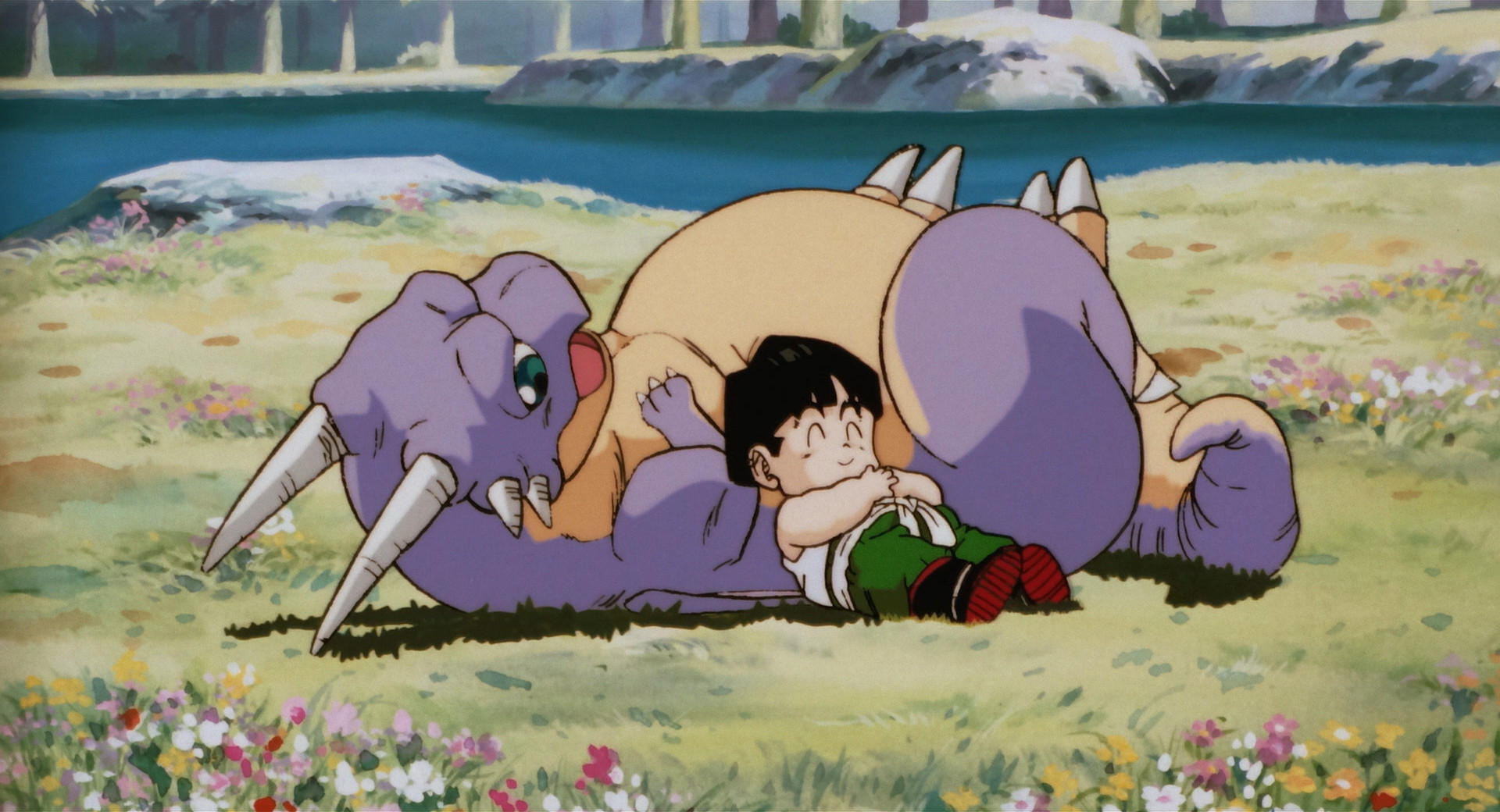
Much of the opening is spent on smaller side plots, like Gohan befriending a dragon named Hire Dragon (weird, I know) and Yamcha buying an expensive car that gets destroyed by the Movie Villain Henchmen™. Scenes of the villains growing the Shinseiju tree are interspersed throughout the first act of the film, which is unique for a Dragon Ball Z film. It's rare to ever see these films take their time establishing a mood, so Tree of Might is a breath of fresh air.
The Hire Dragon plot is a standout moment for me in particular, specifically all of the scenes that take place in the Son family home. I admire these scenes so much since, as I mentioned previously while discussing Fusion Reborn, we almost never get to see what a day in the life of Goku and friends looks like. These scenes let us see the family dynamic at home, with Chi Chi playing the role of the assertive parent, telling Gohan to get rid of Hire Dragon, and Goku being the more easygoing parent, telling Chi Chi to take it easy on Gohan and eventually making a makeshift home for Hire Dragon in a little cave nearby.
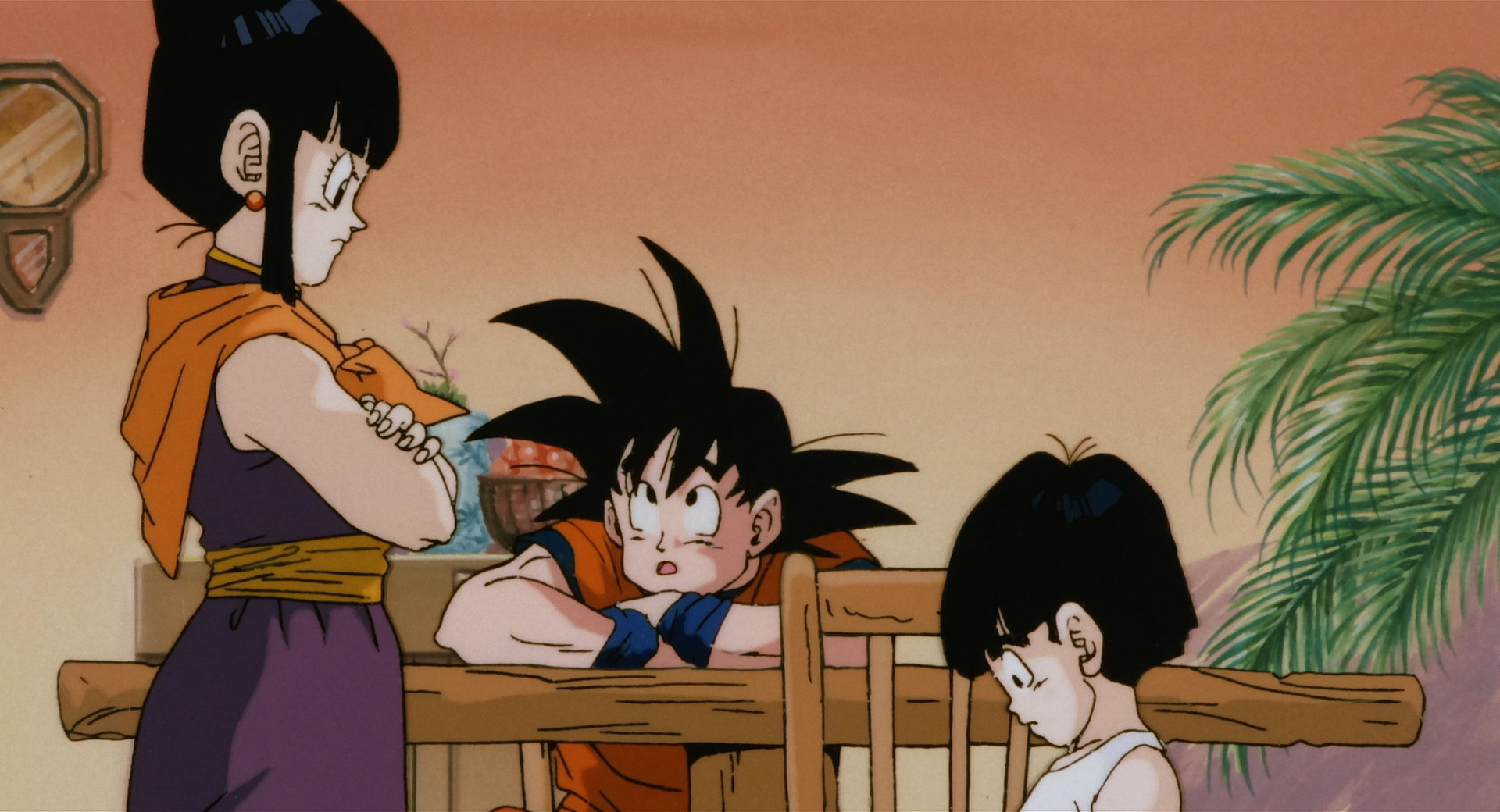
Sadly, as is the case with virtually all of these films, most of these plot threads are dropped when the fighting starts, and they don't come back up again. Chi Chi just doesn't appear at all in the latter half of the film, and Yamcha's car subplot doesn't really get any sort of resolution. Even so, this movie does outperform its peers. Gohan's connection with Hire Dragon, for instance, actually does play a crucial role in the latter half of the film.
That scene calls to mind something I really love about this film, that being its examination of the Saiyan arc's nature vs. nurture themes. The movie's main villain, Tullece, looks exactly like Goku, and is probably my favorite of the evil Goku designs. Tullece serves as a dark parallel to Goku; He is what Goku would have been had he not been sent away to Earth. This idea isn't particularly subtle, in fact the Turtle Hermit blatantly says so near the end of the film, but it still manages to be pretty clever at times.
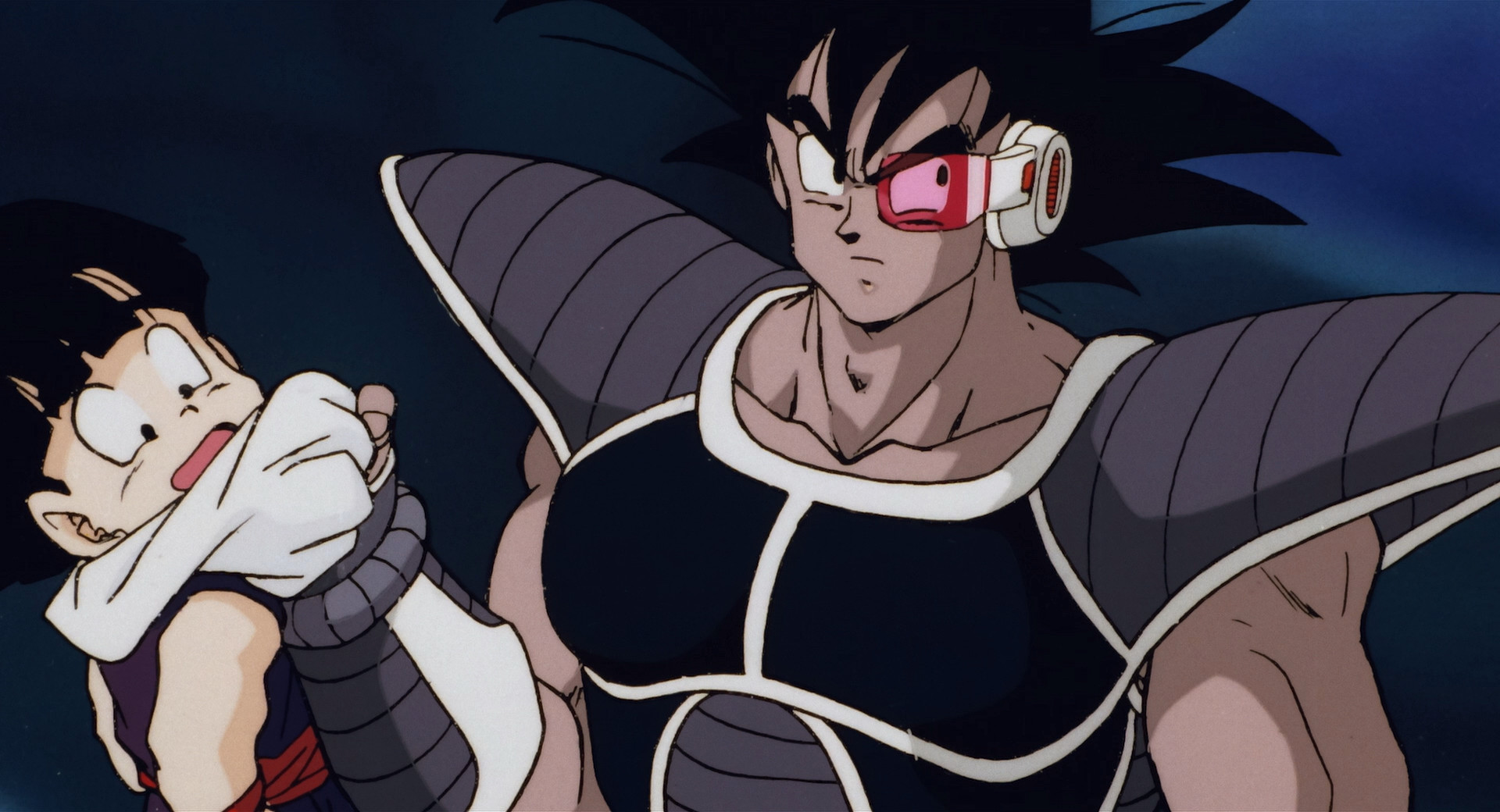
- ピッコロさん!
- Mr. Piccolo!
- ¡Señor Pícoro!
- Big Green!
My favorite example is a cruel game Tullece decides to play with Goku late into the film. He forces Gohan to turn into a Great Ape to demonstrate that Gohan is a slave to his Saiyan nature. However, when Hire Dragon shows up, he appeals to Gohan's affection for him (i.e. his humanity), allowing Gohan to temporarily gain control of the form and proving the value of nurture. After Tullece's maneuver fails, Goku proudly proclaims that he and Gohan are Earthlings. I enjoy Goku coming to terms with his Saiyan heritage in the series, but I think it leads to some really disastrous developments later in the franchise (we'll get into more detail when we discuss Battle of Gods). I much prefer this angle to Goku's character, that he detests Saiyans for being horrible people and takes pride in his upbringing on Earth.
As mentioned previously, Tullece is possibly my favorite of the Goku clones. He's one of the most captivating movie villains, and his initial confrontation with Gohan makes an excellent first impression. It's rare for any of these Dragon Ball Z films to give me genuine chills. Tullece reveals that lower-class Saiyan warriors only come in a few body types, which explains why he looks so similar to Goku. Personally, I'm fine with the explanation. It drives home just how unremarkable he was in the eyes of Saiyans, that his entire physique was just one of a few boilerplate options.
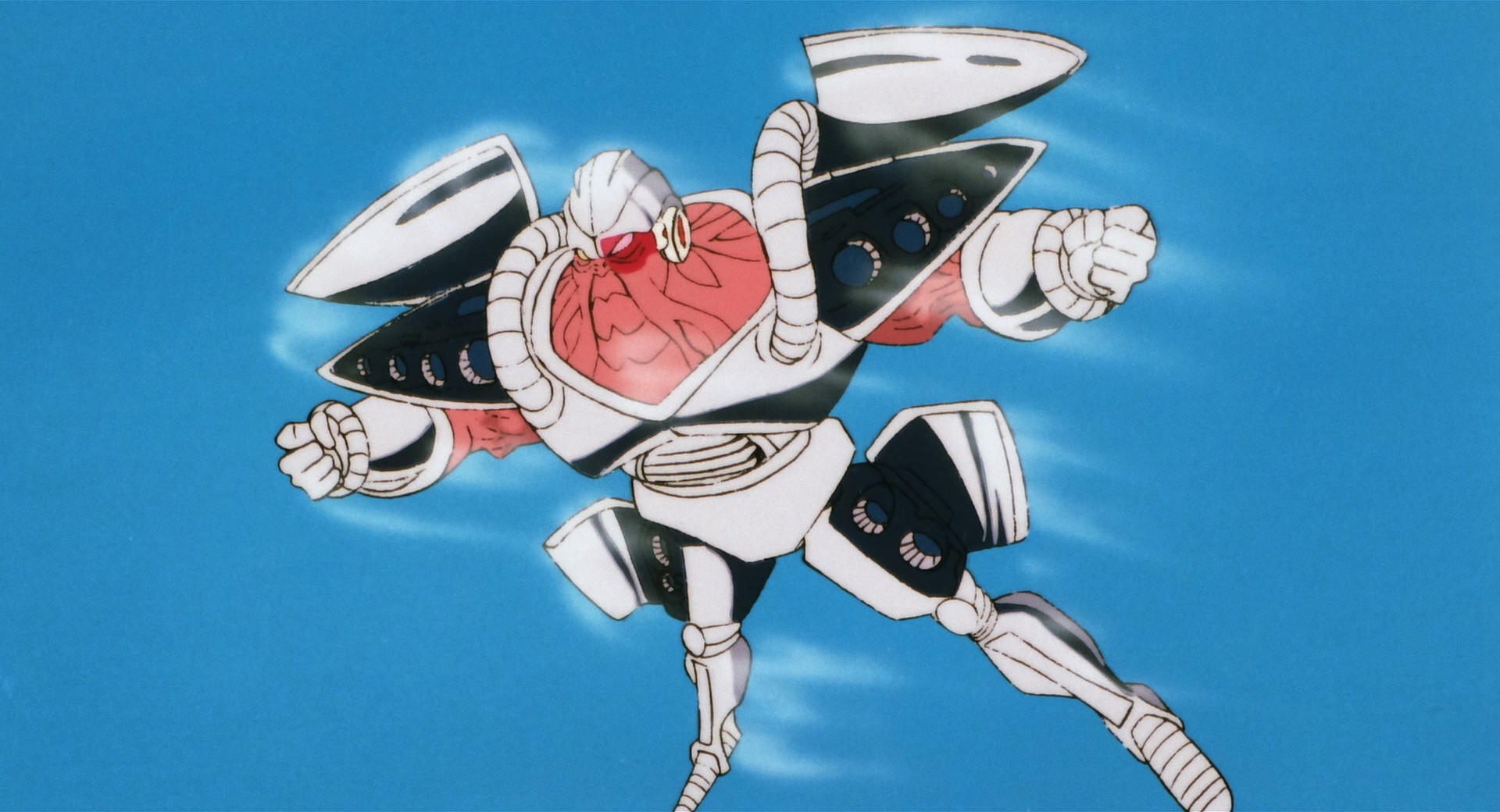
Tullece's crew, on the other hand, aren't nearly as exciting. These guys are incredibly boring even by the standards of Dragon Ball Z Movie Villain Henchmen™. Each one exists solely to kick one of our heroes' asses, before swiftly getting their ass kicked in turn by Goku. The only remotely memorable one is the one that just says "Da!", who appears to be a strange cyborg of some sort. The way jet boosters appear out of panels on his body is a pretty memorable piece of choreography and is the only vaguely interesting thing attached to any of these geezers.
Presentation is also a bit of a mixed bag. The animation is fantastic and the music is excellent, but this movie is visually much more dull than the other Dragon Ball Z films. Perhaps it couldn't be helped, seeing as the villains' plan is to plant a giant tree that sucks the life out of the planet. Still, with Earth's natural beauty being an important part of the story, we don't really get the chance to experience much of it. Getting to spend more time in nature, or seeing a greater variety of colors and environments, would have done a much better job of giving us a sense of what's at stake. The fifth Dragon Ball Z film, Cooler's Revenge, does a much better job of this despite Earth's beauty not being as crucial to its story.
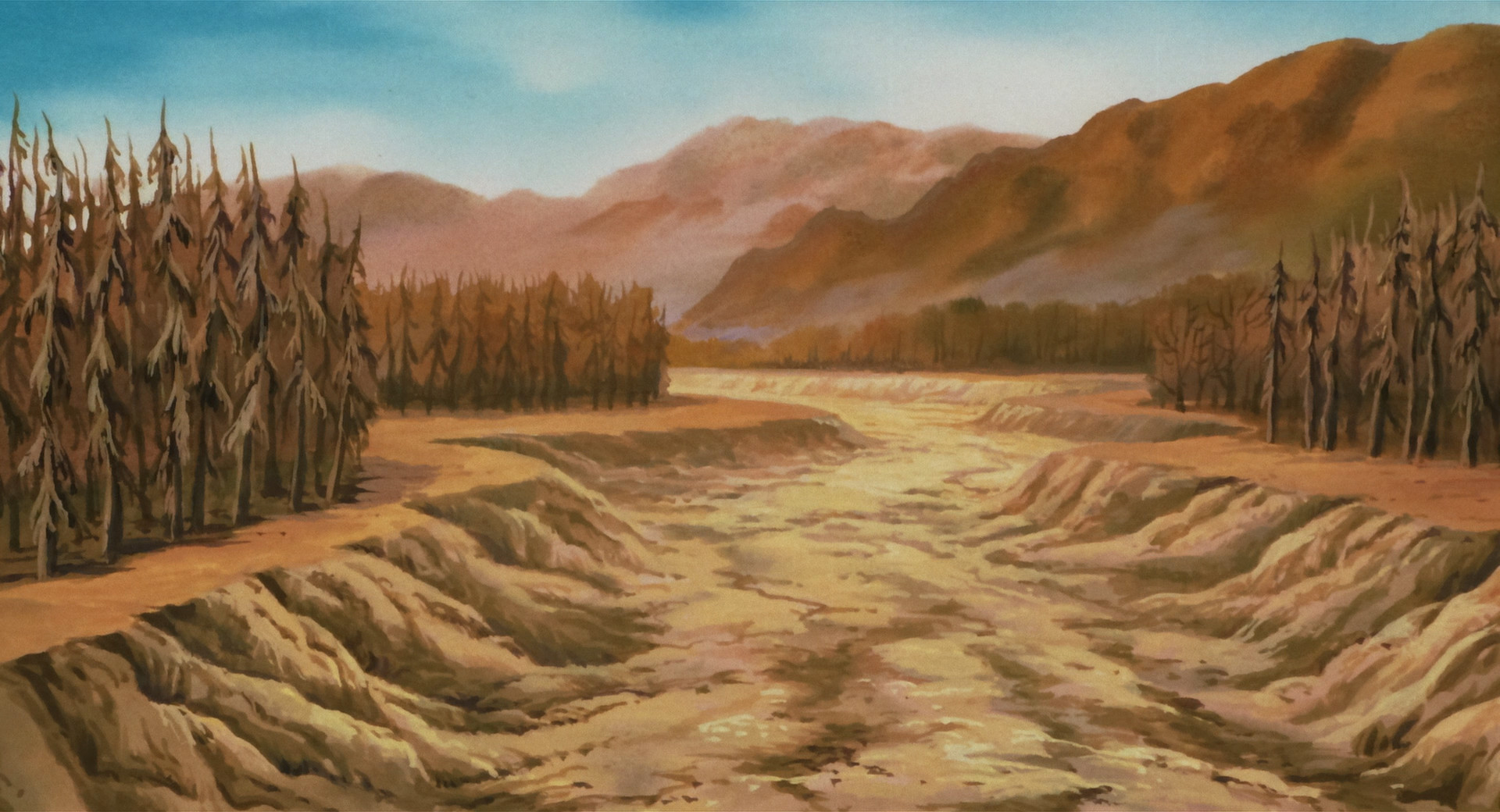
The main motif composer Shunske Kikuchi uses for the Shinseiju tree is beautifully haunting, and the anime gets a lot of mileage out of it during some very iconic scenes. All of the music is fantastic, but I still find myself becoming quite surprised by just how barren this film's aural landscape is. I've always admired the Japanese version's "less is more" approach to scoring scenes, giving the audience time to breathe and properly digest dialogue, but this film feels a little too quiet at times. This is the only film where I've ever felt this was an issue, and it may have something to do with pacing issues that crop up in the second half. As the fight drags on, the movie repeatedly cuts away to needlessly slow panning shots of Earth's muddy, destroyed landscapes, with no kind of music or sound attempting to keep the viewer engaged. These scenes are probably the biggest thing holding this movie back on the list, since they feel like filler, despite that not really being possible seeing as the movie's plot is wholly original. I've often joked that this is what fans of Dragon Ball Z's original English dub hear when they complain about the comparatively sparse placement of music in the Japanese version.
There was definitely an opportunity here for the English version to improve these scenes with its replacement score. I'm not sure if they actually did since I didn't watch the English dub, but I can admire that they at least bothered with an actual replacement score instead of the licensed nu-metal slop Funimation shoved into the next few films. Replacing Kikuchi's score with Drowning Pool might be the single worst stylistic change ever made by the English version.
Goku ends the fight with the Genki Dama, again, although I don't mind it so much since I think it's far more thematically relevant this time, playing on Goku's connection to the Earth. Even so, the film still employs a clever subversion. Goku's first Genki Dama fails because he couldn't gather enough energy, since the Shinseiju tree had already sucked so much of it away. Goku then realizes he can gather energy from the Shinseiju tree's fruit, which produces a Genki Dama powerful enough to defeat Tullece. It's a fun moment that proves that this movie wasn't content to coast off of the success of the previous two films.
Before starting this project, I expected this film to be much closer to the top. On one hand, I think I may have underestimated the other Dragon Ball Z films, since from here on out these films will do more to break away from the Dragon Ball Z Movie Formula™ (and maybe I can finally stop writing these words now). At the same time, I had been overestimating this movie. I've always loved it conceptually, but I found many issues with its execution. In practice, this movie ends up being a lot more boring than one would expect.
11. Dragon Ball Z: Wrath of the Dragon (1995)
Dragon Ball Z: Dragon Fist Explosion!! If Goku Won't Do It, Who Will?
Now here is a movie that I want to put higher on this list. More than any other Dragon Ball Z film (prior to Battle of Gods), this one feels the most like a "real" movie. Wrath of the Dragon is the most dialogue- and character-driven film of the original run by far (or at least as far as Dragon Ball Z is concerned). There is very little fighting in this movie, which is very impressive for a Dragon Ball Z film. I don't know what inspired this change, but I'm all for it.
Perhaps it was just the timing. Wrath of the Dragon is the last Dragon Ball Z film for quite a while, and barring The Path to Power is the last film of the original run. This film actually came out after the end of Dragon Ball, and it feels like a good send-off in some ways. The movie plays into the "next generation" theme that the Cell and Majin Boo story arcs introduced with its focus on Trunks.
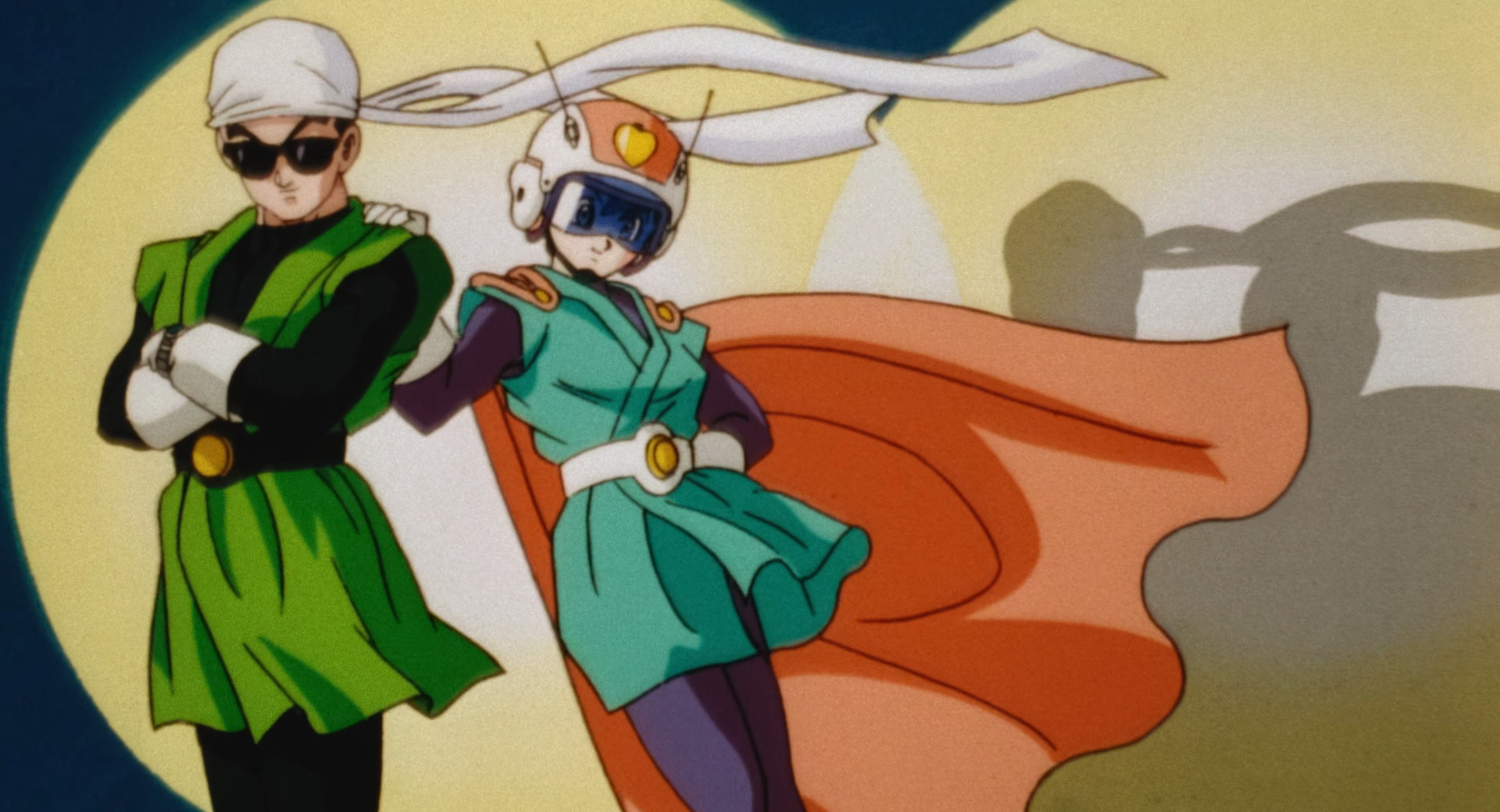
This movie uses its characters very well (for the most part). Gohan and Videl form an adorable crime-fighting duo, and they meet the old man that sets the events of the film into motion. Later on, the two have a fight against the main villain. Bulma brings her scientific expertise to the table, which leads to some interesting scenes later in the film. Trunks slowly forms a bond with Tapion, which serves as the emotional crux of the film. There are also some superficial ways in which the movie flexes an ensemble cast, such as scenes of the entire team gathering the Dragon Balls in the beginning of the film, or them throwing a party at Capsule Corporation later on. The film isn't particularly complex, in fact it can feel pretty disorganized with how frantically it shifts the protagonist role around, but it's such a breath of fresh air when compared to the other Dragon Ball Z films.
Not since The Tree of Might have I seen a Dragon Ball Z film exhibit such patience. Wrath of the Dragon really takes its time establishing characters and a mood. I also love that the villain's motivation and backstory isn't just clumsily dumped on us all at once, or quickly shoved to the side in favor of boring fighting. My jaw almost hit the floor during a brief fight between Gohan and Hirudegarn, the main villain. The two fight, and then the movie is allowed to continue on like normal. This movie is why I'm so hard on the others (especially Dragon Ball Super: Broly) for slamming so hard on the plot's brakes so that the fighting can start. What's even better is that Gohan's fight against Hirudegarn actually serves an important function in the story, as this is where we discover a critical weakness it has — Hirudegarn can only be hurt in the instant before it attacks, which also means there's an actual strategy involved in a Dragon Ball Z fight.
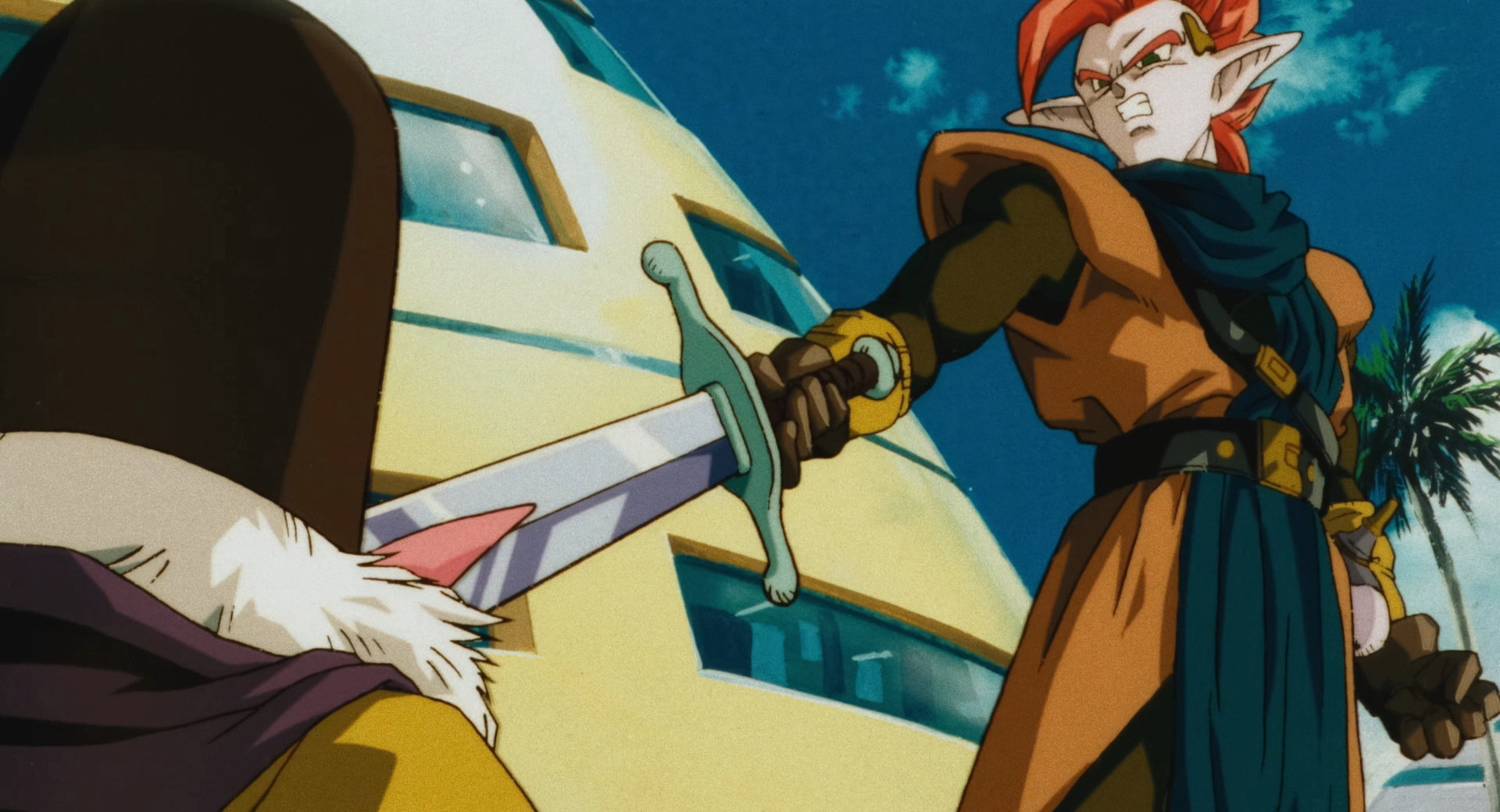
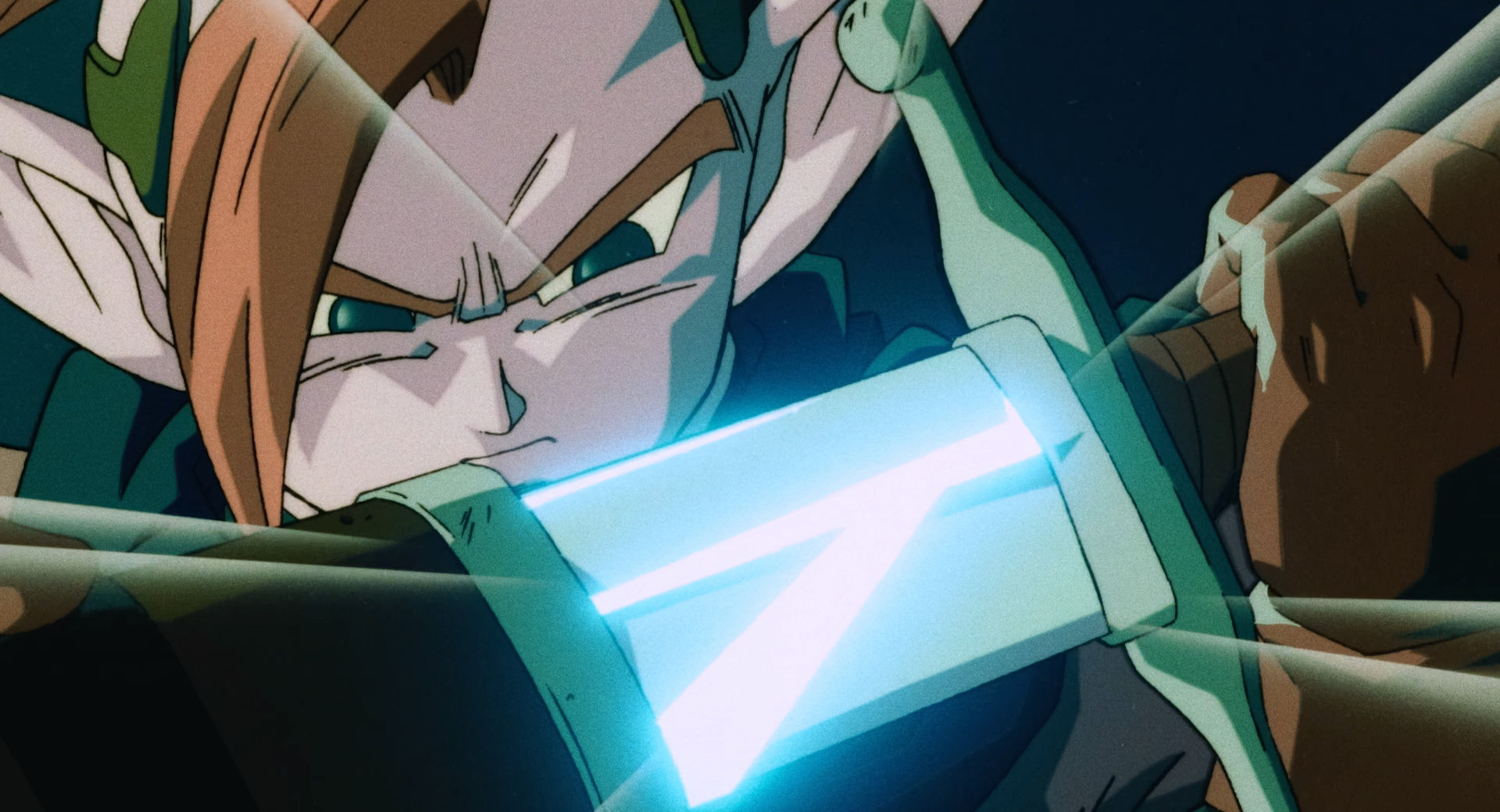
Also, here's a fun little thing my brother noticed: This is the only Dragon Ball Z film that places large emphasis on a movie-original character that isn't a villain, that character being Tapion. The only other Dragon Ball film of the original run that does this is the very first film, Curse of the Blood Rubies, with the character of Pansy. So these two characters sort of serve as interesting book ends to the film franchise, in a way.
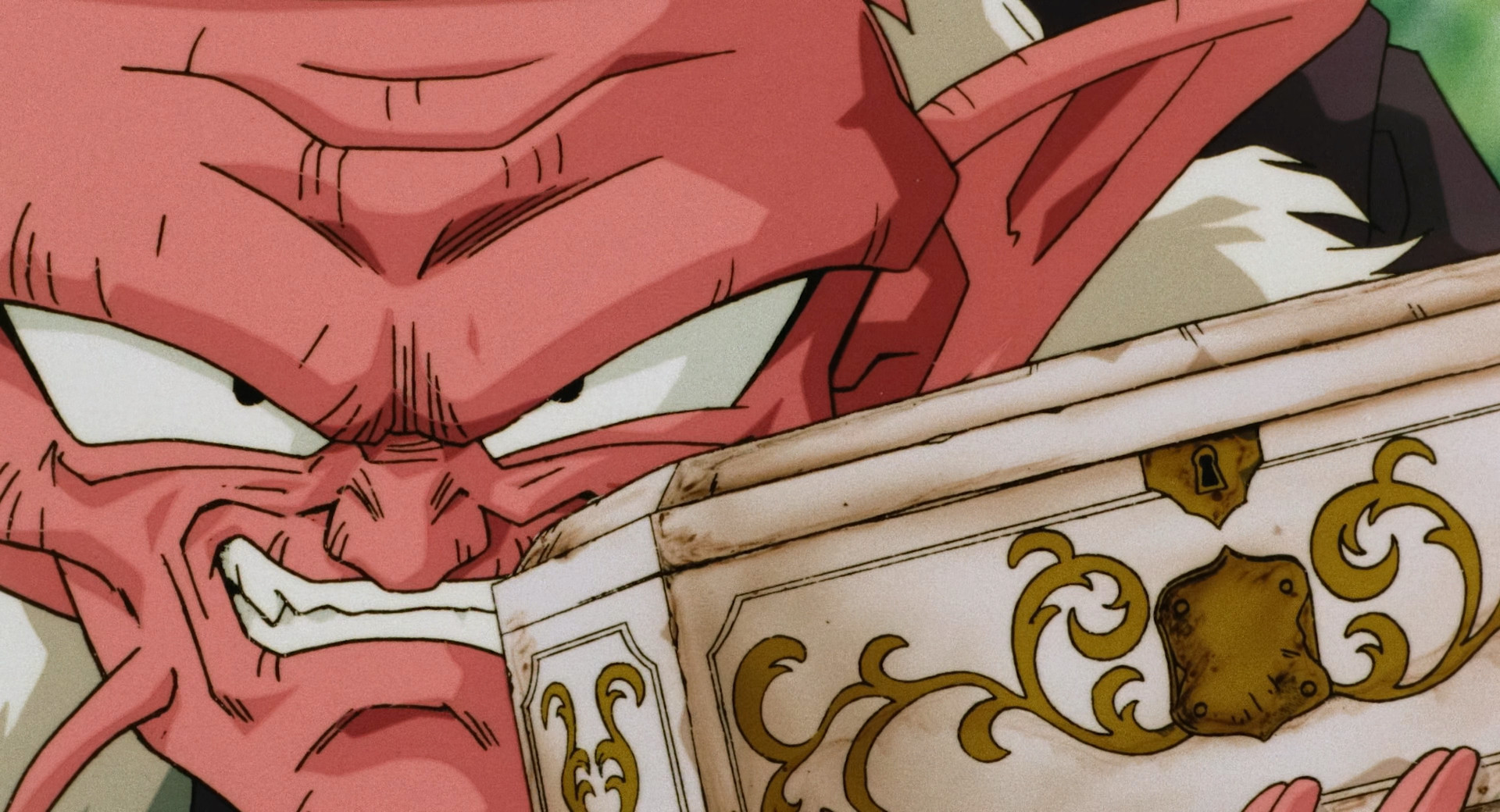
Unlike Pansy, however, I actually find Tapion to be a pretty compelling character. The whole story of this movie is pretty interesting, and I think it hearkens back to the fantasy influences of early Dragon Ball. A not-so-subtly evil old man approaches our heroes to help release a magic spell on a music box, which is said to contain a powerful warrior. The team uses the Dragon Balls to release the seal, and out comes Tapion, who is not at all pleased with being freed. Rather than Tapion just monologuing his entire backstory at once, details about his backstory are slowly drip fed to us throughout the film.
We slowly learn that Tapion houses half of a giant beast named Hirudegarn that will awaken any time Tapion tries to sleep. The old man controls the other half of Hirudegarn, and wants to combine both halves to make Hirudegarn complete. I love the blending of these mystical fantasy elements with the transforming villains that Dragon Ball would become known for in its later years (most notably Cell).
All that in mind, don't forget that we are talking about Dragon Ball here. I only find this movie so impressive when viewed in the context of other Dragon Ball films. Just judging it on its own merits, it's not particularly complex or thought-provoking. Once the shock of this film's maturity and restraint wears off, you begin to notice how nonsensical some of its plot elements are. My favorite example would probably be a sequence near the end of the film which primarily focuses on Bulma. I love that the movie is trying to do something with her, but her scene is just so bizarre and pointless that it would almost be better if she weren't included.

Upon learning about Tapion's predicament, Bulma tries to construct an enclosure that Tapion can sleep in without unleashing Hirudegarn. The means she goes about it is strange, she mentions that she still has pieces of the music box lying around and can use them... But I would assume that the thing containing Tapion was the magic seal, not the music box. When I think of how other magic seal attacks work in the franchise, such as the Turtle Hermit's Mafuba technique, I feel like the actual enclosure could have been anything. So imagine my shock when I see that the enclosure Bulma builds is just a giant version of the music box. It ultimately ends up failing, but it's never explicitly stated why. It's hilarious to me, but the movie seems to mostly play it straight. I have to wonder... Was this supposed to work? Bulma thinks it should work, and I can understand why she would think that, but did the filmmakers think this should have worked? Hopefully this isn't too confusing.
There's also the matter of Tapion. This is going to sound kind of shocking, given how I've praised this film, but I actually would have liked to see him fight. The first act of the movie builds him up as an all-powerful warrior, this quality of his is what entices Goku and friends to free him from the music box, but we never actually get to see him fight. Tapion also carries around a sword, but we never see him use it. He doesn't even use it in a flashback; the sword is shown to belong to some random geezer from his time. I say this because it defies the principle of Chekhov's gun — That being the idea that if a gun shows up in the first act, it should go off at some point in the story. There are clever ways to subvert this principle, but Wrath of the Dragon doesn't really try to at all. All that talk of Tapion being an ultra-powerful warrior was just a clunky way to kick the plot of the film into gear.

Tapion's sword actually does have some symbolic relevance at the end of the film, when he gives it to Trunks. The scene serves as a nice symbolic "passing of the torch" moment. Trunks being given this sword shows that he's growing into the type of mild-mannered bad ass that could kill Freeza during the start of the Cell story arc. I don't think this scene is literally suggesting that this is the backstory for how Trunks got his sword, which is what some (stupid) fans seem to think. I was so ready to dunk on Dragon Ball fans for being foolish enough to think such a thing... But then the end credits sequence shows a montage of future Trunks using his sword, and I'm again left wondering if this is what the filmmakers are actually suggesting.
And there is, of course, the matter of this movie's terrible, utterly asinine ending. Without getting into spoilers, it's related to the film's equally asinine Japanese title. If you're wondering what relevance it has to this film's plot, well, so was I before the last 5 minutes. Basically, Goku shows up at the very last second, tells Trunks (the protagonist) not to interfere, and then unleashes a flashy new move that literally comes out of nowhere. Funny as this sequence may be in a cosmic sort of way, I find it a horribly unsatisfying way to conclude the film. Goku has practically zero relevance to the rest of the film, and his final move just suddenly appears with no sort of explanation. The best thing I can say about it, and this is damning with faint praise, is that Goku swooping in at the last second to a story that's not about him and bailing our characters out isn't without precedent in the series. Perhaps reusing this trope was a misguided attempt to give the film franchise a nice send-off.
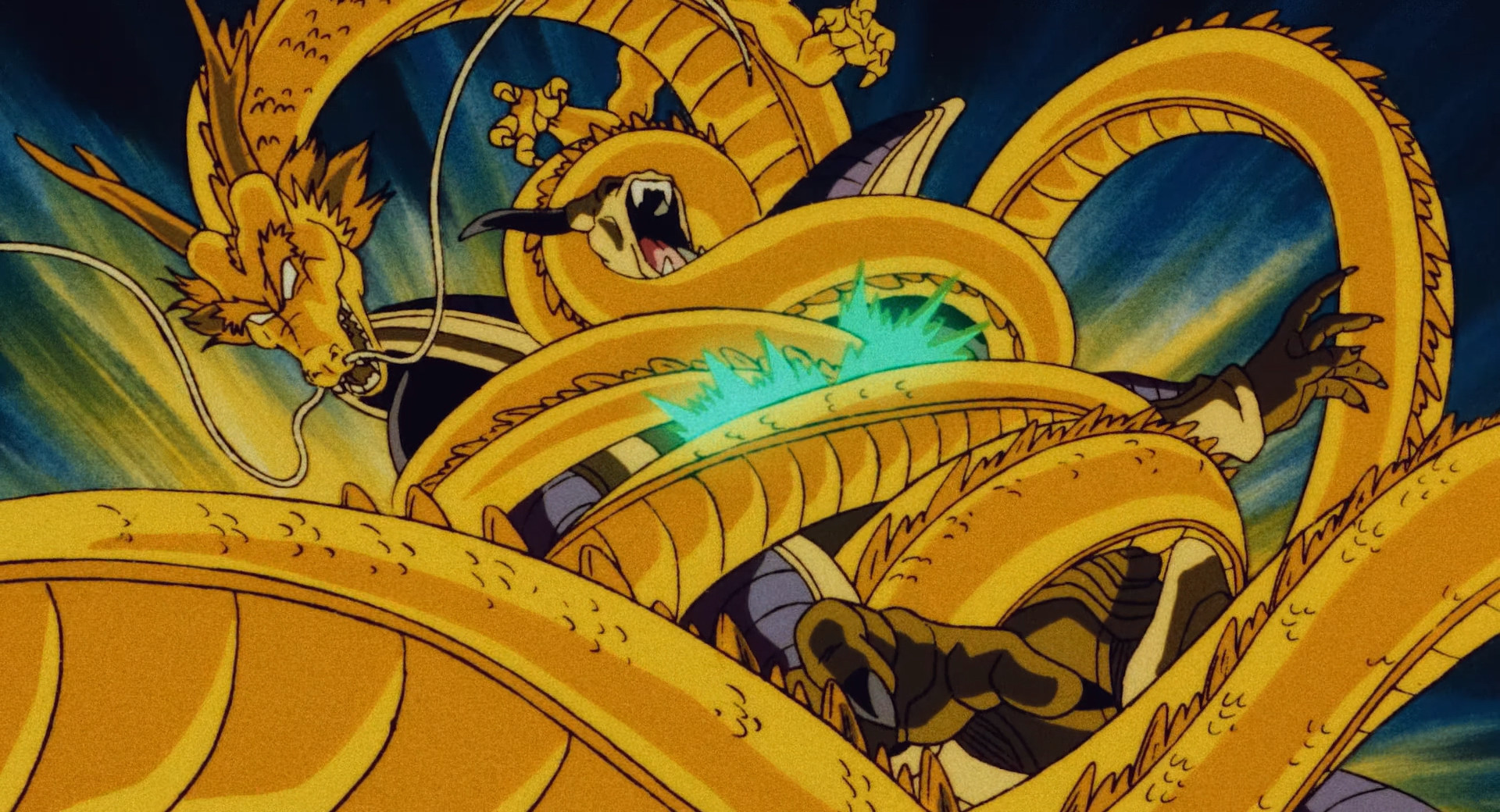
The ending is ultimately what precludes this film from being higher on the list. I hope I've made it clear that I really want to love this film; This is so much of what I want out of a Dragon Ball film. I just wish the film was a bit more confident in its ideas, and that some scenes were more carefully thought out.
10. Dragon Ball Z: Bio-Broly (1994)
Dragon Ball Z: Super-Warrior Defeat!! I Am the One Who Will Win
Or as I've taken to calling it: Broly 3: Goten & Trunks Double Trouble.
As if my take on Dragon Ball Super: Broly wasn't controversial enough, this has got to be the moment where I officially lose all Dragon Ball Z fans. But yes, your eyes are not deceiving you; Bio-Broly is number 10 on this list. I actually think this movie is pretty good.
While I enjoy it, I'm not surprised by how unpopular it is, since it's quite the enigma. The previous film, Broly — Second Coming already subverted fan expectations by contrasting Broly's cold seriousness with Goten and Trunks's cartoon antics. This movie goes full retard on Broly, and I can't help but find it hilarious. This movie borders on feeling like a meta derision of the fans in the vein of The Last Jedi, which I again find myself talking about in the context of Broly for some reason. Broly — Second Coming already reduced the character down to basics, but this movie does away with the only distinct qualities of Broly left: His memorable design and voice.
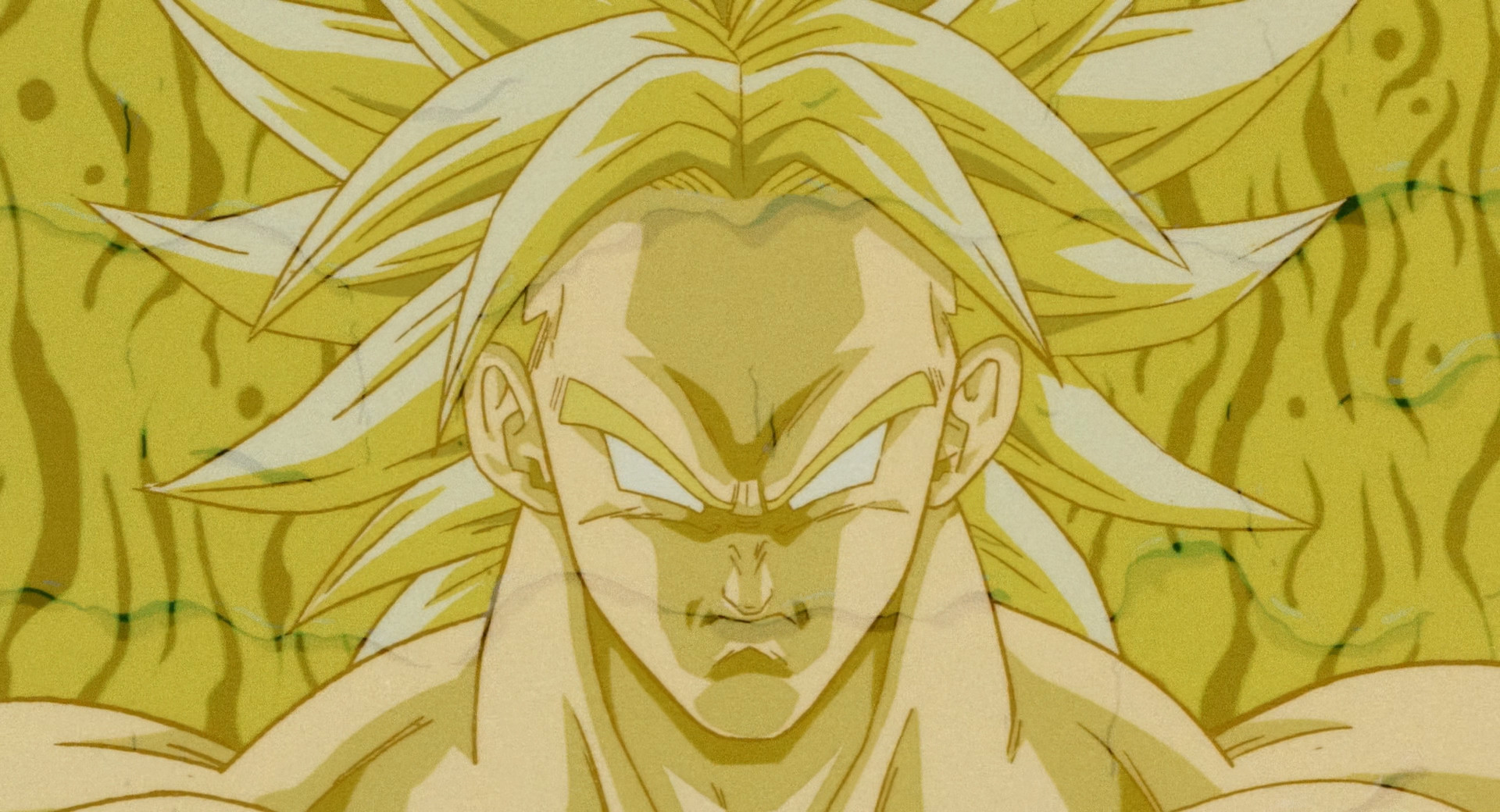
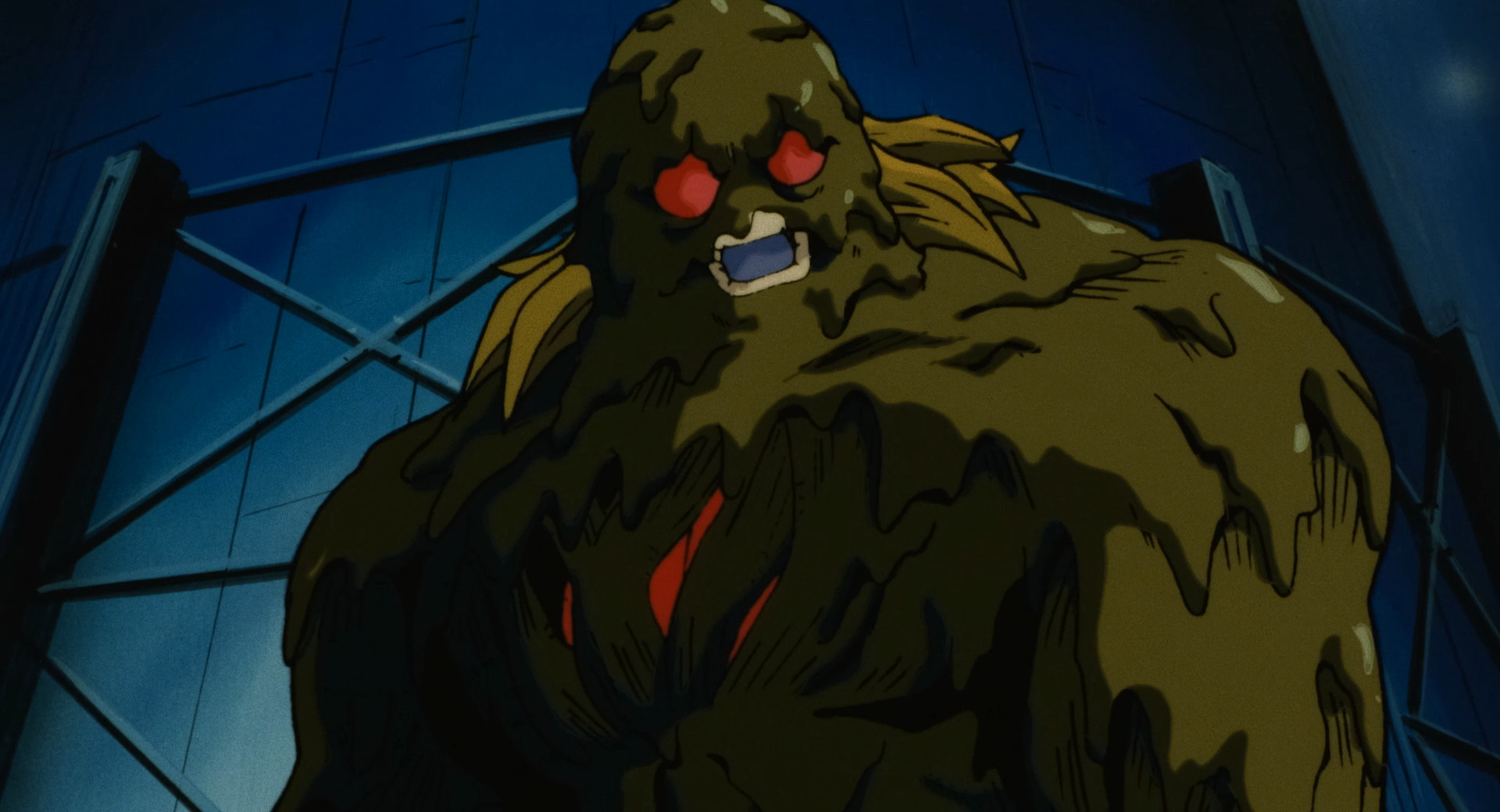
After a very brief glimpse of his memorable design when emerging from the pod he was contained in, he's suddenly covered in sludge that makes him look like a cartoon monster, with his hair awkwardly sticking out and him growing giant red eyes for some reason. An effect is also put over his voice. I genuinely have no idea why they thought to bring Broly back like this, unless their plan was to piss fans off. If that was their goal, then it worked. Criticizing fans, "not giving them what they want" so to speak, is something I'd expect out of a high-concept drama series like The Sopranos, not out of a goofy cartoon like Dragon Ball. I think a far more likely explanation would be that the filmmakers had just gotten tired of the formula, and felt like embracing the light-hearted comedy that had become more prevalent during the Majin Boo story arc.
Broly is a very popular character in the English speaking fandom, so I can see how they took particular offense to this depiction of the character. But I have to imagine that even Japanese fans were shocked by this, albeit to a lesser extent than English speaking fans, since this depiction of Broly is in keeping with how the franchise had started to use him at this time. We'll get into more detail when we discuss Broly — Second Coming.
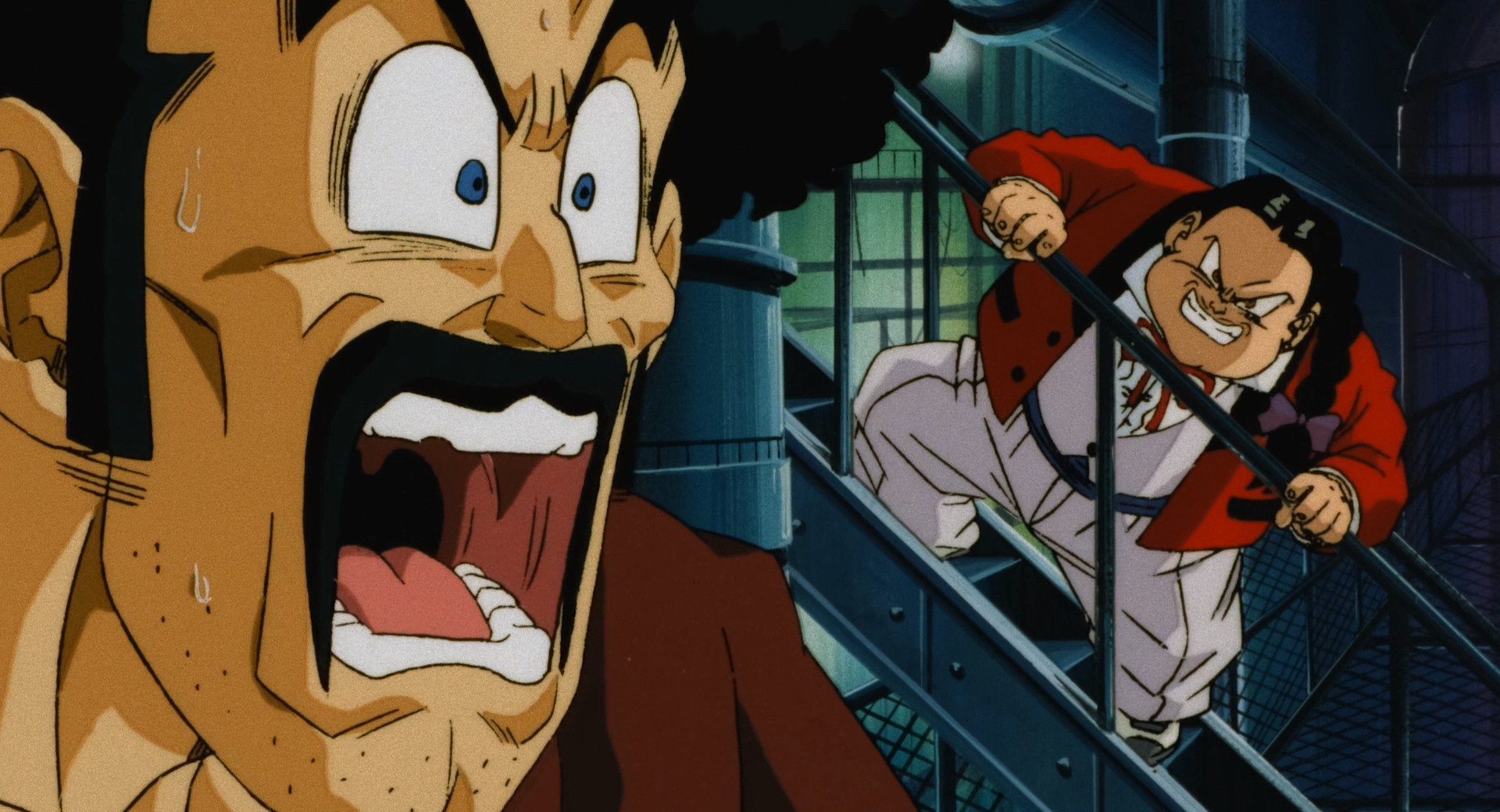
This movie focuses on a really fun team of Mr. Satan, Android 18, Goten, and Trunks. Each character brings something to the table. Mr. Satan receives a challenge from an old rival of his, Jaga, to battle his legion of bio-warriors. Jaga threatens that if Mr. Satan doesn't cooperate, he'll expose his darkest secret to the public. Apparently Mr. Satan wet himself until he was in the sixth grade. This premise is as far removed from Dragon Ball's shounen tropes as possible and I absolutely love it.
While this is happening, Android 18 is trying to get the prize money Mr. Satan promised her for throwing their Tenkaichi Budokai match. Putting aside the fact that it's just nice to see Android 18 play a major role, she makes for a really charming contrast to Mr. Satan and Jaga. For as silly as their schoolyard rivalry already looks, Android 18's presence makes it even more obvious. The movie mines a lot of comedic potential out of her inclusion. I love her complete lack of interest in Jaga's strange tournament rules, and her tendency to get annoyed by his eccentricities. When Broly is eventually revealed and is shown to be too powerful for her, she's still complaining about the money. It's wonderful.
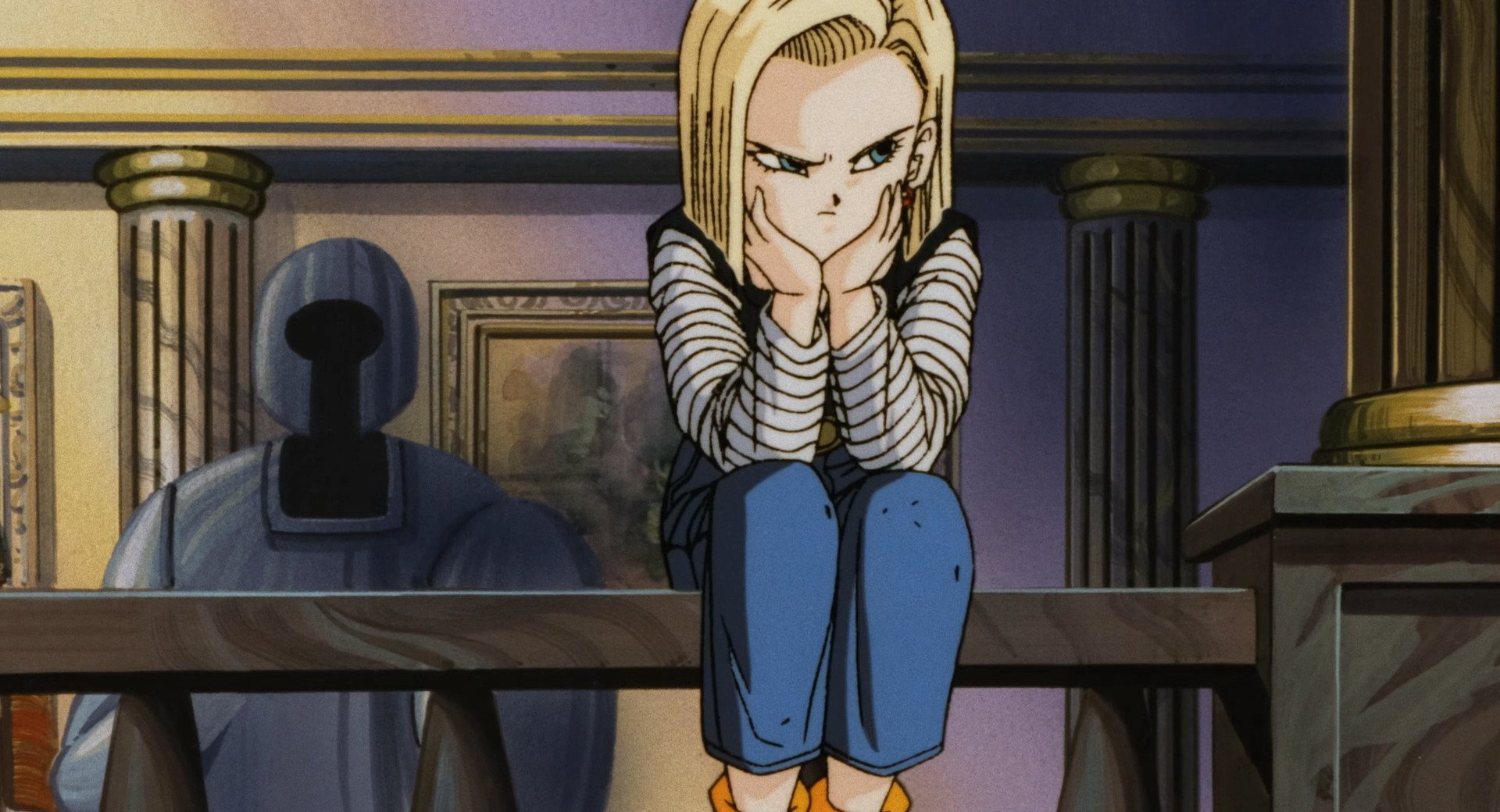

I always like to see scenes between Goten and Trunks, since the series largely reduces them to fusion fodder. People often joke that Goten's entire personality is being friends with Trunks, but this movie does give us insight into their dynamic. When Jaga's pet is about to attack Trunks, Goten casually walks up to the animal and calms him down. Trunks remarks that living in Mount Paozu explains Goten's relaxed demeanor around animals. Living in the city, Trunks is much less confident around animals, but on the other hand is much more confident about "biotechnology" and "genetic engineering" which he clumsily explains to Goten, who is easily impressed.
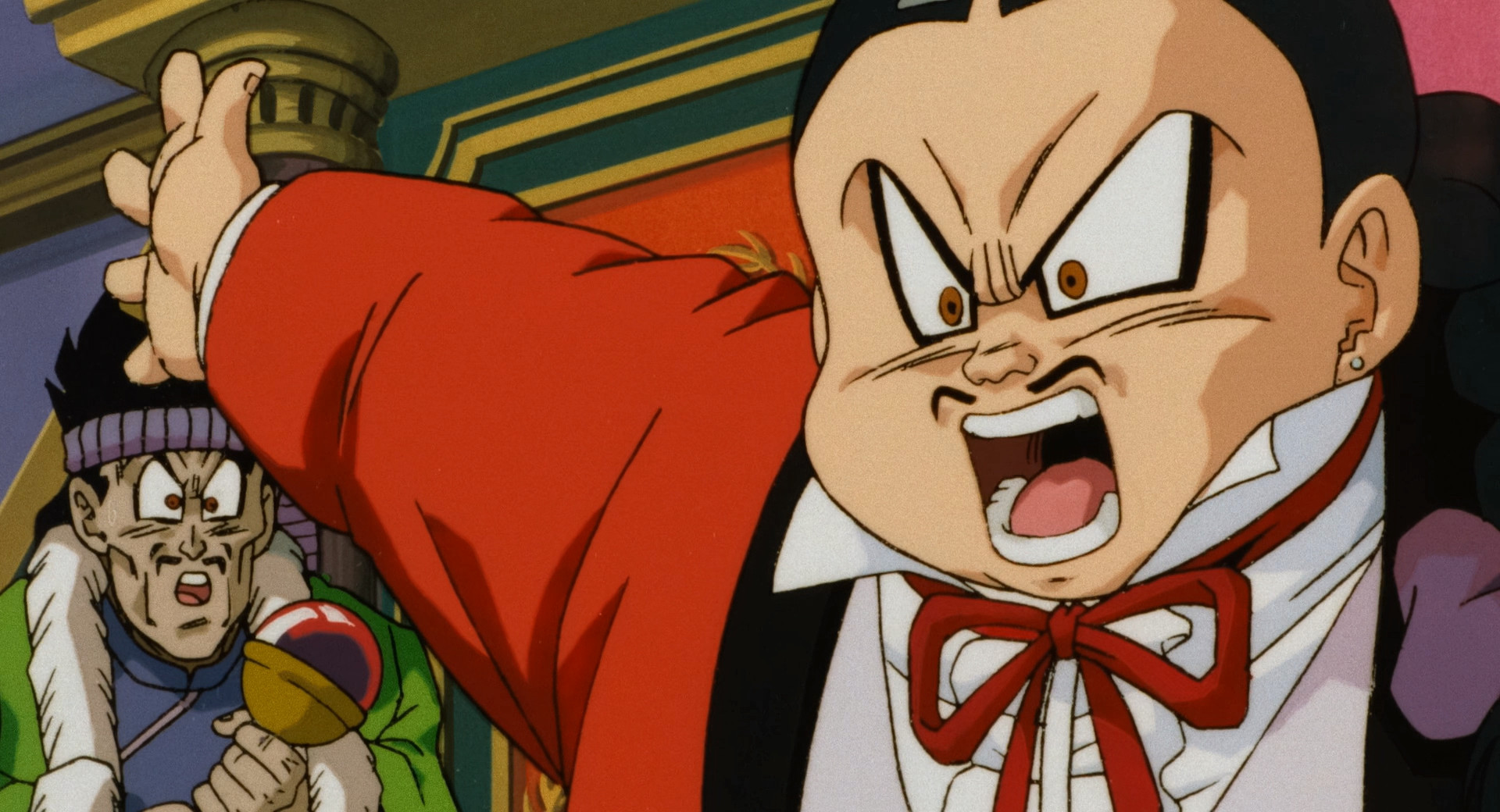
The prayer giver from the previous film makes an appearance here, which really surprised me. His integration into the story is far from seamless, but it does serve as a nice bit of continuity between films, which is rare for this franchise. His inclusion ends up addressing an issue I had with Broly — Second Coming, so in addition to adding some satisfying context to this film, it retroactively makes that film better as well. After having been humiliated by Goten and Trunks in the last film, the prayer giver gathers some of Broly's blood that Jaga's scientists can use to create a clone of Broly. Maybe it's just me, but I find it really satisfying.
This movie feels quintessentially Toriyama to me. Having the ultimate harbinger of death get resurrected just to settle a petty fight between two selfish man children is hilarious. Our heroes are an utterly bored woman and two hyperactive super-powered children, and that's it. The fate of our world rests in the most irresponsible hands possible. This film shows a degree of confidence in its core cast that I find really refreshing. Aside from a little cameo at the very end, Goku doesn't appear at all in this film; he doesn't need to swoop in at the last second and bail out the protagonist like he did in Bojack Unbound, for instance.
Even bearing the inherently goofy premise in mind, this movie is still capable of playing things straight. When Goten and Trunks find out that the bio-warrior is Broly, they freak out and try to prevent him from being released. There's no hand wringing about wanting to face a strong opponent or any of that nauseating "selfish martial artist's pride" crap, even though I'd be more receptive to it here, when our protagonists are hyperactive children. It's a very small moment but I really enjoy it.
Honestly, my only major criticism with the film is just that the fighting goes on too long. It hardly makes the film worthy of so much hatred, especially since it's actually pretty tame by the standards of Dragon Ball Z films. Hell, by the standards of Broly films, it's heavenly. Even then this movie still outperforms much of its peers, with there being actual strategy involved in the fight. It's eventually discovered that the fluid covering Broly hardens when it touches saltwater, so Goten and Trunks carefully aim their Kamehame-Ha waves so that Jaga's island gets doused in water from the surrounding ocean. It's really refreshing to see characters actually have to stop and form a strategy instead of just mindlessly out-punching the opponent.
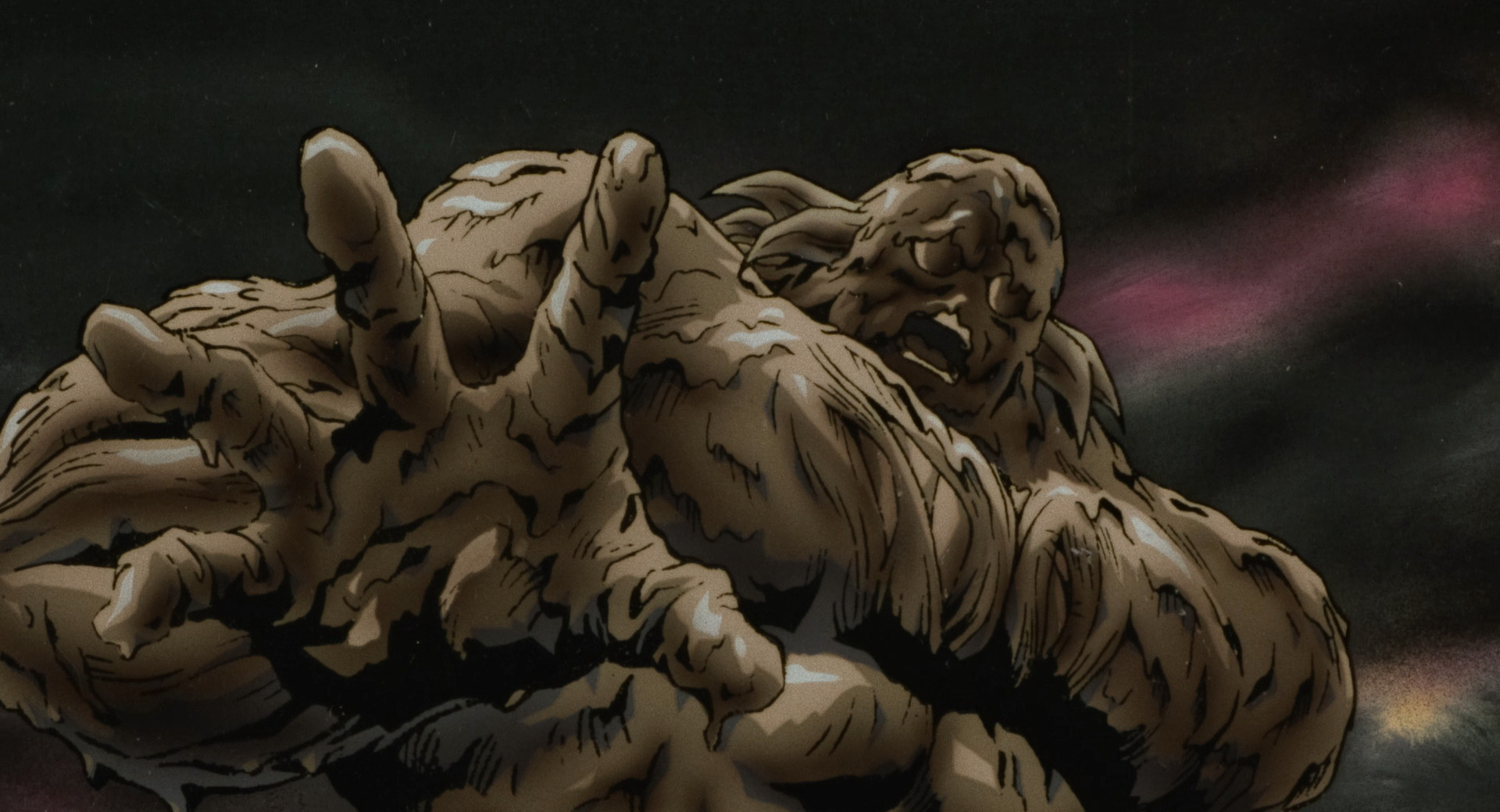
That's really all I have to say about Bio-Broly. It's not a masterpiece by any stretch, but I find the level of hate it gets to be really unwarranted, but perhaps not all that surprising (especially in the English-speaking fandom). It's easy to pick on Dragon Ball fans, but if we're being totally honest, the filmmakers were kind of asking for it here. I would consider this film to be the best of the mid-tier Dragon Ball films, so from here on out we've got some good films in store for us.
9. Dragon Ball Z: The World's Strongest (1990)
Up next is a fan-favorite, and not without good reason. The World's Strongest, for better or worse, will end up defining many of the Dragon Ball Z movie tropes. This film, with the benefit (or, perhaps the detriment) of hindsight, can feel tired, but when viewed in isolation is a really fun, tight package.
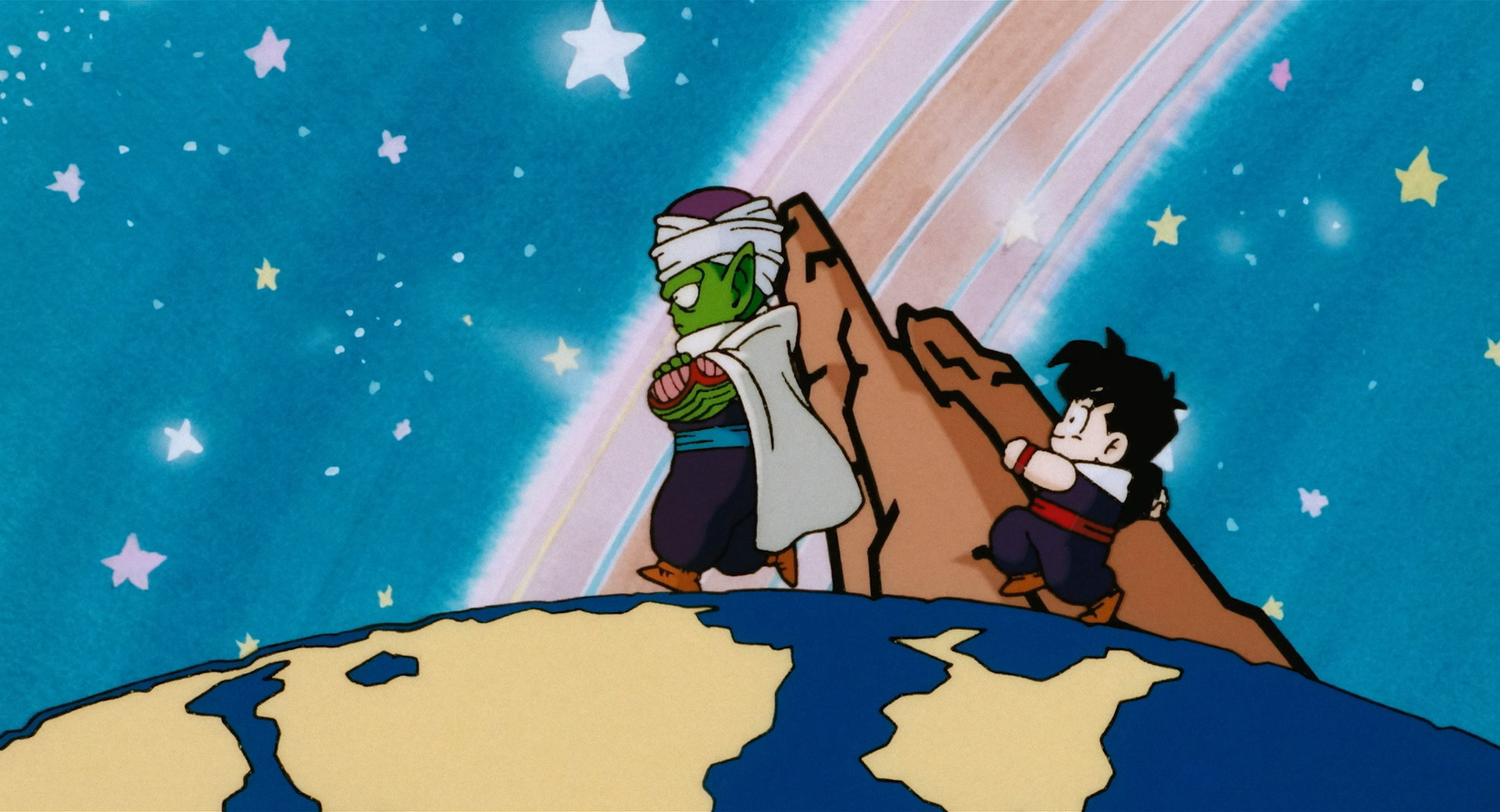
While Dead Zone feels like the end of classic Dragon Ball, The World's Strongest feels like a nice transitional piece. This movie hearkens back to the more technological style of the Red Ribbon Army story arc, with Dr. Uiro's lair feeling like a souped-up version of muscle tower. Hell, they even recycle the concept for a stretchy villain, although the way Goku defeats him this time is a lot less creative. At the same time, the world-ending stakes and power levels have started to swell. The fighting still feels relatively grounded, when compared to later Dragon Ball Z films, which is perhaps why this movie doesn't bore me nearly as much as it probably should.
Like Dead Zone, this film heavily bases its plot on what was popular at the time, in this instance being the fight against Nappa and Vegeta. These moments feel much better integrated than in Dead Zone, with the only real exception being Goku's Kaiou-ken beam struggle, which is almost a shot-for-shot copy of the moment it's based on. I've found that these first two Dragon Ball Z films are more derivative of the series, while later films tend to be more derivative of each other.
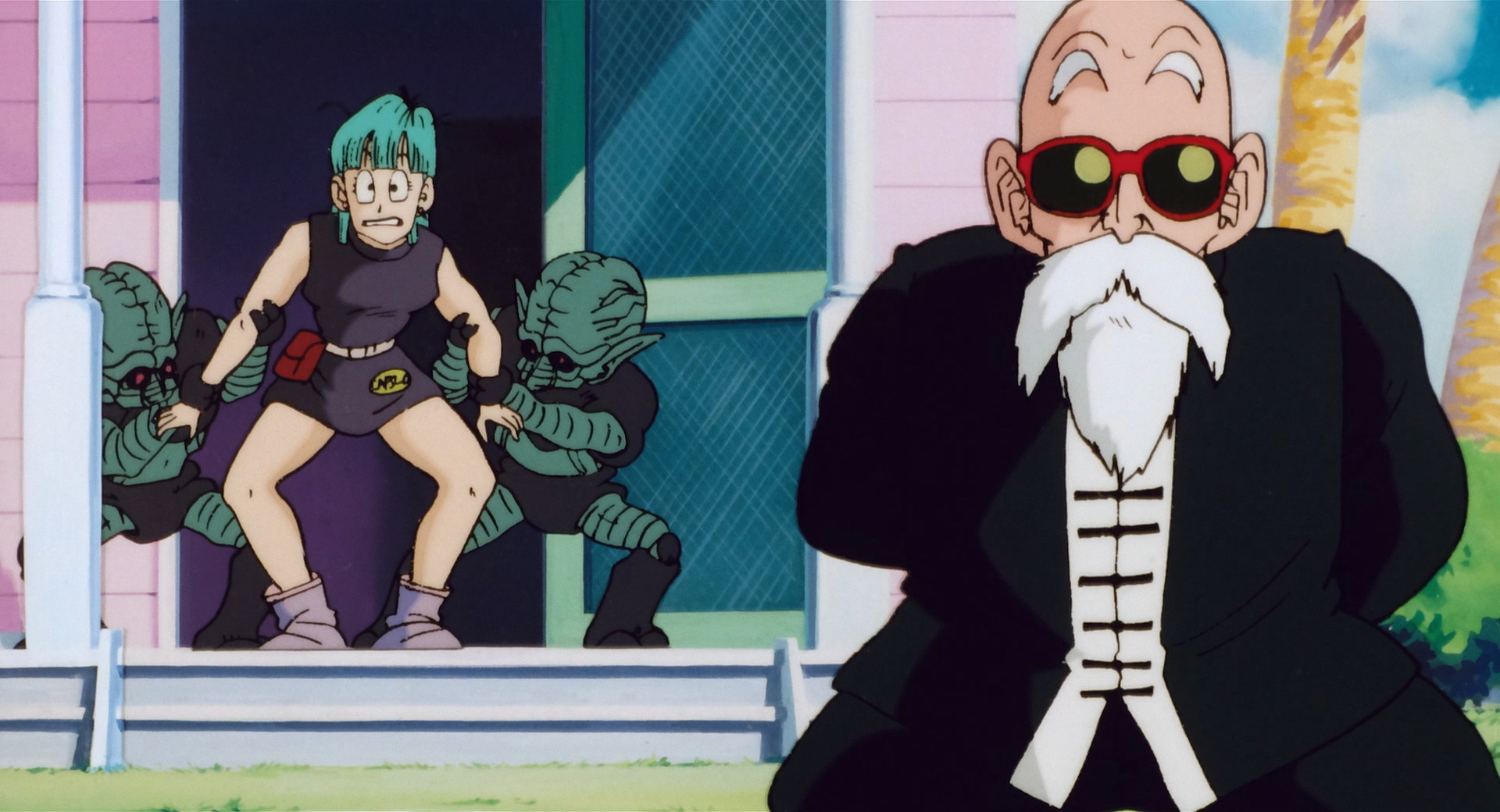
I also really like the way this movie uses its characters. The World's Strongest serves as somewhat of a swan song for the Turtle Hermit, who has largely been reduced to cameo appearances in the series and as comic relief in the films (such as in Broly — The Legendary Super Saiyan). He is abducted by the villains after he is erroneously believed to be the world's strongest guy. In a bit of serendipity, the world's real strongest guy, Goku, comes to his rescue, which leads to some really fun action.
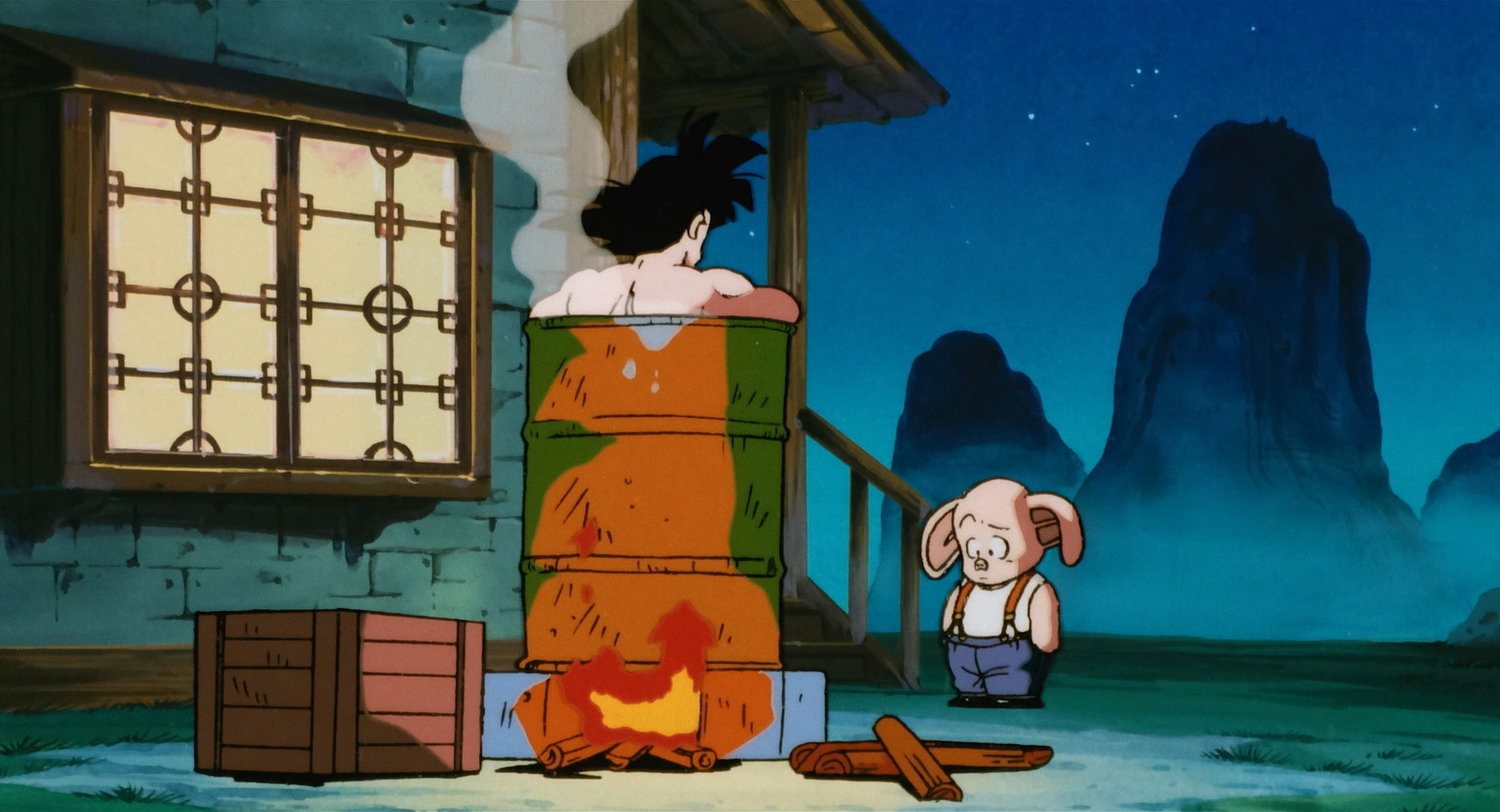
Oolong also plays a very pivotal role in this movie, which I love. Oolong hasn't been relevant since the very first arc, and has all but disappeared in the "Z" era. He continues to show up in movies, for whatever reason, but never plays as significant a role as he does here. Oolong took Gohan with him on a journey to find the Dragon Balls, on the condition that he keep it a secret. When Piccolo is abducted, we're meant to think that Gohan will feel a temptation to tell, but Oolong is ultimately the one that reveals the truth after the Turtle Hermit and Bulma are abducted. Oolong selflessly shares his secret if it means saving his friends, which is possibly the most character development Oolong ever sees in the franchise. I've always thought he was an underutilized character, so this aspect of the movie was so refreshing.
I also find the villains of this movie to be very enjoyable. Dr. Uiro is cleverly kept hidden from us for much of the movie. His eventual reveal a really exciting moment that highlights his vanity. His robot body makes him powerful enough to defeat Goku, but he desires Goku's body purely because his robot body is so ugly. It reminds me of Commander Red's wish to grow taller in the series, or Freeza's Dragon Ball wish in Dragon Ball Super: Broly. For most of the movie, the decrepit Dr. Kochin serves as Dr. Uiro's mouthpiece. Dr. Kochin eventually has a fun reveal of his own; his hand transforming into a turret is a funny surprise, but I was even more surprised by his death, where he is revealed to be fully mechanical. It's also interesting when you consider that man-made humans would end up playing a major role in later story arcs.


So why isn't this higher on the list? Well, the franchise hasn't been particularly kind to The World's Strongest. The movie can already feel pretty derivative with how it copies aspects from the series, so the fact that so many of the later Dragon Ball Z films would emulate the formula established here really hurts. Lots of little moments, such as Kuririn showing up just to complain that he sucks at fighting, or Goku ending the fight with a Genki Dama, feel particularly tired here, even though these concepts were (relatively) fresh when the movie came out. And for as enjoyable as some of the fight choreography is, this movie does essentially boil down to mindless fighting.
At the end of the day, this is yet another Dragon Ball Z film. It's great fun, but it isn't spectacular by any stretch. If you didn't like Tree of Might, for instance, I doubt you'll enjoy this movie that much more, despite it being so much higher on the list. Don't get me wrong, I like this film a lot and I could happily throw it on if ever I needed something fun to watch, I just think it's important to keep things in perspective.
8. Dragon Ball Z: Battle of Gods (2013)
Battle of Gods may be as close as any Dragon Ball film will ever get to being perfect, which I imagine sounds a little odd seeing how I have this movie ranked at number 8. Well, this movie is held back by one major flaw (as well as some minor nitpicks). In terms of the raw story content, this might be the best film in the franchise. It's an incredibly charming story that strikes at the heart of what I love about Dragon Ball: A really fun cast of characters thrown into absolutely ridiculous situations.
Despite bearing the Dragon Ball Z moniker, Battle of Gods is, in all essential aspects, a Dragon Ball Super film. This film introduces Beerus, the Gods of Destruction, the Super Saiyan God transformation, among other things that would serve as the basis for Dragon Ball Super. In fact, this movie (alongside Resurrection F) was adapted for the first arc of Dragon Ball Super's anime and manga.
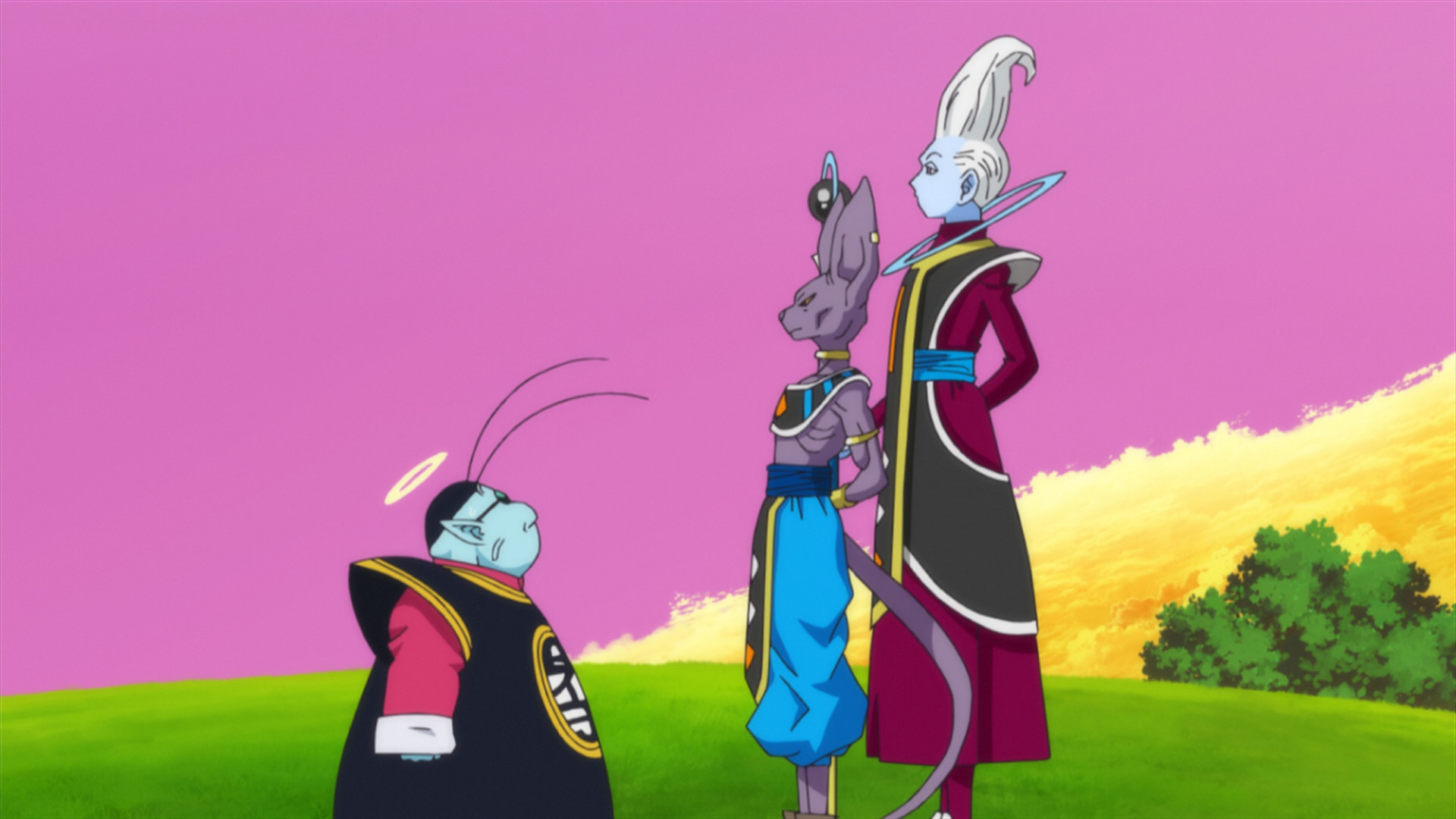
The Dragon Ball Super films serve a very different function than the Dragon Ball Z films. Where Z's films were largely just promotional material for the ongoing manga, plucking characters out of their current spot in the story and throwing them together with some shiny new villain without any regard for canonicity, Super's films are the primary means by which new concepts and characters are introduced to the franchise.
And right off the bat, this is reflected in the movie's runtime. For the first time, a Dragon Ball film has actually reached what I would consider to be feature length. 85 minutes is still on the lighter side, (an extended cut was later released, which adds an additional 20 minutes) but it's an eternity by Dragon Ball standards. So I think this movie deserves extra praise for how well it uses its runtime. I watched the extended cut in preparation for this article, and even with the added material I really felt that this movie flew by. My decision to watch the extended cut was carefully considered, and definitely wasn't just a consequence of it being the first and only version I pirated.
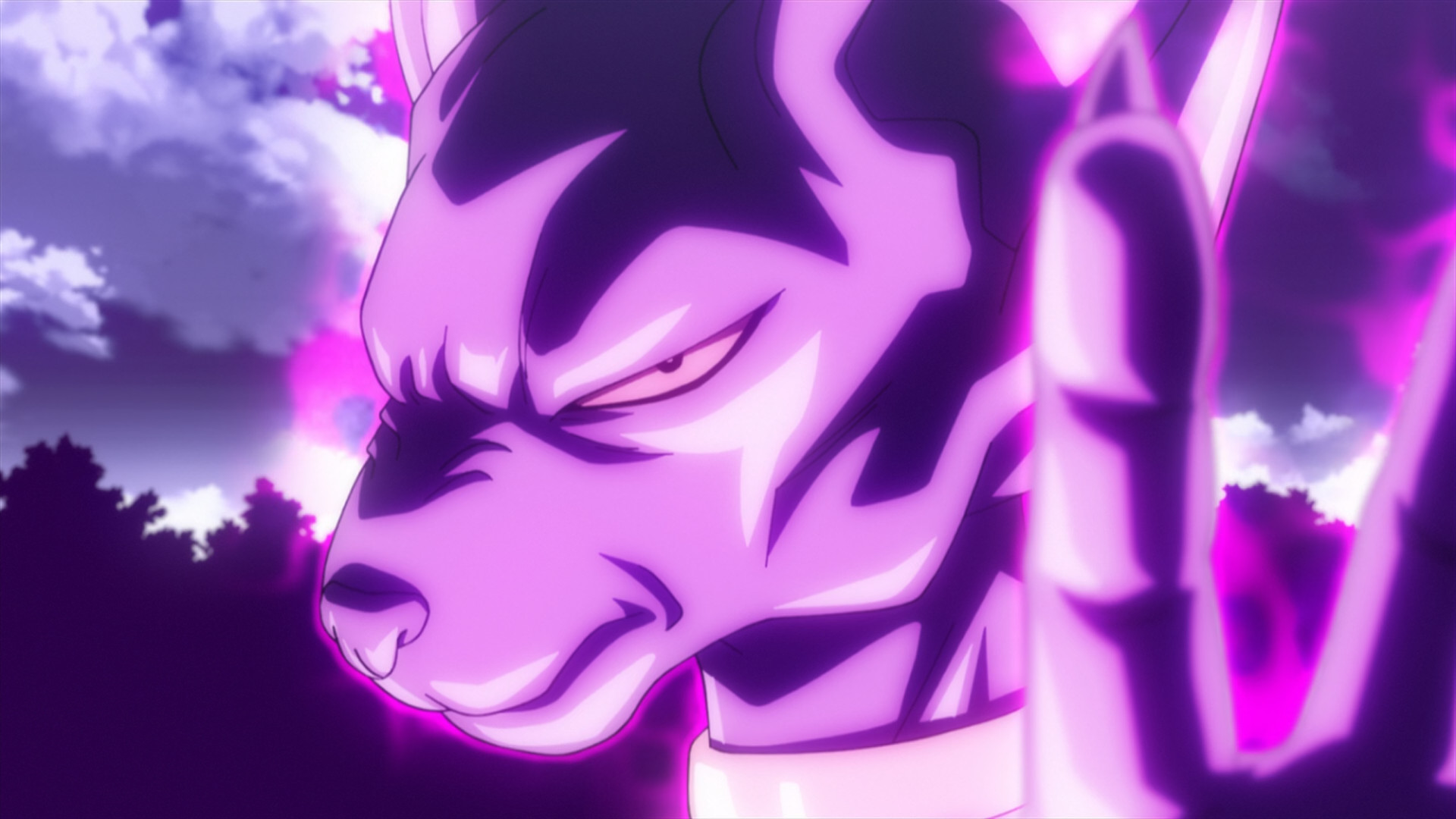
The movie opens with Beerus waking from a decades-long slumber, and already we're given some fun new lore and concepts to dig into. Beerus is one of the Gods of Destruction, which serve as dark counterparts to the Kaioushin from Dragon Ball, which are now said to function as gods of creation. I really like this detail, because the role of the Kaioushin was never all that clear in Dragon Ball; the existence and purpose of the plain old Kaiou rendered the Kaioushin redundant in my opinion. It's also interesting to note that Beerus, while certainly not being a good guy, isn't really all that evil either. He is merely the Yin to the Kaioushin's Yang — they are two halves living in equilibrium. Maybe it's just the Mass Effect fan in me, but I really love this concept of an overseer of evolution, carefully moving chess pieces around to keep the universe in balance. Beerus is also said to have been responsible for the Saiyans' destruction, which is a detail I could have done without. However, I'm not all that bothered by it, since it does at least serve a narrative function: letting us know more about the role that the Gods of Destruction play.
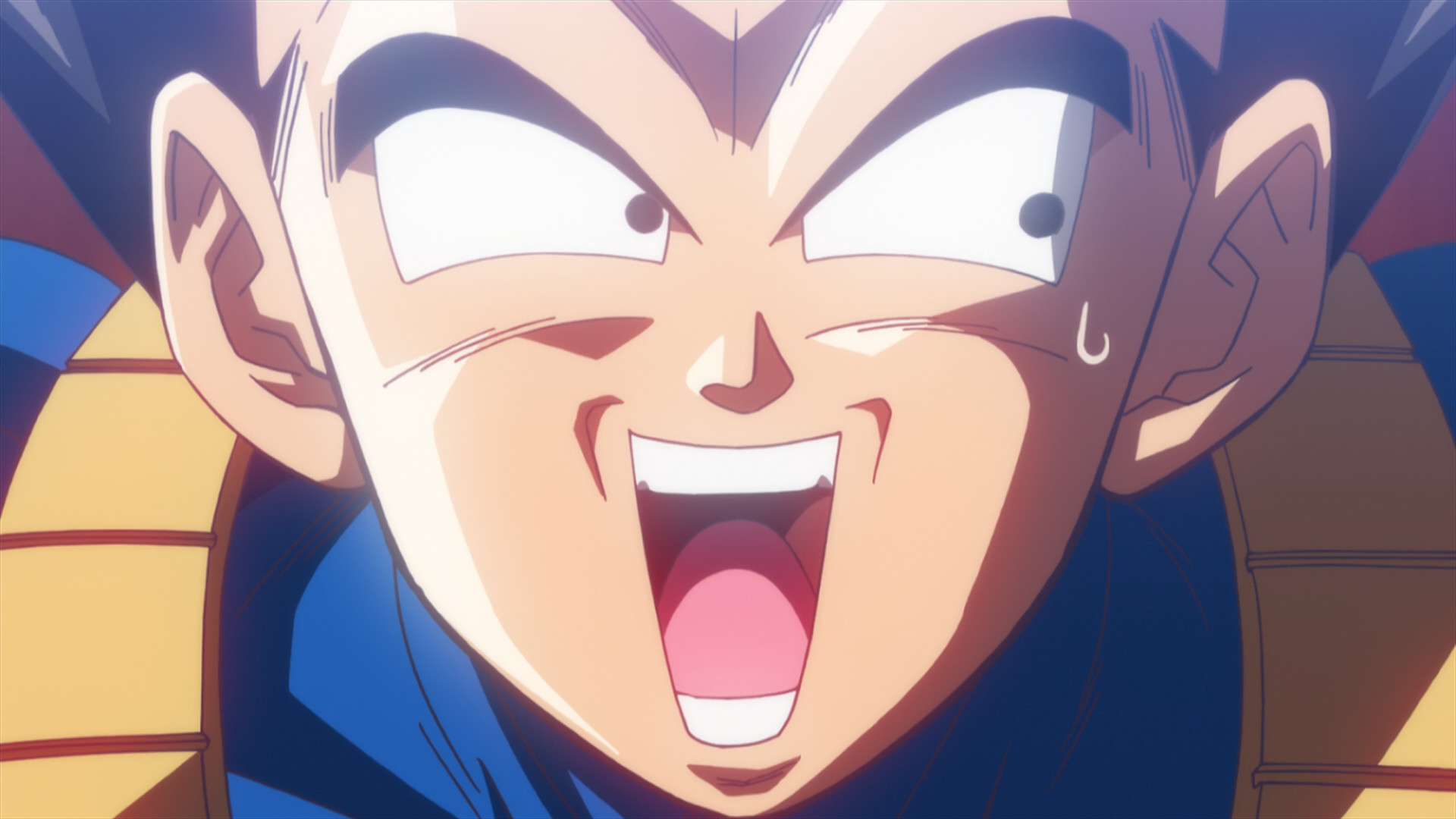
Goku is taken out of the story for a while, after losing a sparring match to Beerus, which leads nicely into the big set piece of the film: A birthday party for Bulma, which gives us a chance to rediscover all of these old characters, with snazzy new designs. While I'm tempted to groan that this movie is playing on the tried and true Dragon Ball trope of taking Goku out of the story, just so he can swoop in and bail everyone out at the last second, I ultimately don't mind since it gives these secondary characters a chance to shine. With Goku out of commission, Vegeta is tasked with preventing Beerus from destroying the Earth by keeping him entertained and making sure he doesn't get pissed off. Vegeta is a character that I tend to fall out of love with after his brief death in the Freeza story arc, but I absolutely love this use of the character. His brooding, edgy personality and his short temper make him the perfect character for this role. It's hilarious watching the normally serious Vegeta debase himself to keep Beerus entertained, all while everyone else at the party is just baffled, wondering what's come over him. It's important to note that Dragon Ball is primarily a comedy series that happens to have a lot of action in its latter half. Reducing the series down to a generic action cartoon, "de-Toriyamafying" it in a way, is probably one of the worst changes imposed by the English dub. When it comes to the comedic aspects of the story, Battle of Gods sticks the landing incredibly well.
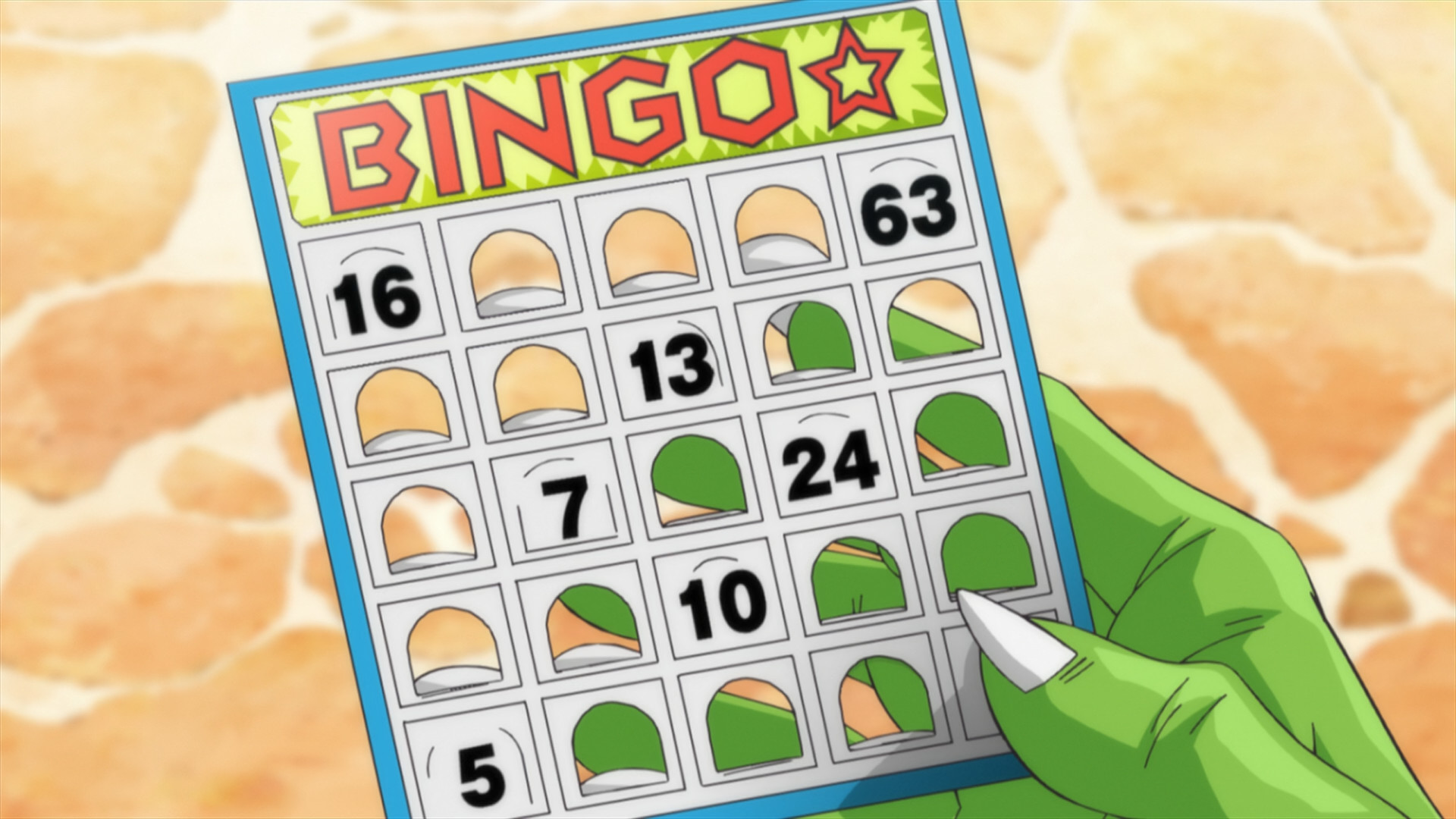
The driving force for the story is Beerus's search for the Super Saiyan God, which is later revealed to be a shiny new transformation that Goku dons. I'm actually a big fan of its implementation here, surprising as that may sound. Super Saiyan God is summoned via a ritual involving multiple pure-hearted Saiyans. The way this is ultimately achieved is a really fun surprise that ties into the end of Dragon Ball; as Videl is revealed to be pregnant with Pan, who serves as the final pure-hearted Saiyan needed to complete the ritual. What's even more impressive is that the transformation doesn't end up being a one-size-fits-all solution to all the characters' problems. Goku loses the fight against Beerus, but Goku's pure-hearted passion for fighting endears him to Beerus, who in turn decides to spare Earth.
I find the ensuing fight between Goku and Beerus to be really interesting. For starters, it is mercifully short, especially when compared to the other Dragon Ball Super films. Even so, there are still some memorable moments peppered throughout. For most of the fight, Goku and Beerus are having a conversation which gives us insight into Goku's character. This conversation is an incredibly rare moment, in fact basically the only instance of this that immediately comes to mind, of an introspective look at Goku. This is where a schism forms in my brain:
On one hand, I think this is a really cool concept. The fight being used as a backdrop for this character study of Goku is unique, and also vastly better than the giant plate of nothing we were served by Resurrection F or the end of Dragon Ball Super: Broly. This conversation is what endears Goku to Beerus, which makes for such a wonderful ending to a film. I can't emphasize enough just how refreshing it is that the fight isn't won by the biggest power level, but by strong character writing. On the other hand, the conversation is an examination of an iteration of Goku that I absolutely cannot stand.
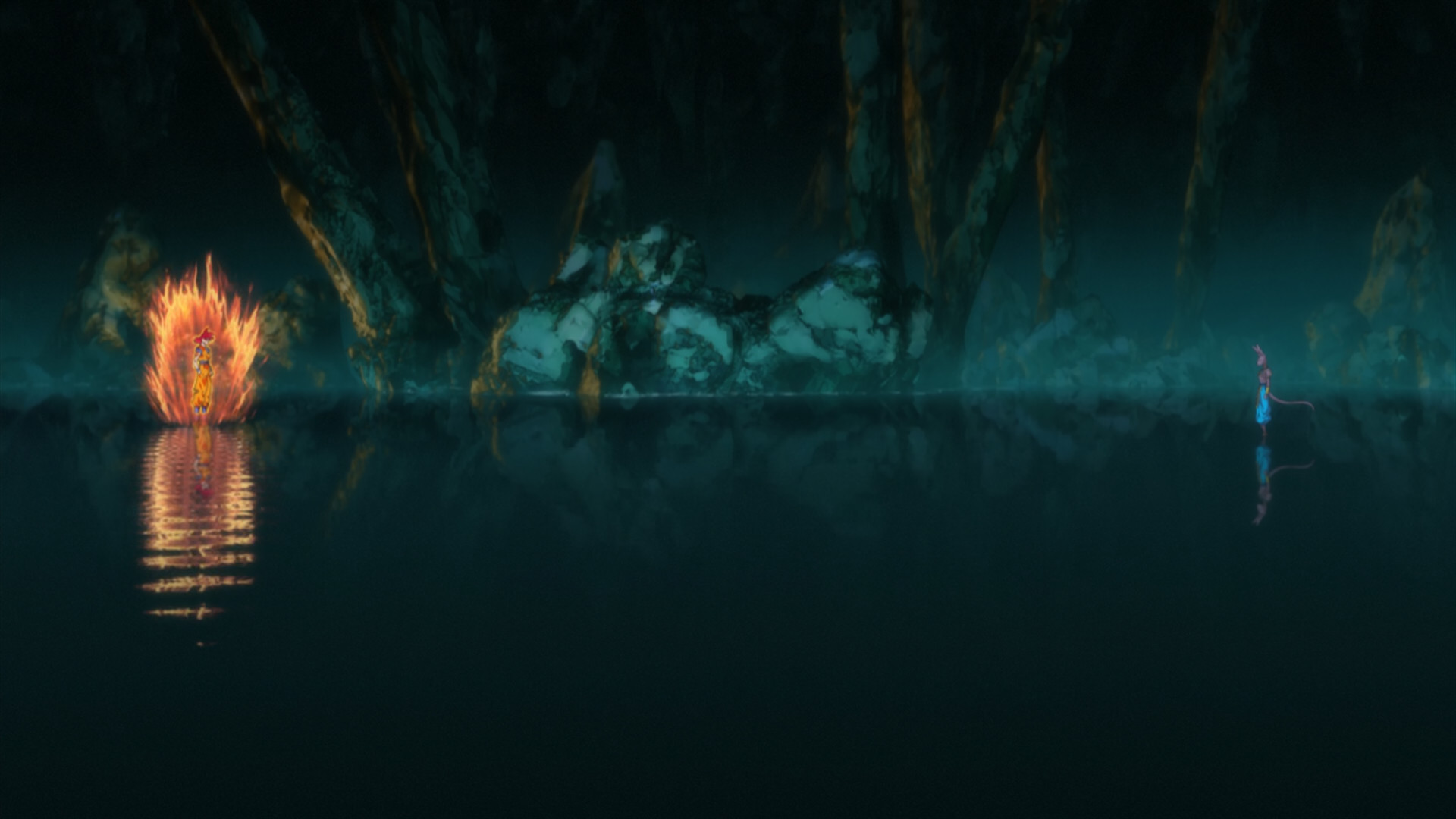
This boils down to the old question of whether or not Goku is a hero. In my opinion, the answer is a resounding yes. Goku's very first character defining moment is selflessly deciding to help the sea turtle, instead of continuing to follow Bulma on her Dragon Ball quest. Right off the bat we learn that Goku is selfless, while everyone else around him is selfish. There are plenty of heroic things he's done throughout the series, such as continuing to help Upa after finding his grandpa's Dragon Ball or sacrificing himself to defeat Raditz. After the reveal of Goku's Saiyan heritage, Toriyama starts to push Goku in a different direction. This is where the insipid concept of the "selfish martial artist" emerges — The idea that Goku isn't really heroic at all and is purely motivated by his desire to fight strong opponents. This idea started to gestate at the end of the Saiyan story arc, but had fully set in by the end of the Cell story arc. This was likely an overcorrection by Toriyama, who had felt that Toei were pushing Goku into a more generic superhero role, with the most extreme example of this being in Cooler's Revenge.
Goku doesn't fit the conventional mold of what we expect a superhero to be, but he is a hero. Goku may forego the most practical solution if it means that a good fight can happen, but he's not afraid of "playing dirty" if it's ultimately necessary to save lives, such as during his fight with Raditz. There's no retarded insistence that they fight 1-on-1, he teams up with Piccolo and sneaks up on Raditz twice. I shudder to think of how Dragon Ball Super's Goku would have handled this conflict.
By the time Dragon Ball Super rolls around, Goku has regressed into a caricature. And that's what irks me about this scene, is that this movie is seemingly allergic to having Goku say anything heroic. This entire examination of Goku is just him whining about how he needed to rely on others' help to achieve the Super Saiyan God form, and that he would have rather fought without their help. If I take this movie on its own merits, it's an interesting little character study, but as a piece of a larger franchise, I just hate the way it treats Goku. When Beerus is threatening to destroy the Earth, Goku's goal should be to stop him by any means necessary. The fact that Goku doesn't just immediately start fighting at 100% power is also just infuriating to me.
Of course, that's just one example of this irritating characterization of Goku. One of the most baffling scenes in the whole series comes when it's revealed that Goku had arrived on Earth in secret and watched Beerus attack his friends, presumably in order to study his technique, before eventually making his grand reveal to everyone. Goku apparently witnessed Beerus slap Bulma and didn't feel the need to engage, which I find horribly out of character for him. Goku is shown throughout the series to be very protective of his friends, with Kuririn's death (both deaths) sending Goku into a fit of rage. Bulma is Goku's oldest friend, so I feel like his bond with her should be as strong as (or even stronger than) his with Kuririn. Instead, I'm expected to believe that Vegeta, who had previously threatened to kill her, would be more outraged. This bastardization of Goku's character is all done for a stupid gag that isn't even all that funny.
But just viewing this movie on its own merits, rather than as part of a wider franchise, I can admire the novel character concept. The "selfish martial artist" is an interesting enough trope, albeit not one that I think fits Goku as a character (characters such as Tenshinhan, Piccolo, or Vegeta are much better suited to this mindset). What I can't look past, however, and this is the biggest flaw of this film, is that I just find it incredibly ugly. I already spoke about my disdain for this art style while discussing Resurrection F, so I won't waste too much ink on it here. Long story short: Everyone looks like they're made of plastic. The colors are muted, characters look unusually shiny, and the thin lines make characters feel weightless. CG also rears its ugly head here, granted I don't find it quite as poorly implemented as in Resurrection F or Broly. Even the very worst Dragon Ball Z films usually gave me something nice to look at, but this movie's bland animation makes it feel more tedious than it should, which is a real shame given how much I love the story.

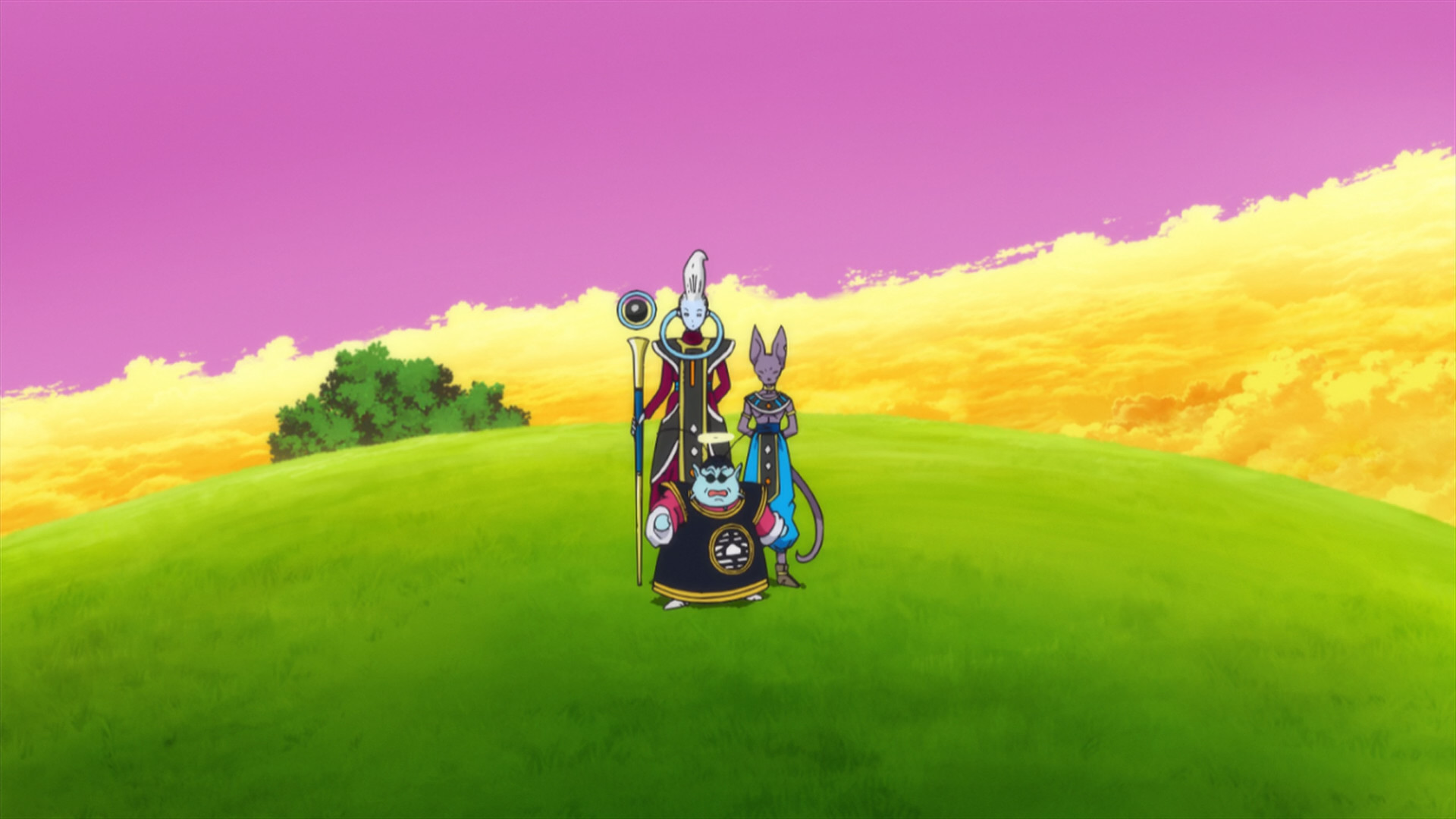
Despite all my faults with this film, I really do enjoy it a lot, and I could honestly see myself moving it up the list with time. Its art style is always going to make it a hard sell, and there are some little nitpicks I have with Goku's characterization. I think there's more than enough good here to make up for it, however, so this film comes highly recommended from me. For as much as I enjoy Broly's character designs, and for as much as I can't stand Battle of Gods's, I'd easily watch the latter over the former any day.
7. Dragon Ball Z: Cooler's Revenge (1991)
Dragon Ball Z: The Incredible Mightiest vs. Mightiest
I know I've already said this for other films, but this is a film that seriously doesn't deserve to be this high on the list.
Cooler's Revenge has got all of the Dragon Ball Z movie tropes — An opening leisure activity that's disconnected from the rest of the film, generic movie henchmen, Piccolo arrives on queue to save Gohan, Goku arrives on queue to save everybody else, and I could keep going if I wanted to. There's very little that sets this movie apart from its peers, but what is there makes an amazing impression.

This movie forced its way up the list through sheer competence. I've heard fans of Dragon Ball Super: Broly say that, while the fighting doesn't serve much of a purpose, is still enjoyable for just being so viscerally cathartic. In their eyes, it wouldn't be fair to say that Broly is an example of "style over substance" since the style is the substance. Even though I don't agree, I understand where they're coming from. In some sense, I'd call this movie my Broly. Even though the gorgeous art and exciting fight choreography aren't in service to a spectacular story, there's something about Cooler's Revenge that I find so enjoyable. This movie scratches my catharsis itch very nicely.
Cooler's Revenge is an absolutely beautiful film. I like how the time of day shifts around, keeping the color palette fresh. My favorite scenes are probably those that take place at sunset, where the water is this warm orange color. There's a really fun fight between Piccolo and one of Coola's minions that takes place in the forest, which makes great use of the environment. We also get to see Piccolo's stretchy arms, which go horribly underutilized in the manga.


This movie's fight choreography is really great in general. Piccolo's beat down of Coola's minions is probably his most bad ass showing in any of these films (or at least until Super Hero). I also absolutely love the fight between Coola and Goku near the end of the film, after Coola enters his final form. Coola is one of my Dragon Ball FighterZ mains, so I may just be incredibly biased here, but I find the fight choreography to be far more memorable here than in most other films. Even though the fighting doesn't mean a whole lot, I do find it enjoyable for its own sake. The fight is at least mercifully short, and there are clear signs of damage that show signs of the battle progressing.
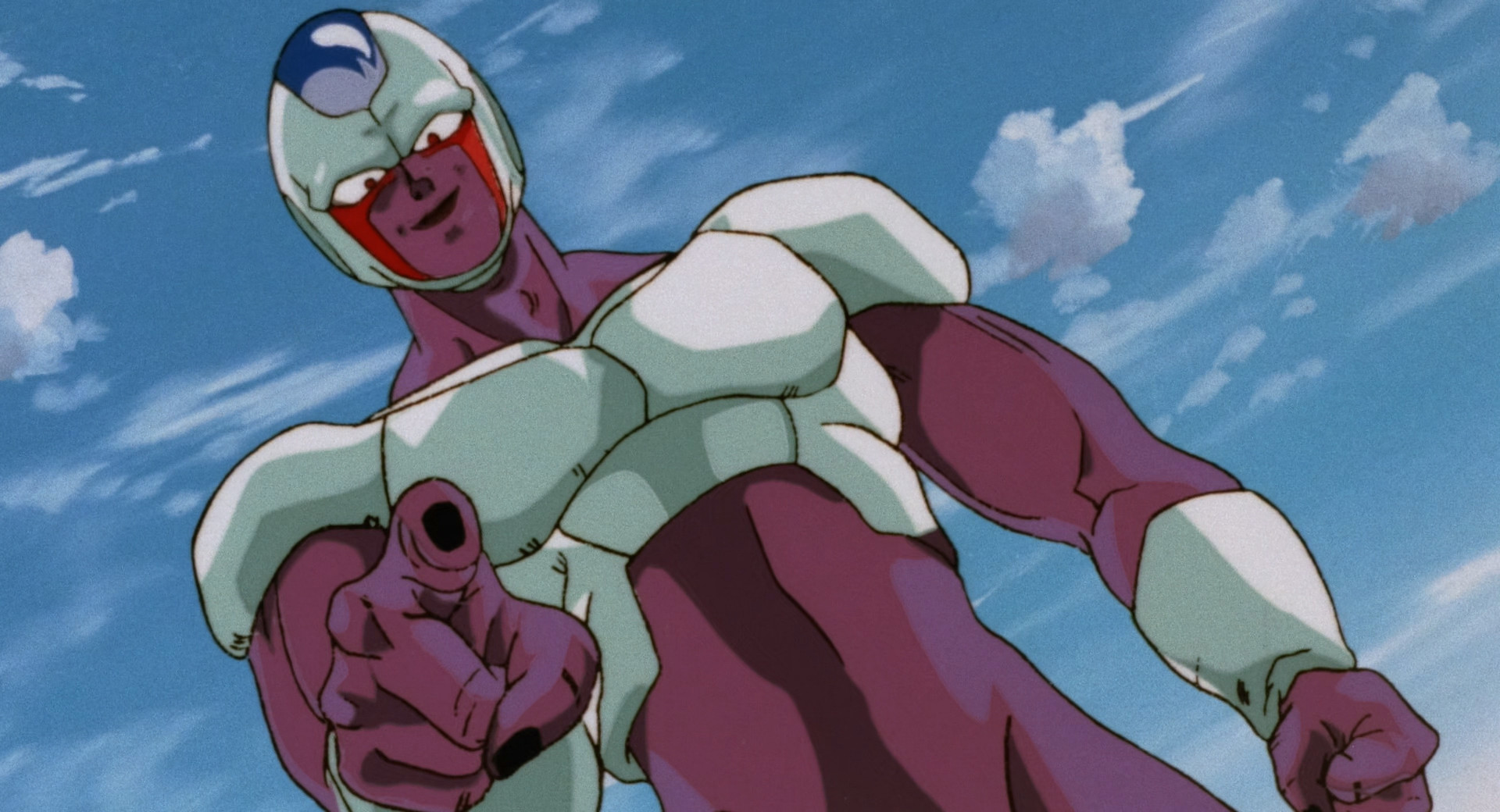
And while his henchmen are boring, I think Coola makes for a very compelling villain. He is far more concise and calculated than Freeza, and doesn't hold his brother in high regard. He considers Freeza to be careless, which is illustrated nicely by the opening scene. Coola witnesses the destruction of Planet Vegeta and notices a lone pod housing a baby Goku, whom he spares to teach Freeza a lesson. This ends up coming back near the end of the film in a beautiful moment of irony. As Coola is defeated at the hands of Goku, he realizes that he had become careless. The music that accompanies scene adds so much weight to this revelation.
I also love his final form. It causes him to bulk up, grow giant fins on his arms, and it obscures his face. It makes him look truly alien, and much more menacing than Freeza ever did in my opinion. I also find it interesting how Coola starts to act more Freeza-like after assuming this form; he becomes much more cocky and reckless, reveling in torturing Goku, rather than pragmatically finishing him off. This illustrates an idea that was introduced in the Freeza story arc, but that didn't quite live up to its potential in that story — Freeza's true form, what we know as his 'final' form, is said to be too powerful. Freeza had developed his weaker forms as a means of containing his power. This ends up being a thinly veiled excuse for Toriyama to keep ratcheting up the power levels, since I don't find Freeza's general temperament to be all that different between his first and last forms. Coola, by contrast, noticeably becomes more boastful as he enters his final form. I always enjoy seeing these underdeveloped Toriyama concepts put to good use by Toei.
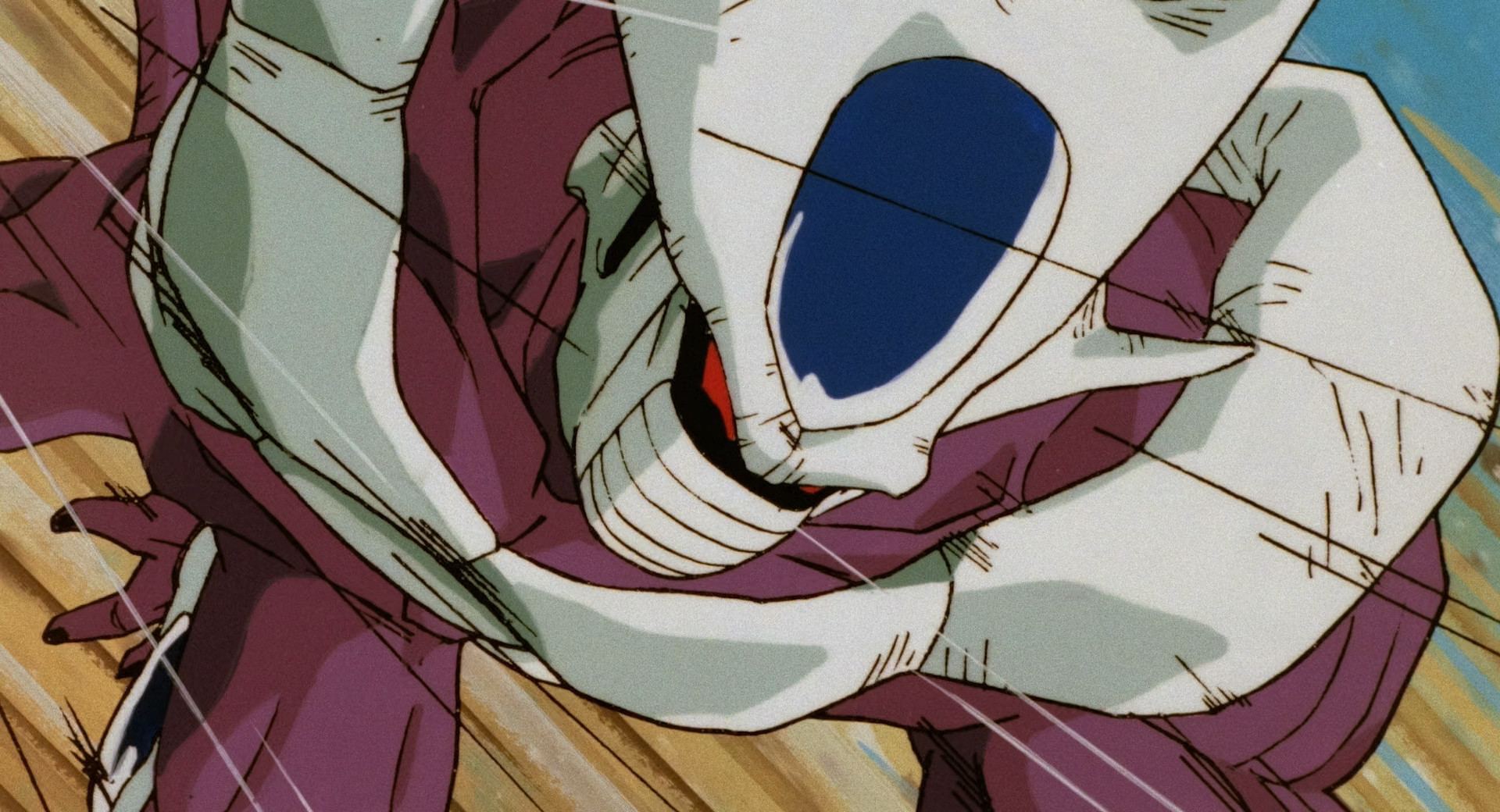
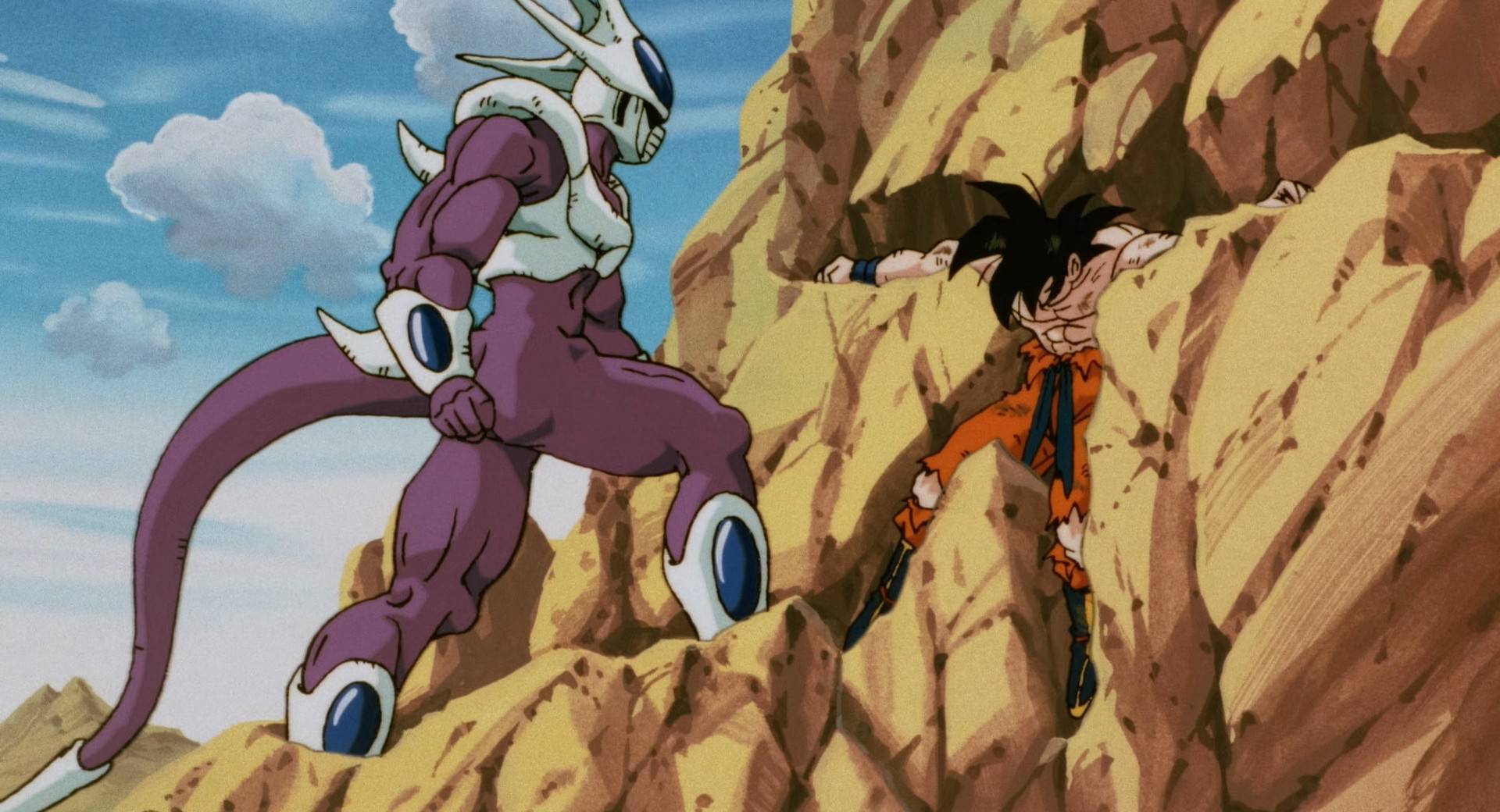
...So it's especially odd the way Coola describes this form. Coola brags to Goku that he has "one more" form than his brother, but I think Toei may have forgotten that we technically see Freeza's forms in reverse order. Freeza's most transformed state is the first one we see him in, and his true form is the one we see last. So when Coola says that he can transform "one more" time, my first assumption would be that he's referring to some unseen weaker form, which is totally irrelevant info to share at that moment. It would have been much more concise for Coola to just say "this isn't my true form" or something along those lines. Now it should go without saying that I'm not that bothered by this, it just makes me second guess Toei. I wonder if all that business about Coola becoming more reckless as he enters his final form was just a happy accident.
These moments are not the sole contributing factors to why I come back to this movie more often than the others. I also find Goku's characterization to be a fascinating point of discussion, since it's so incredibly out of step with how the series would later portray him. While discussing Battle of Gods, I spoke about how I find Goku's modern characterization, the selfish martial artist that's purely motivated by his desire to fight strong opponents, to be absolutely infuriating, and inconsistent with how he was originally portrayed, especially in the early part of the series. Well, Cooler's Revenge shows us the other extreme. This is Goku at his most stoic, as well as his most heroic (hadn't intended for that to rhyme).
Now while I enjoy this iteration of Goku, and vastly prefer it to the battle-hungry retard of Dragon Ball Super, there are some select moments that I find awfully out of character for him. Goku's insistence on putting the safety of the forest animals before himself, for instance, just feels odd, even when taken in the context of early Dragon Ball. Those same animals are later shown to be crowded around Goku, as though he were a Disney princess, while he recuperates in a cave. Of course, even this might not be the most bizarre thing Goku does in this film. In possibly the most infamous example of "super-hero Goku", he seemingly brings a dead bird back to life as he transforms into a Super Saiyan. While I feel like Toriyama over-corrected with Goku's characterization near the end of Dragon Ball (and especially in the modern material), I can't say I'm all that surprised or that I really blame him for doing so.
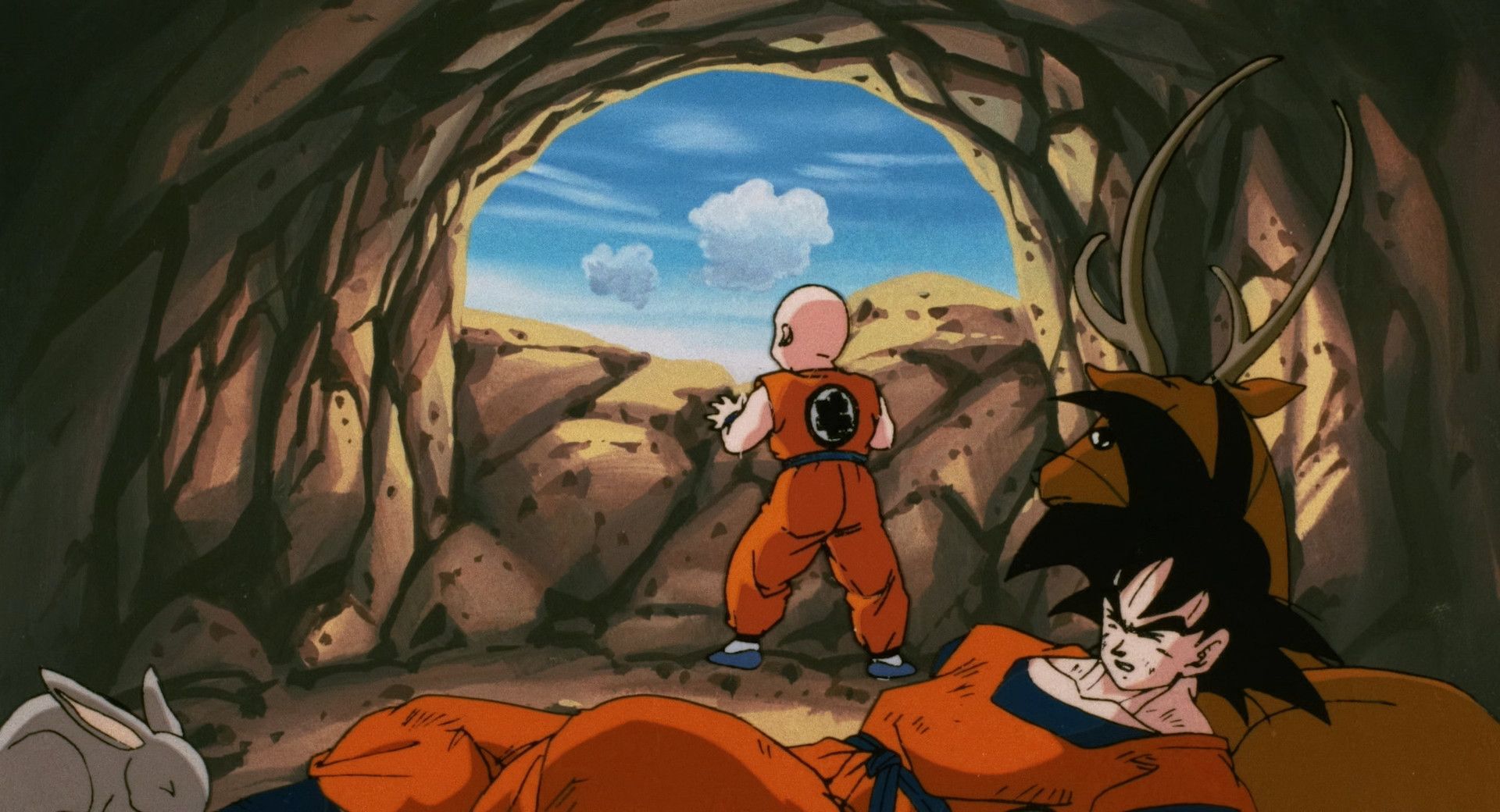
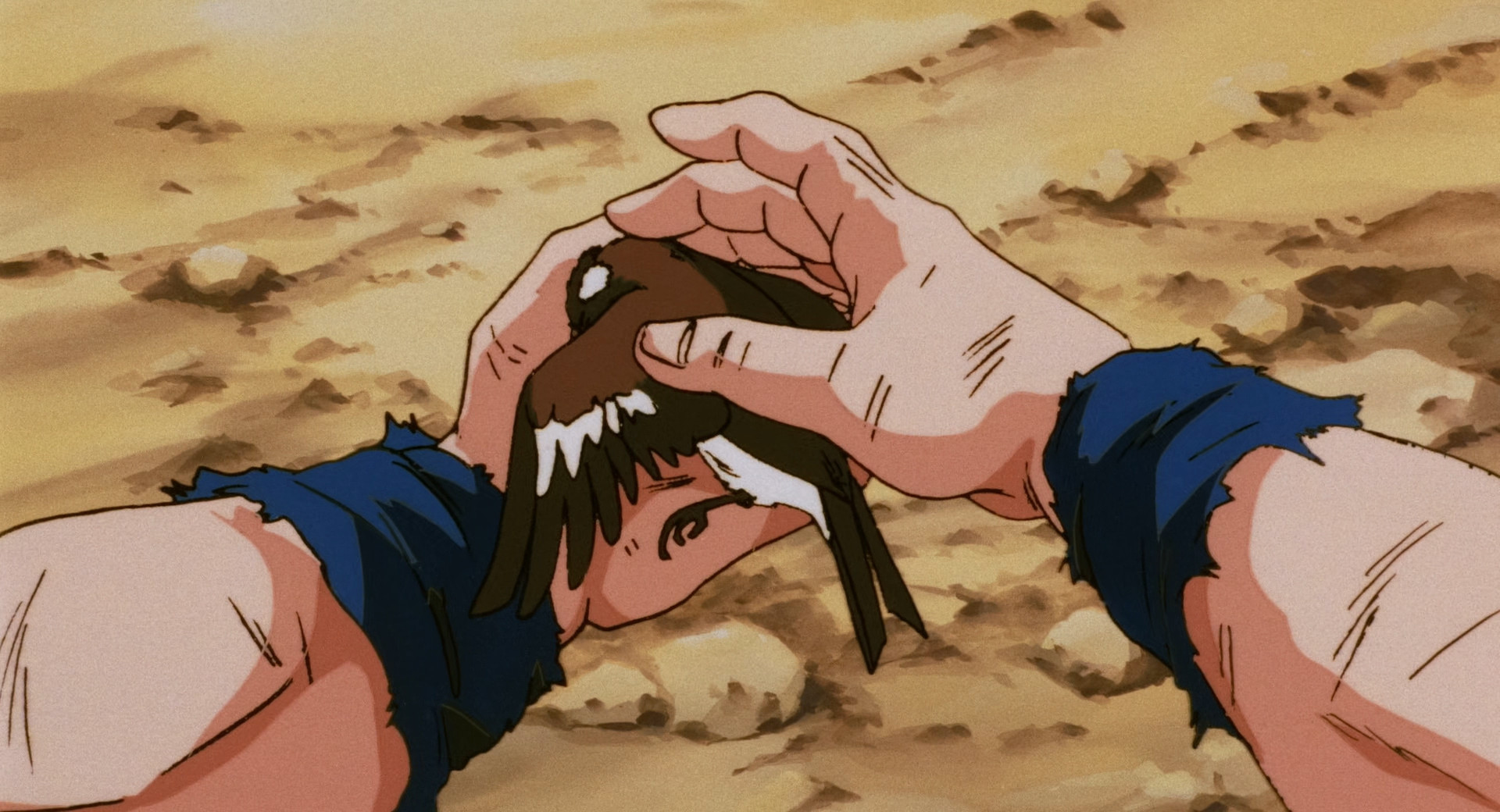
Still, it should come as no shock that I enjoy this depiction of him so much, warts and all. Goku proudly proclaiming that he is a Saiyan that was raised on Earth, as he did in Tree of Might, is so much more satisfying than his aggravating tendency to just selfishly give in to his Saiyan impulses. I also adore the way he stares down Coola as he transforms into a Super Saiyan, grabbing his arm and saying “How many planets will you guys have to destroy before you're satisfied?” And then he explodes with anger as he says “I'm not forgiving you any more, even if you do apologize, you scumbag!” BASED.
Call me biased all you like, but I can't seem to get enough of this film, its gorgeous landscapes, and interesting characters. I do also find this movie to be a really interesting curiosity, for how it portrays Goku, and how its portrayal would have a lasting impact on the rest of the series. This one is definitely worth a watch for any Dragon Ball fan.
6. Dragon Ball: The Path to Power (1996)
As if my biases weren't clear enough, it took us 15 movies to get to a Dragon Ball film without "Z" or "Super" in its title. I much prefer the exciting adventure story that Dragon Ball started out as, instead of the high-stakes shounen series it would eventually become.
Of course, as with the last two Dragon Ball Z films (which I argued really should have been classified as Dragon Ball Super films), The Path to Power gives off the vibe of Dragon Ball GT, which never had a movie of its own. There was a TV special, but that doesn't count.

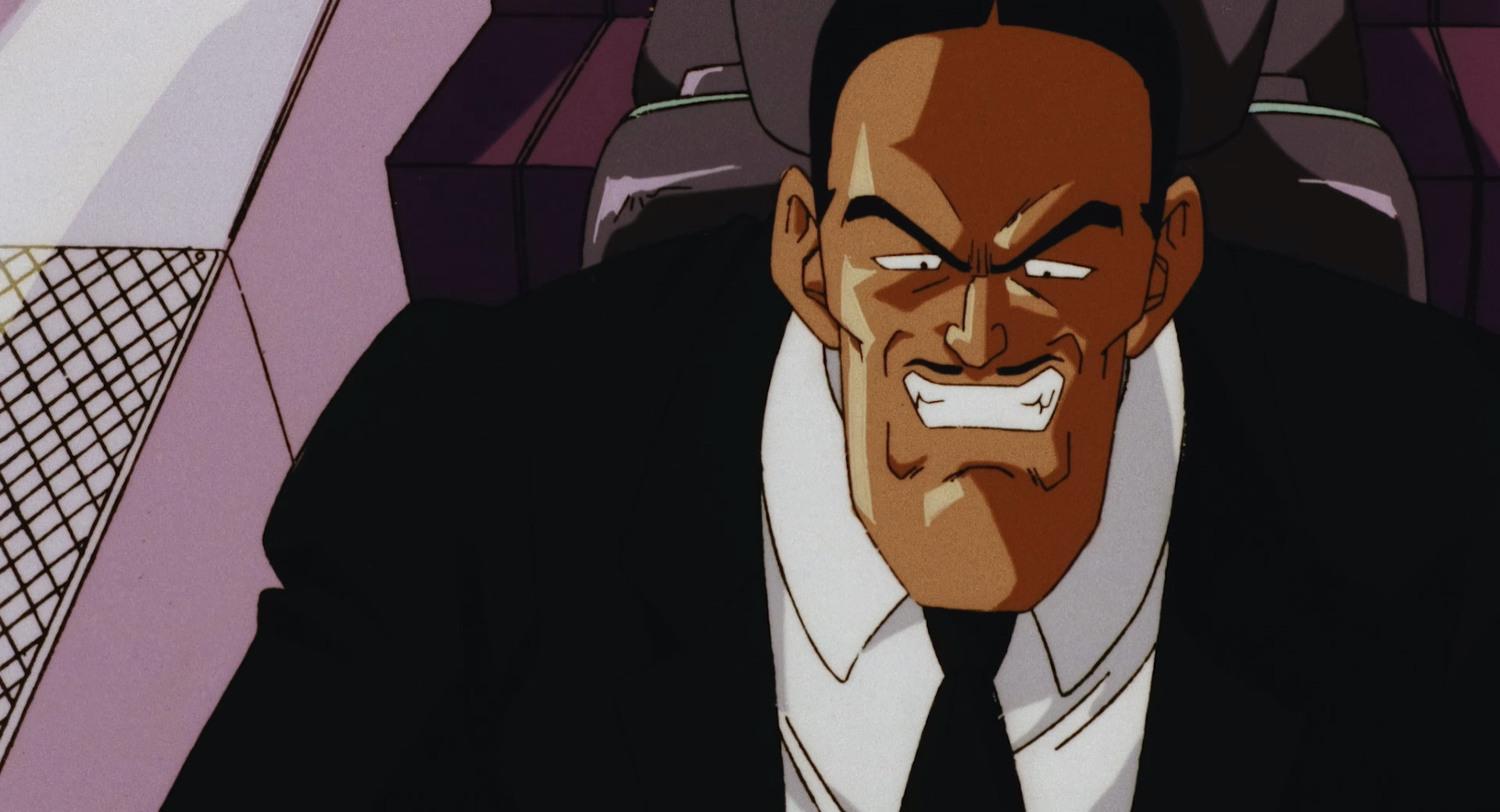
This movie uses Dragon Ball GT iconography, such as in its character designs, art style, and music. Characters look much more angular and are very shiny, but have thicker lines that prevent them from looking like the plastic figures of Battle of Gods. The presence of film grain (a natural byproduct of cel animation) also helps. Goku uses his Dragon Ball GT design, and other minor characters were given significant redesigns, such as the Red Ribbon Army characters.
This movie also marks the first appearance of a new composer. Akihito Tokunaga, the composer for Dragon Ball GT, steps in to replace the legendary Shunske Kikuchi. While Kikuchi will always be the GOAT of Dragon Ball music, Tokunaga's music adds a lot to this film. There are some pretty great tracks that get recycled for Dragon Ball GT, including one piece that gets associated a lot with that series' most iconic villain: Baby. Funny to think that such a powerful villain's theme was originally composed for Yamcha. At the same time, there are some odd music choices, such as a rock track that would have sounded more at home amongst the English dub's replacement score. The movie is also less conservative with its use of music; scenes that Kikuchi would have been comfortable to leave silent are now filled in by cheesy music. Goku's meeting with Bulma, for instance, is punctuated by a very sentimental piece of music (an instrumental version of one of Dragon Ball GT's ending themes), which clashes with the humor of the scene. When Kikuchi scores the same scene, both in Dragon Ball's anime adaptation and Curse of the Blood Rubies, he chooses not to use music here. All things considered, I do enjoy Tokunaga's music, and I think it gives The Path to Power more of its own identity, which is important seeing as how its story is a retread of early Dragon Ball.
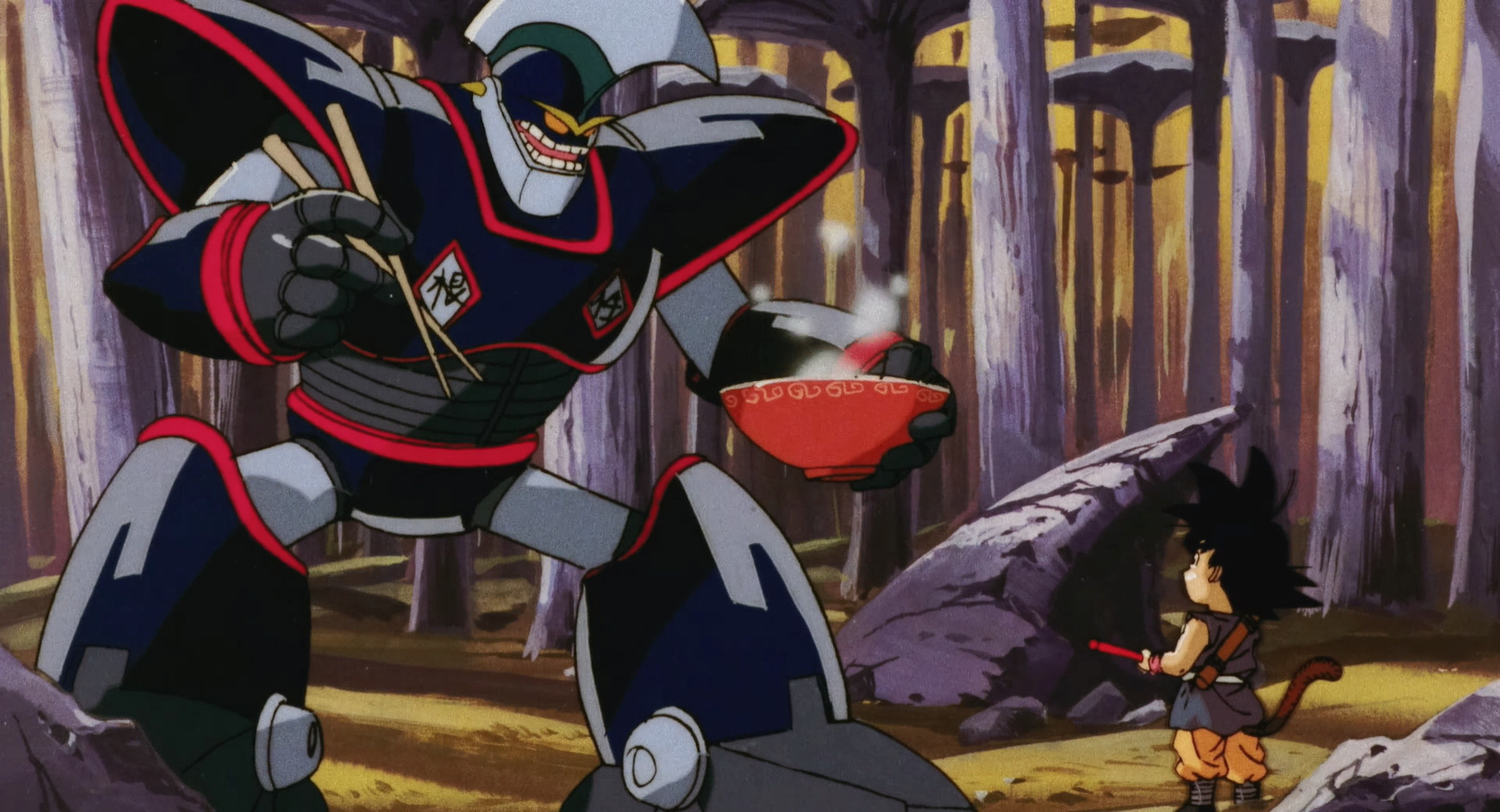
The film's story is somewhat of a combination of the first and third story arcs of Dragon Ball. While the story takes elements from early Dragon Ball's most iconic arcs, when the series was more focused on adventure and humor, it contains much of the high-stakes action and shounen tropes that defined the franchise's later story arcs. It seems like an odd combination, and there are certainly issues that arise in its approach, but I find that it ultimately ends up working out rather nicely. This movie bridges the gap between the extremes of Dragon Ball, which is why I think it's such a fan favorite.
This movie also boasts some of the most beautiful, fluid animation the series has ever seen. In fact, this may very well be the best animation in any Dragon Ball film period. The static images you're seeing throughout this article really don't do it justice, you need to see it in motion. The Path to Power also doesn't suffer from the same pacing issues as the early Dragon Ball films, especially Mystical Adventure, which also adapted parts of the Red Ribbon story arc. This movie isn't afraid to really take its time and let the viewer get immersed in the emotions of a scene, the best example of this would probably be a scene between Goku and Android 8 playing around in the snow. The relatively short run time seems like it would be at odds with the density of the story, and in those early Dragon Ball films it often was, but this movie doesn't feel rushed in the slightest. It's really impressive, honestly.
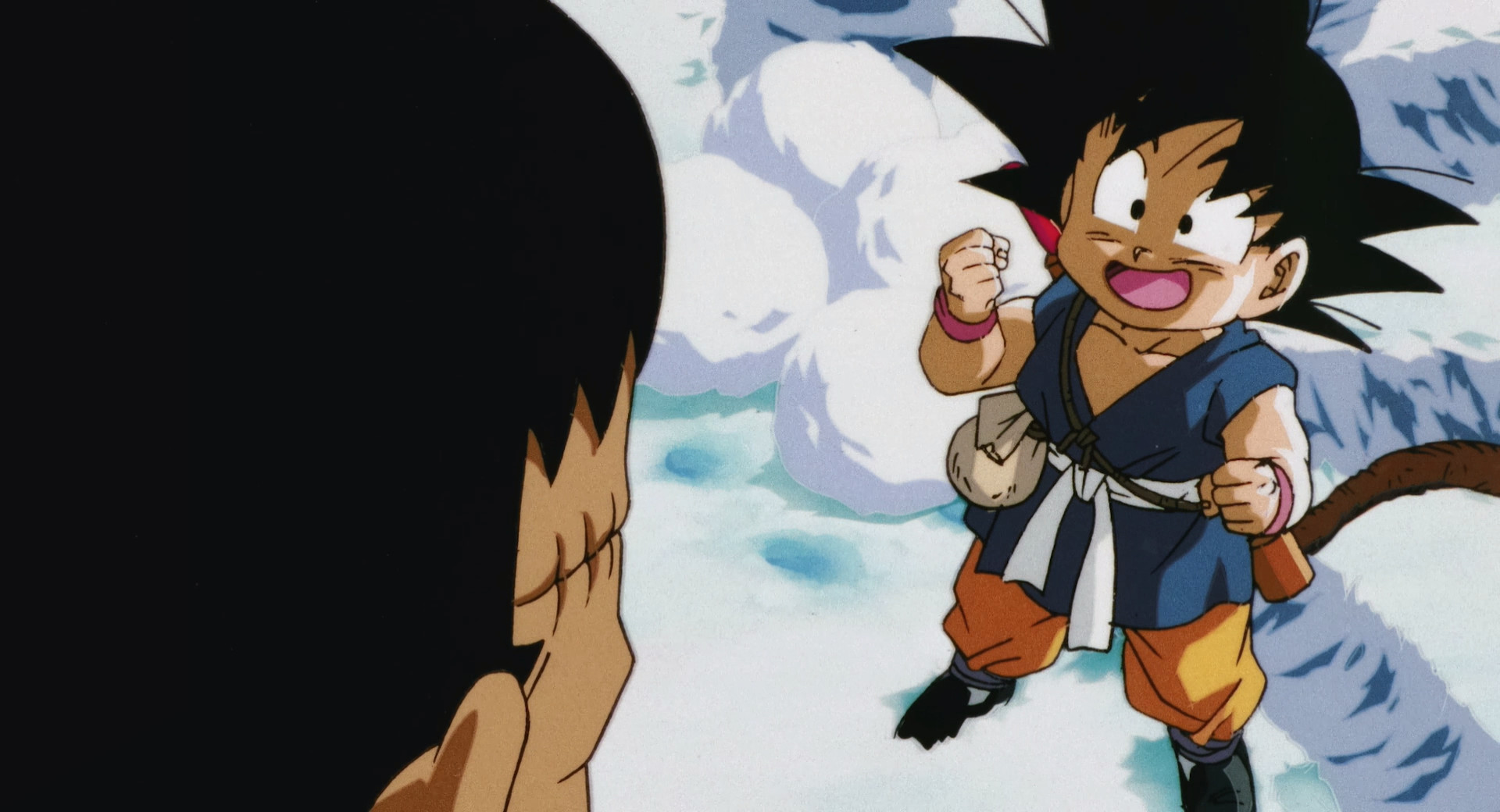
Of course, there is a reason that those earlier Dragon Ball films are ranked higher than this one. Many aspects of this movie's plot, particularly its character motivations, feel underdeveloped. General Blue, as just one example, really doesn't have much of a reason to be here. The first time he appears, for instance, his clothes are completely shredded, which makes for a really bad introduction to one of the most memorable parts of his character — His prudish, prissy obsession with his physical appearance. This aspect of his character is never highlighted in The Path to Power, as he's killed off by Commander Red shortly after he's introduced.
Mystical Adventure integrates its movie-original elements into its adaptation of the Red Ribbon story arc very well. The effect here is far less seamless, with the movie often feeling more like a 'greatest hits' montage of moments, rather than an interconnected story. The Dragon Ball hunt abruptly comes to a halt when the team arrives at Muscle Tower. Bulma, Oolong, Yamcha, and Pu'erh all awkwardly sit out Muscle Tower, since they weren't there originally and the movie didn't make any attempt to integrate them into that plot.
The Muscle Tower example also highlights another issue with the film, one that fans of Dragon Ball GT are well aware of. As the saying goes, "GT" stands for "Goku Time." Side characters are introduced and then swiftly shoved to the side so that Goku can take the spotlight. In fact, there's even a joke that plays on the trope near the end of the film. When Goku fights Black, his friends all wait on the sidelines. When Black is seemingly defeated, everyone starts to make their way towards Goku, only for them to run back into hiding as Black gets back up.
This movie came out roughly around the time of the Dragon Ball anime's tenth anniversary, so I imagine it was a great bit of nostalgia back in 1996. Of course, this isn't the first adaptation of the first Dragon Ball arc. In fact, it's not even the first one in this film franchise. It also isn't the first time the Red Ribbon story arc has been adapted, either. Dragon Ball GT's art style, music, and tone prevent this movie from feeling more derivative than it ought to, but even despite all that it can feel rather tiresome at times.
I really do enjoy The Path to Power, and I would highly recommend it for any Dragon Ball fan, or even for newcomers to the series. Of course, it isn't my favorite adaptation of the first arc. And quite frankly, the best way to experience the first arc is to just read the manga as lord Toriyama intended. But speaking of the first arc...
5. Dragon Ball: Curse of the Blood Rubies (1986)
Dragon Ball: The Legend of Shen Long
Possibly the most undeserved placement on this list, Curse of the Blood Rubies has some pretty glaring flaws, but I can't help but love it for its original Dragon Ball charm.
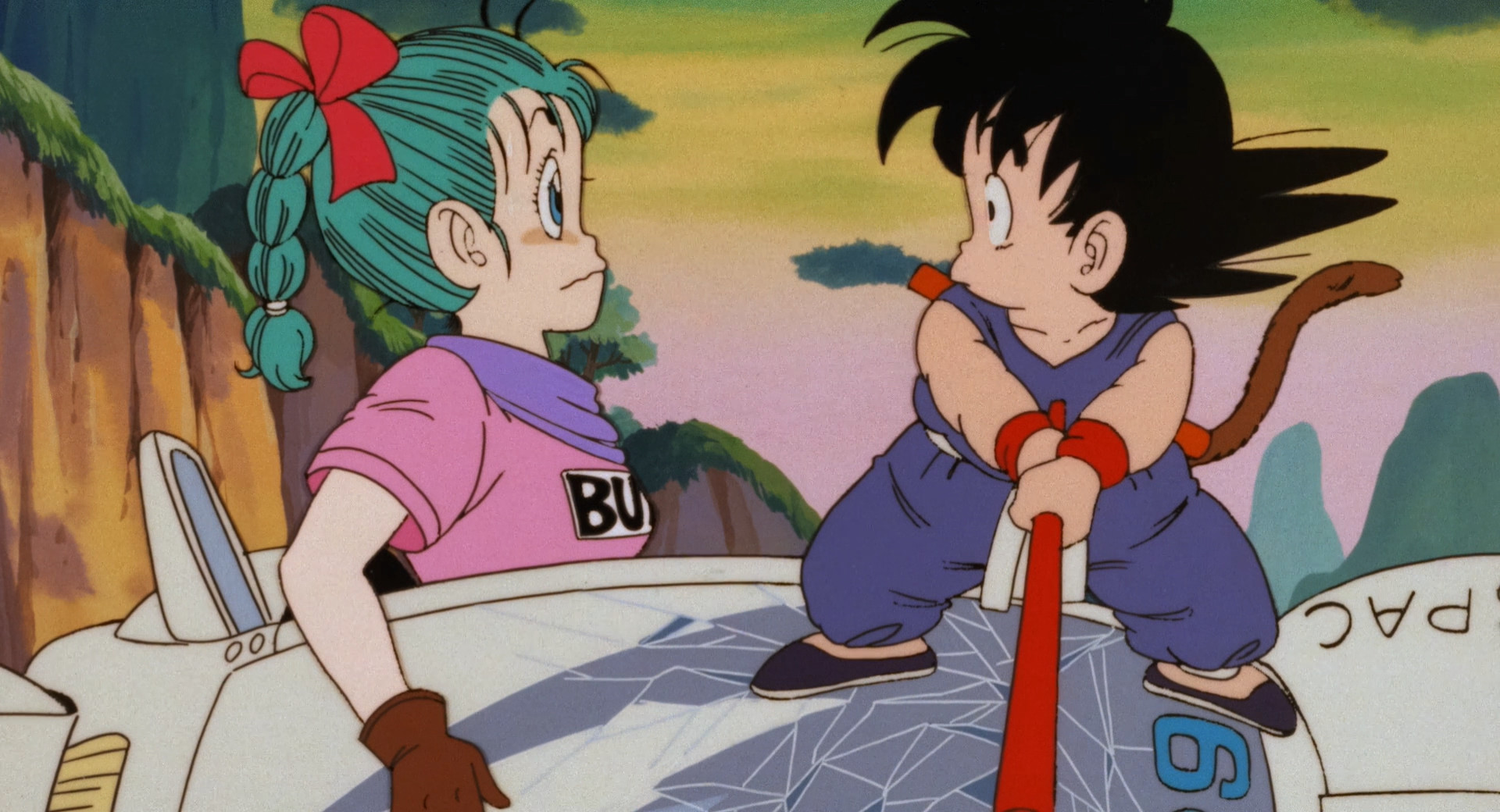
One immediately apparent flaw, not one that I blame the film for, is its horrible English title. "Blood Rubies" is a completely made-up term by the dub that I find totally unnecessary. The (non-)titular gems are called Rich Stones (literally リッチストーン). In fact, the Japanese title, The Legend of Shen Long, perfectly fits the film and, more importantly, is easily distinguishable from other Dragon Ball film titles. In fact, all of the original Dragon Ball films have good Japanese titles, enough that Funimation didn't even bother changing them for the latter two films. It's only until we get to the third Dragon Ball Z film, The Tree of Might (originally known as Super Showdown for the Whole Earth), where the Japanese titles start being horrible. Curse of the Blood Rubies is probably the worst title change, and I give that title precedence over the Japanese title purely for the sake of consistency. I wouldn't like to make an exception for just one film, and I'd rather cope with the crappy title for this particular film than having to constantly refer to Broly's debut film as Burn Up!! Hot Fight! Fierce Fight! Super Violent Fight!
Curse of the Blood Rubies immediately highlights a major difference in approach between the original trilogy of Dragon Ball films and the later Dragon Ball Z films. The Dragon Ball trilogy was more like an alternate timeline retelling of the manga's events that ran parallel to where the manga was at at the time. This film adapts the first arc, but (clumsily) incorporates its own original story about a greedy king terrorizing a village for its Rich Stones.

The main issue with this movie is that it spends far too much time focusing on adapting the manga events, and not nearly enough time on the movie-original plot. I find it especially odd since audiences had just finished watching an adaptation of the first arc on television earlier that year. The Path to Power only feels stale with the detriment of hindsight — Curse of the Blood Rubies was redundant on release. It doesn't surprise me that the following film, Sleeping Princess in Devil's Castle, decides to take a very different approach to how it adapts the manga. Even at the movie's halfway mark, and keep in mind this movie is not very long, we are still introducing characters instead of advancing the movie-original plot, which is a shame since I really enjoy the little of that plot we get to see.
And as with The Path to Power, the movie original plot isn't very well integrated into the adaptation. Pansy, a girl from the village, is sent away to seek the help of the Turtle Hermit, to defeat the greedy king Gurumes. On her journey, she encounters Oolong, and is then saved by Goku and Bulma. On their travels they also run into Yamcha and Pu'erh, who stalk the group after they learn about the Dragon Balls. They eventually meet the Turtle Hermit, who does the ol' pafu pafu and throws in a Kamehame-Ha for good measure. Things pick up near the end where the group storms Gurumes's castle, in a really fun action sequence with great music.
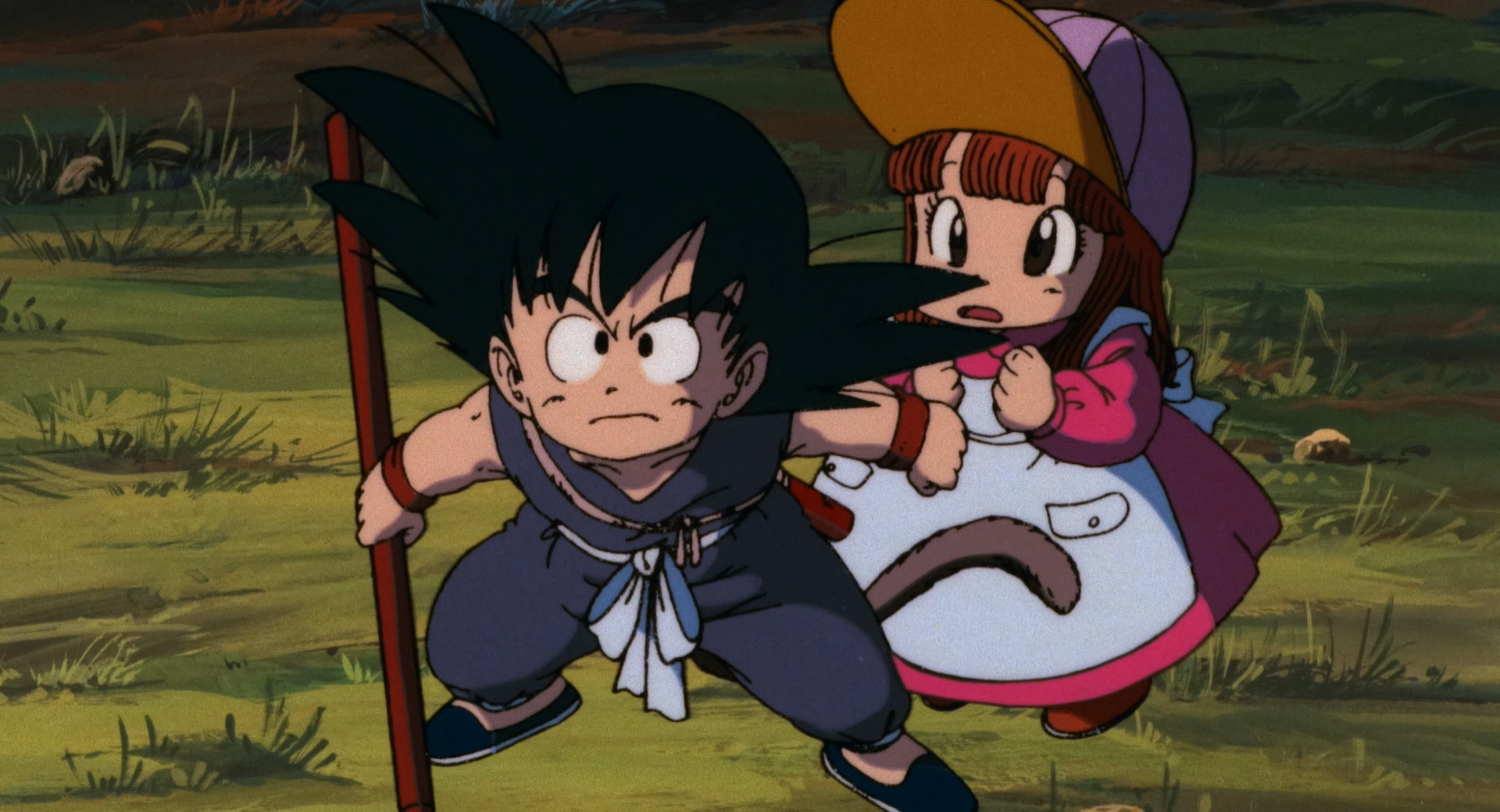
There are times where I find it ties these disparate plot elements together nicely, I'm particularly fond of the Turtle Hermit's Kinto'un litmus test (MORE LIKE A NIMBUS TEST AMIRITE FELLAS) which he uses to tell that Yamcha is lying. Most of the time, however, the movie ends up having the same issue as The Path to Power; feeling more like a greatest hits montage of Dragon Ball's first story arc than a cohesive story on its own. Something I find especially odd is how poorly Pansy is integrated into the main Dragon Ball team, it almost feels as though the movie is allergic to letting her intrude on classic Dragon Ball moments. Goku protects her from Oolong, and that ends up being the entire extent of their relationship throughout the film. When Pansy shares the story of what happened to her village, nobody seems interested. All that was needed was for Goku to stand up and promise Pansy to save her village, which I feel like would have been in-character for him. Even at the end of the film, when Shen Long is summoned, everyone else is bickering about what they want to wish for until Pansy jumps forward and asks for the Rich Stones to be taken away. Simply having Goku be the one to make the wish would have been another easy fix for this issue.
This quirk of Goku's character, him being disinterested in helping Pansy, makes for an interesting little time capsule (MORE LIKE A HOIPOI CAPSULE AMIRITE FELLAS) and a behind-the-scenes look at the production of early Dragon Ball. While I would argue that Goku has always been heroic, even in this first arc, he wasn't a terribly active character at this time. In fact, this was a common criticism for this story arc all the way back when it was being serialized in Weekly Shounen Jump. Part of what inspired Toriyama to have the next story arc revolve around a tournament was to make Goku a more active character, and give him a more clearly defined goal. Goku's nonchalant attitude towards Pansy is, on a surface level, consistent with his diminutive role in the story at the time, but I think it stems from a misunderstanding. Goku's lack of drive works because he is constantly being contrasted with the people around him, who are mostly a bunch of narcissistic perverts. Goku not being interested in Bulma's panties, or needing to go to the bathroom while Oolong attacks a village, is funny; Goku ignoring Pansy's pleas to save her village isn't.
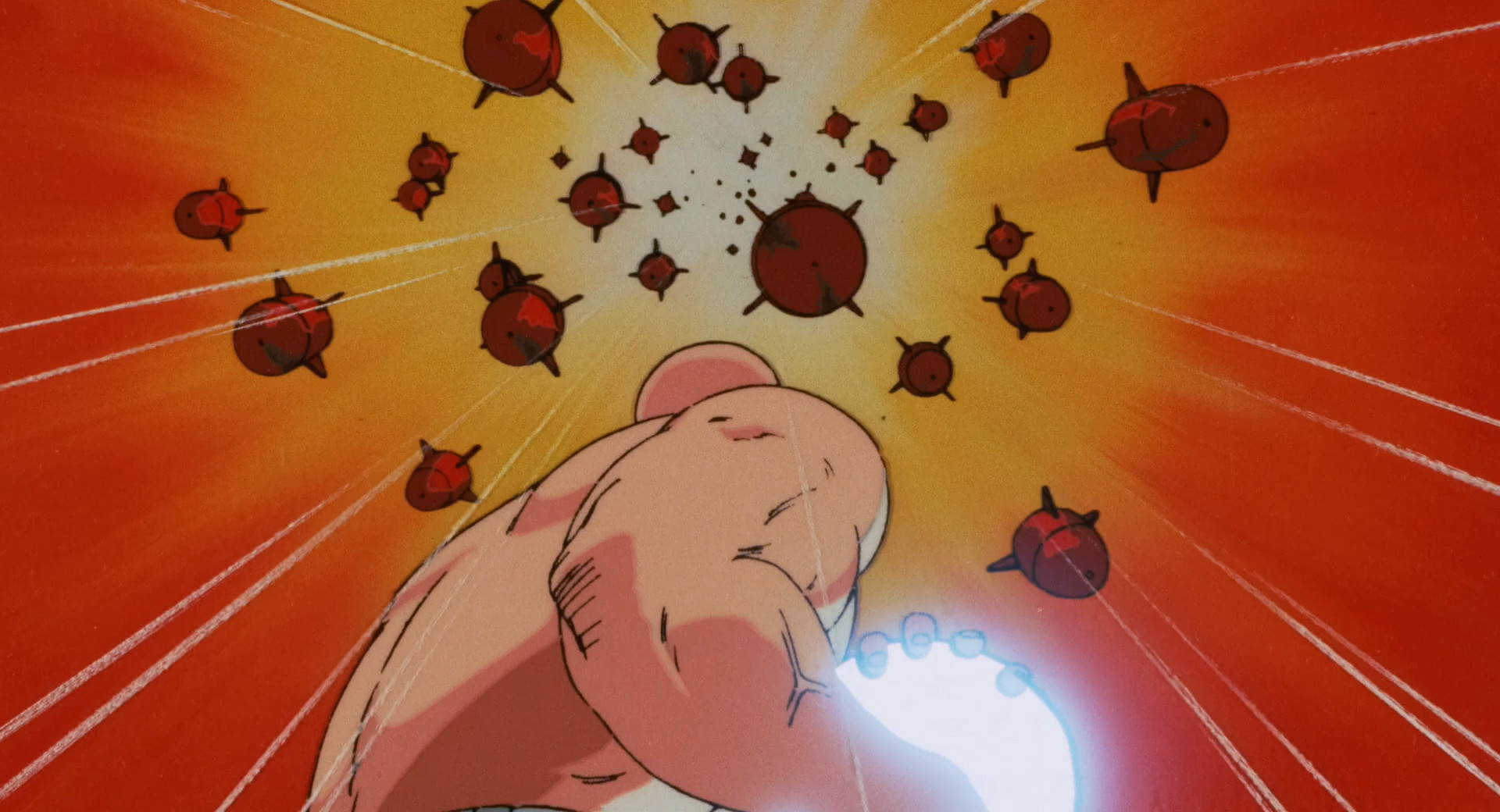
So seeing as I've done nothing but complain, you might be wondering why I place this film so highly. Well, it all comes down to its original trilogy charm. I have a huge soft spot for the chubby, rounded character designs of the original series, and this movie may be the best classic Dragon Ball has ever looked. The animation in this movie is also incredibly smooth. While I would argue that The Path to Power has the franchise's most fluid animation, I would say that this film continues to be the best the first arc has ever looked in animation. The Turtle Hermit's Kamehame-Ha is an incredibly exciting moment, and still continues to bring the hype to this day, even after having seen the attack dozens upon dozens of times. This also features the legendary Shunske Kikuchi in his prime, who perfectly captures the adventurous optimism of early Dragon Ball.
Despite the film's issues, I would argue that this film makes for a pretty great introduction to the series which, after all, is what it was designed to be. I really love the sense of scale, constantly going to new places and meeting new characters — It makes this movie feel like a real adventure, which I just find irresistibly charming. I don't think I could hate this film even if I tried. This film also has some of the most gorgeous landscapes of any film I've ever seen period, including one particularly gorgeous shot that I used as the background image for this article.
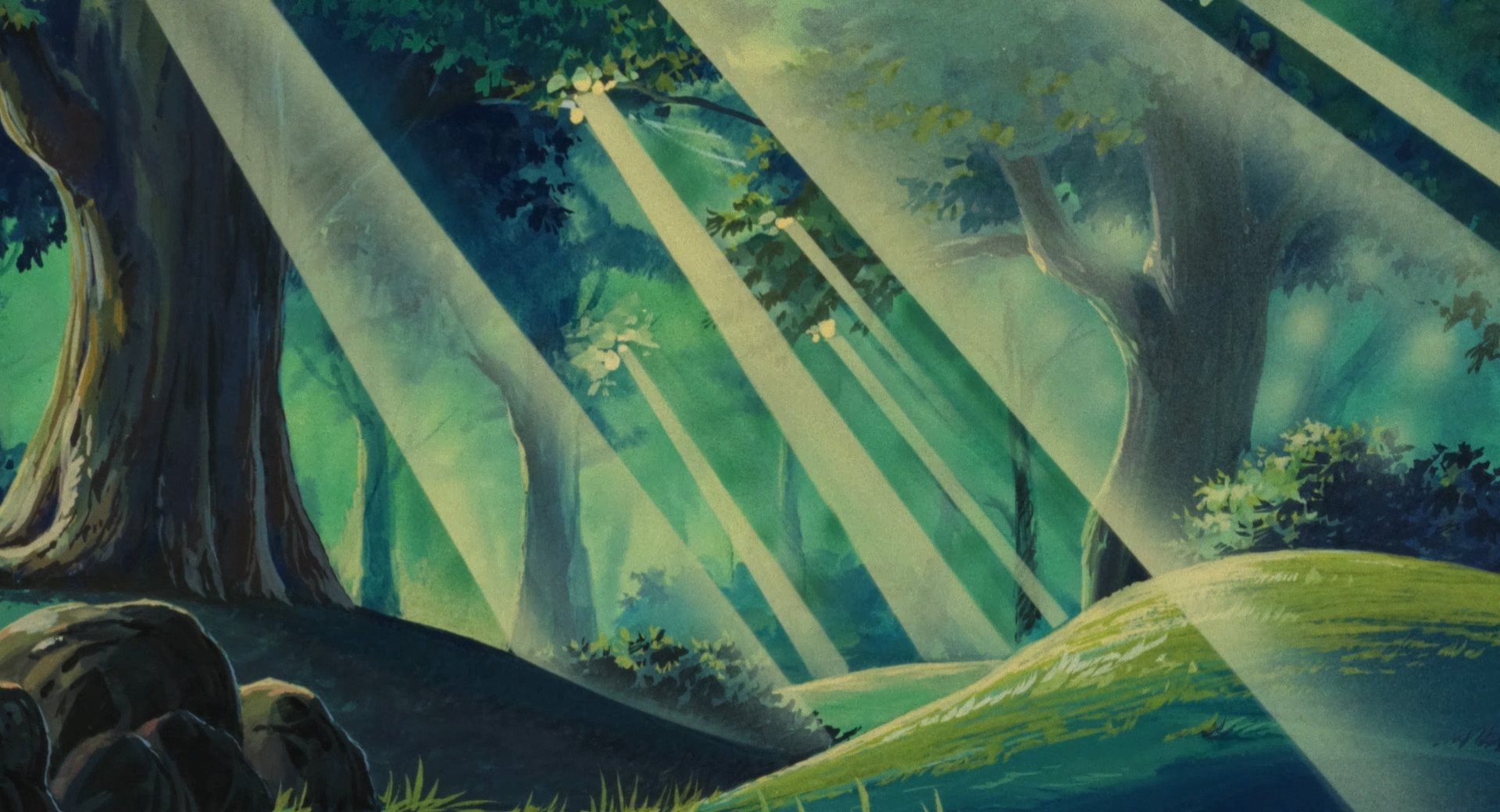
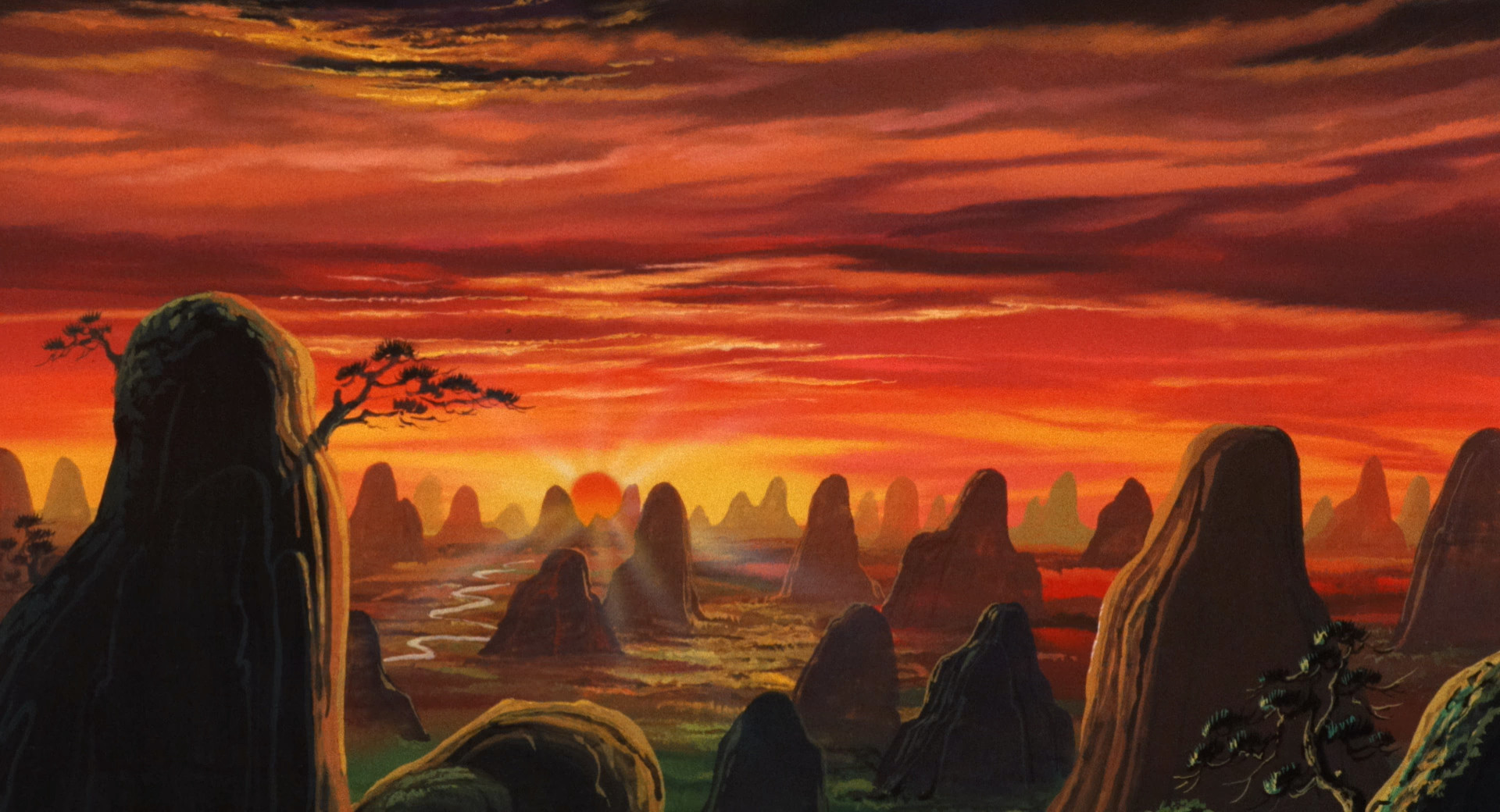
This film serves as a fun little piece of Dragon Ball history, and hearkens back to a time where the series was more focused on adventure and characters. Also, here's a fun fact: This is the first time where the Dragon Balls are said to make the sky dark. In case you don't remember, when the Dragon Balls are used in the first story arc, outside Pilaf's castle, it's already night time. Even then, the effect is subtly different. When Goku uses the Dragon Balls to revive Bora, the sky turns pitch black, as though it were night time, likely a quick way for Toriyama to show an intense visual contrast, since Dragon Ball hardly contained night scenes even back then. In Curse of the Blood Rubies, we instead see dark purple clouds in the sky. Rather than it specifically looking like the night, as it does later in the series, it has more of an ethereal other-worldly vibe, which I find so cool. The dark violet skies clash beautifully with the bright green grass.

I wish I had more positive things to say about this film, given how highly I've rated it. It may seem like I'm overrating this movie just because I think it looks good (and honestly I kinda am) but I just can't bring myself to put it any lower. The adventurous vibes of early Dragon Ball will never fail to put a smile on my face. For all this film's faults, I find myself thoroughly entertained by its cast of wacky characters, its energetic Saturday morning action sequences, and its captivating setting. For whatever reason, I just can't get enough.
4. Dragon Ball Z: Broly — Second Coming (1994)
Dragon Ball Z: The Dangerous Duo! Super-Warriors Can't Rest!
I can almost hear the objections. This is the moment where every English-speaking fan shouts "cap" (or whatever it is that zoomers say these days) from the rooftops. I've put what may be the most disliked Dragon Ball Z film (second only to Broly's other sequel, Bio-Broly) at number 4. If you've been paying close attention, you'd also notice that this is the highest ranked Dragon Ball Z film.
This is a rare moment where the wordy Japanese title is far more appropriate than the English title — Second Coming is an unintentionally hilarious title given the tone of the film. It speaks to the way that Funimation would often de-Toriyamafy the series. This movie may be the biggest victim of the English localization, the more I think about it. Because contrary to what you might initially assume, especially going off the gravitas of the English title, Second Coming is actually a comedy (and a pretty good one at that).
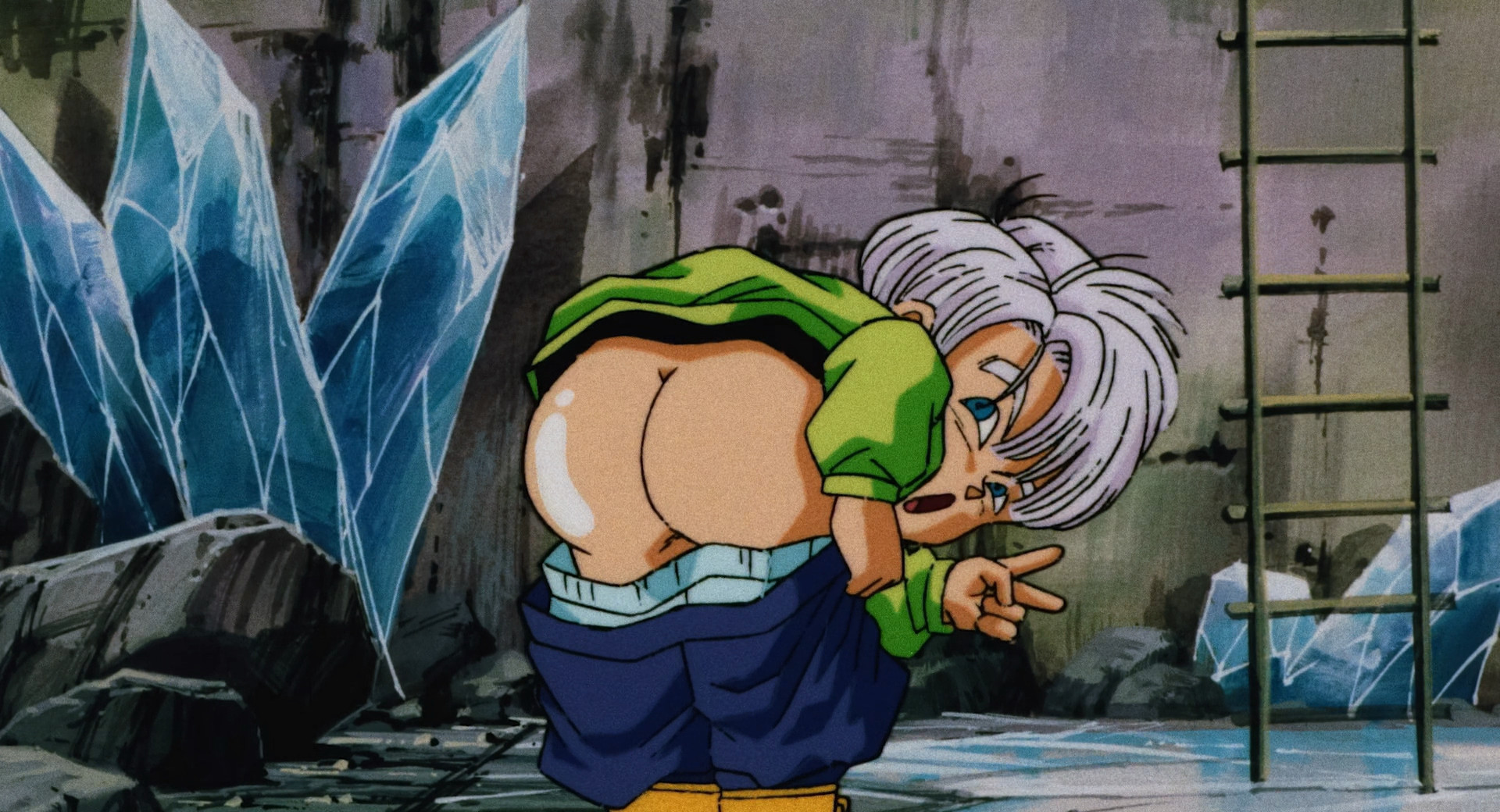
The first two acts of the film focus on a fun trio of Goten, Trunks, and Videl, which gives this movie the distinction of being the first Dragon Ball film that focuses mostly on secondary characters, and apart from Bio-Broly, will be the last until Super Hero. It's only during the last act of the film, where Gohan appears, where the film starts to play things more seriously. And even then, the tone is kept light with some pretty great jokes.
While discussing Broly — The Legendary Super Saiyan, I criticized it for how I felt that it squandered its villain's potential by reducing him to a boring brute. Well, this movie eschews delving into his character; Broly is as boring and brutish as ever in this film... And I'm totally fine with it. This may come as a shock, but to me it goes back to the tried-and-true saying of "take a crap or get off the pot" — If you're not going to make Broly an interesting character, you might as well just embrace how stereotypically hulkish he is. Broly's dynamic with Paragus is part of what made him interesting, and Paragus obviously doesn't show up in this film because Broly killed him. Since Paragus doesn't appear here, I think it was smart not to try and outdo the first film in that regard.
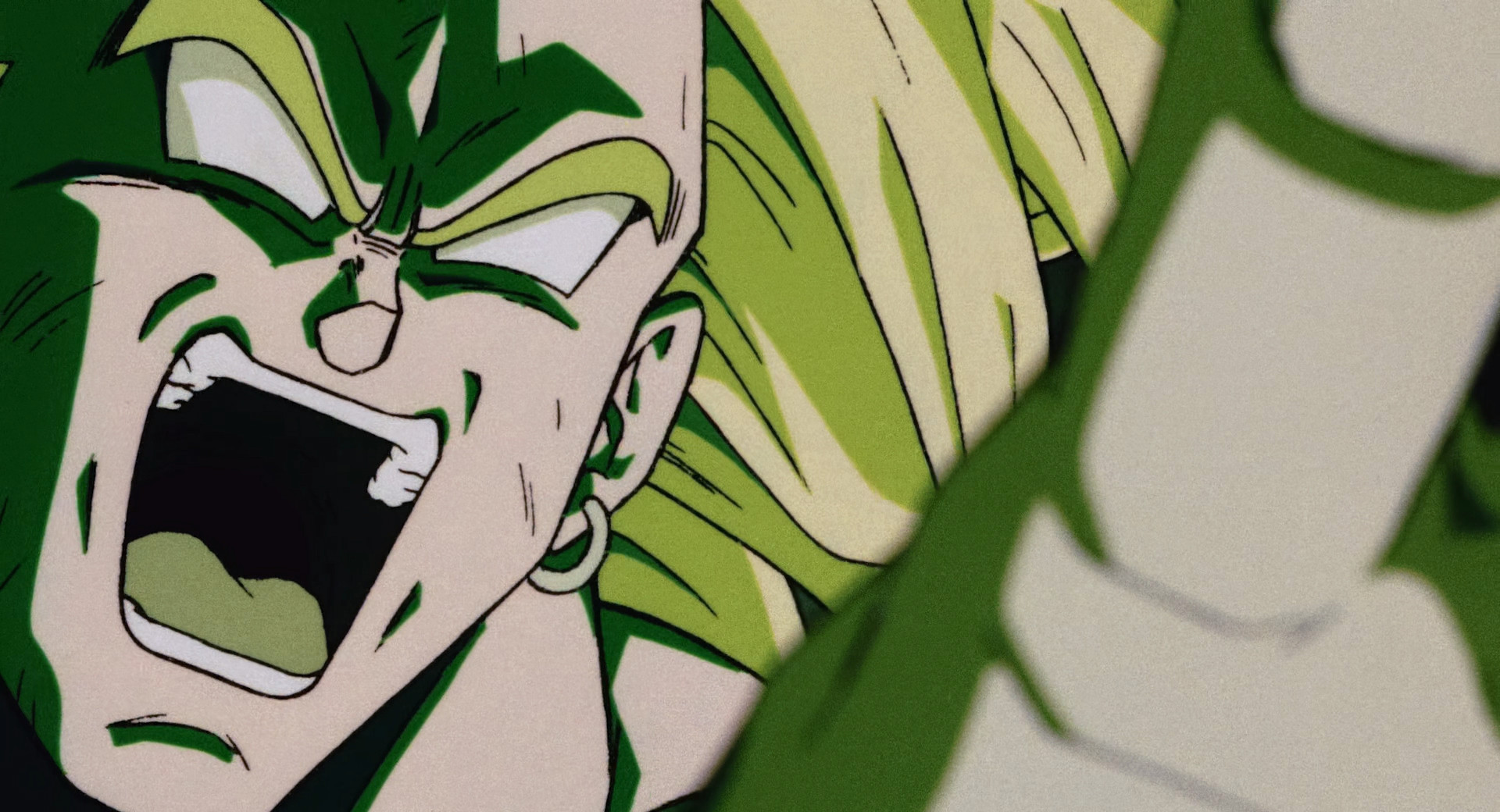
Of course, what makes Broly enjoyable to watch in this film is that his seriousness is wonderfully juxtaposed with the goofy cartoon antics of Goten and Trunks. It's for that reason that I think focusing on these two was a stroke of genius. Watching two super-powered toddlers go up against the ultimate harbinger of death is classic Toriyama, which is funny since his connection to this film is tenuous at best. As just one example, there is a particularly brutal piece of choreography where Broly is about to break Trunks's back over his head... Which is interrupted by Trunks peeing on Broly.
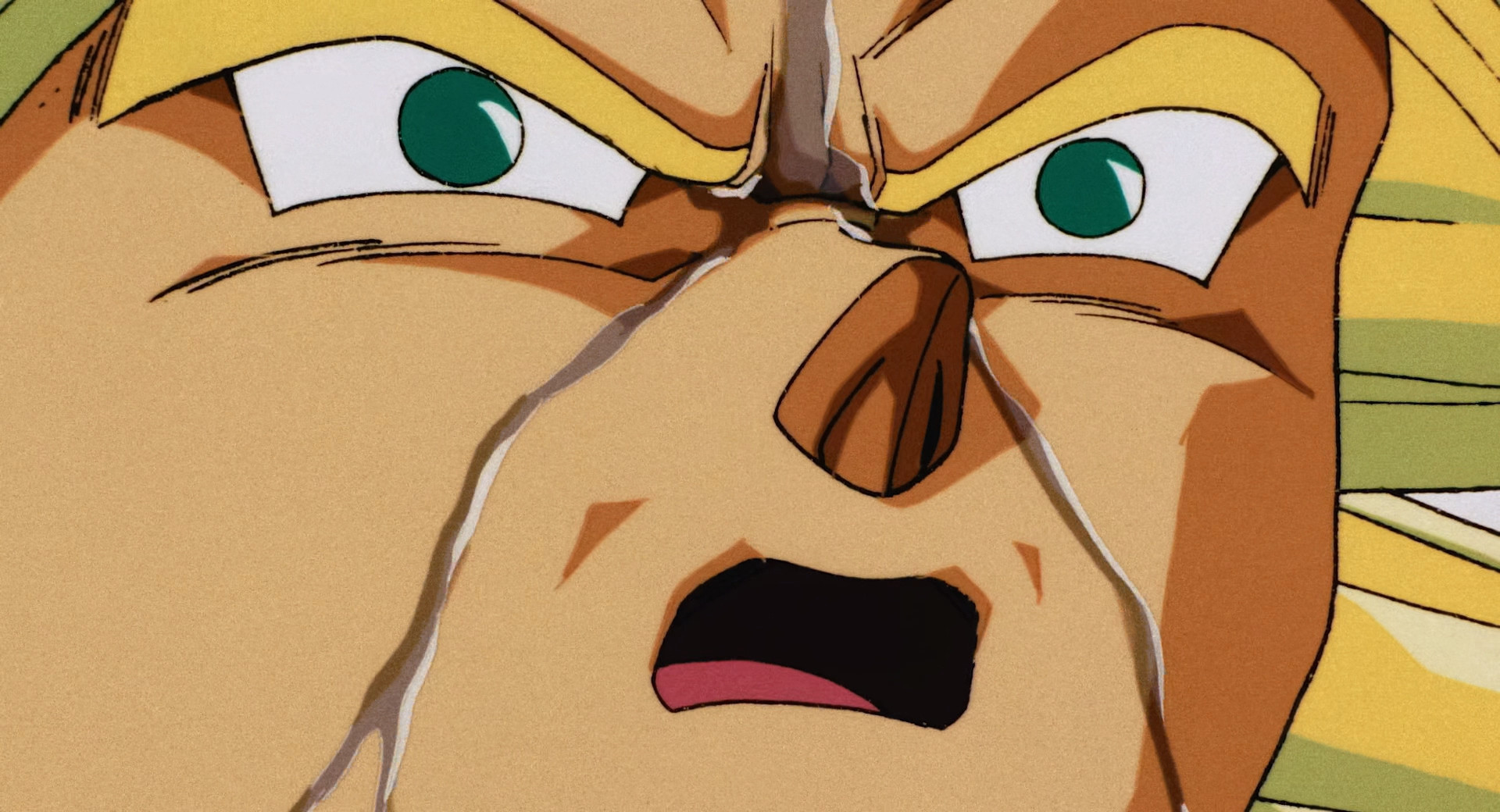
This focus on comedy was lost in translation, which is why I think the film is so unpopular with English-speaking fans. Bearing that in mind, I have to imagine that some Japanese fans must have been surprised as well. This movie is tonally quite different from the last few Dragon Ball Z films, which were particularly boring even by the mostly low standards of Dragon Ball Z films. I have no idea what the Japanese fan reception to this movie was like, or how it has changed over the years, but surely there had to have been a few people that felt the movie gave them a lot more comedy than they had anticipated. That's certainly how I felt, but seeing as I've always preferred Dragon Ball as a comedy, it was a breath of fresh air.
Of course, the movie has more to offer than that. I won't beat around the bush: This is the best-looking Dragon Ball film, period. And I think it all comes down to the setting: A secluded village located deep within the mountains, surrounded by a dense forest with some beautiful looking lakes. Even though the viewer is made plainly aware of Broly's involvement in the story pretty much from the get go, his appearance is still surprising and satisfying. An ominous green glow comes from the mountains, making an incredibly eerie droning sound. The next morning, Videl goes to investigate, and she finds Broly menacingly hovering over the lake, obscured by a dense fog. I praised Cooler's Revenge at length for its atmosphere, but I think this movie just barely outperforms it.
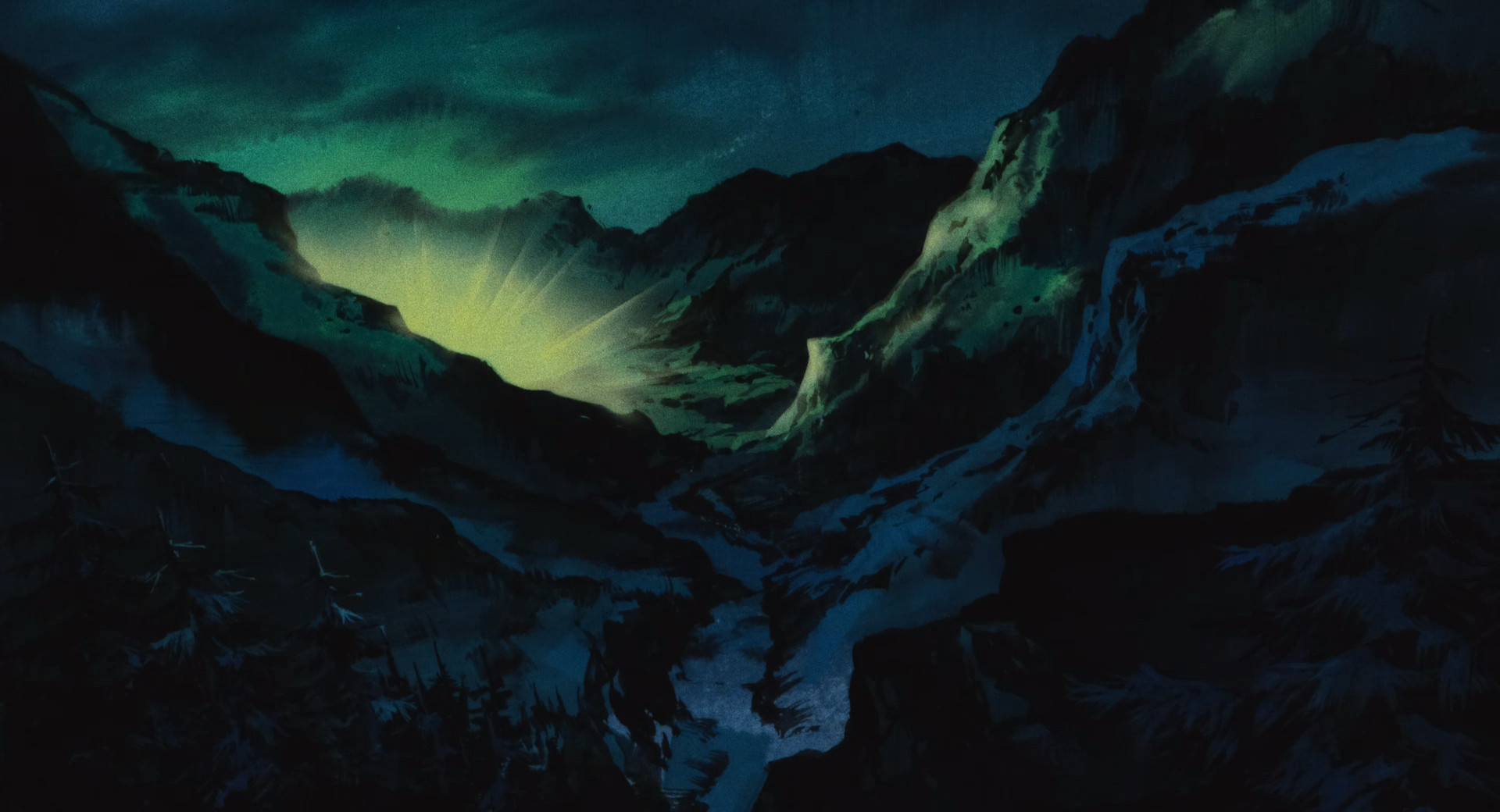
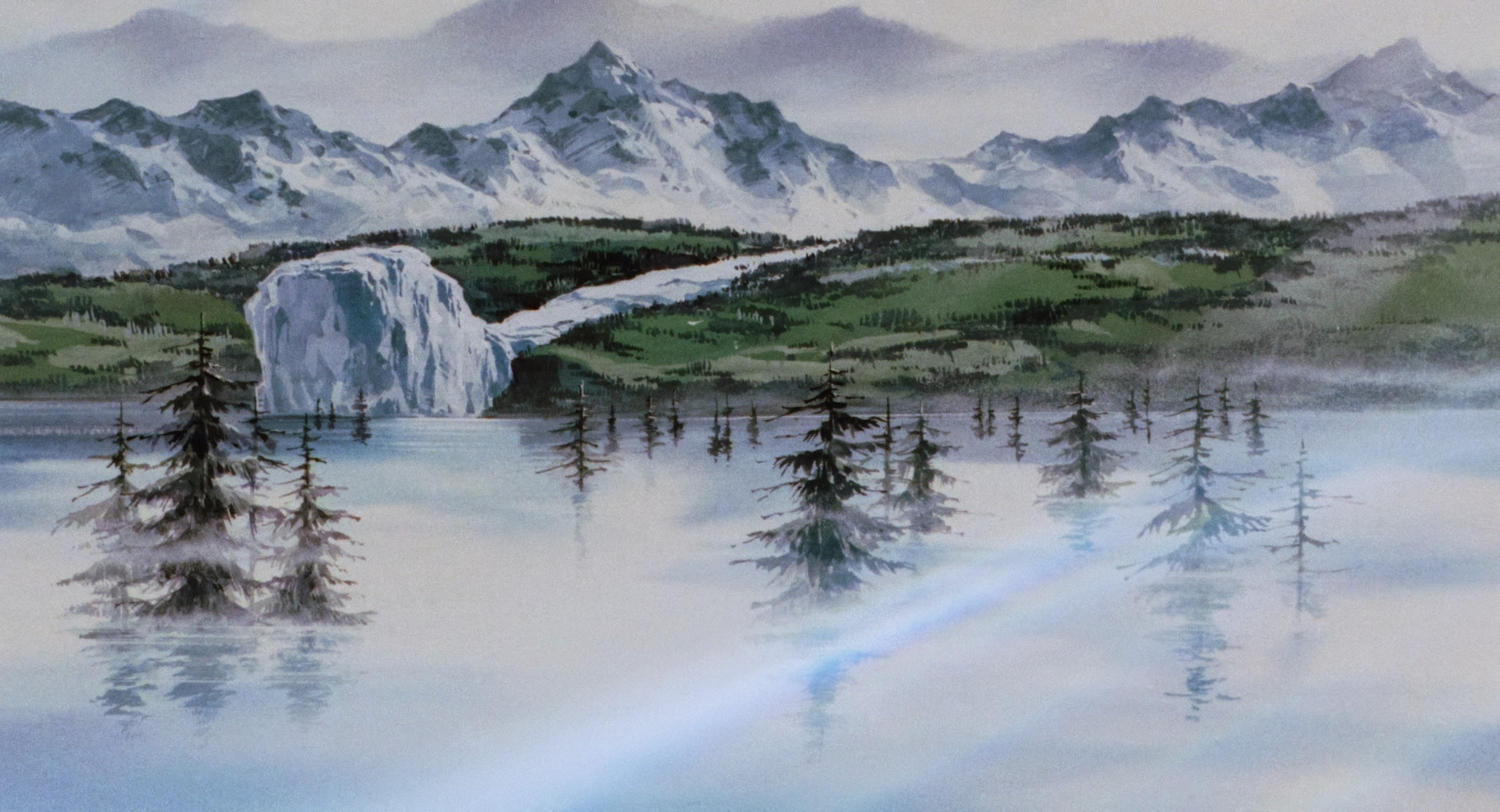
Unlike Cooler's Revenge, however, it's not just beauty for beauty's sake. The environment is creatively used throughout the fight, always aiding the story and keeping the viewer engaged. There's a great moment, right before Trunks pees on Broly (the most intelligent and exciting storytelling of all time) where he hides from Broly in some small alcoves in the side of a cliff, hidden by waterfalls.
Although my favorite piece of environmental storytelling probably comes from a small quarry that Goten and Trunks fight Broly in. Earlier in the film, Videl finds some crystals growing on the edge of the lake. Well, Goten and Trunks stumble upon a mining operation of some sort. The terrain is unnaturally dug in, there looks to be an entrance to a mine shaft surrounded by mine carts, and there are large crates filled with crystal balls. The movie mines (pun intended) some comedy out of the setting by having Goten lose one of the Dragon Balls amidst the crystal balls, and he takes an uncomfortably long amount of time to find the ball while Trunks fights for his life.
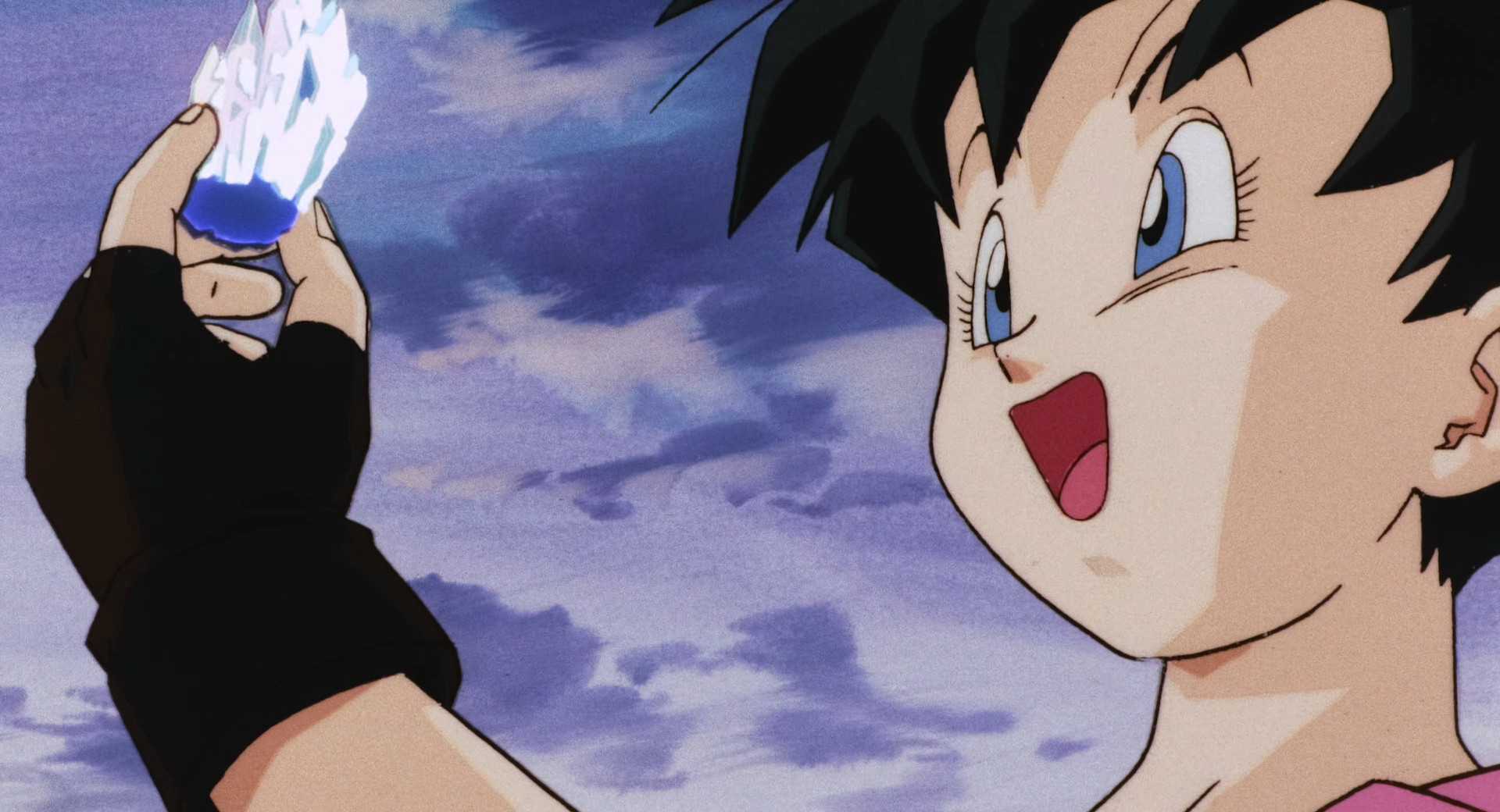
That whole mining quarry raises some interesting questions about the story. When Videl first sees the crystals, she wonders why the surrounding village looks so poor, if they have such easy access to these crystals. Well, we learn that the village is cursed by a vengeful mountain god that demands sacrifices from the villagers. Of course, all this info comes from the villagers themselves, who are all too scared to go out and investigate. The movie baits us into thinking the "god" will be Broly, but it ends up being a big cartoon dinosaur that Goten and Trunks dispatch with next to no effort. My initial assumption about the quarry was that it was abandoned once the "god" began attacking, but then I started to think a little more about it. The village's rituals are performed by a prayer giver, who carries a staff and is adorned with a large necklace, both featuring large crystal balls as part of their design. The movie calls direct attention to his necklace, as Trunks asks to have it in exchange for taking care of the mountain god. The prayer giver will later show up in Bio-Broly, having become cynical and resentful after suffering humiliation at the hands of Goten and Trunks. Going off his initial appearance by itself, he seems to just be naïve; genuinely believing in the power of his rituals.
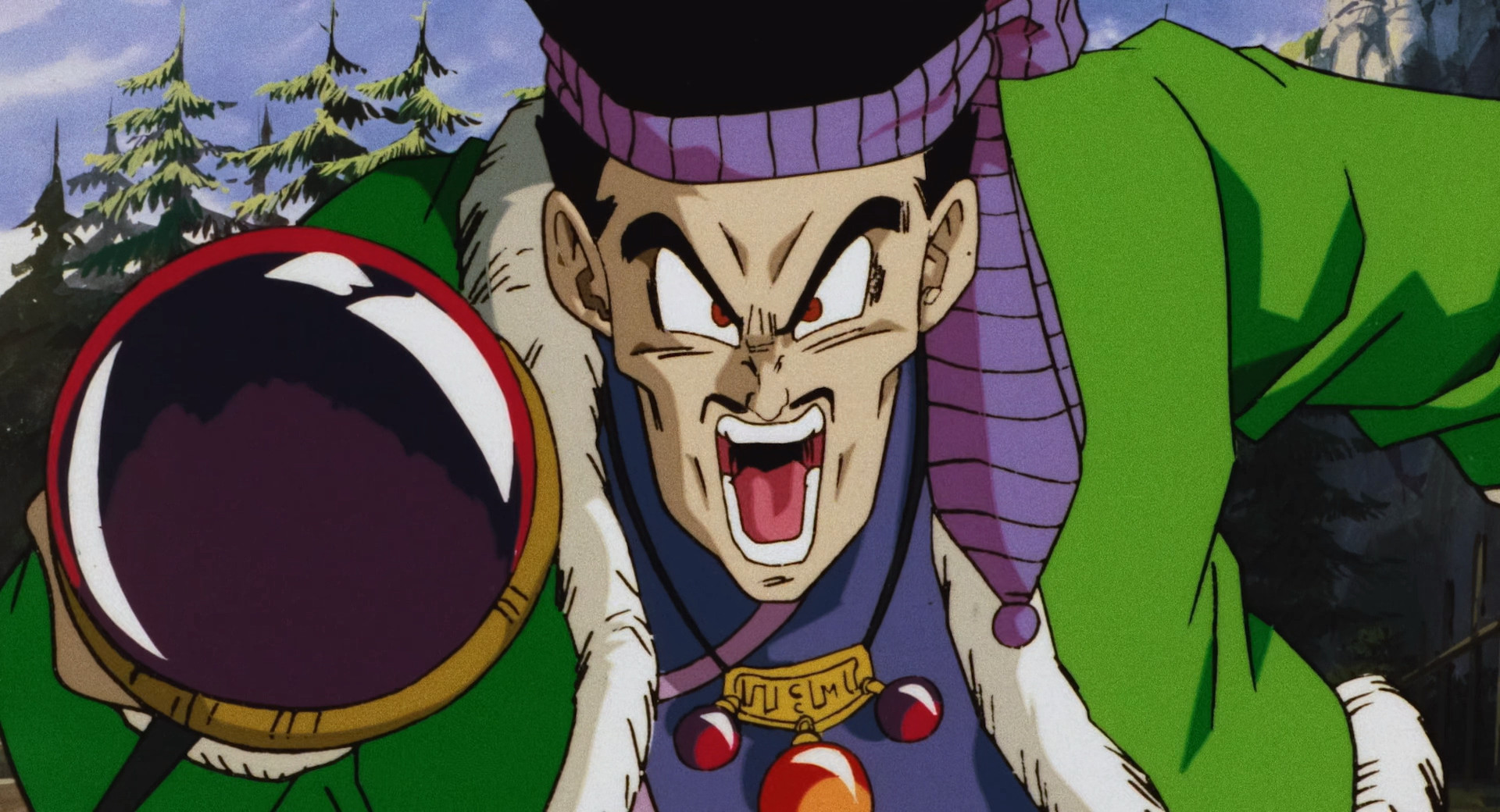
But then I started to think... What if the prayer giver was actually a secret villain? What if he were hoarding the crystal balls at the quarry for himself, using the threat of the mountain god to oppress the villagers? That may more adequately explain his turn to evil in Bio-Broly, i.e. that he was already predisposed to cynicism. There's not a whole lot of evidence for this theory if I'm being honest, and I don't even know that I'm convinced of it myself. It's really just something that I thought was fun to speculate on, and would have never thought of or noticed if not for this article.
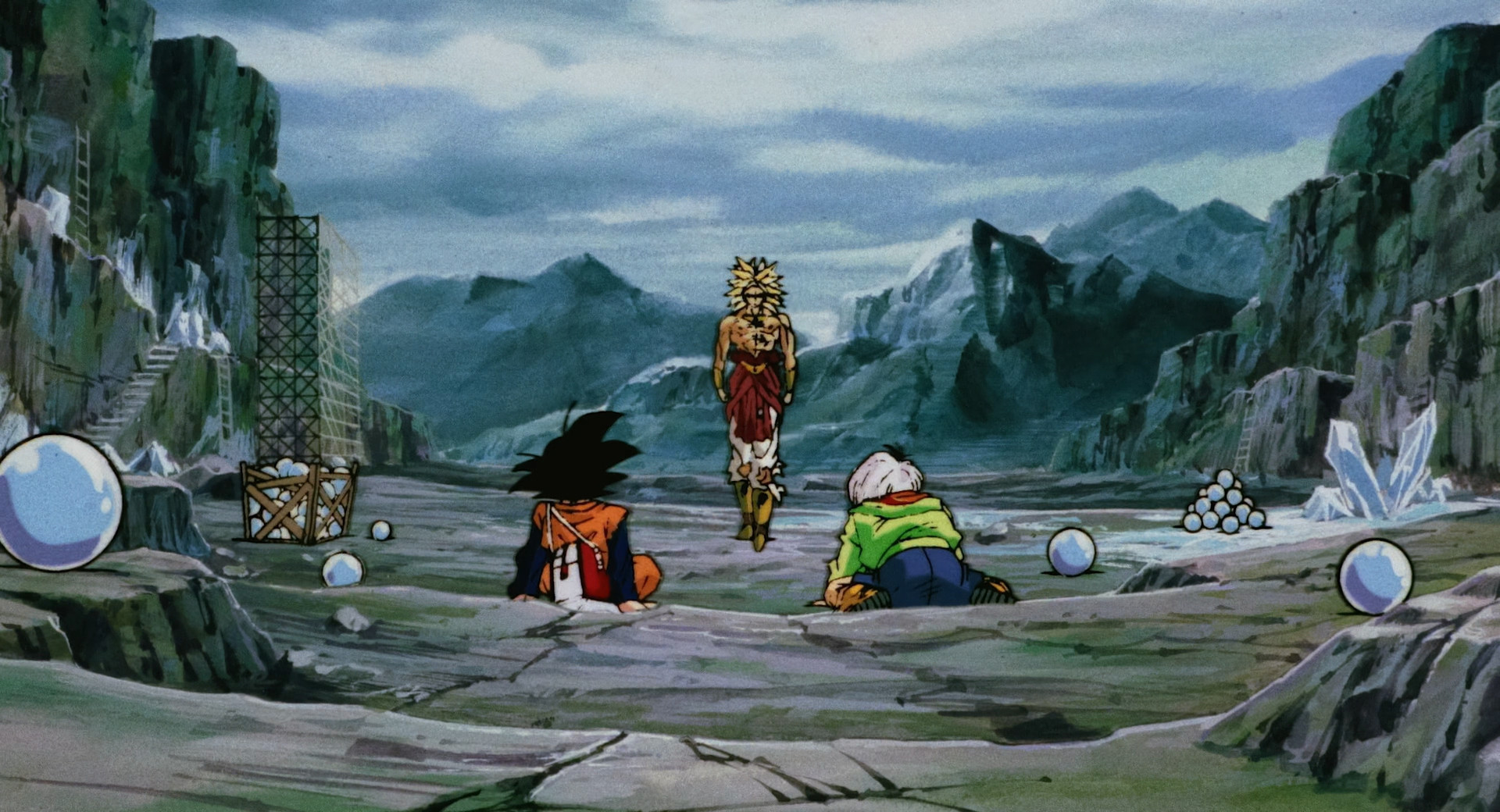
I can only speculate since the movie never elaborates on this. It doesn't even really call attention to the quarry — It's easy to miss the connection between this setting and the lake's crystals (or the crystals worn by the prayer giver) if you're not paying attention. This does actually highlight a small problem with the movie, one that we should all be familiar with by now: Many of the dangling plot threads are abruptly abandoned once the action starts. On one hand, I enjoy speculating about the function of the quarry, and I don't know how I'd feel if its purpose was made more explicit by the film. At the same time, I think there was potential for an interesting story that the movie forwent in favor of more action, and great as the action may be, Dragon Ball as a franchise isn't exactly starved for action.
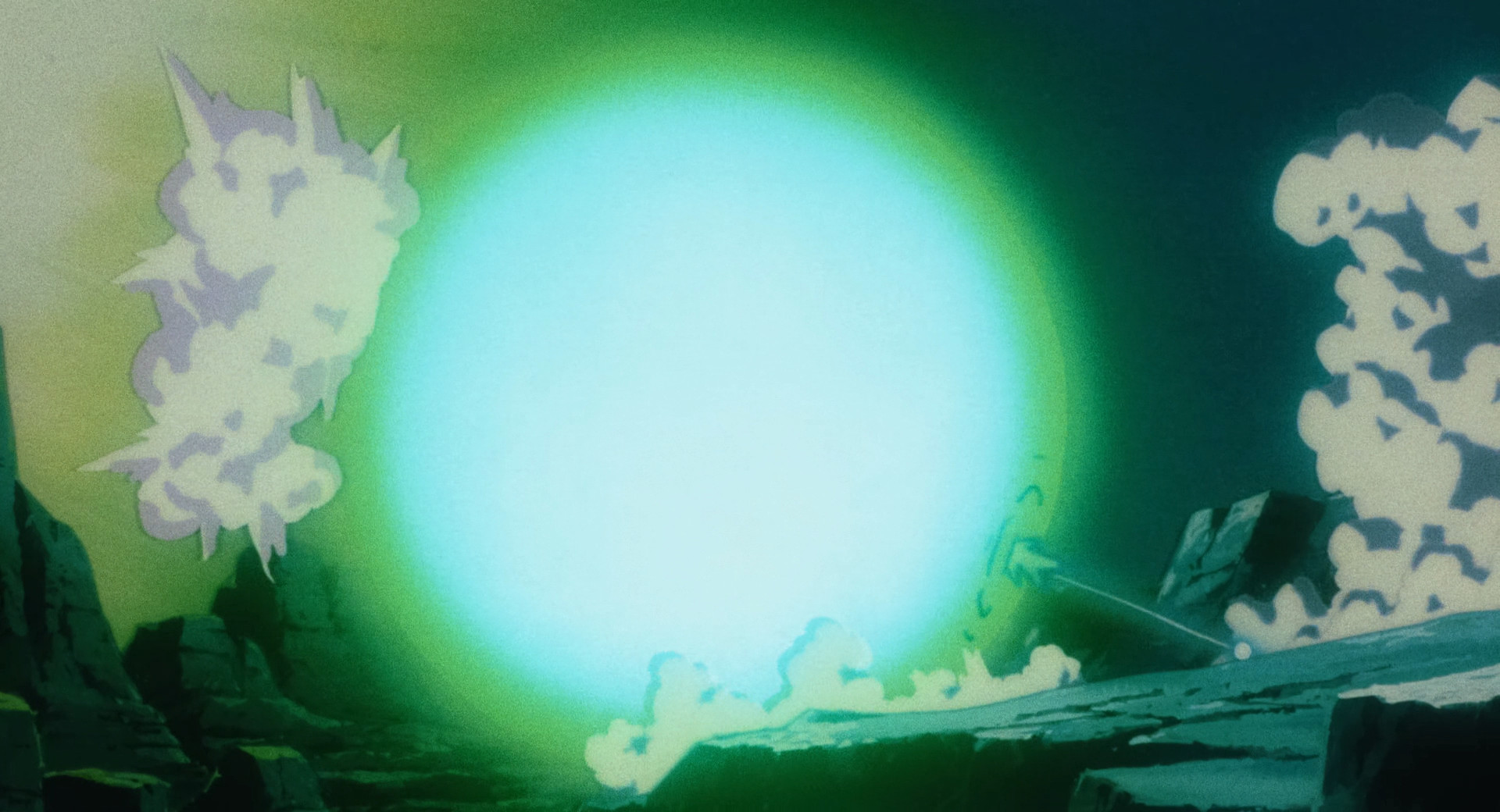
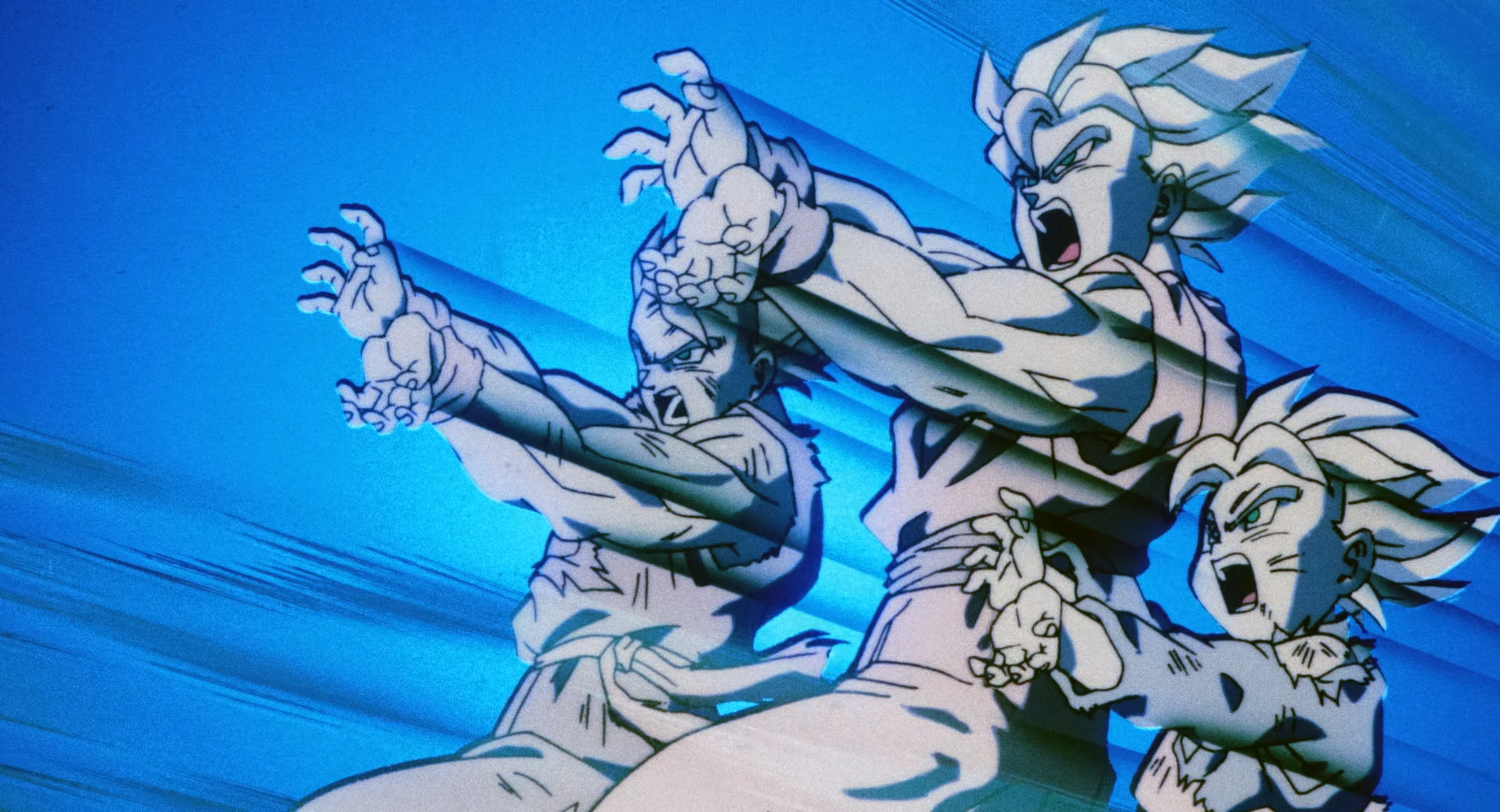
Of course, if action is all you're interested in, Second Coming still delivers with Dragon Ball's most epic beam struggle. The scene is accompanied by one of my favorite Kikuchi tracks. I think any other composer would have slapped a generic rock track over the scene and called it a day (in fact, that's what the English dub did and it makes me want to vomit), but Kikuchi goes for a much slower, more haunting piece that I find so memorable. A simple backbeat kicks in near the end which is just to die for. My only real complaint with whole scene is that it's tonally very out of step with the rest of the film, and might be why many fans comment on it being the "only good part" of the film. Personally, I actually enjoy the tonal shift, since I think the rest of the movie taking such a light tone makes this scene feel way heavier than it might be otherwise. They say you can't have happiness without sorrow, and I say that you can't have nail-biting action without someone getting pissed on.
Of course, there's also the matter of Goku's inclusion, which I'm less sympathetic towards. He has zero presence in the rest of the story, and doesn't really do anything of consequence. He just gives a pep talk to Gohan and Goten. As it stands now, it makes for some unintentional foreshadowing of Goku's reemergence in the story. Toriyama didn't have confidence in Gohan as a protagonist, and this movie makes it clear that Toei weren't comfortable stepping out of Goku's shadow either.
So hopefully you realize now that I wasn't just being contrarian (that's just a lucky coincidence). I genuinely think this movie is excellent and seriously underappreciated by western Dragon Ball fans. I'd urge any fans that initially dismissed this film to give it a re-watch, just be sure to avoid the English replacement score at all costs.
3. Dragon Ball: Mystical Adventure (1988)
Ending the Dragon Ball trilogy is a movie that always manages to impress me.
Sleeping Princess in Devil's Castle decides to tell a wholly original story that it squeezes between the first story arc and the first tournament arc. By this time, the manga had progressed through several arcs while the ongoing Dragon Ball film franchise barely got its foot out the door. I have no idea why they didn't just decide to disregard continuity, like they eventually would with the Dragon Ball Z films. For this film franchise to catch up to its current point in the story, it needs to adapt the 21st and 22nd Tenkaichi Budoukai as well as the Red Ribbon army story arc, and it needs to do so in under an hour (a measly 45 minutes, to be exact). And on top of all that... It needs to be good. It sounds like a recipe for disaster, and there are indeed some flaws in its approach (it's no wonder they changed the formula for Dragon Ball Z), but what this movie manages to achieve is nothing short of genius.
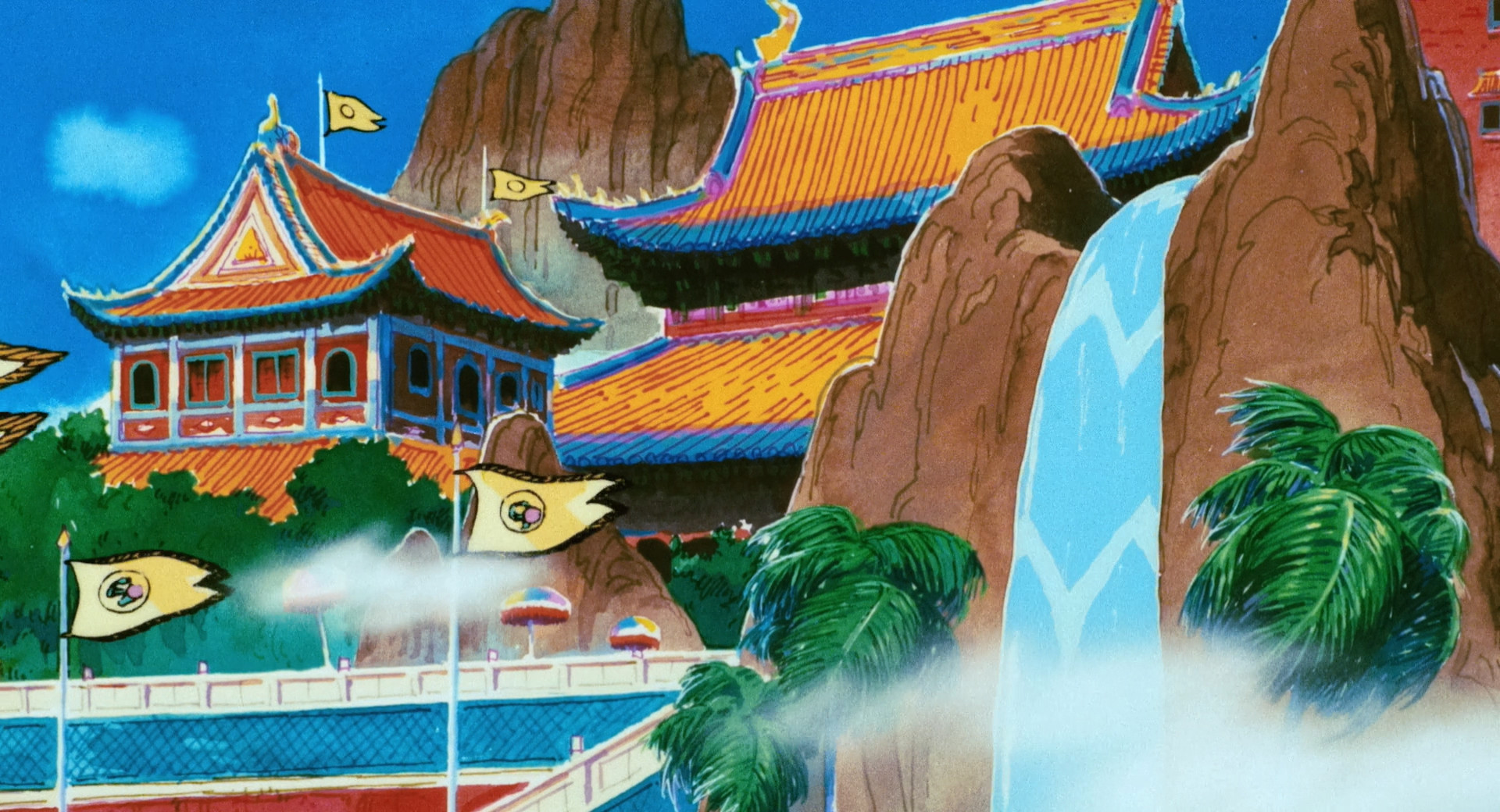
Both of the Tenkaichi Budoukai tournaments have been merged into one: An
epic martial arts tournament hosted in the land of the Mifan empire. The Mifan
empire is a movie-original creation that serves as the vehicle for most of the
Red Ribbon characters and iconography. Chiaotzu is actually the emperor of
Mifan, and Tenshinhan is his bodyguard. The Crane Hermit and Tao Pai Pai serve
as (un-)trustworthy advisors. The Mifan army serves the same role as the Red
Ribbon army — Gathering the Dragon Balls to summon Shen Long. They plan
to use Shen Long to take over the world divine the location of Ran
Ran (who is later revealed to be Chiaotzu's
doll).
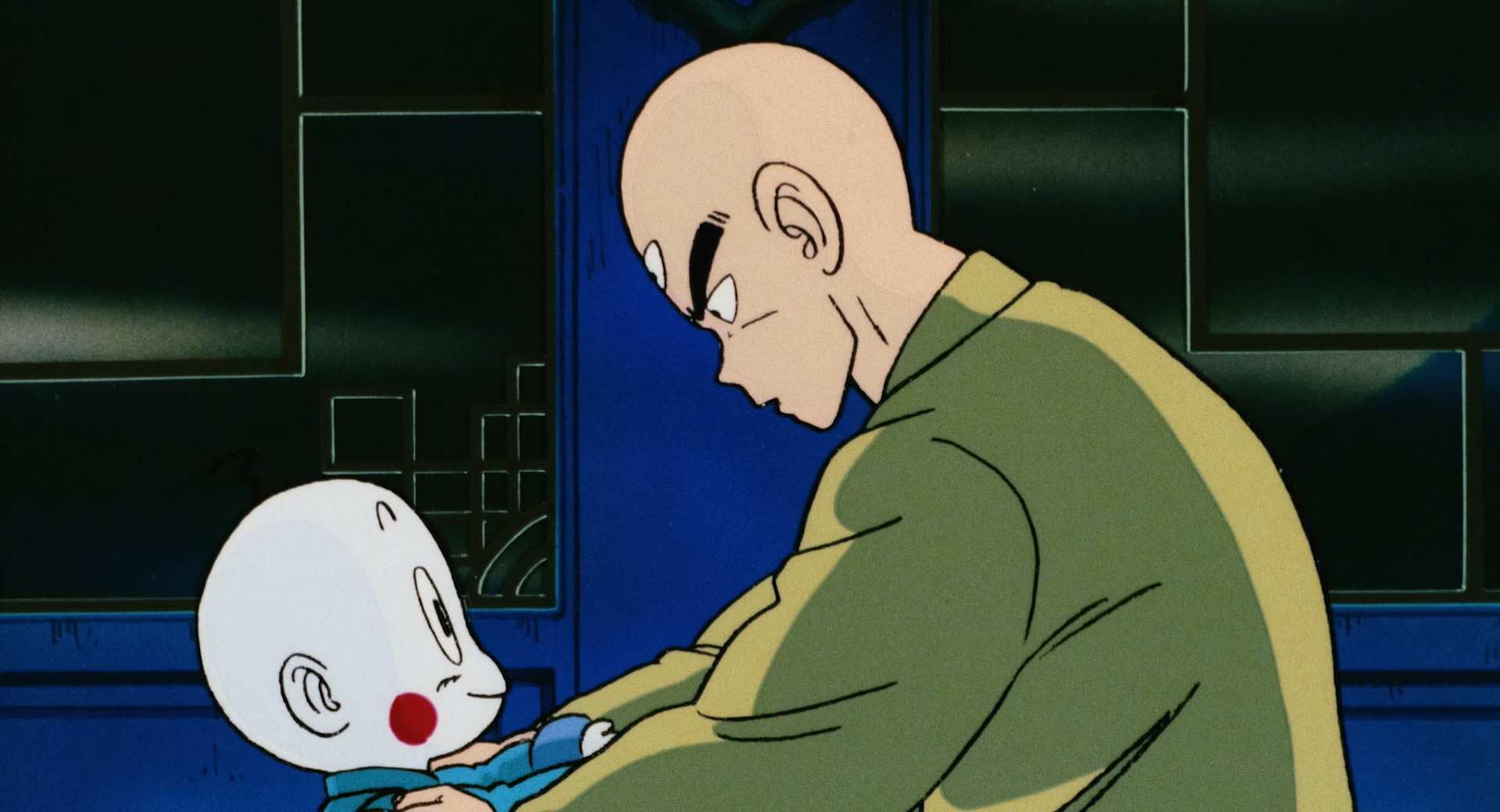
In addition to just being a really clever way to bring all of these disparate plot elements together, this also allows some secondary characters that were underutilized in the manga, namely Chiaotzu and the Crane Hermit, to thrive. This movie does a much better job establishing Tenshinhan and Chiaotzu as close friends than the series does. This movie does such a good job, in fact, that one of its musical motifs is later re-used in Dragon Ball Z, when Tenshinhan performs his final Kikouhou against Nappa. The Crane Hermit's role is also much more clearly defined, serving as the brains complementing Tao Pai Pai's brawn.
All that being said, there are some flaws in its approach. The biggest issue with this movie is its insane, blisteringly fast pacing. The movie manages to perform miracles with Chiaotzu and the Crane Hermit, but a lot of the Red Ribbon characters are seriously underused. I often forget Sgt. Metallic is even in this film, and Blue is criminally misused here. I complained about how his depiction in The Path to Power felt at odds with his original role in the manga, but the disconnect might be even worse here. Although, to be fair, this movie at least got the original Japanese voice actor back. The movie also picks up new characters and locations so fast that I feel like we're never given enough time to appreciate them. Unlike Curse of the Blood Rubies, where I find the pacing to be almost perfect, I always find myself wanting to spend a little more time at Karin's tower or in Penguin Village (oh yeah, the Dr. Slump crossover is a thing in this movie too).
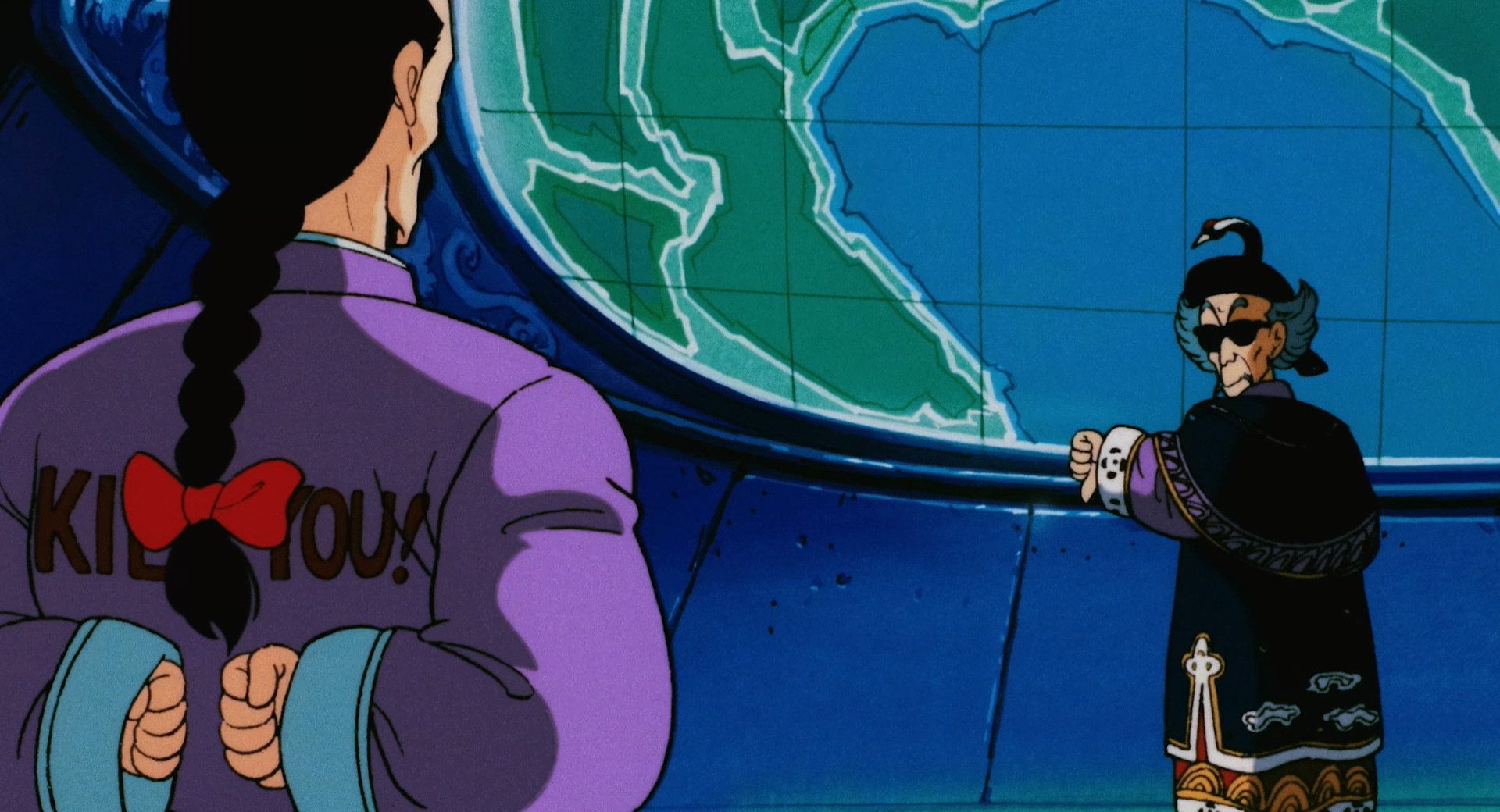
It's not just about the setting. Mystical Adventure doesn't spend enough time letting the viewer get immersed in the emotions of a scene. In what is possibly the pinnacle of classic Dragon Ball goofiness, shortly after Bora dies, Tao Pai Pai hits Goku with a Dodompa which causes Goku to literally careen through the air towards his next destination, like something out of a Parappa the Rapper cutscene. Although honestly, now that I think about it, I'd put this scene down as a positive.
So there are some positives that come from the movie's pacing. As just another example, this movie is never boring. The movie won't allow you to get bored, because if it did you'd have absolutely no idea what's going on. Of course, that raises the issue of this movie's accessibility. While I think one could easily follow Curse of the Blood Rubies or Sleeping Princess in Devil's Castle without any prior Dragon Ball knowledge, Mystical Adventure is almost incomprehensible without the context of the story. There's even evidence to suggest that the film was designed this way, as there's actually a scene that plays on the viewer's knowledge of the manga storyline and subverts their expectations (that being when Tao Pai Pai doesn't kill Bora).
So perhaps it's not so bad that Bora's death isn't the most heartfelt scene, or that Goku's revenge against Tao Pai Pai is interrupted by Arale. Part of this movie's charm is satisfying the morbid curiosity of seeing how certain plot points were changed. But that just leaves me asking the question of whom exactly this movie was designed for. People that aren't familiar with Dragon Ball will be lost, and people that are may find it redundant. Now while I'd argue that this movie does more than enough to keep the viewer engaged, there are still moments that are lifted straight from the manga. This is why, for as much as I love this movie, I could only comfortably recommend it to dedicated Dragon Ball fans.
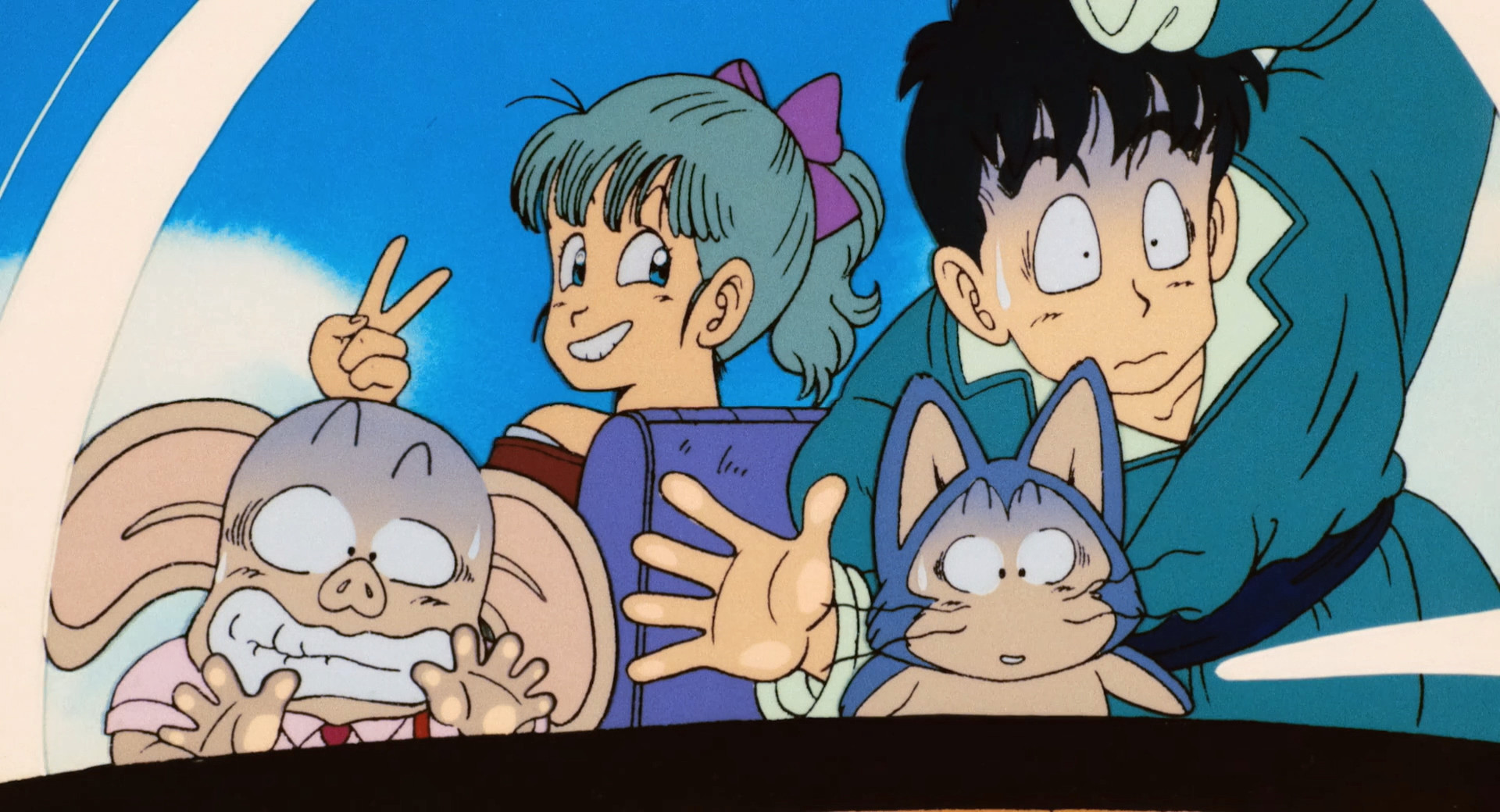
For the record, I don't think there's anything wrong with a movie being limited in its scope. I don't think that movies should always strive to be maximally accessible to as many people as possible, especially since movies that do so often feel shallow. One could say many things about Mystical Adventure, but it is absolutely not cynical. While I love strange, esoteric nonsense, it's not a sustainable business model. It's really no wonder that this continuity was abandoned starting with Dead Zone.
Oh yeah, that reminds me! This movie marks the first appearance of the Pilaf gang (who won't make another appearance until Battle of Gods). They appear at the very beginning of the movie, constructing a giant Dragon Radar not unlike the one they build for Piccolo. After they complete it, Tao Pai Pai seemingly kills them (this literally happens within the first 60 seconds so I'm not tagging it as a spoiler, sorry!) which is a rather dark opening to an otherwise lighthearted film. I hadn't really thought about it too deeply prior to writing this article, but it's strange to think that they just died in the film continuity. Don't really have much to add to that, just an interesting little observation.

There's not much else for me to really say about this film, other than the fact that it's absolutely fantastic. I love the early Dragon Ball vibes, the music is as fantastic as ever, and the animation is pretty great. While I'd argue that Curse of the Blood Rubies still has the best animation of the trilogy, Mystical Adventure is a close second. Goku's brief fight with Tao Pai Pai is one of the most exciting, energetic fights in the whole franchise. I also love the way the Kikouhou looks in this movie, it's quite different to how it's animated in Dragon Ball (or the variation he does against Cell in Dragon Ball Z).
Mystical Adventure is an excellent way to conclude the original Dragon Ball trilogy, and it was seriously difficult for me to choose between it and Sleeping Princess in Devil's Castle. I have a few friends that prefer this film, and I agree with a lot of their arguments, but I ultimately would say that I prefer the trilogy's penultimate entry.
2. Dragon Ball: Sleeping Princess in Devil's Castle (1987)
And speak of the devil! Literally!
Out of every film on this list, including the top spot, Sleeping Princess in Devil's Castle may be the one I've watched the most. To me, it is the quintessential example of everything I love about Dragon Ball. From its charming cast of characters, to its comedy, and its absolutely gorgeous setting, it's a movie that I keep coming back to.

The previous film, Curse of the Blood Rubies, adapts the first story arc of the manga, which is 23 chapters. Sleeping Princess in Devil's Castle, meanwhile, only really adapts a handful, those being the chapters where Goku and Kuririn bring Lunch back to Kame House. And even then, only Kuririn's introduction closely resembles its manga counterpart. Lunch's introduction is seamlessly integrated into the movie-original plot, to which most of the movie's runtime is dedicated. This movie gives itself considerably less rope to hang itself with than the other two Dragon Ball films, and this is reflected in the movie's excellent pacing. This movie isn't afraid to let the viewer become immersed in the emotions and atmosphere of a scene, while still managing to neatly pack its content into a tight 45-minute package.
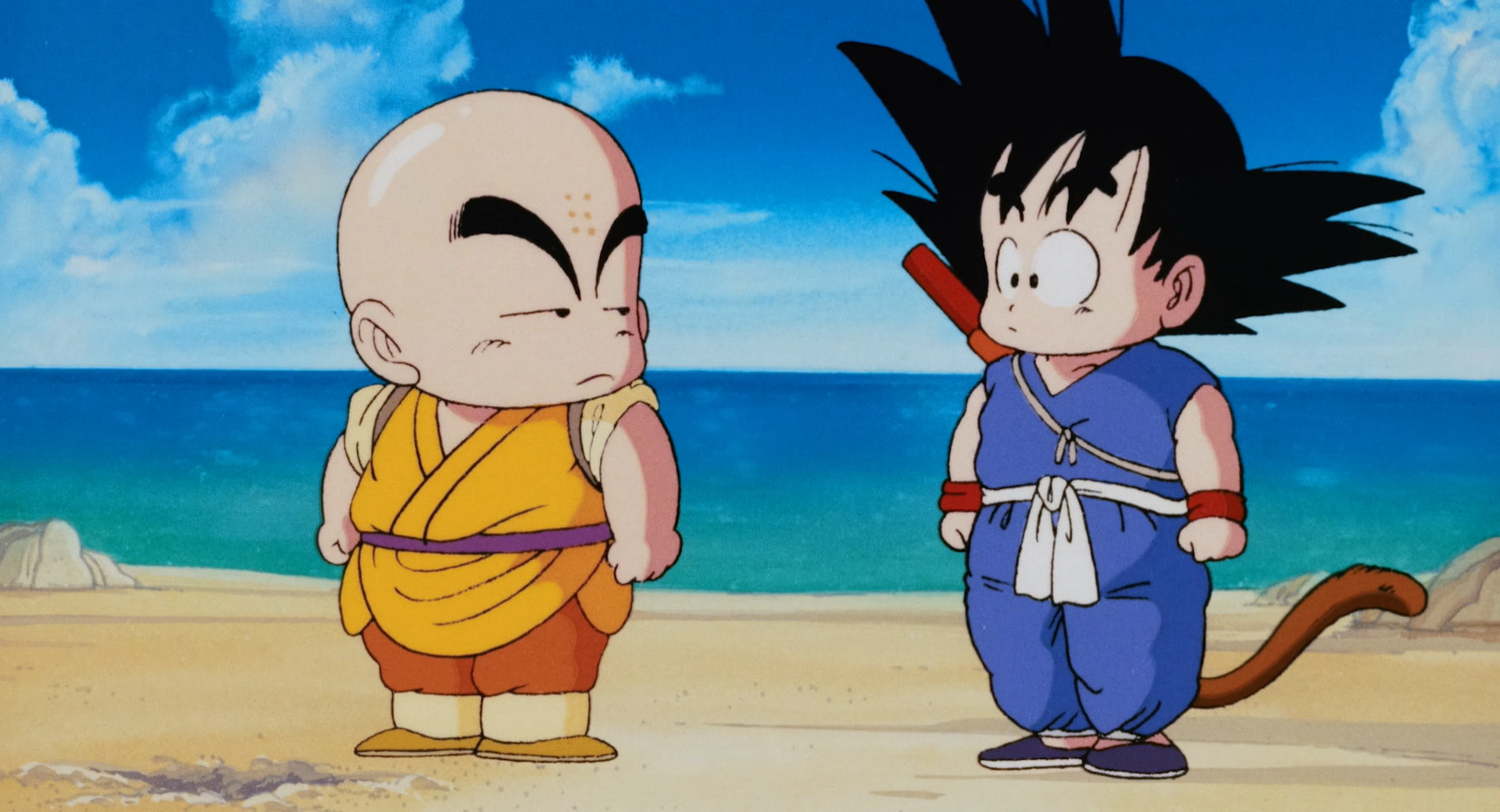
The Turtle Hermit sends Goku and Kuririn off to find a pichi-pichi gal, but this time he actually specifies a location. He tells the boys to go to the Devil's Castle, where they'll find the Sleeping Princess. The Devil's Castle is a strange hodgepodge of different influences, which encapsulates so much of what I love about Dragon Ball. We are introduced to the Dragon Ball world as a blend of Chinese-inspired martial arts fantasy and futuristic technology. There are also some more specific influences and references, such as the many homages it pays to The Terminator. Well, to that end, the Devil's Castle is inhabited by Japanese youkai that wield machine guns. Their ruler is a vampire named Lucifer (literally ルシフェル) that plans to use the power of the Sleeping Princess to destroy the Sun, which I'm now realizing is yet another thing that Lord Slug ripped off. 1950s monster movie influences are certainly not the first thing people think of when they think of Dragon Ball, but I find that they work so well in this film.
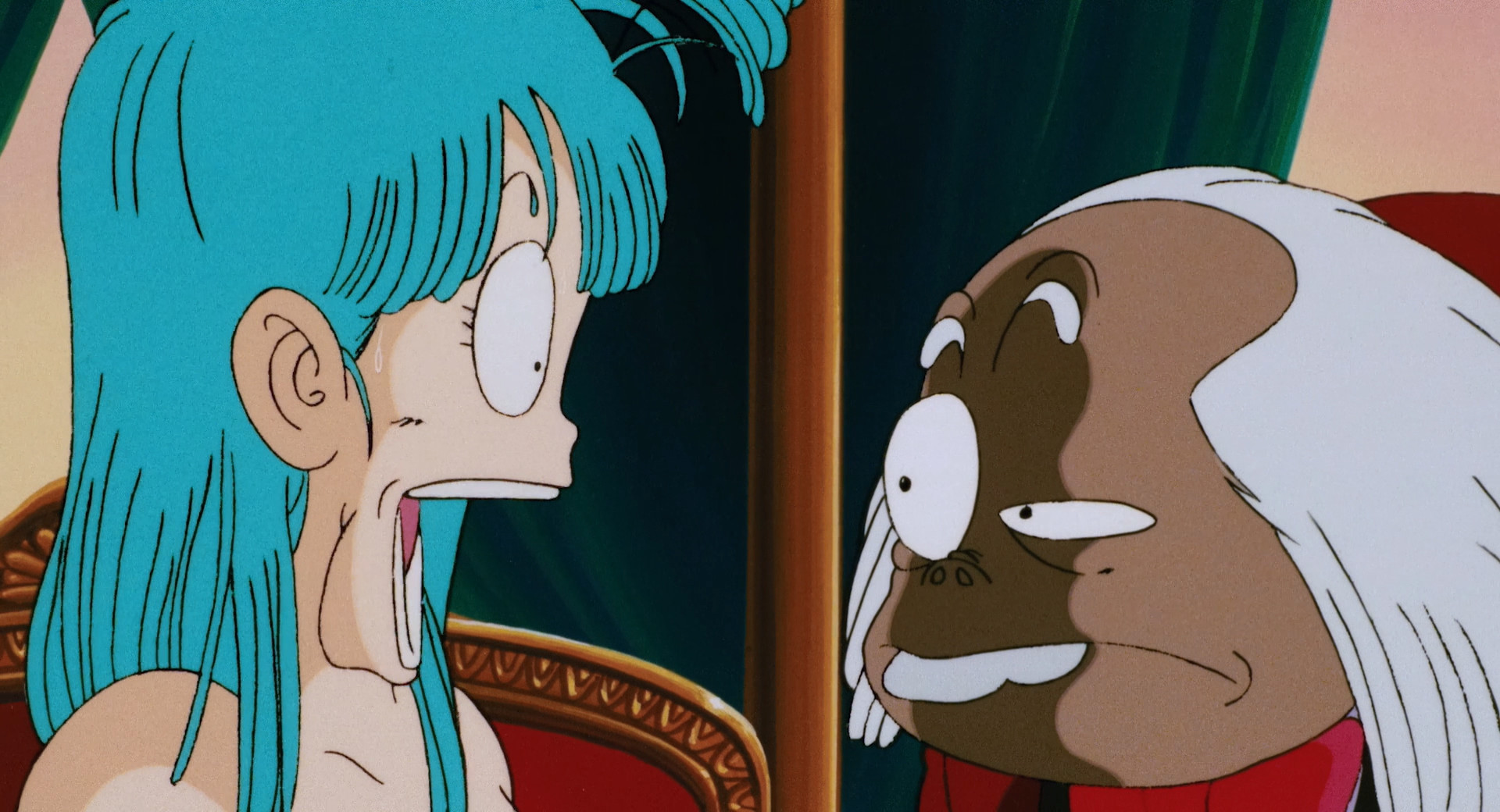

This stronger emphasis on style is reflected from the very moment the film starts. The narrator tells the story of the Sleeping Princess over some very haunting visuals and music. The art style is totally alien to Dragon Ball; enough that I think one could easily be fooled into thinking they were watching a horror movie if not for the abrupt cut to the theme song. This scene clashes with the rest of the film in a good way. It plants a seed in the back of the viewer's mind that blossoms later in the film, in one of the most powerful establishing shots of any animated film (yes, really). As the saying goes, you can't have nail-biting action without someone getting pissed on, and you can't experience dread without happiness. The bright colors and light tone of the movie's opening act are juxtaposed beautifully in this scene, which by itself makes the movie worth the price of admission.


The smaller scope of the story gives the movie more time to delve into its characters, which is really refreshing for a Dragon Ball film and is the key way in which this film differs from Curse of the Blood Rubies or Mystical Adventure. This movie does a better job establishing Goku and Kuririn as friends than the series does in my opinion, giving Kuririn a clearly defined character arc. Kuririn ends up becoming one of Goku's closest friends, so it's easy to forget that the two started out as rivals. Kuririn is antagonistic towards Goku during the training mini-arc before the first tournament arc, and after the time skip the two are shown to be close friends. It's odd to think that one of Dragon Ball's most enduring friendships was first established off-screen (or perhaps off-panel is a more appropriate term).
Goku saves Kuririn several times, but Kuririn continues to show an awkward lack of gratitude. When Lucifer eventually catches Kuririn, Goku agrees to trade the Sleeping Princess in exchange for Kuririn's life, and its this moment that endears Goku to Kuririn. Kuririn eventually repays the favor as he saves Goku from one of Lucifer's attacks, cementing an unbreakable friendship between the two. It's worth mentioning that at this point in the story, the Sleeping Princess has been revealed to be a giant diamond, which emits energy that Lucifer can use to power a laser to destroy the sun. I really enjoy this twist, since the identity of the Sleeping Princess is kept suitably vague throughout the film. Characters refer to it with feminine pronouns, and the opening scene shows a Sleeping Beauty-esque princess, but this is revealed to just be part of the legend. The Sleeping Princess ends up attracting Lunch, who the Turtle Hermit is later convinced is the Sleeping Princess, in a wonderful moment of serendipity that wraps up the movie nicely.
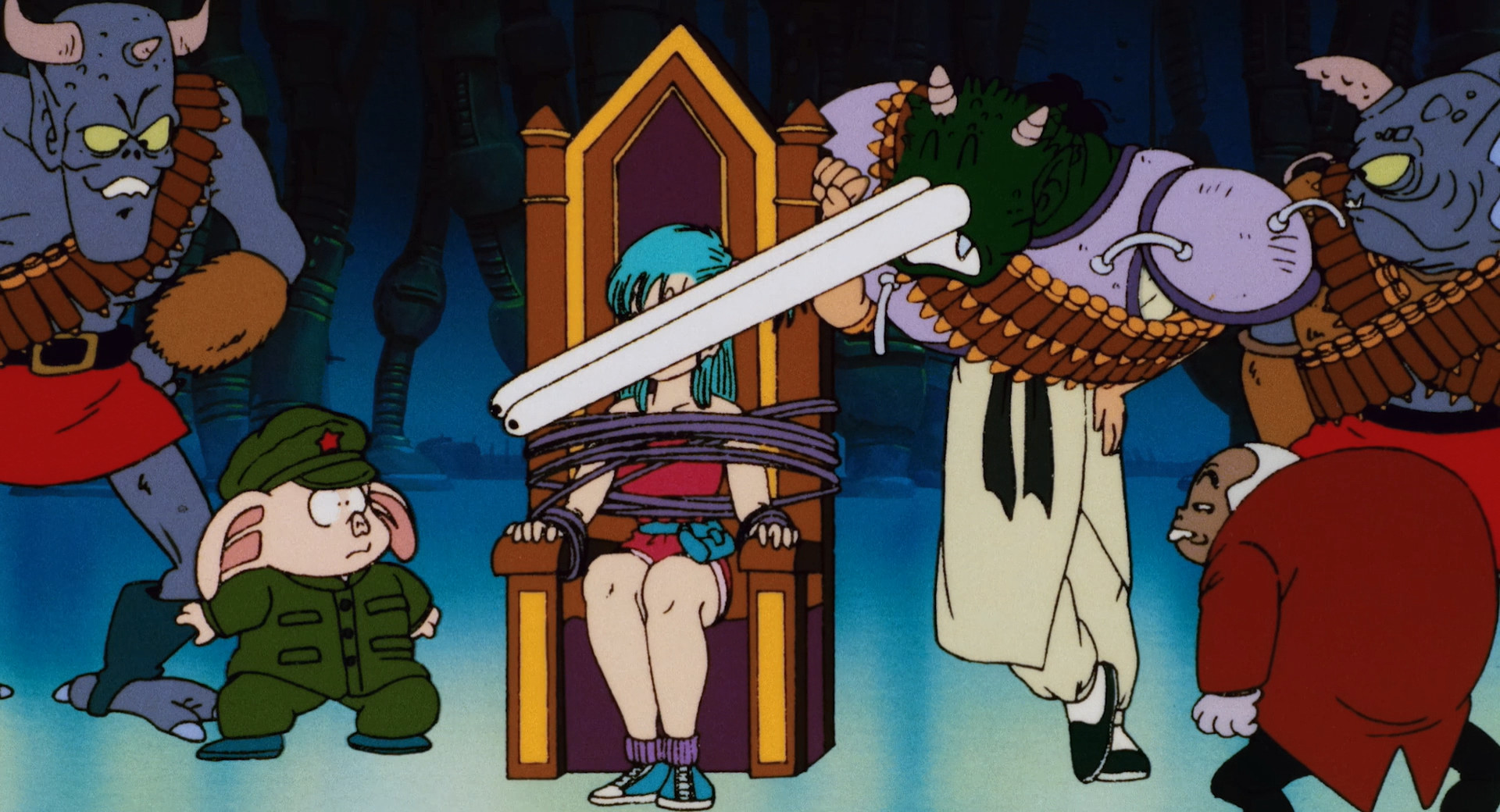
Secondary characters are also given some time to shine in a B-plot, which I feel like we almost never see in Dragon Ball films. Bulma is abducted by Lucifer, and Yamcha, Pu'erh, and Oolong come to her rescue. It's not a huge part of the movie, in fact I think you could cut much of it without much consequence, but it's nice to see these characters have a subplot all their own, and it prevents the movie from becoming repetitive. I also love getting to see Oolong and Pu'erh transform, since not counting The Path to Power, Mystical Adventure is the last time we'll get to see them transform, and this ability of theirs is all but forgotten in Dragon Ball's later story arcs.
My only real gripe with the movie is its animation, which isn't bad by any means, but is noticeably more stilted than the animation of Curse of the Blood Rubies. There are also some gratuitously recycled shots, and the movie is always super obvious about it, with some of these shots almost appearing back-to-back. Being much more familiar with this movie and the quality of its animation, I'm always surprised by just how fluid the other two films of the Dragon Ball trilogy look. Despite coming out later, this movie feels ever so slightly older than Curse of the Blood Rubies. I could muse about this being an homage to its corny 1950s monster movie influences, but somehow I can't shake the feeling that it was a shameless way to cut costs. I do find the movie's animation to be charming, but I think I would have preferred something more energetic like Curse of the Blood Rubies.
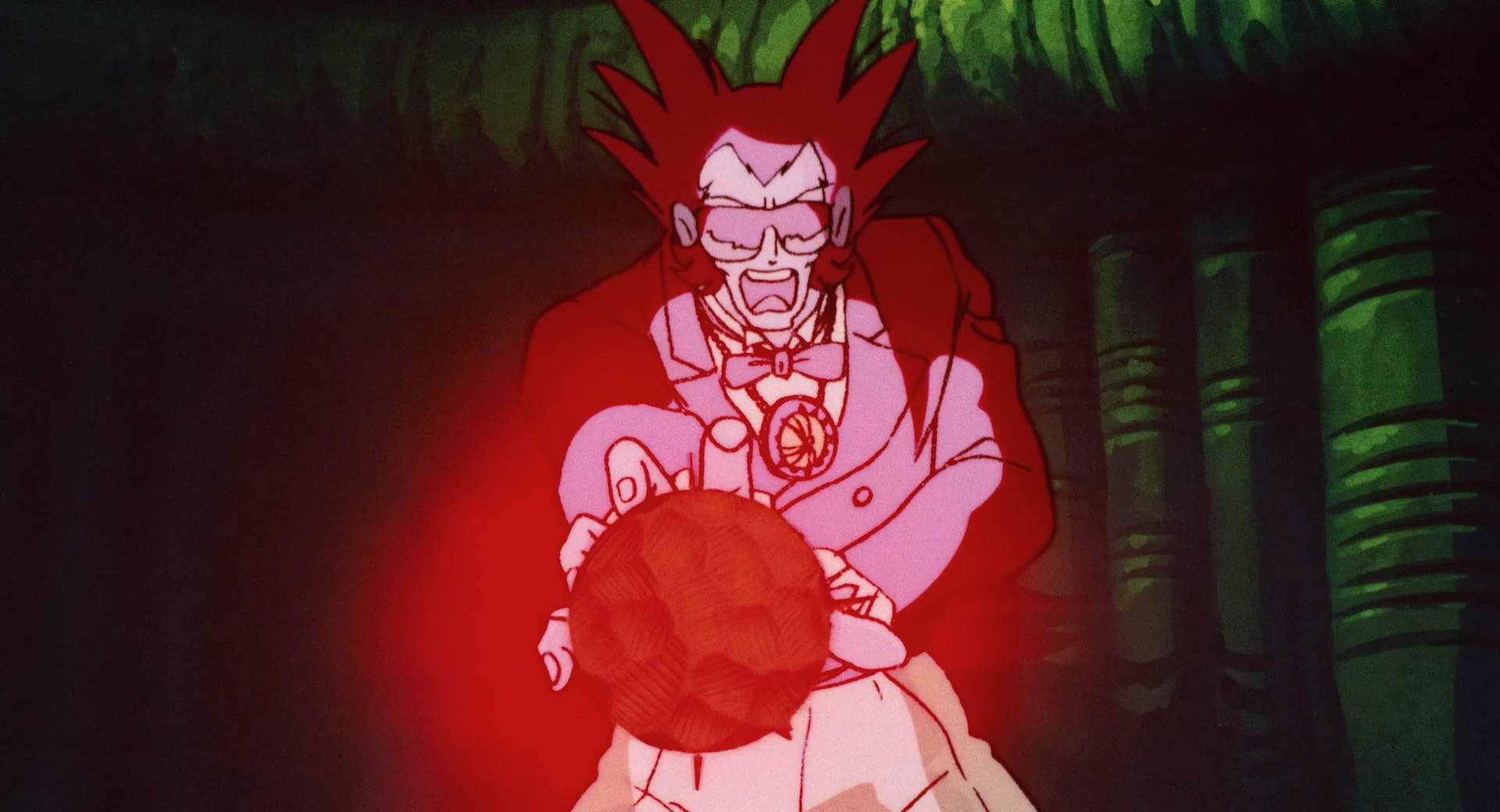
And that's all I really have to say about Sleeping Princess in Devil's Castle. It's a delightfully charming piece of Dragon Ball history that I think anyone, even people that have never read or seen Dragon Ball, can enjoy. I might even go so far as to say that it is the best film in this article, since I honestly struggle to come up with negatives. Of course, just because I think it is the best in a more objective sense doesn't mean it's my favorite...
1. Dragon Ball Super: Super Hero (2022)
Now nobody can accuse me of saying "new thing bad."
Super Hero proves that Dragon Ball still has the capacity to be great, even in the wake of Resurrection F. There was a lot to love about Dragon Ball Super: Broly, but its overindulgence of action in lieu of a satisfying story left me with a bad taste in my mouth. Super Hero is Toriyama's swansong; this film doesn't feel restrained by genre conventions or fan service, and it is a wonderful breath of fresh air.
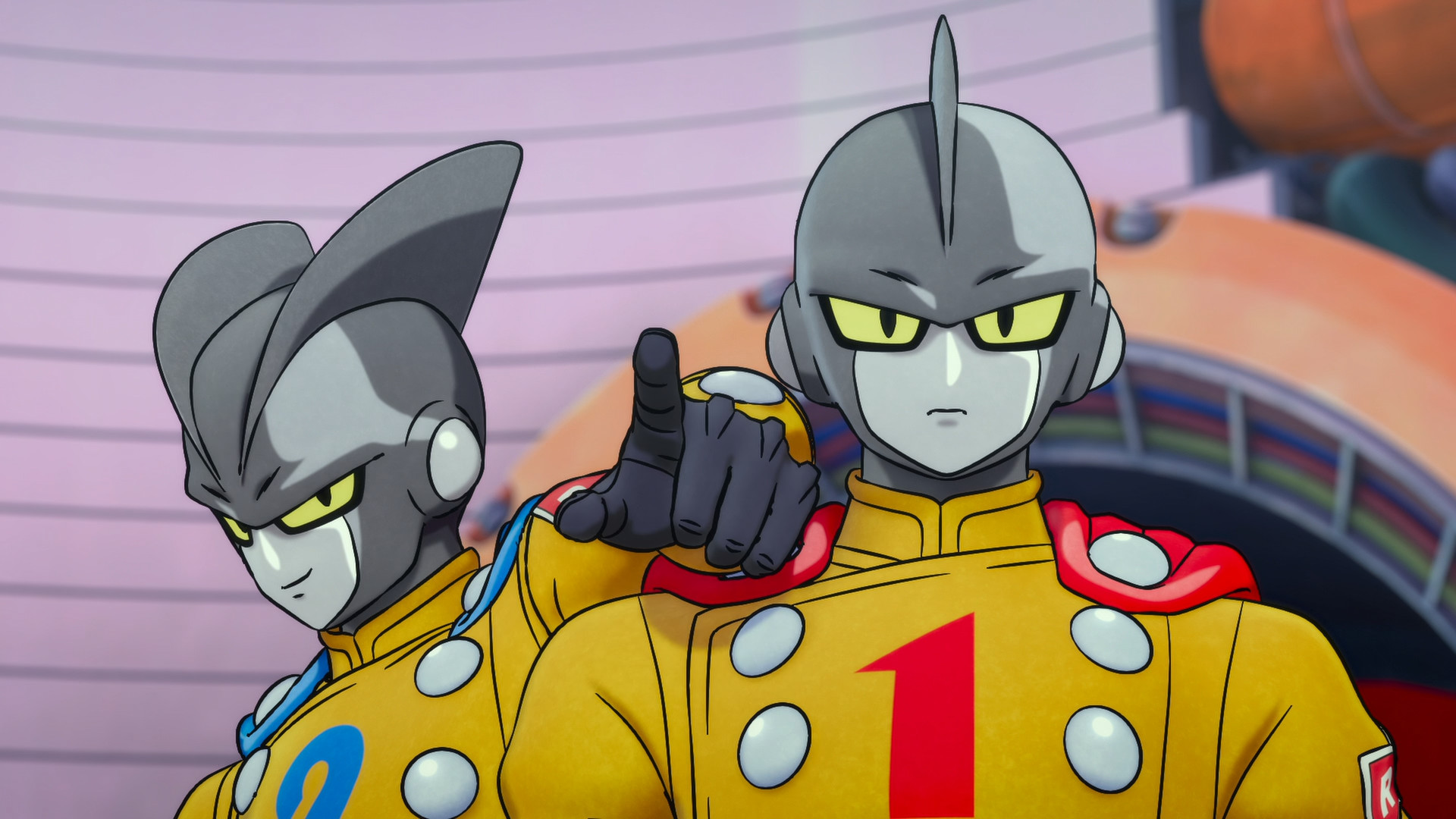
Super Hero has the distinction of being the only Dragon Ball film I've ever seen in theaters. I actually happened to catch a subtitled viewing with my brother, which made for an interesting viewing experience. Aside from one other guy, we were the only ones in the whole theater. This was a good thing, as I was able to sit and enjoy the movie in peace without someone eating an entire pizza beside me, and I didn't have to endure any screaming children (or any overzealous man children either). That doesn't mean it was my best movie theater experience; I broke my vow of no soda on what the theater calls a "small" root beer, which was still enough to give a small village diabetes. Not that I could even focus on that since I had to pee very badly, and I foolishly sat through all 10,000 previews. “I can't leave now, surely after this preview the movie will start” I continued to say to myself on the tenth deafeningly loud trailer for the latest Marvel goy slop. Thankfully I enjoyed the movie so much that, at a certain point, I temporarily forgot my need to pee. It did strike back with a vengeance once the credits rolled around, meaning this article was the first time I actually got to see the post-credits scene.
Now some of you may be surprised to see me rank this film so highly, seeing as it is (almost) entirely CG, and I did nothing but complain about the CG in Broly. Well, it goes back to that tried and true saying of "take a crap or get off the pot." While I love the art style of Broly, only about half of that movie actually looked good; any time CG was involved it stuck out like a sore thumb. The way I see it, if they weren't going to commit to the new art style, they might as well have just embraced the CG. And I find that this movie actually looks quite nice, probably the nicest a CG anime has ever looked (which isn't exactly a high bar). I'm not going to say that there are no issues in its approach, but I generally prefer the consistency of this film to the peaks and valleys of Broly.

Let's go on a bit of a tangent (I promise we'll get back to Dragon Ball soon): An issue I have with many modern Pixar films is that they push polygon counts to an uncanny degree. The extremely detailed textures and models of The Good Dinosaur, for instance, clash with its cuddly character designs, leading to this bizarre juxtaposition where you have cartoon characters walking around a photorealistic world, and not in a charming Who Framed Roger Rabbit? kind of way. When listening to the commentary track on the official Blu-ray for Incredibles 2, I was annoyed at how much time they spent talking about all 10 billion models they crammed into the background of the train scene; I was frustrated that they spent so much money and talent on these miniscule details that only interest boring tech nerds, while settling on such a mediocre story. I understand that this is an oversimplified view of the way the film industry works, but I would have liked to see some of that time wasted on tiny details reallocated to story, character development, etc.
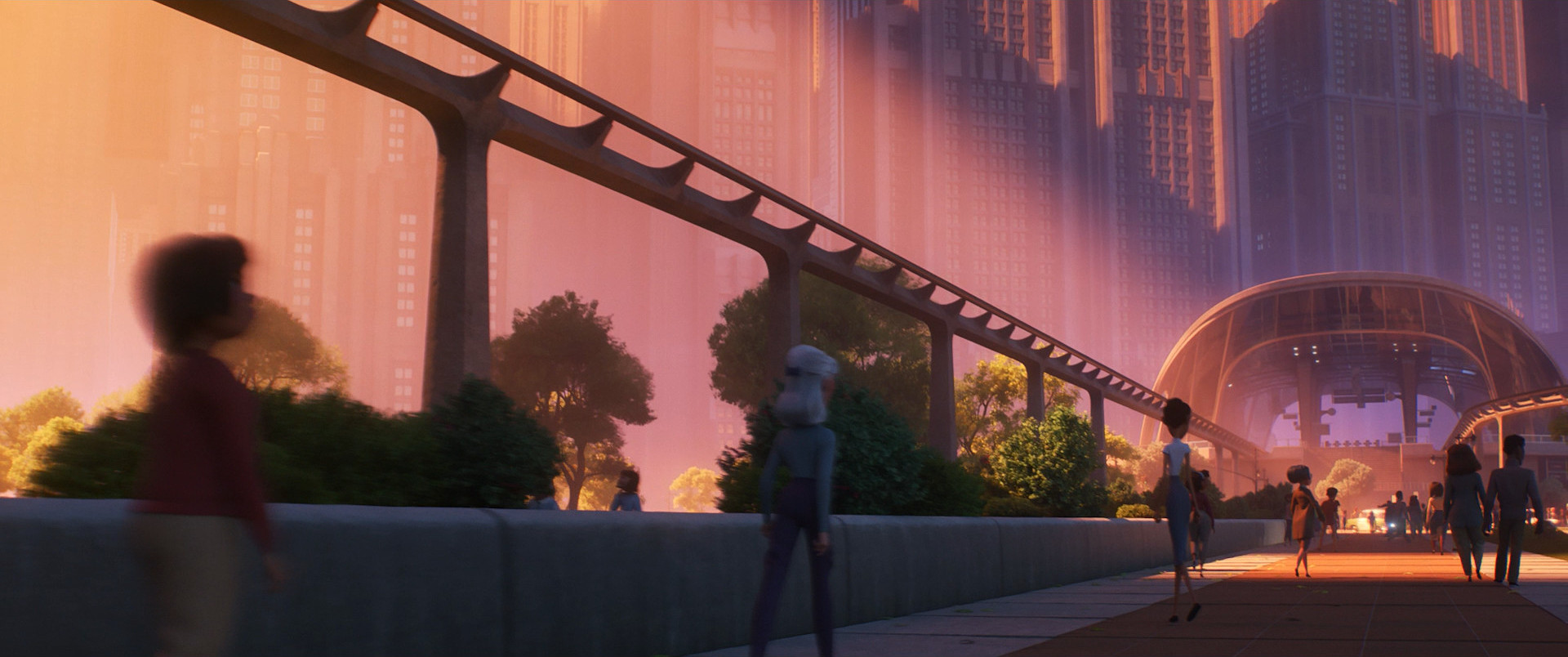
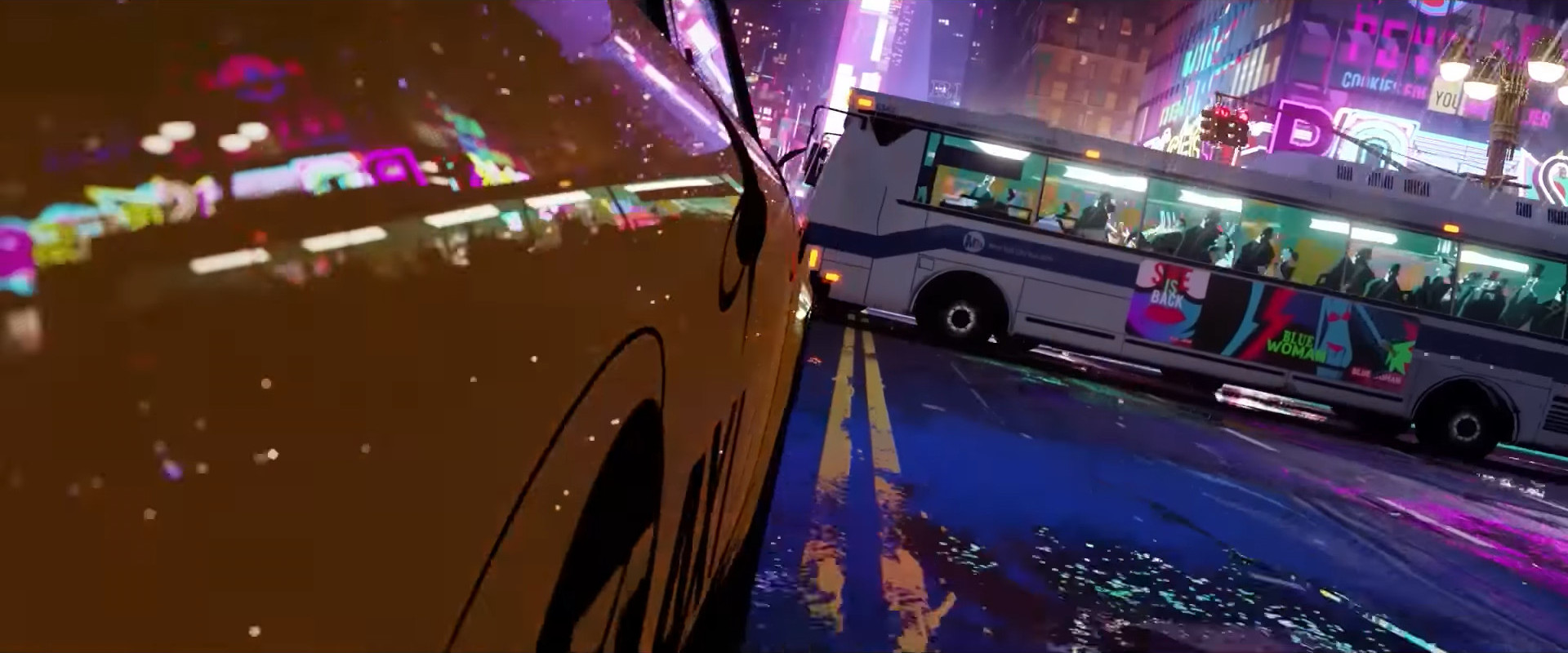
Spiderman: Into the Spiderverse gave me what I was looking for. I remember seeing a video about how that film was animated, and being pleasantly surprised to hear how the animators opted to cut corners in certain areas. They spoke about how they would deconstruct detail at a distance; entities that were far enough away from the camera would be represented by simple textures. In addition to enhancing the film's comic book aesthetic, it validated much of my frustration with Pixar's obsession over tiny details — Why waste time on tiny details nobody cares about? The best animation in the world means nothing if the story is lackluster.
I bring all this up because, between these two films, Super Hero has taken much more inspiration from Spiderman: Into the Spiderverse, but seems to have missed the mark in a few areas. My biggest issue with the movie visually is that it's often a little too eager to deconstruct detail. Don't get me wrong, I'm glad this movie isn't an insufferable tech demo like The Good Dinosaur, but backgrounds for scenes often feel empty. The opening driving scene with Magenta and Dr. Hedo is probably the best example of this, but it's an issue throughout the movie. Many environments looked great, particularly the Red Ribbon Army's base and Beerus's planet, but there's a noticeable lack of consistency in this regard. This opening scene also highlights another issue with the movie's aesthetic, and that being that I think the animation style lends itself much better to more angular character designs. Piccolo and Gohan look excellent, possibly the best they've ever looked, but more round characters like Bulma or the newly introduced Dr. Hedo just look bizarre. I can't quite put my finger on what the issue is, whether it be with the textures or the lines, but something about them just seems off.
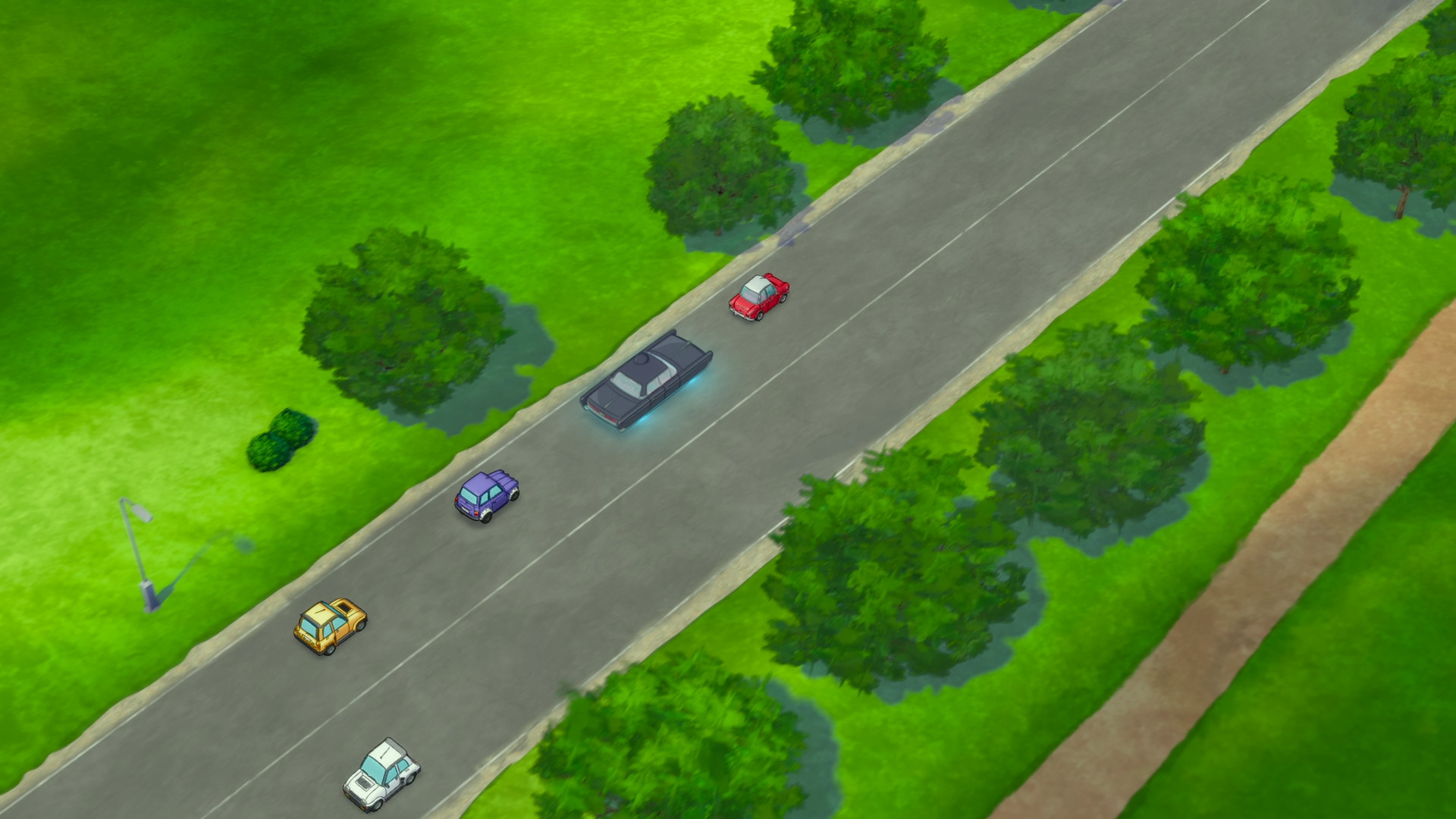
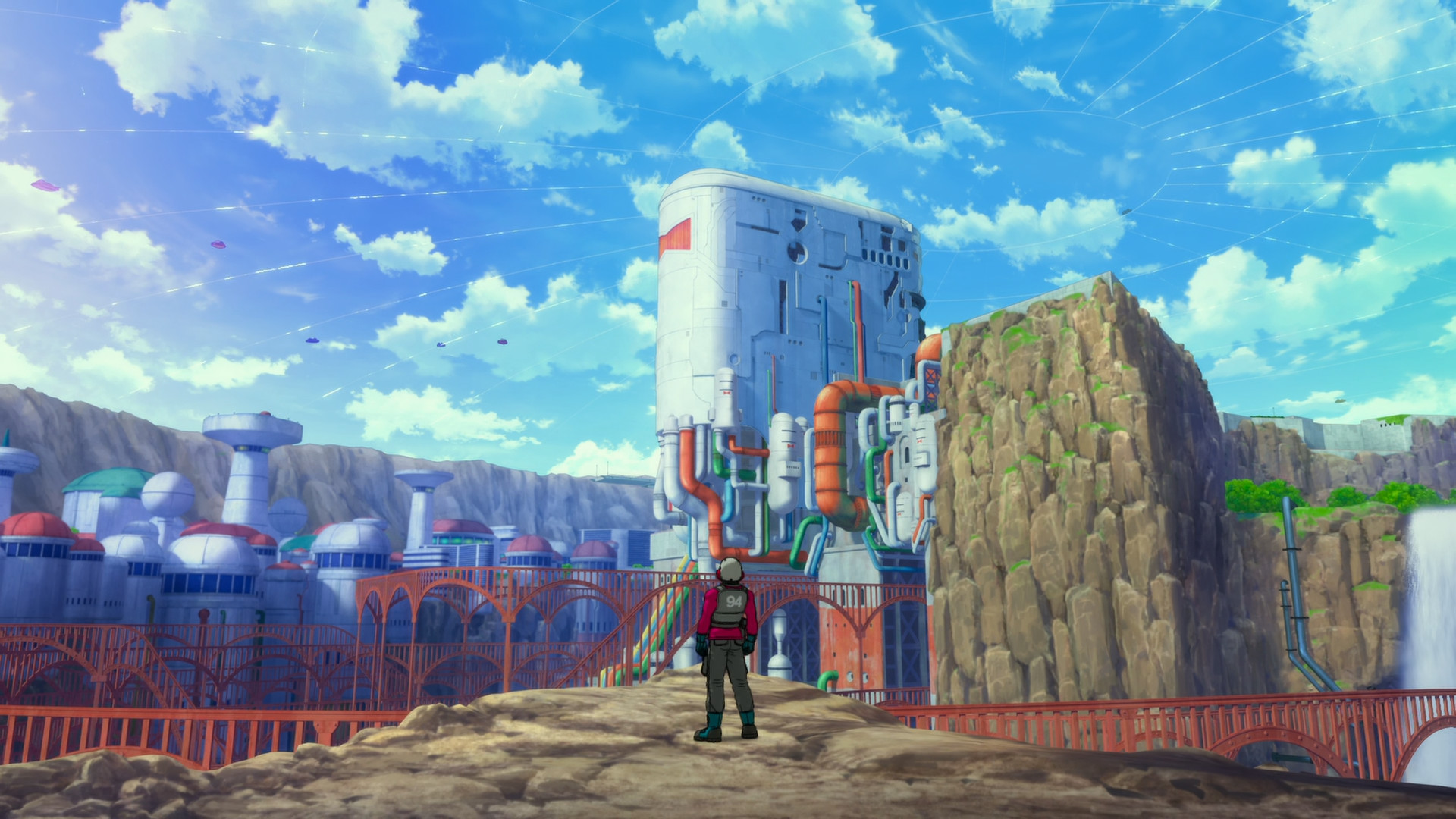
Thankfully, everything else about the movie is visually excellent. I was as surprised as everyone else was by the initial trailers for this film, especially after we had just been introduced to new character designs in Broly. When the movie actually started, however, my eyes adjusted quickly, and I found a lot to love. I really love the character designs, which I think strike a good balance between the cute, expressive designs of early Dragon Ball and the more angular, muscular designs of the series's latter half. I found the action to be really exciting, and much more memorable than in Broly. Broly really blew its load early on Vegeta's portion of the fight, but Super Hero exhibited more patience. Super Hero's fights satisfyingly build in intensity, rather than awkwardly petering out like in Broly.
And on the topic of animation, I need to give a special shout out to the opening Red Ribbon montage, which is some of the most pristine animation I've ever seen from the series. It was also just really nice seeing moments from the original Red Ribbon army story arc again, after not having seen any classic Dragon Ball iconography for so long. I've always felt like modern Dragon Ball is allergic to any material before the "Z" era. I adore the way they captured the art style evolutions the series underwent; with soft, chubby designs for the Red Ribbon portion, and more jagged, angular designs for the Androids and Cell portion.
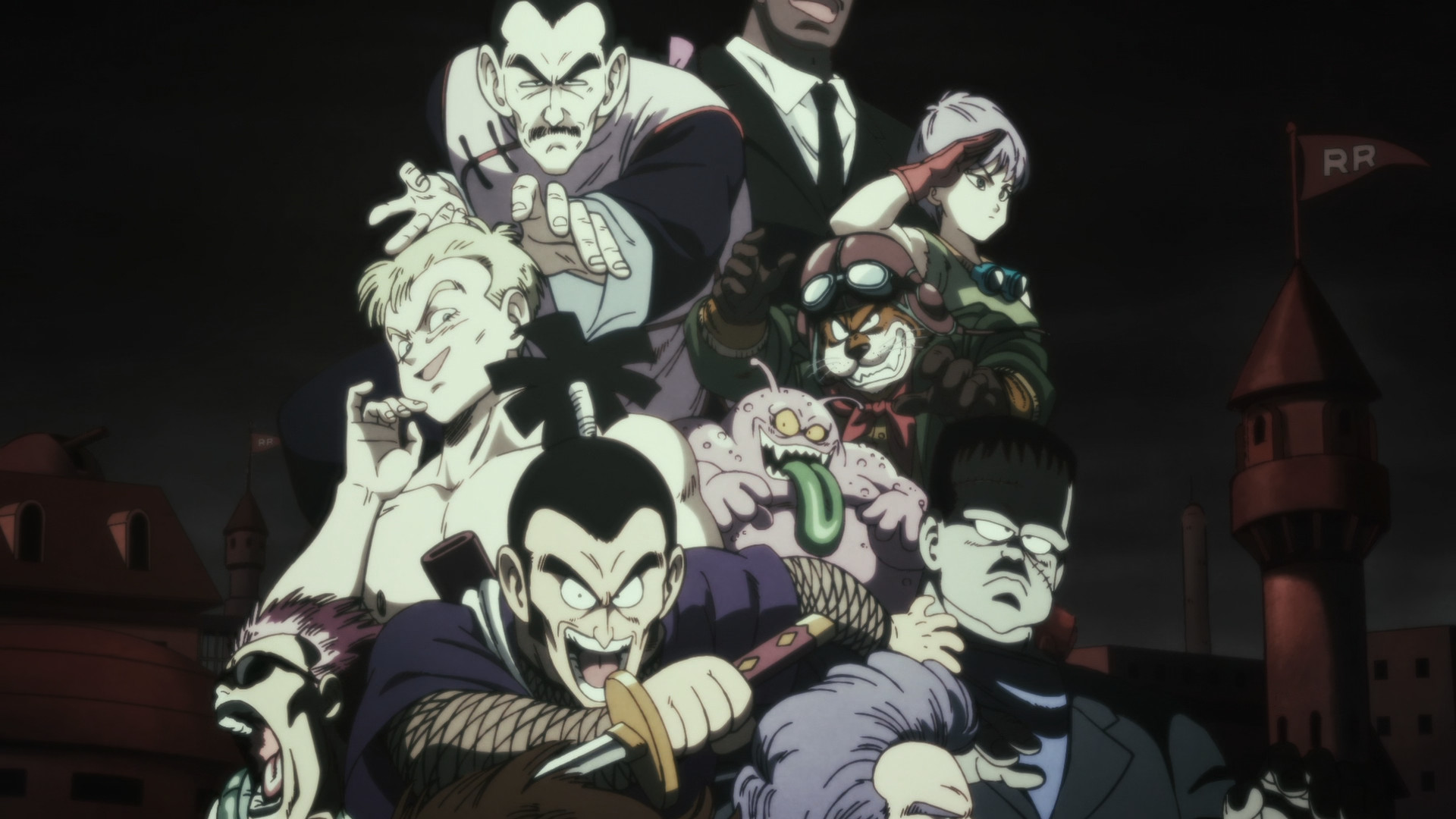
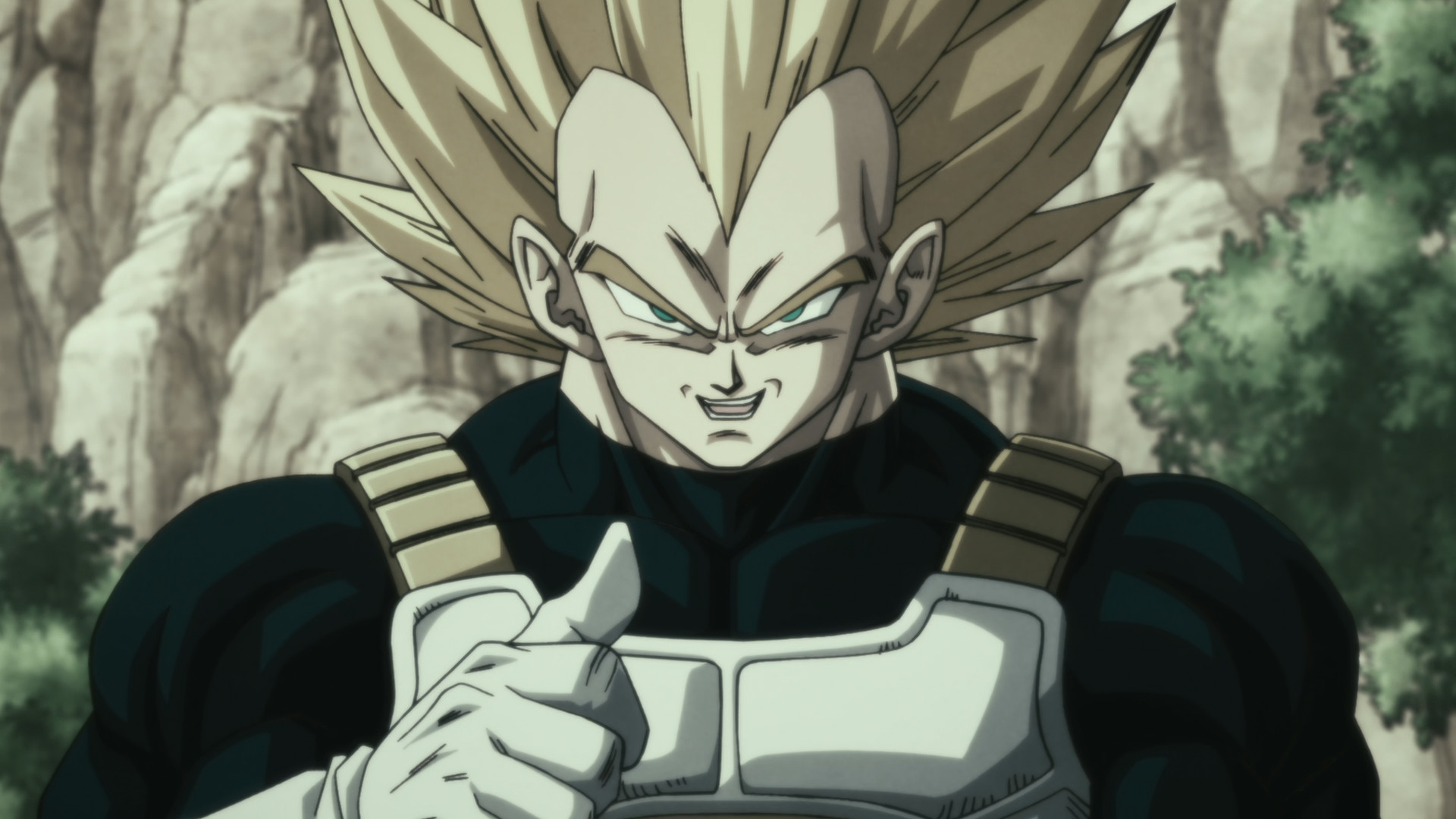
Of course, for as great as the visuals are, what I love so much about Super Hero is its story, which is everything I want out of Dragon Ball. This film is an excellent showing for Piccolo, whom Toriyama has always claimed to love, despite cucking him extremely hard in Dragon Ball's later arcs. And I'm not talking about all the buffs Piccolo's power level got (although they certainly don't hurt), I'm talking about his role in the story. Piccolo's interactions with young Pan are Dragon Ball at its most wholesome and funny. Gohan also finally gets some time to shine, who was also horribly misused in Dragon Ball. Gohan was haphazardly thrust into the protagonist role, before Toriyama ultimately decided that Goku served as a better protagonist. Well, this movie feels like the culmination of years of reflection, as Gohan finally gets to play a major part after having spent so much of the 21st century Dragon Ball revival in the background.
Other secondary characters such as Kuririn, Android 18, Goten, and Trunks, all get some time to shine too. The movie-original characters all make a great impression. I love Magenta's short temper and all of Carmine's eccentricities. The Gammas are fan favorites, and for very good reason. I don't really have much to say about them that hasn't already been said. This larger focus on characters is so refreshing, and comes as a huge relief to me after the success of Broly. I've spent a lot of time roasting Broly, but I want to make it clear that I don't hate that movie, but I do hate what it represents. Seeing as the film was such a commercial and critical success, I was afraid that the series would be learning all the wrong lessons from it, but that miraculously hasn't happened. I have no idea what brought on this greater focus on characters, but I couldn't be happier.
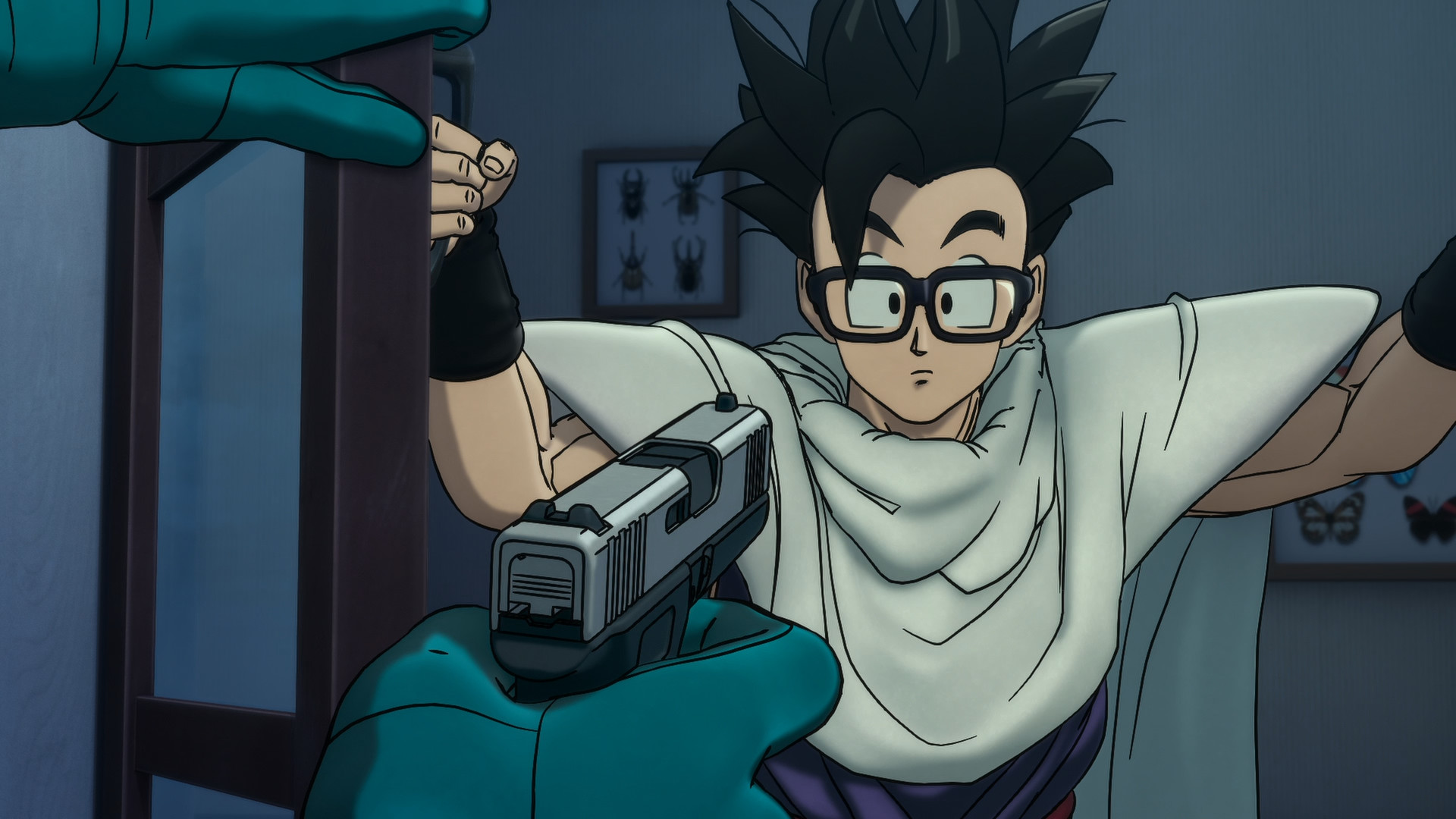
But if action is what you're interested in, then I think Super Hero has you covered. Like Broly or most of the Dragon Ball Z films, Super Hero does have what I would call a "fighting portion" that starts at the halfway point. To my pleasant surprise, however, the fighting actually iterates on the developing character dynamics. My favorite example would probably be the little rivalry between Pan and Carmine, which is concluded during the fight. The Gammas' character arcs also take place during the fight, which I found to be immensely satisfying. I've always really enjoyed the idea of an ongoing mental battle running parallel to a physical battle. My favorite example in the series would probably be how Goku and friends try to defeat Majin Boo the old-fashioned shounen way, while Mr. Satan ends up having more success inadvertently becoming Boo's friend. A good example from this article would be Goku's fight against Beerus in Battle of Gods, with Goku's passion for fighting endearing him to Beerus. The tag team battle against the Gammas was a great use of this concept.
I only saw the initial teasers for this film; I generally prefer to avoid trailers for films since I enjoy going in knowing as little as possible, so the existence of Cell Max came as a complete shock. I was not expecting to see Toriyama revive Cell's infamous second form, which was incredibly charming to see again. This is also the first time in recent memory that I've seen the series take on a giant villain, with the last time being all the way back in Wrath of the Dragon. As with Hirudegarn, we learn about a weakness of Cell Max, with his head being his Achilles' heel. It's so refreshing to see characters have to try and use strategy in a fight, rather than it coming down to a boring battle between numbers. The movie gets pretty creative, managing to make the failed Gotenks fusion useful and reviving Piccolo's ability to stretch and grow super large, the latter of which we haven't seen since all the way back in the last Tenkaichi Budoukai story arc (the last "pre-Z" story arc).
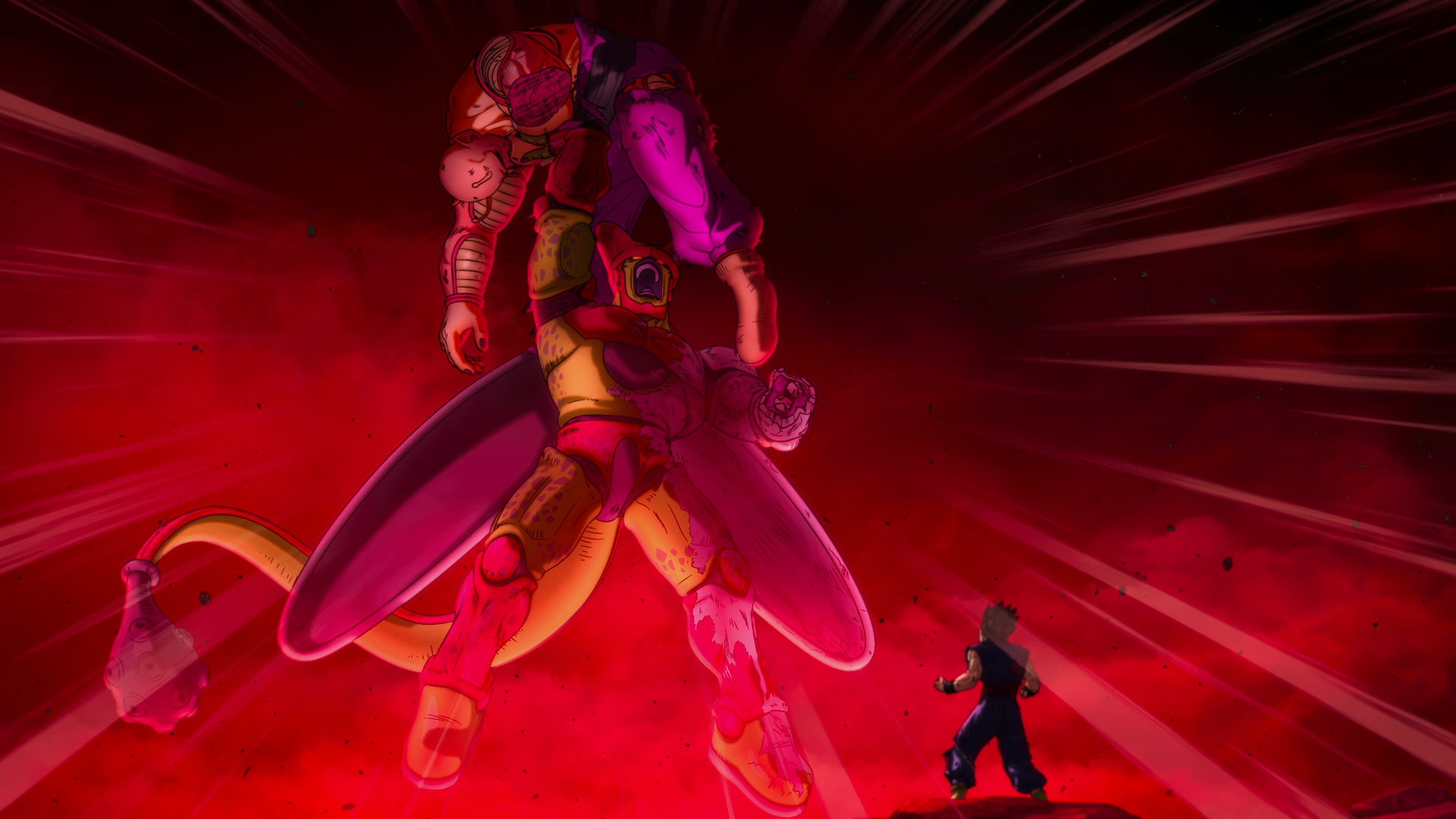
I watched this movie multiple times (including once in Spanish) just to make sure that this movie didn't earn the top spot through recency bias, but watching and discussing Super Hero is probably the most fun I've ever had with a Dragon Ball film. While I don't know that I'd call it the best, I can confidently say it's my favorite. And if you ask me, it was a great sendoff for Toriyama. While Toriyama's role in modern Dragon Ball has only been as an advisor, this film has his fingerprints all over it. I don't even really know to what extent he was involved with the film, but I can clearly see that this film wears its Toriyama-ness on its sleeve. I love how this film indulges the less popular aspects of Dragon Ball, such as the multiple allusions to the "pre-Z" era or Cell's goofy second form. I was hesitant to give this film the top spot, especially back when I had brainstormed doing an article like this (when the film was newer), but three years later and I still find myself coming back. I don't know how fans and critics feel about Super Hero, but I can see myself continuing to reflect on this film for years to come.
Holy crap, that was a long one. I started working on this project near the end of 2024, and we're already a third of the way through 2025. These days I'm very busy with work and I can only motivate myself to work on these articles for minutes at a time. There were certain movies I was more eager to talk about, so I found that those sections flew by. I also had plenty to say about the crappier movies too. What honestly drained me was the middle portion of the list, all the films I thought were just okay. I apologize for this taking so long, but I'd suppose I'm going for quality over quantity. My brother and I have another Dragon Ball project in the works, and I'll update this article with a link to that when it's done. Thank you so much for reading this article, and I'll catch you in 2029 when I rank all 329 films in the RRCU (Ram Ranch Cinematic Universe).